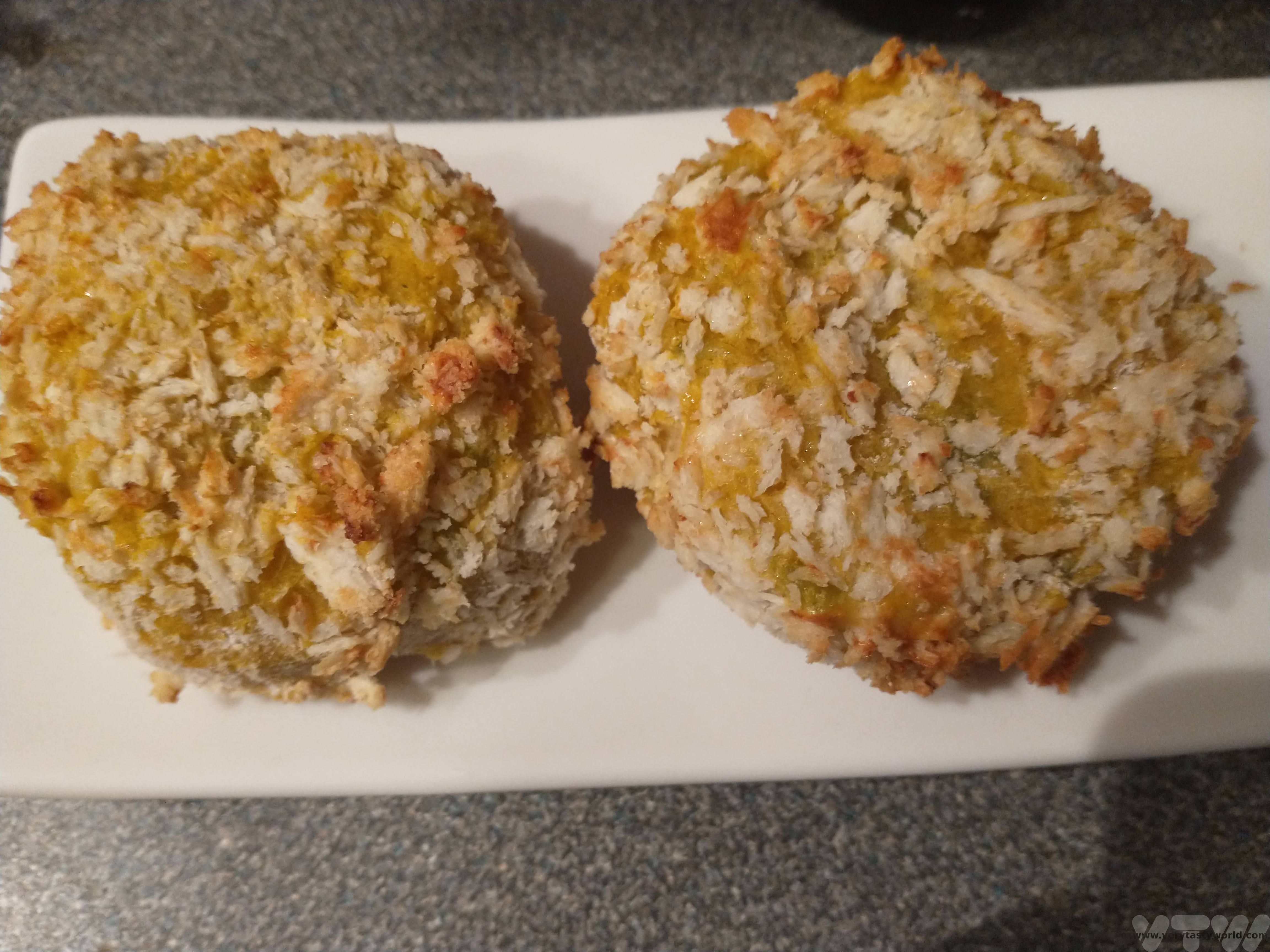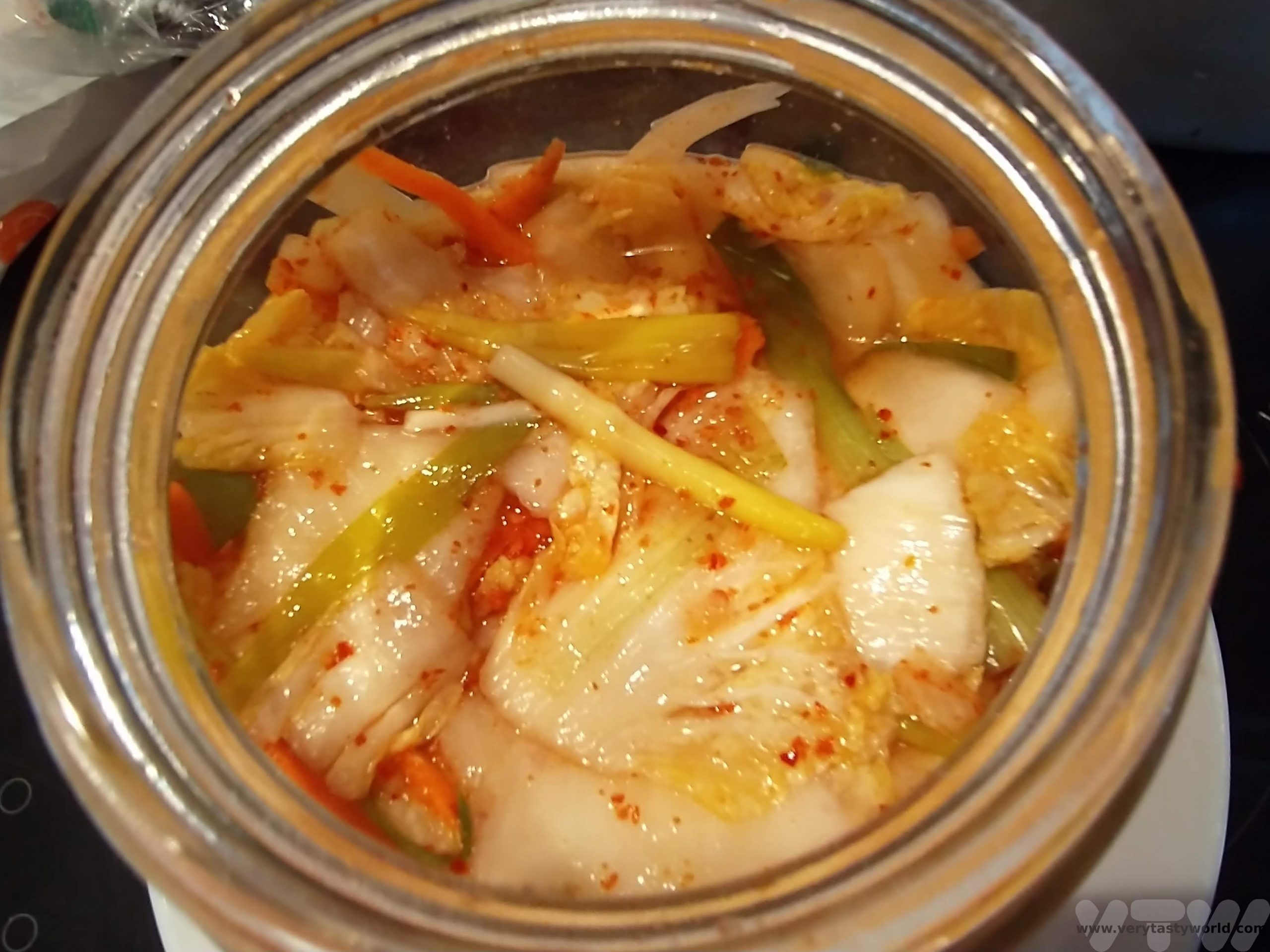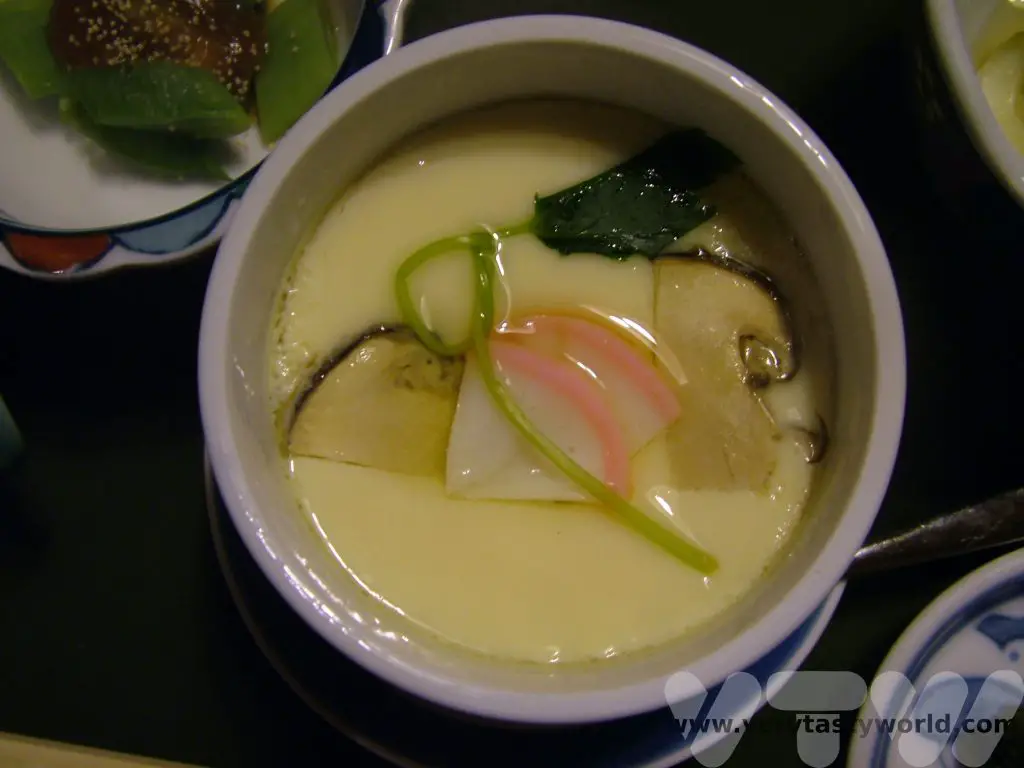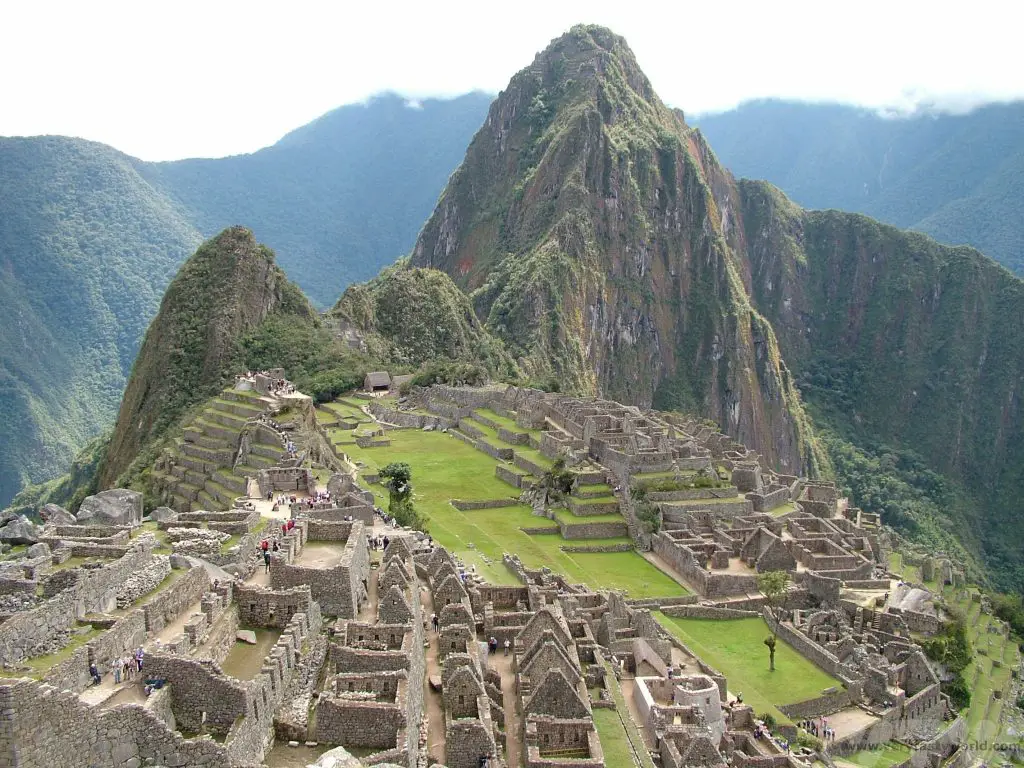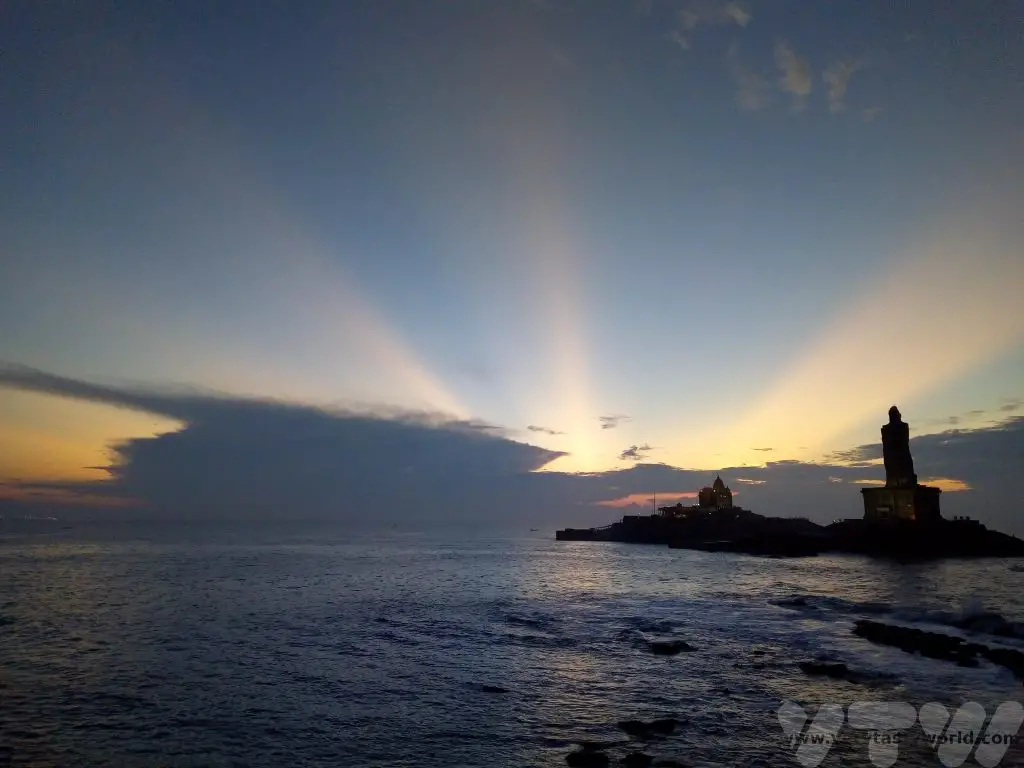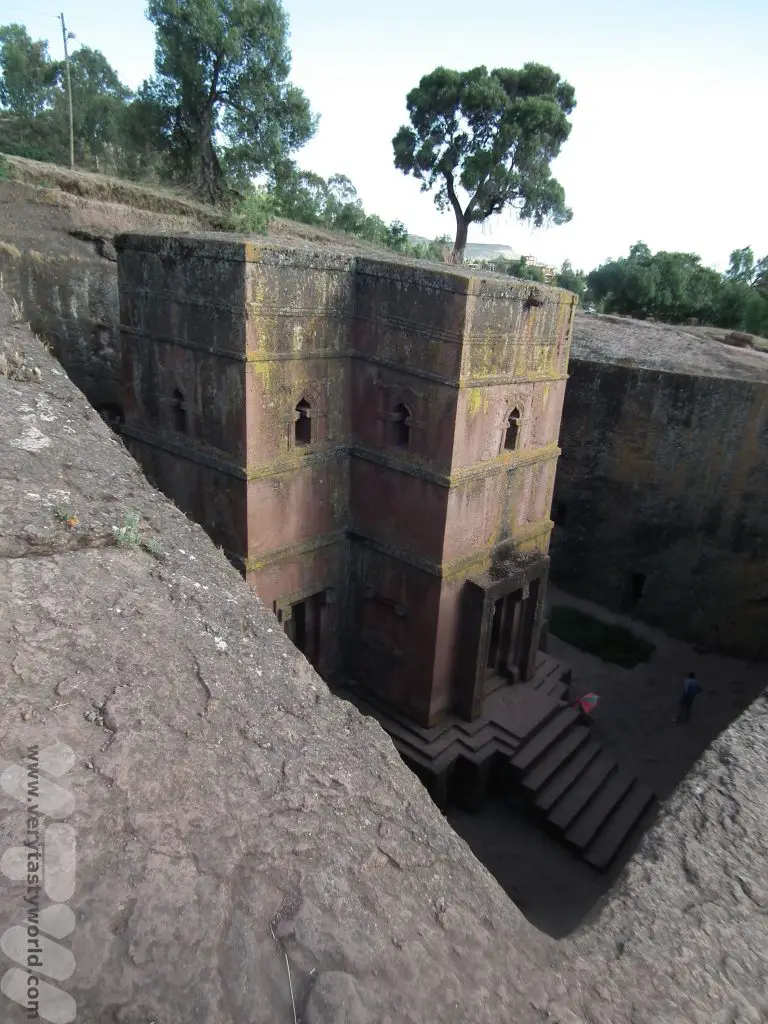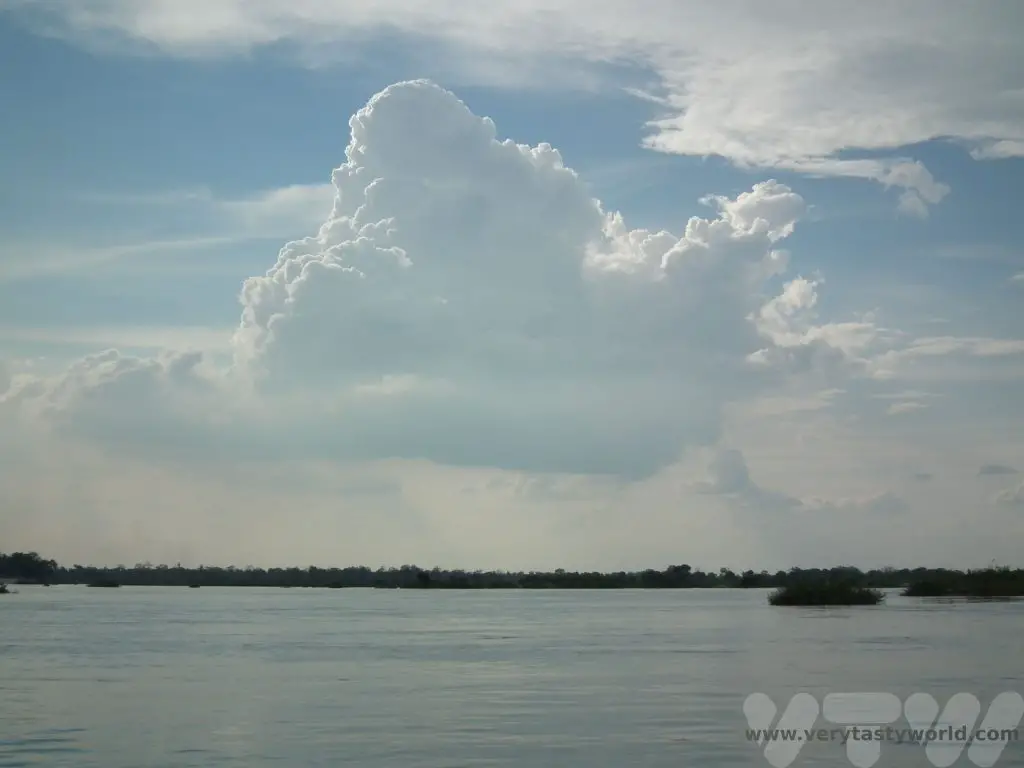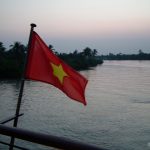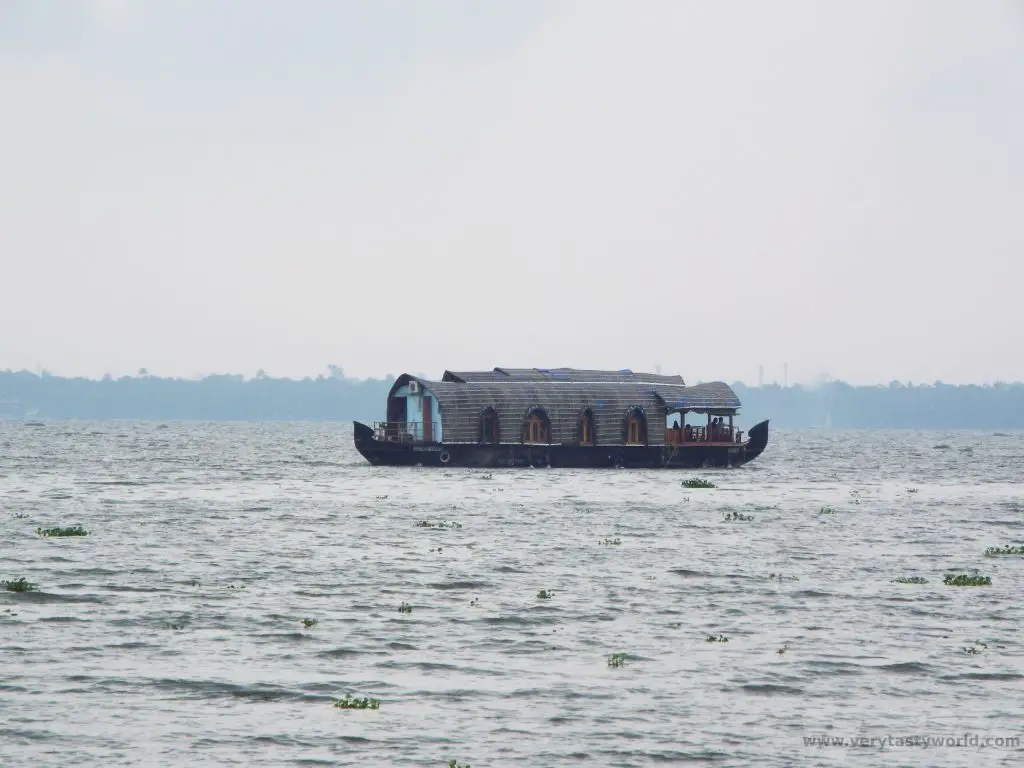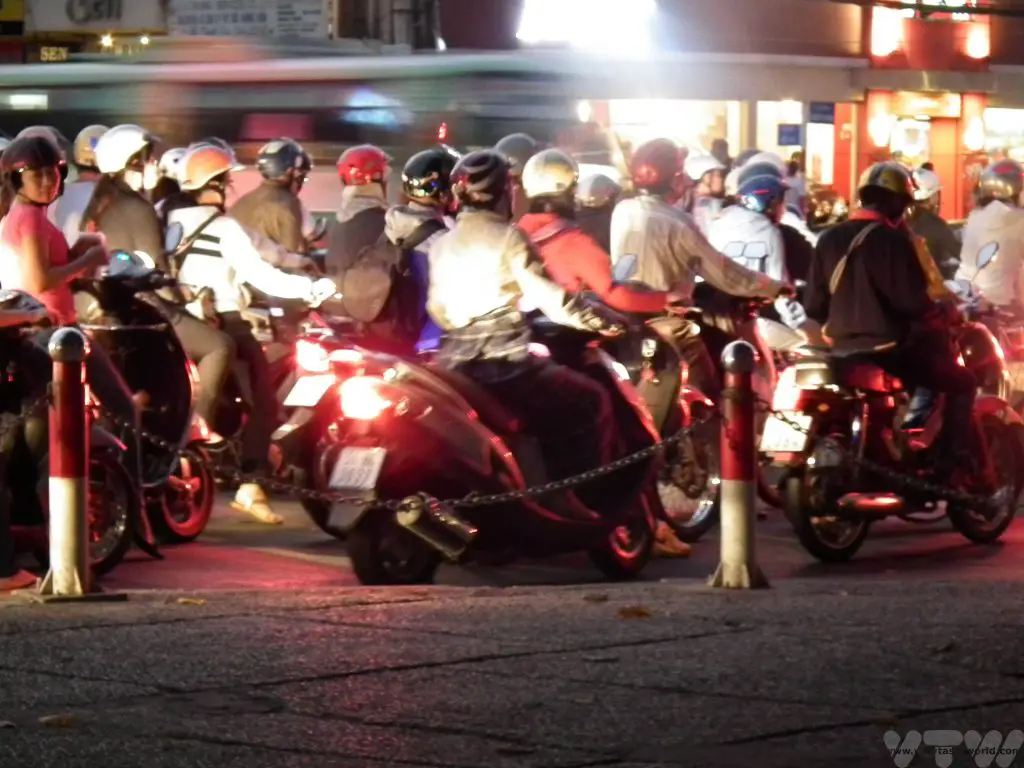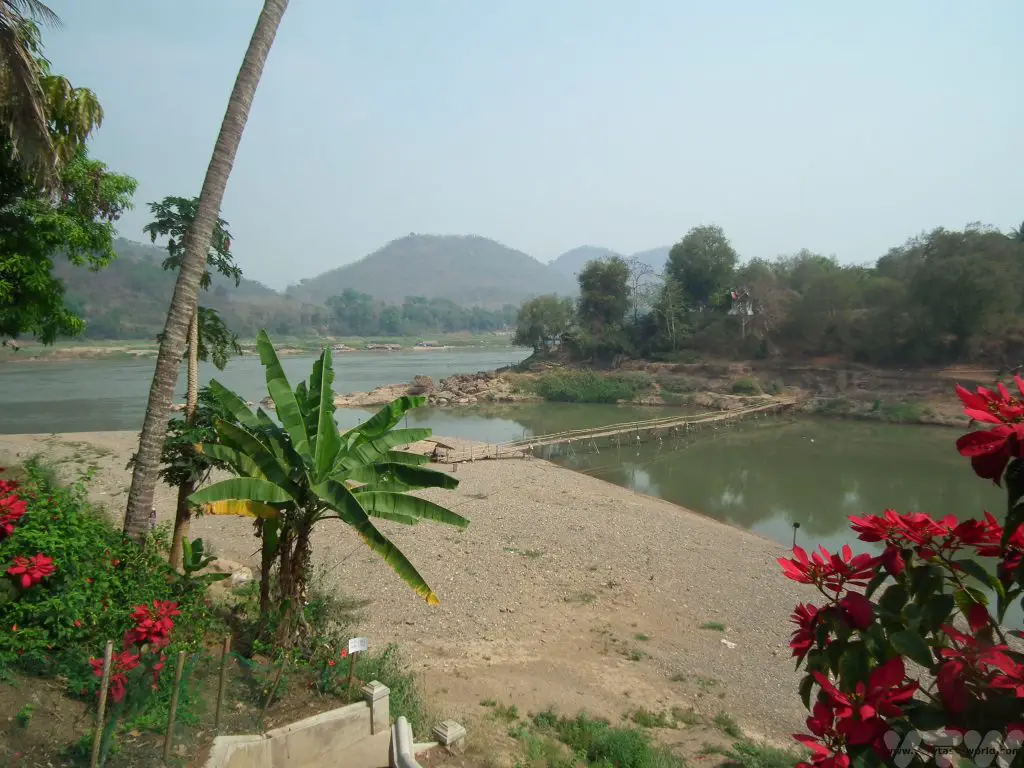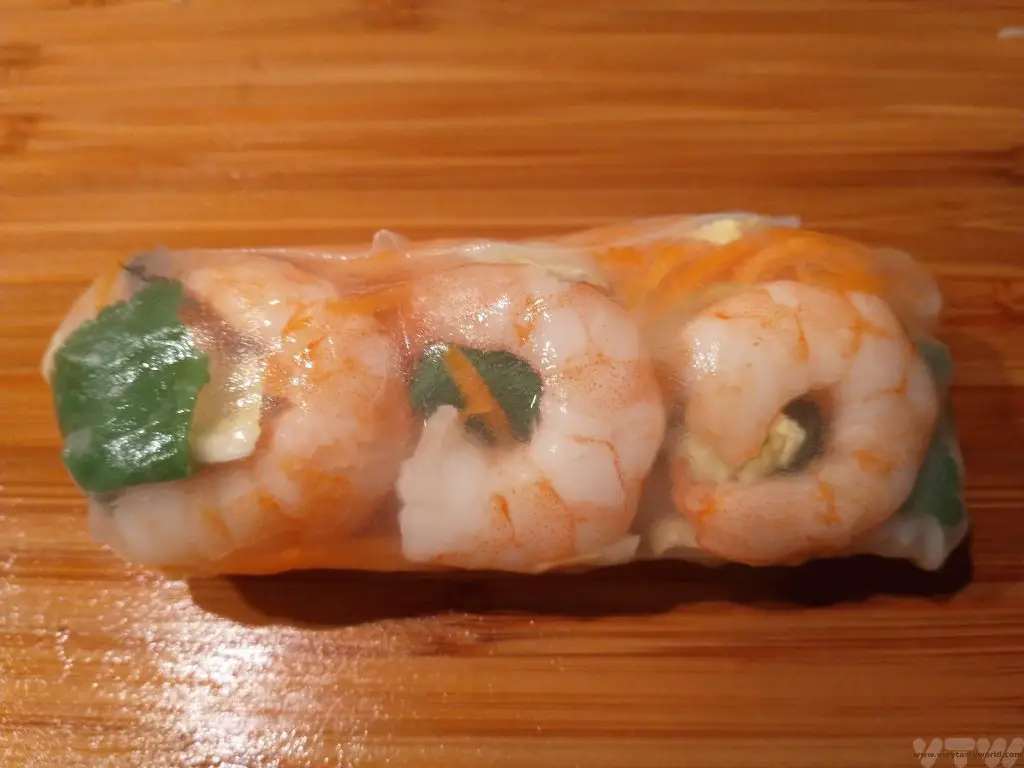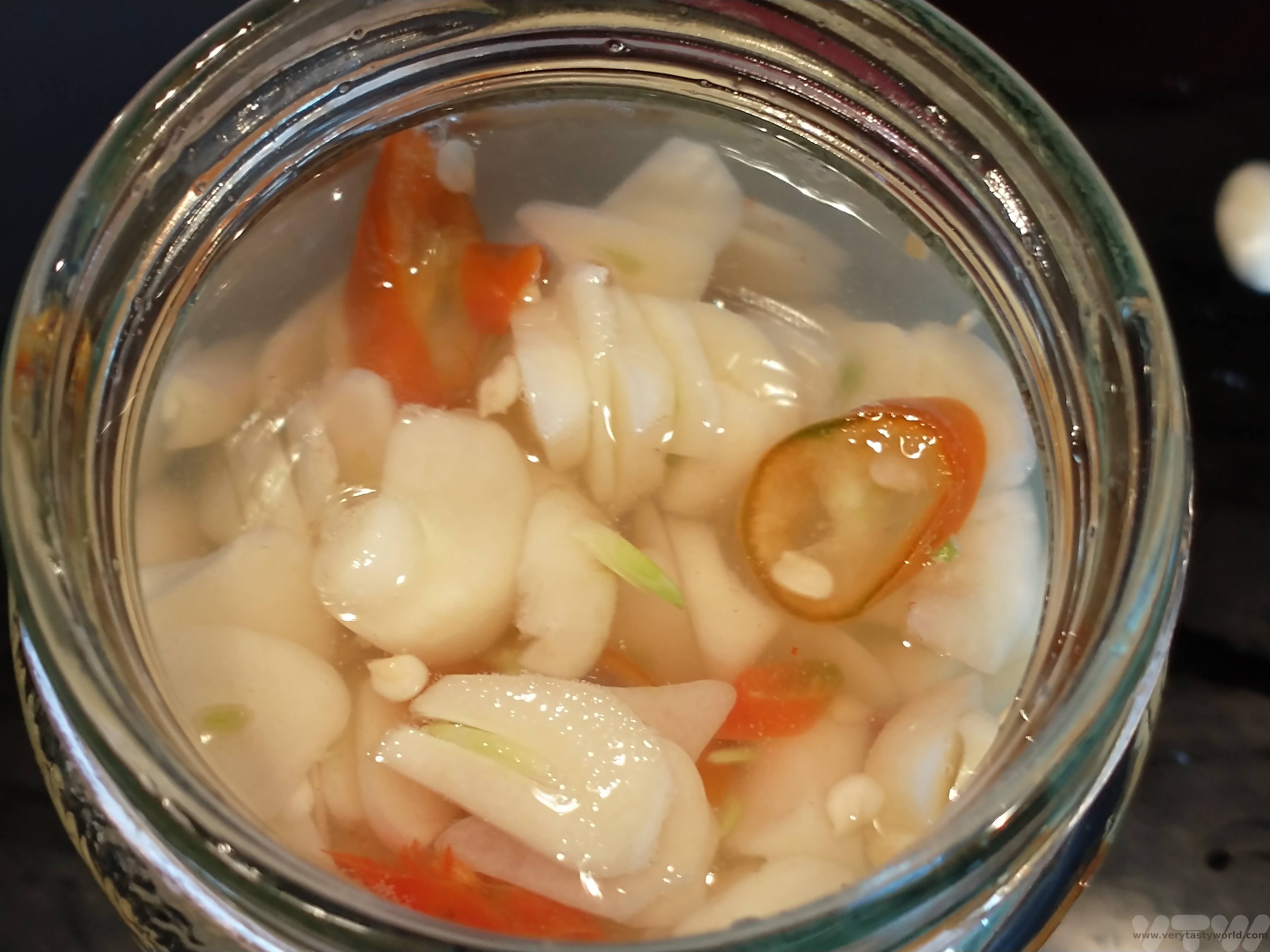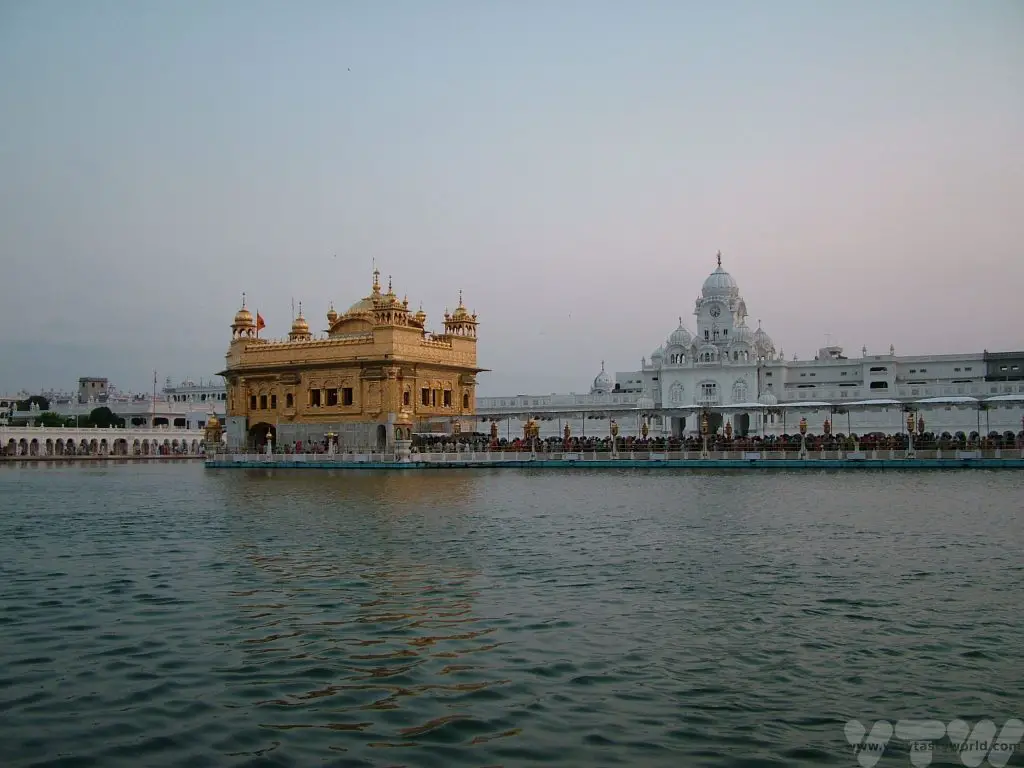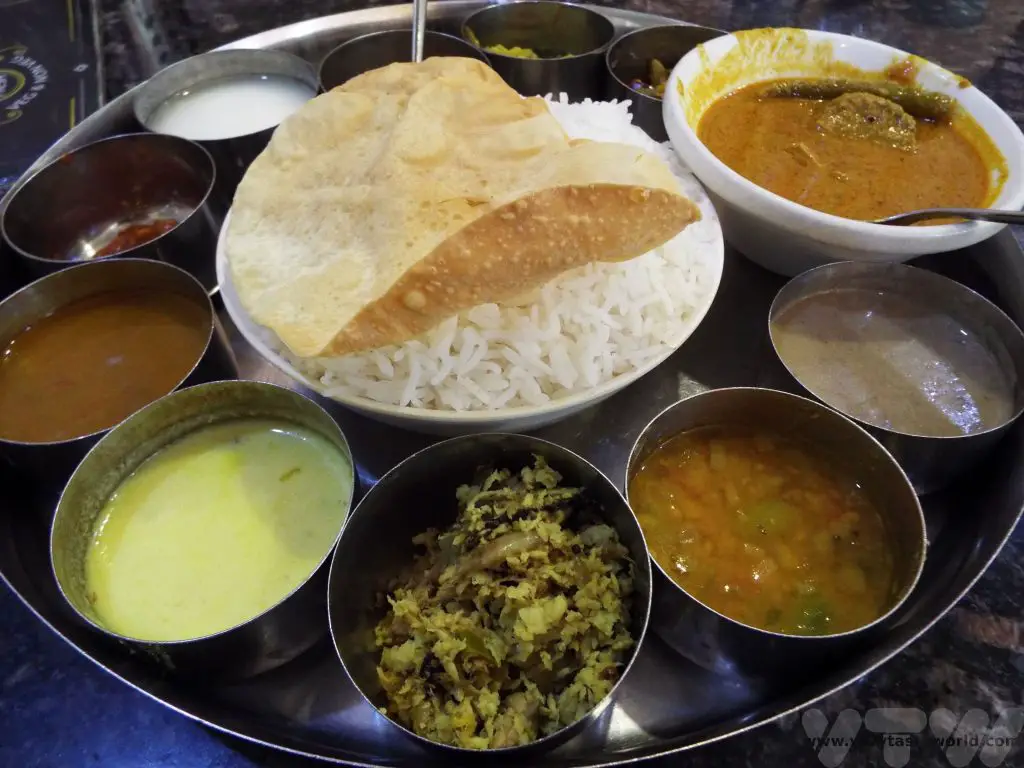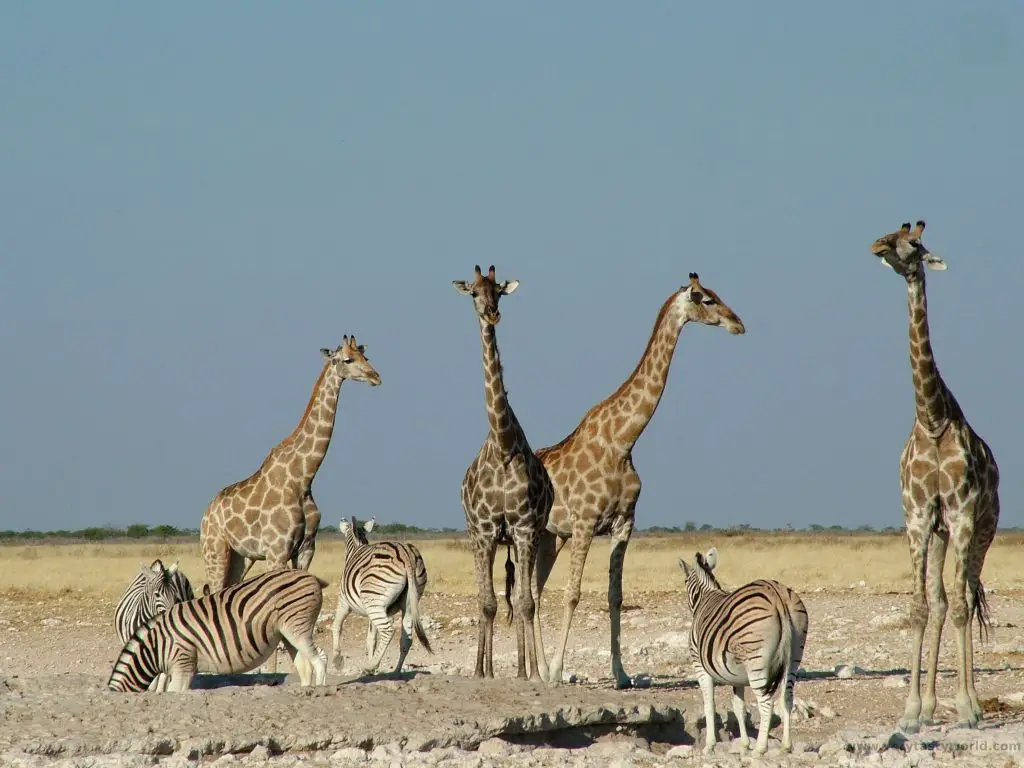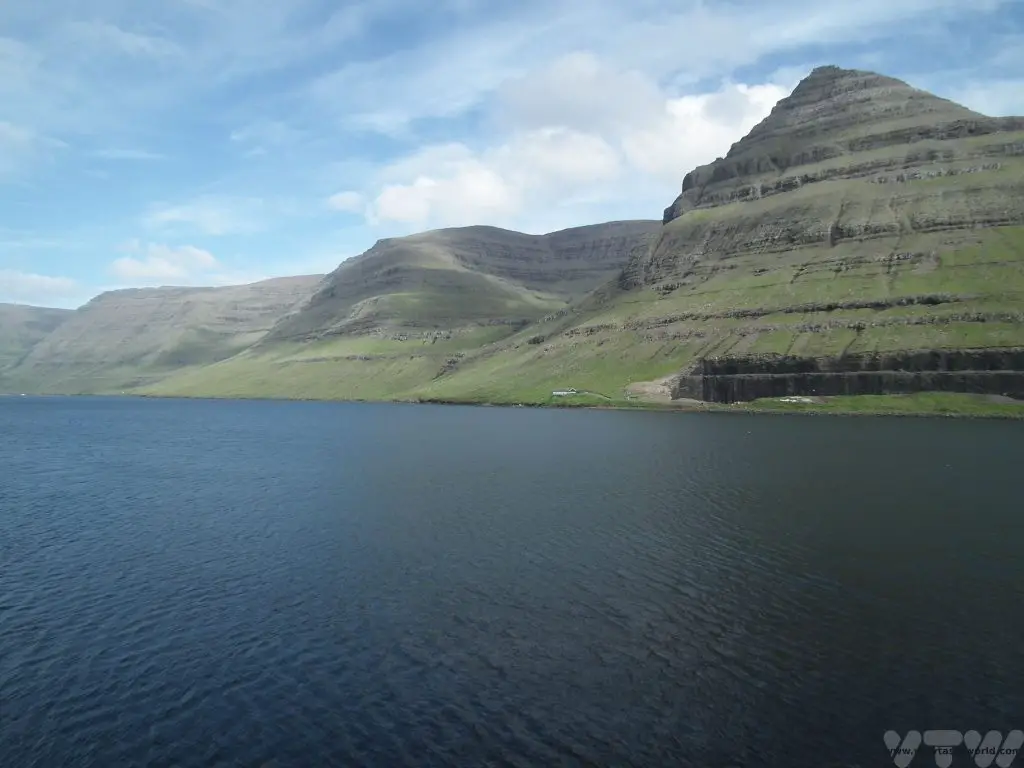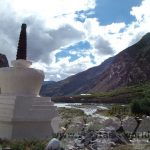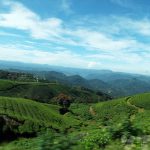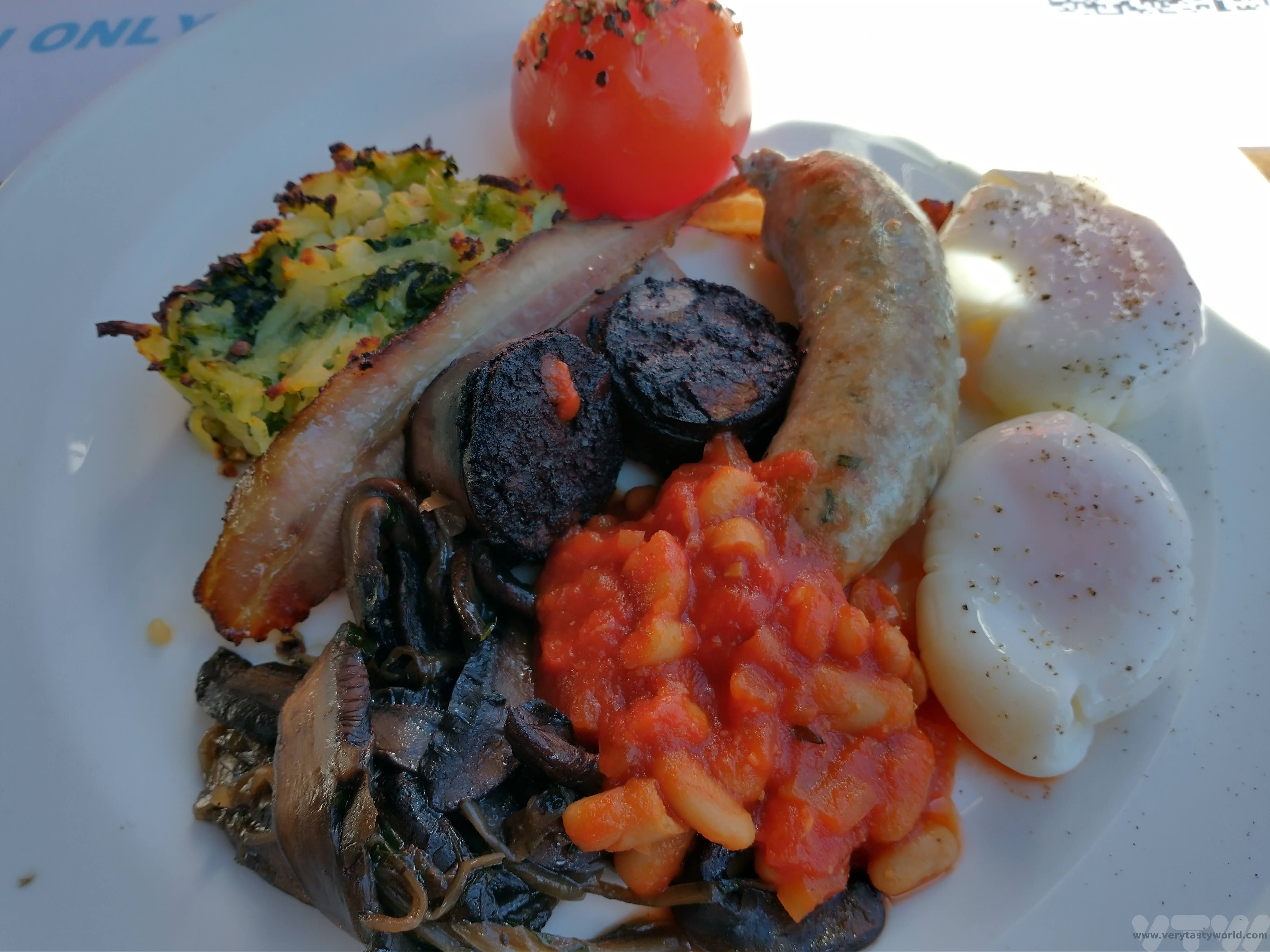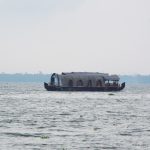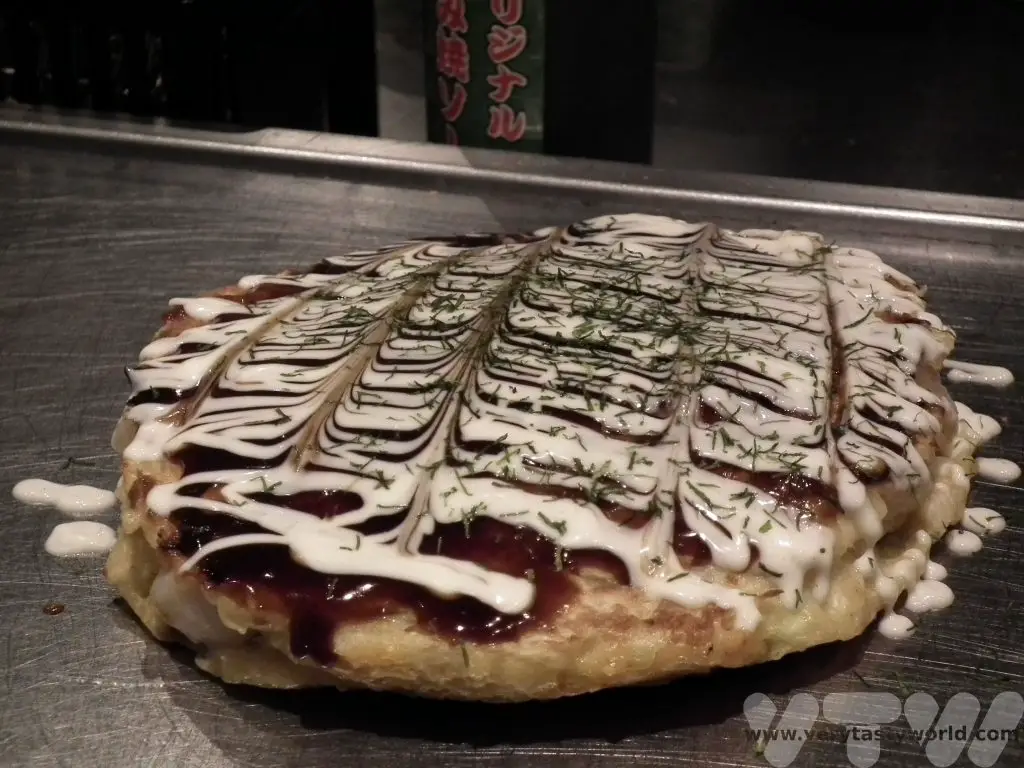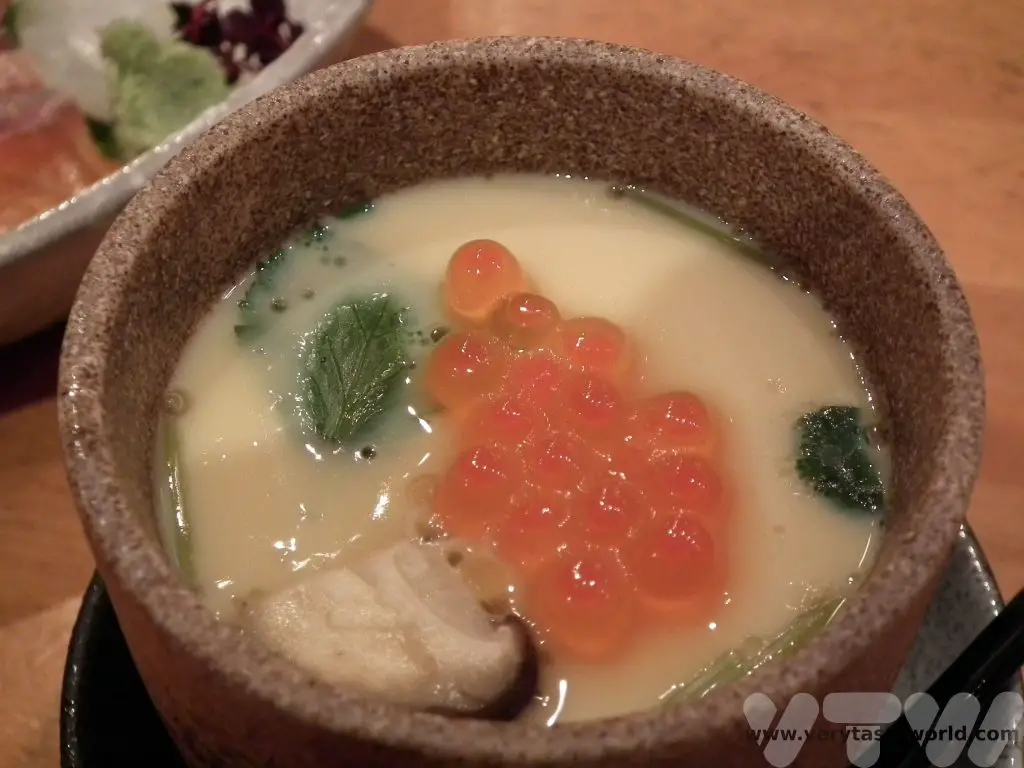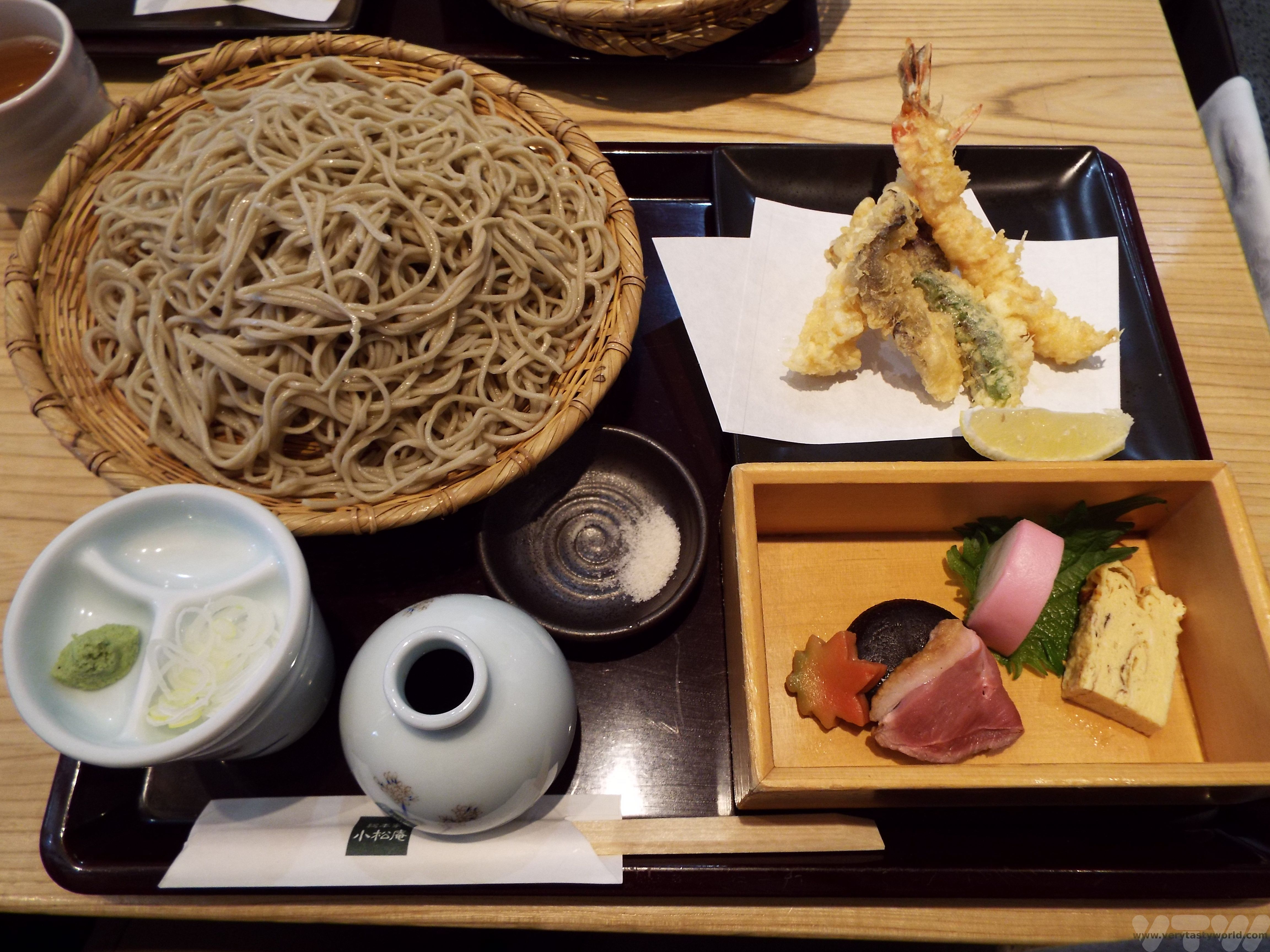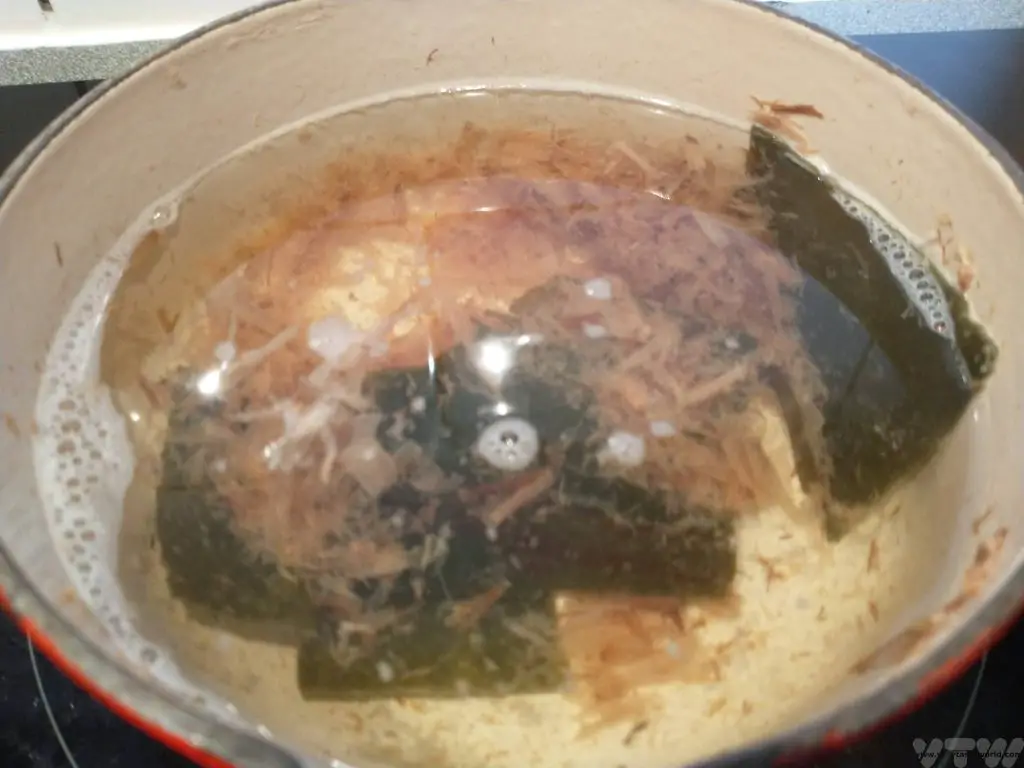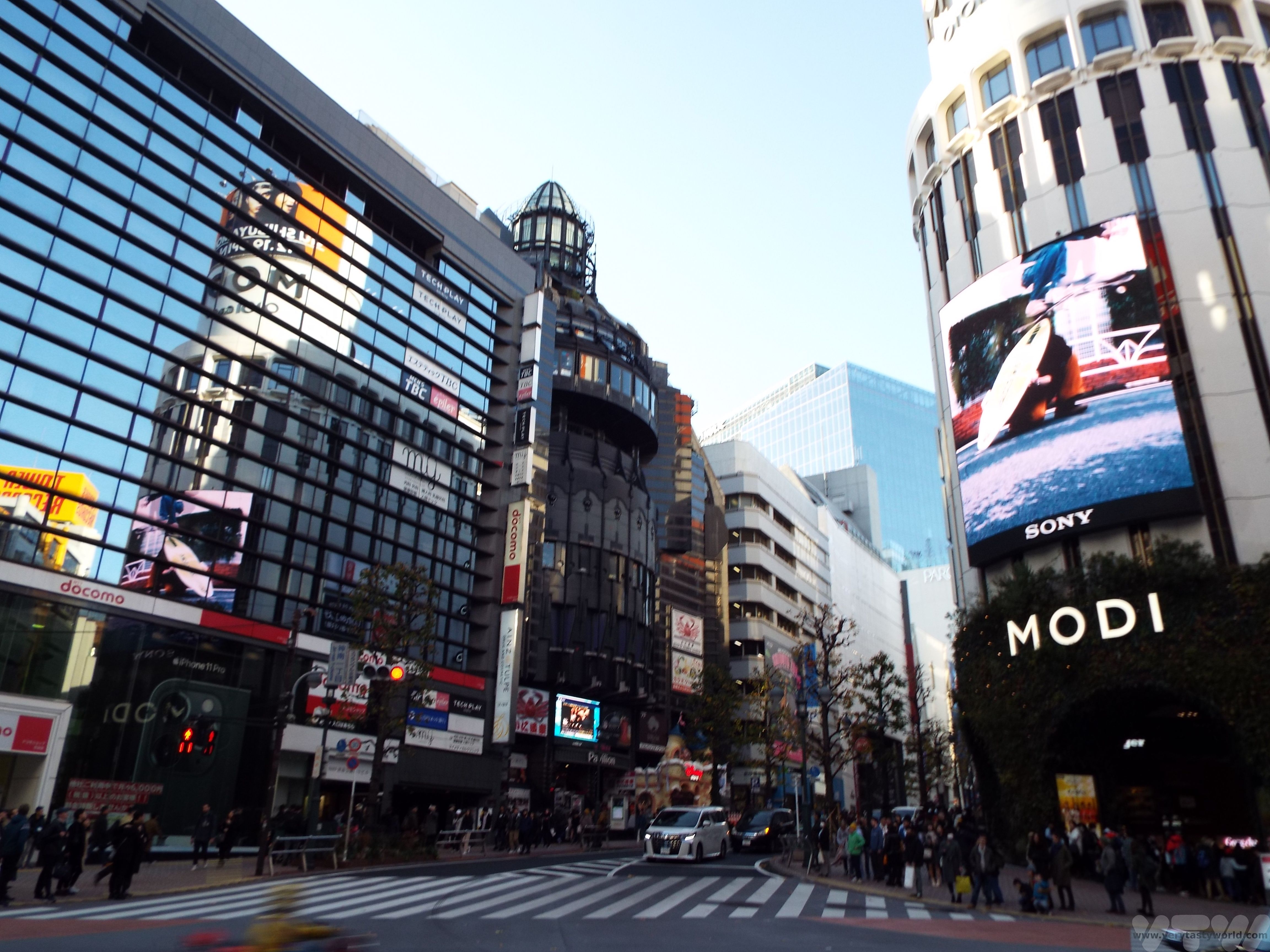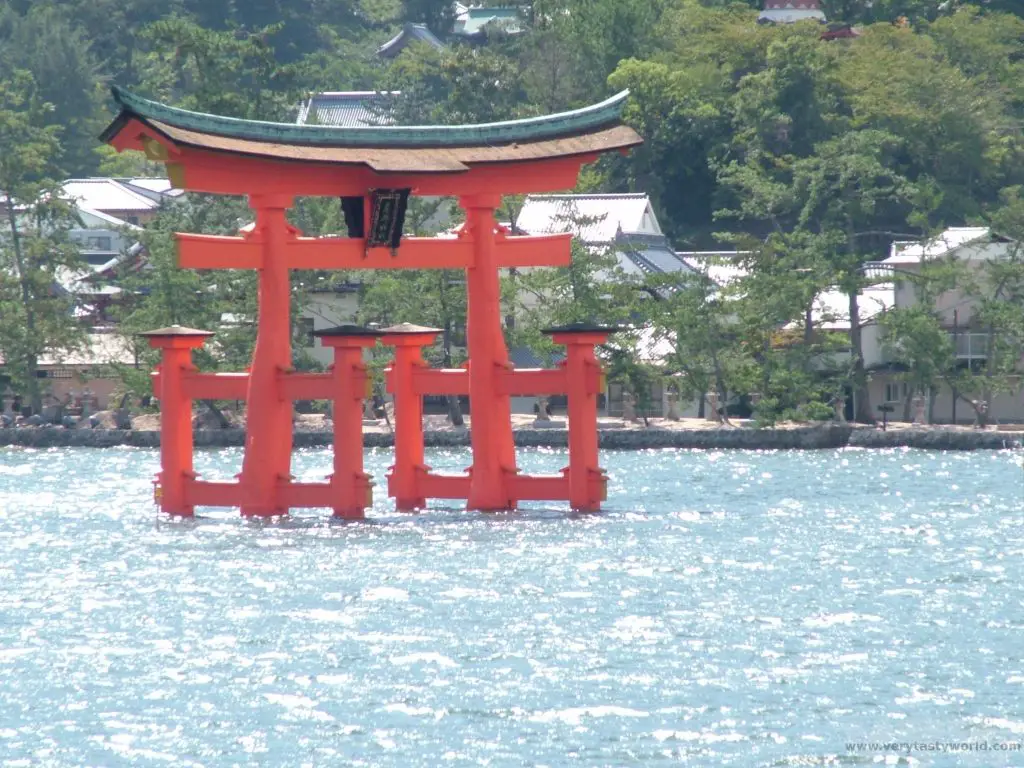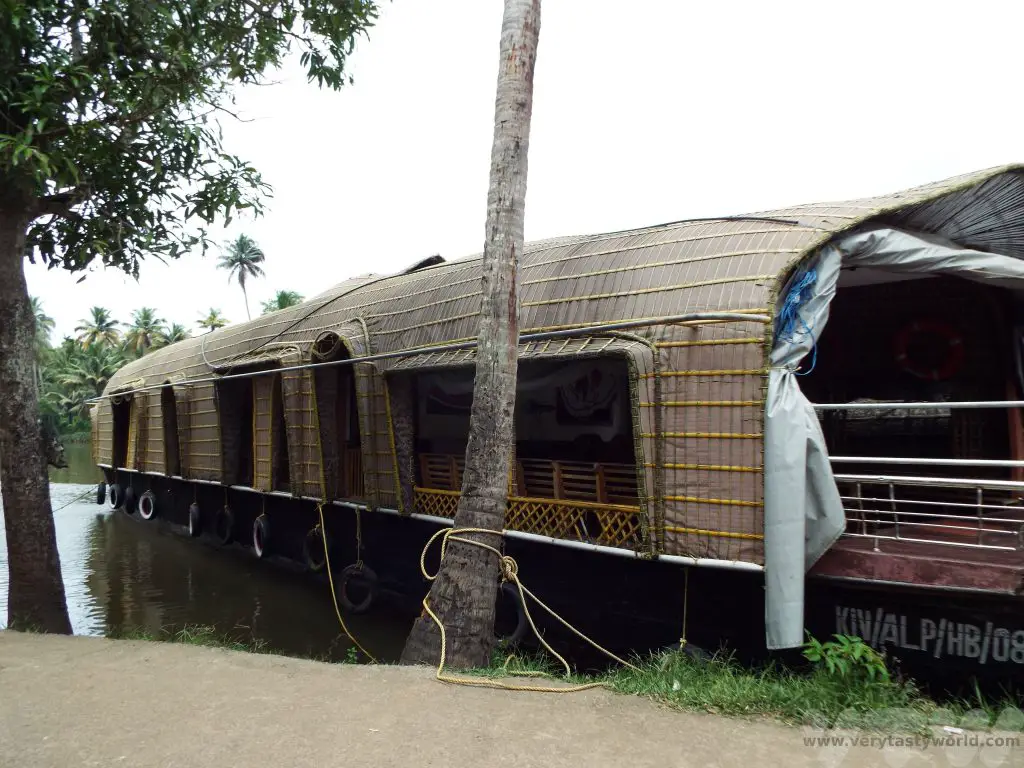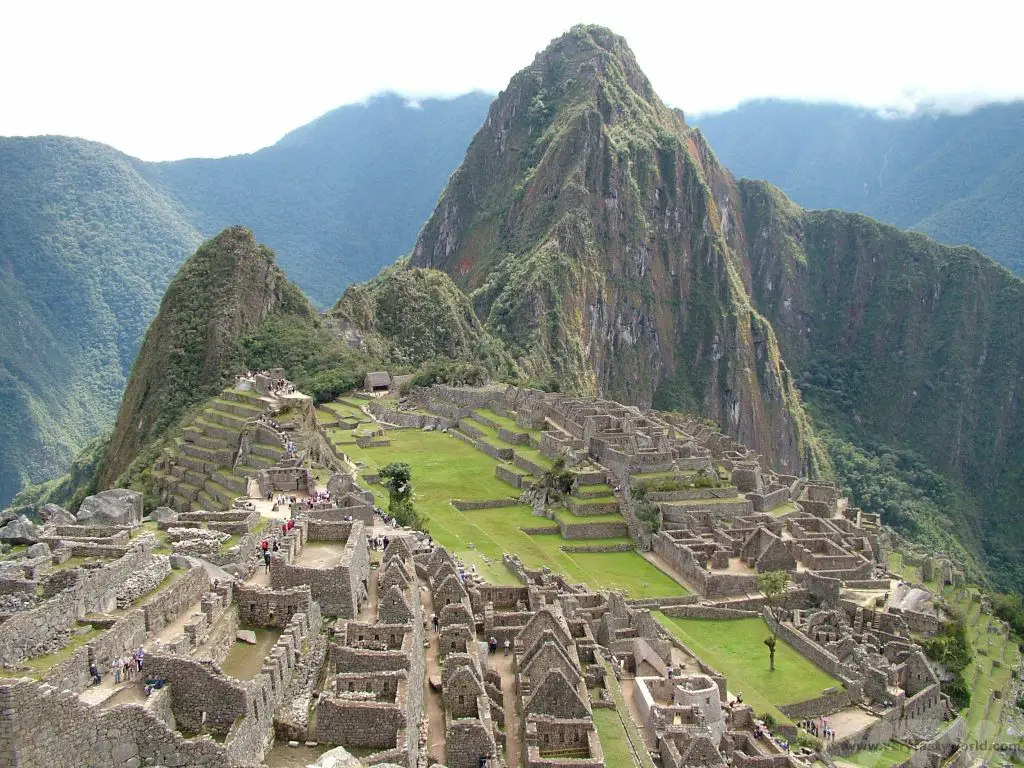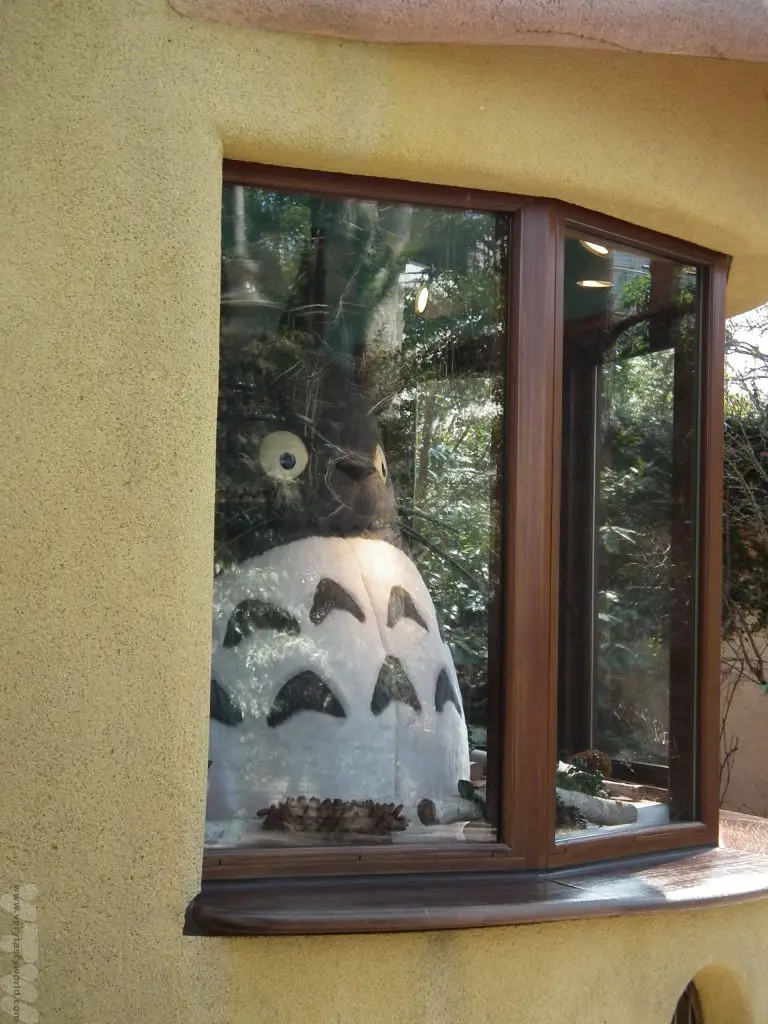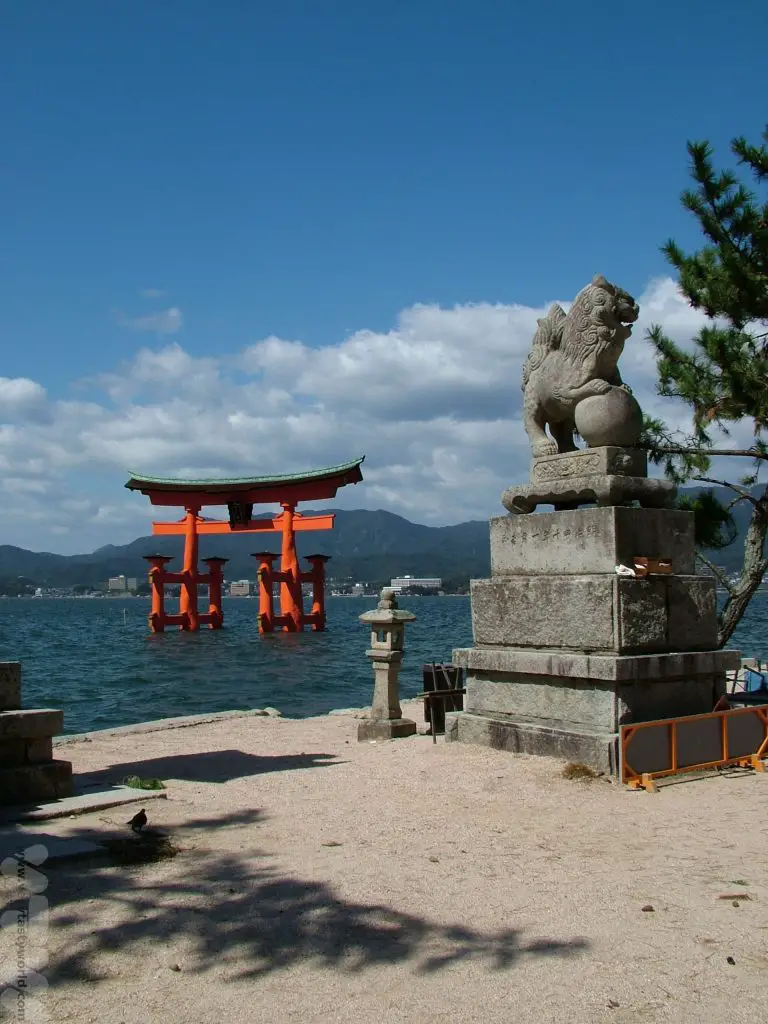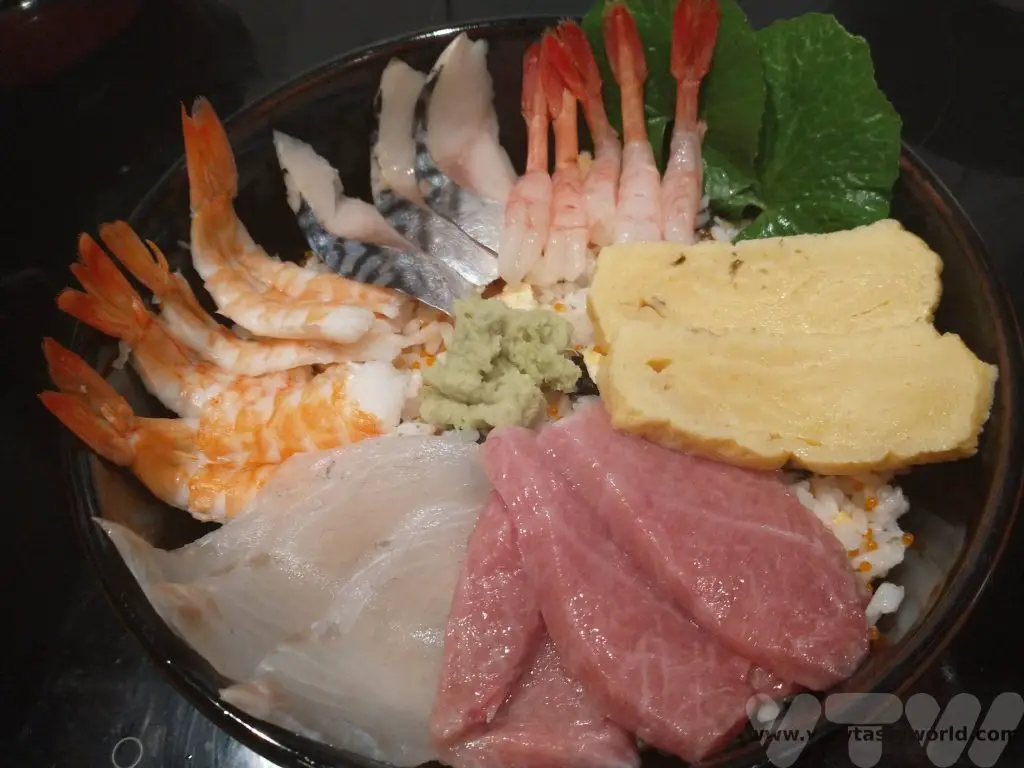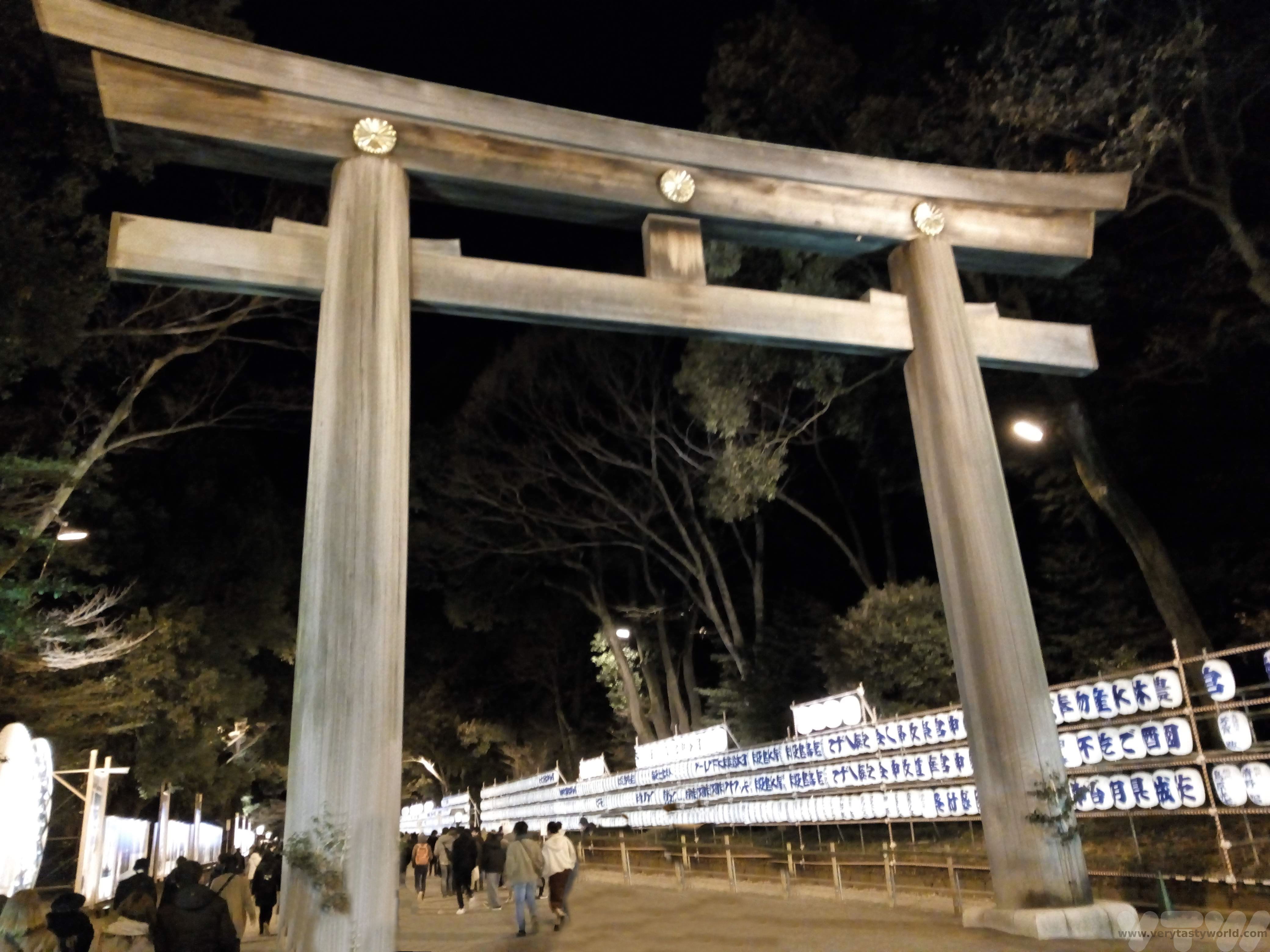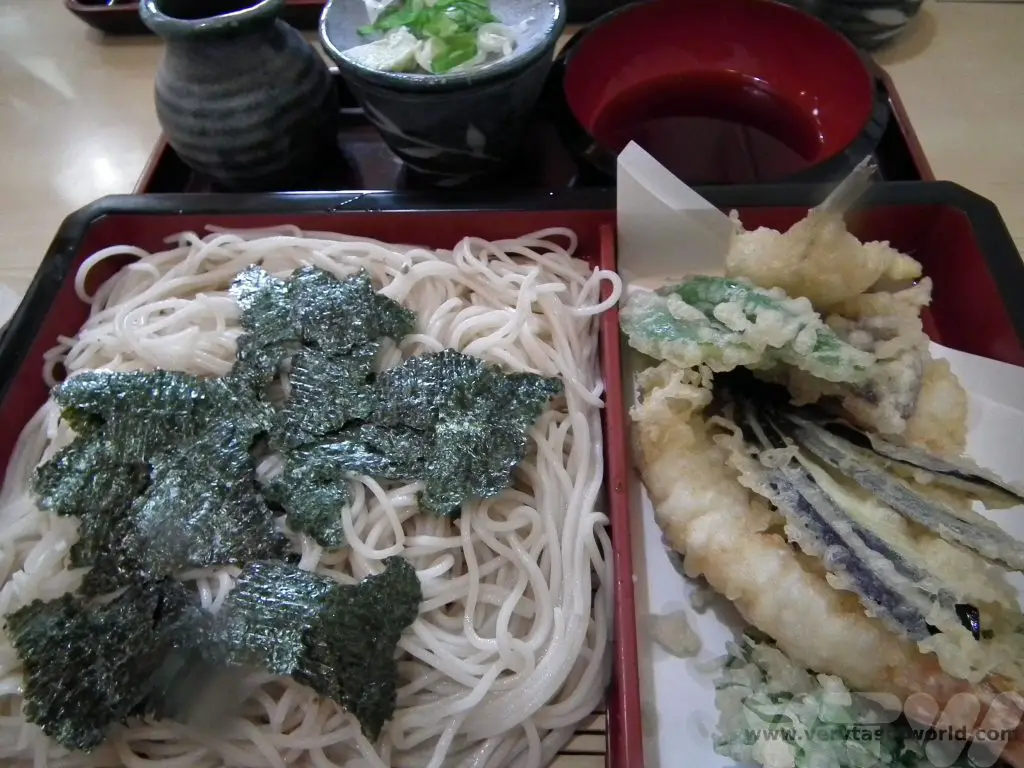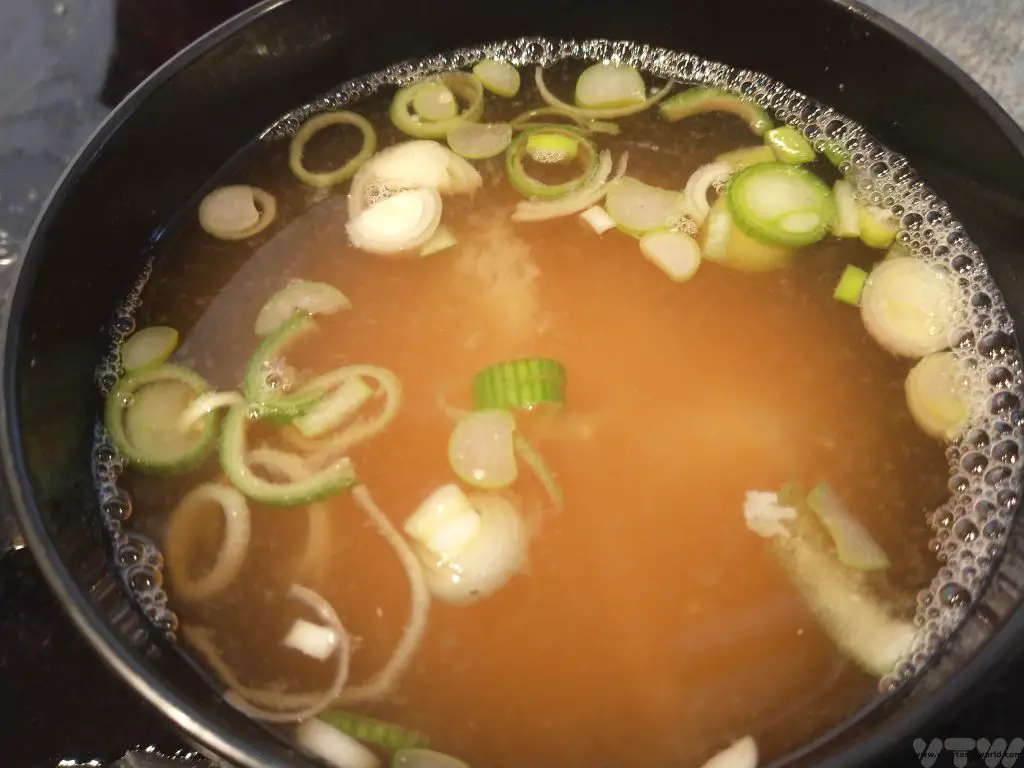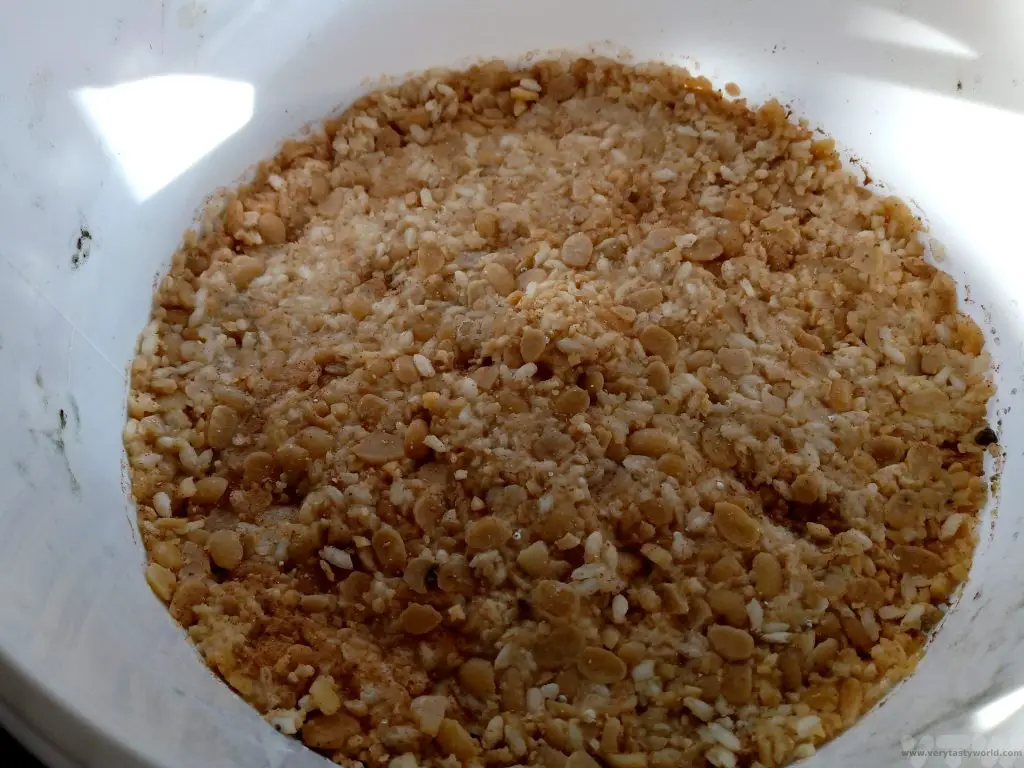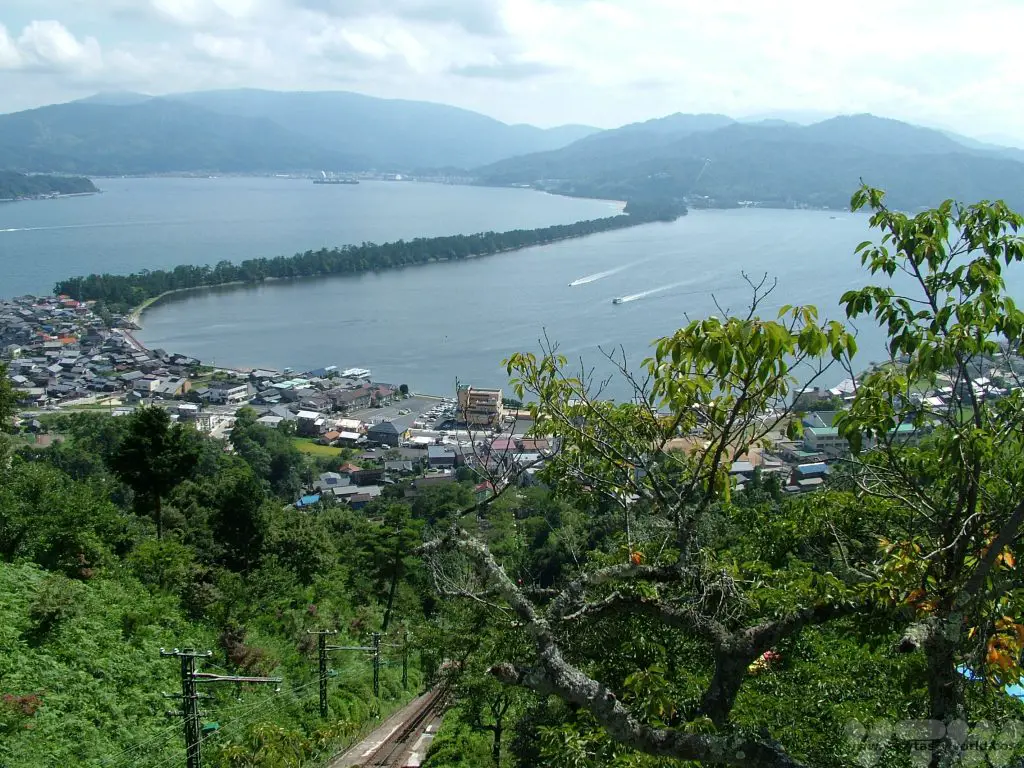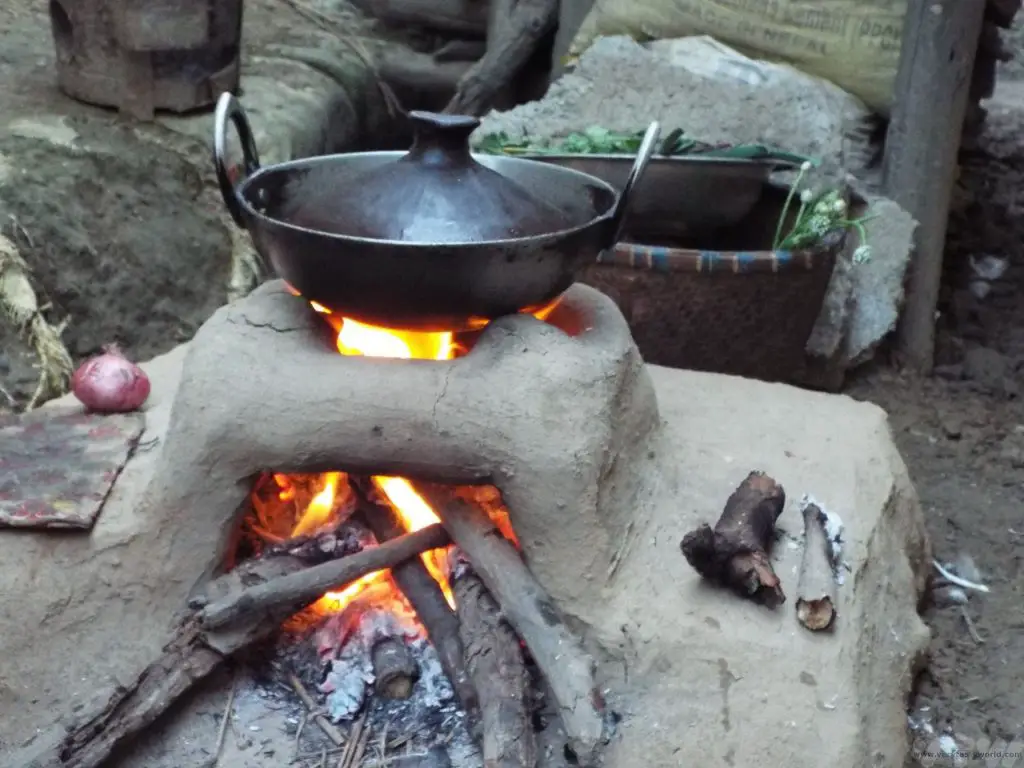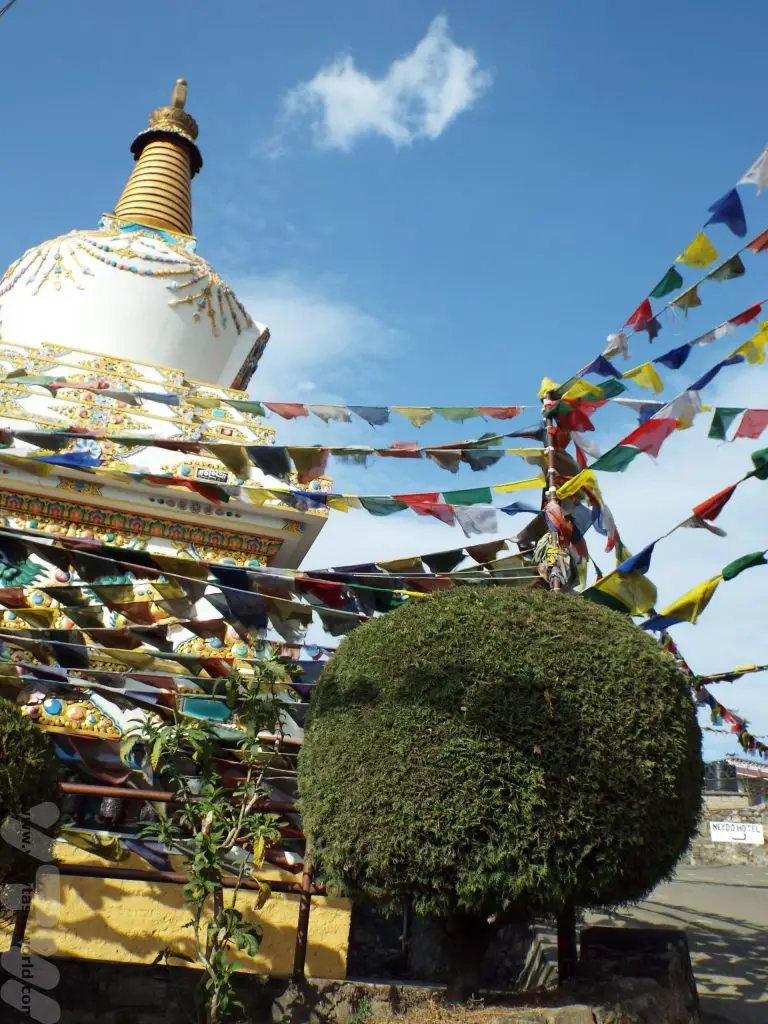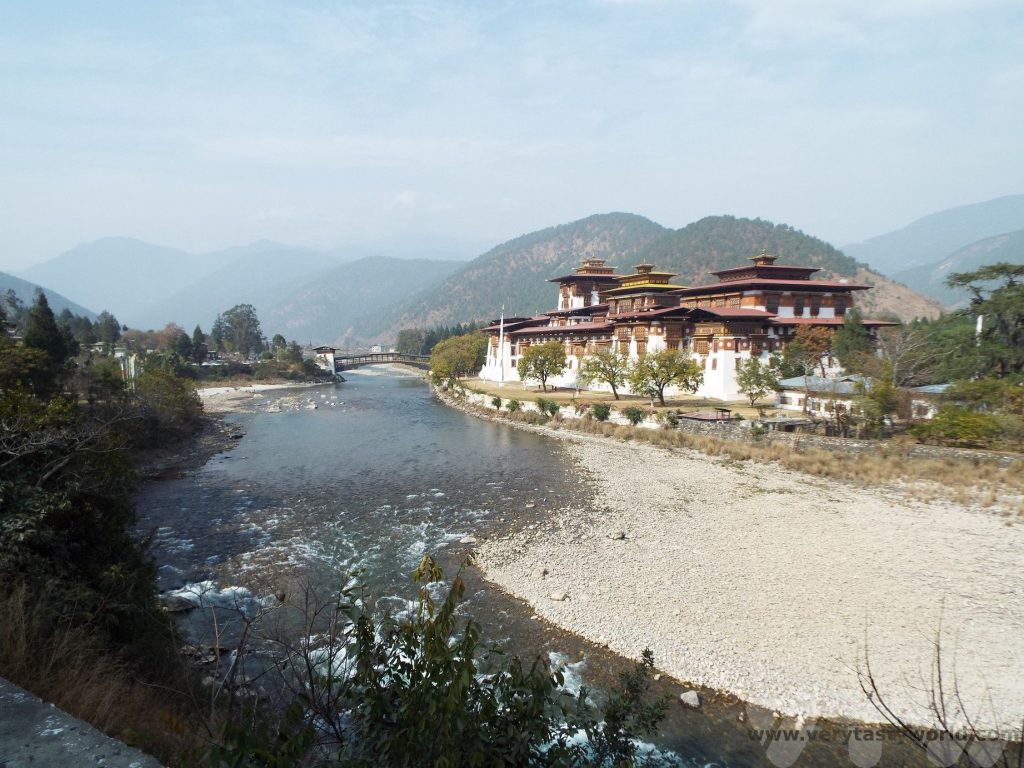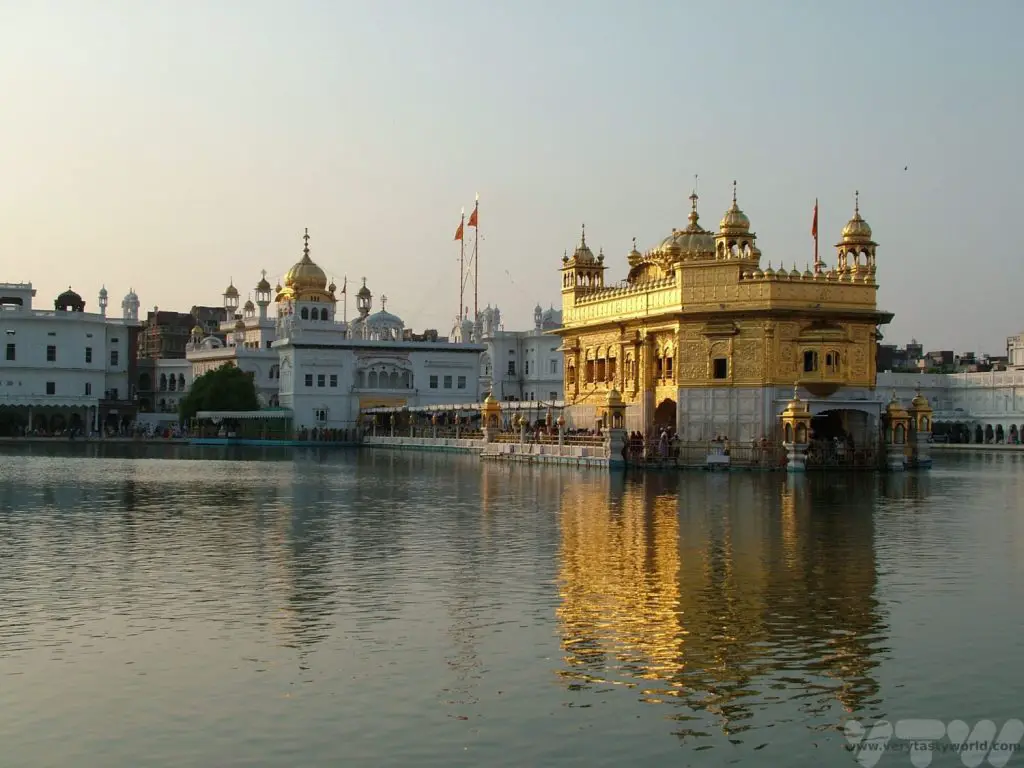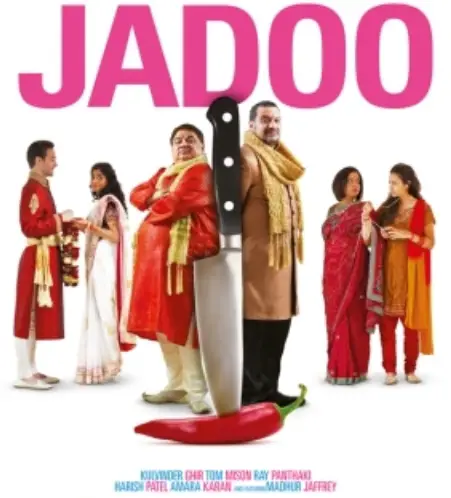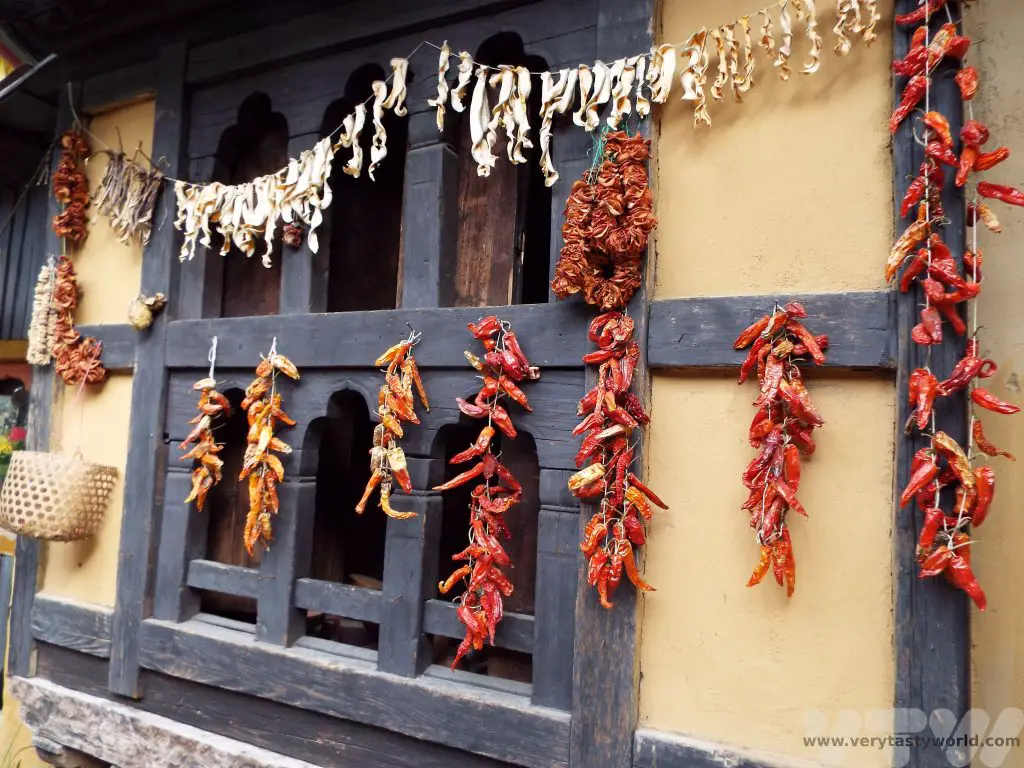RECIPE: How to Make Umeboshi
A typical Japanese breakfast will comprise of a bowl of rice, some grilled fish and pickles accompanied by a bowl of miso soup. What a lovely way to start the day. And at the Japanese breakfast table you will often come across a bowl of pink, wrinkly fruit, roughly the size of an apricot.
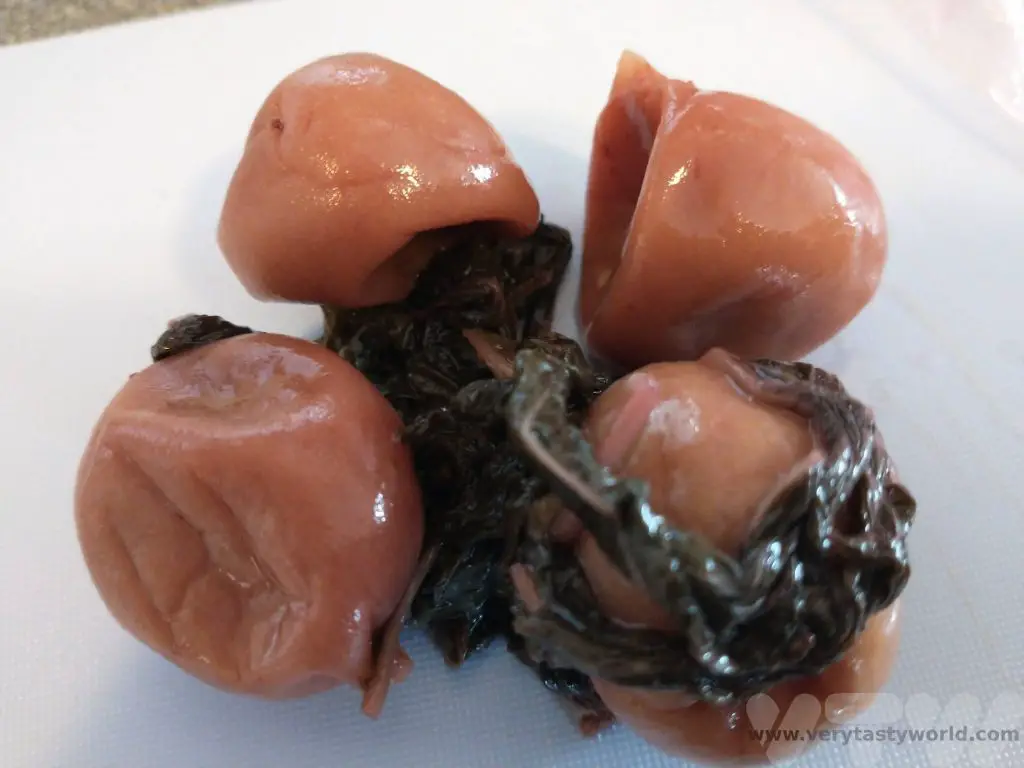
These are umeboshi, incredibly sour and salty ume fruit, which are like small plums or apricots, and are absolutely guaranteed to wake you up. They are also reputed to be a hangover cure, especially good if you are a salaryman who has had a late night out in the city. Or tourists who have had a late night in the city which involved chatting with all sorts of very interesting people in random bars and drinking quite a lot of booze.
Beware the stone, especially if you have a hangover.
Umeboshi are tsukemono, literally “pickled things” which brined and therefore fermented, so they will last for ages. Some will even last decades. If they turn black, they should be chucked. We always bring some back from our trips to Japan and rationed them so had some in our fridge for about 5 years – they were still pink and wrinkly and utterly delicious. Most Japanese meals have tsukemono as an accompaniment but umeboshi are most often eaten at breakfast. They are also used in onigiri (rice balls) as a flavouring and can be converted into a paste to add plentiful salty/fruity flavour to a variety of dishes.
Some Japanese households make their own umeboshi. If you are lucky enough to be offered these, don’t be polite. Well, do be polite because that would be the right thing to do, but don’t hesitate to take your host up on their offer. Home-made umeboshi are absolutely delicious. The pink colour derives from red shiso – also known as perilla – which is a herb added during the pickling process. Shiso is a very common herb used a lot in Japanese cuisine. Green shiso is often the herb that garnishes a sushi platter.
It is possible to make sort-of-umeboshi in western countries. The ume fruit is not usually available, but you can have a bash using plums and salt.
We treated ourselves to a Japanese pickle press a while ago but it should be possible to make umeboshi using a wide-mouthed jar, just as long as you have something heavy that will fit inside the jar to weigh the plums down and a utensil that can extract them (tongs should be fine) as you will need to take them in and out of the jar after the fermentation.
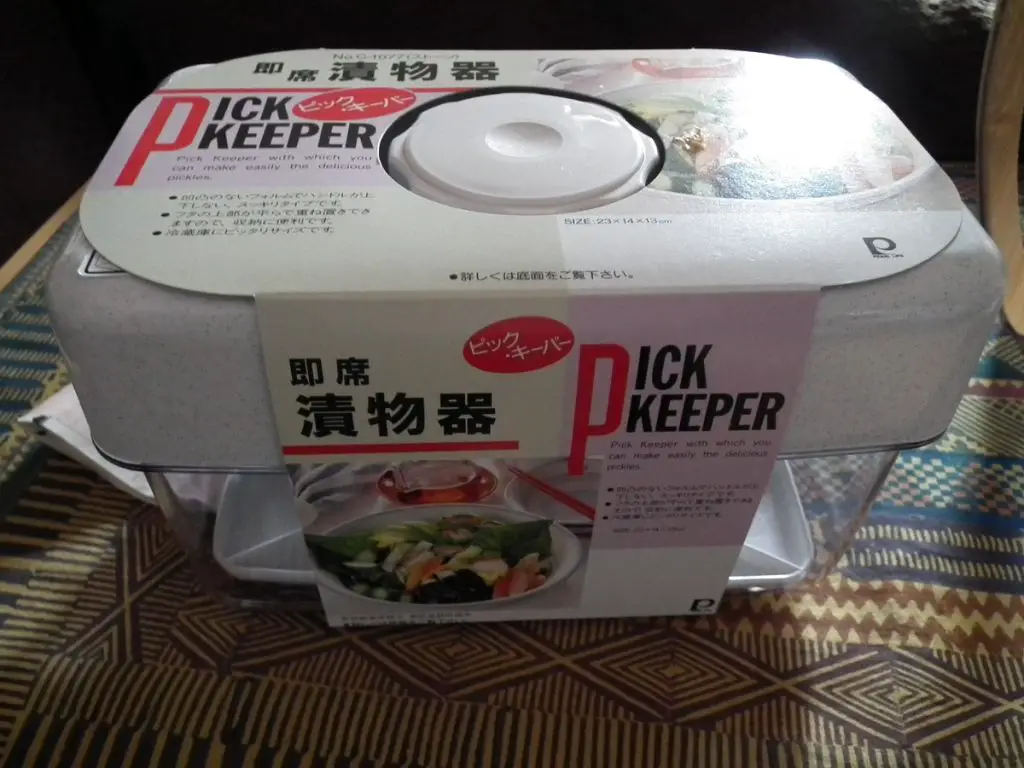
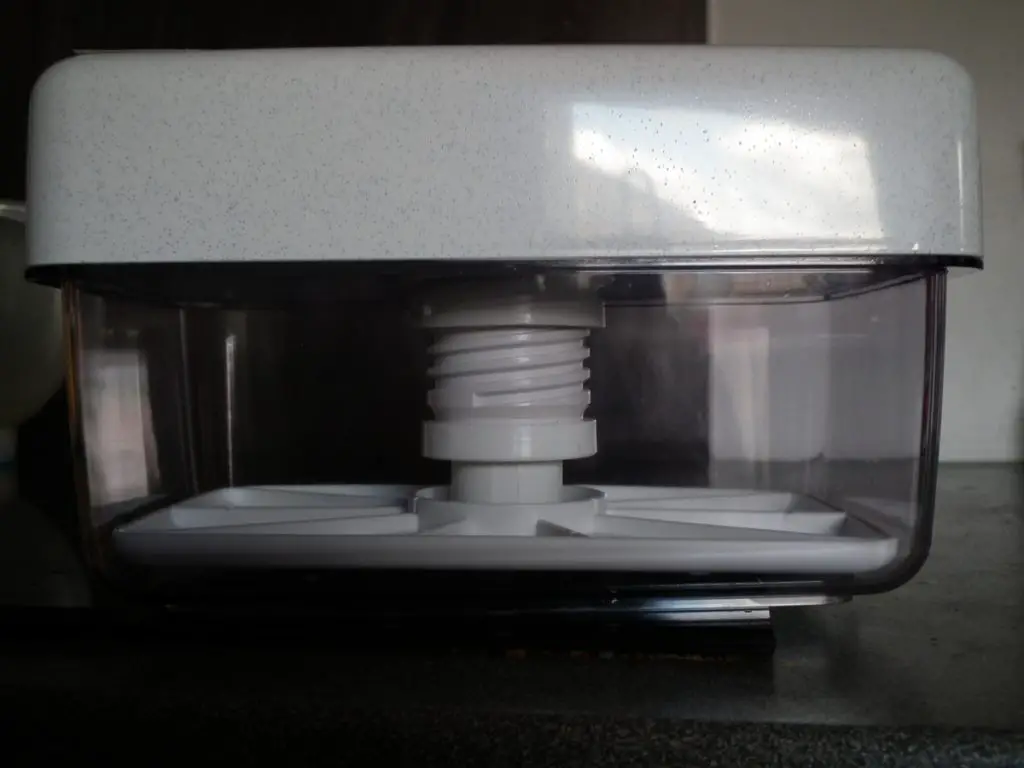
We use plums from our allotment. They have the delightful name Warwickshire Droopers. The great thing is that we can assess how ripe our plums are and pick them. This year the plum tree has been very generous. If you don’t have a plum tree your local market or greengrocer may well have a variety of plums for you to choose from.
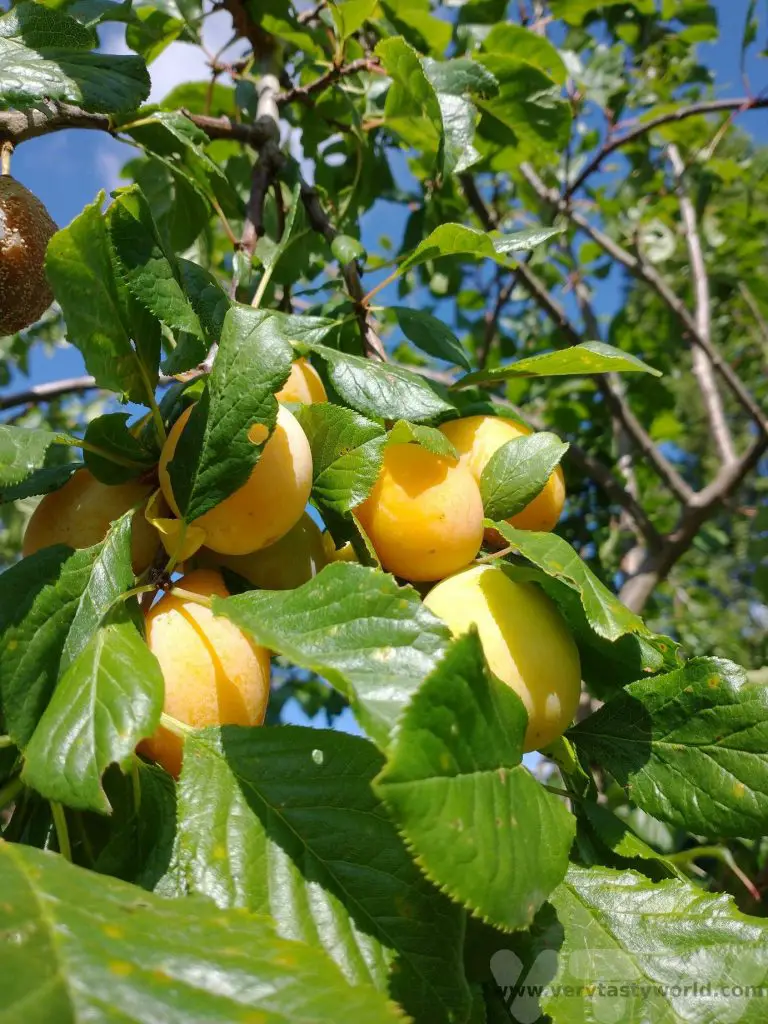
You want the plums to be ripe but not over-ripe, they need to have a degree of firmness.
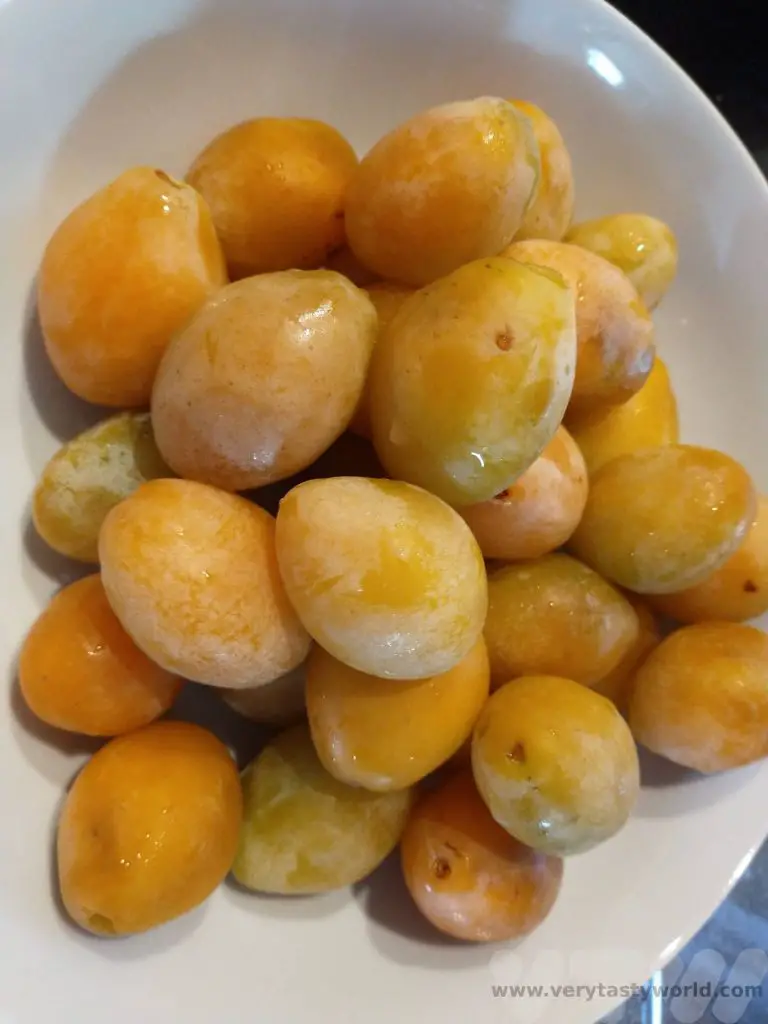
How to Make Umeboshi
Ingredients
Plums – enough to fill your container but leaving enough space to add a weight. If using a press, make sure the press can close and provide enough pressure.
Salt – 8% of the weight of the plums. Try not to use table salt, as this contains anti-caking agents. We prefer Himalayan pink salt but any pure salt will be fine.
2 red shiso leaves (optional)
Method
Wash your plums and pat them dry. Weigh the plums.
Measure out your salt – the total should be around 8% of the plum weight. This is a lot of salt but most of it will leach into the juice during the pressing process.
Massage the salt into the plums
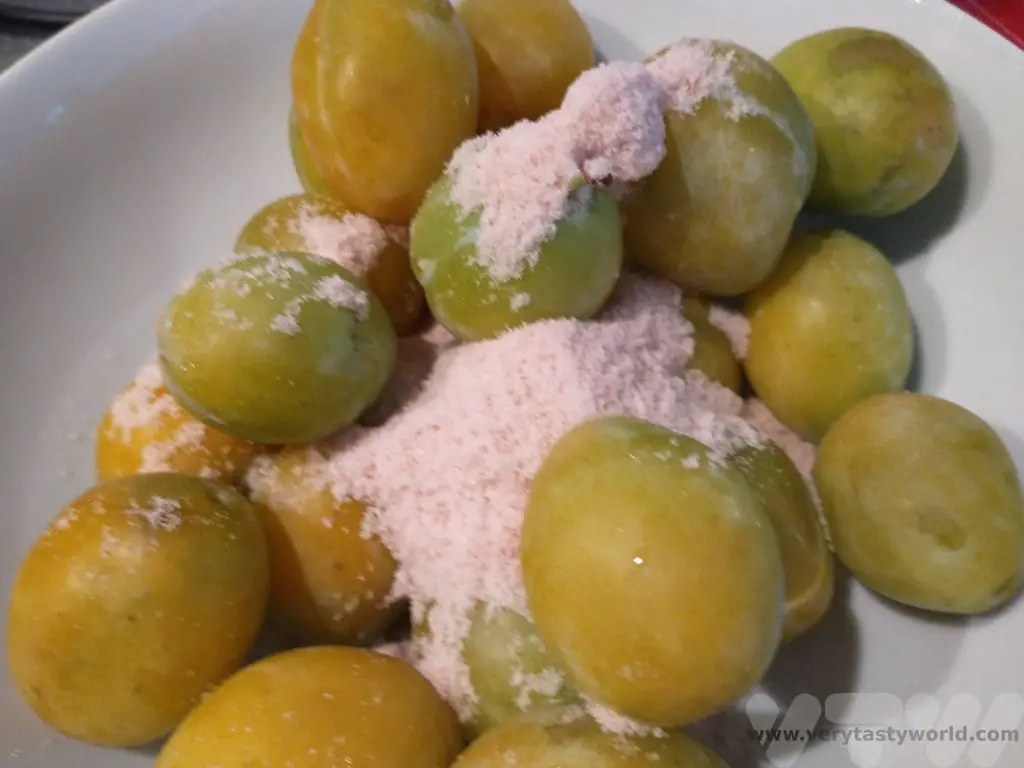
Place in the press. Add the shiso/perilla leaves if you are using them.
Attach the lid and screw the pressure plate down as far as it will go. If you are using a jar, put a clean weight (you can put a weight inside a plastic bag) that puts pressure on the plums.
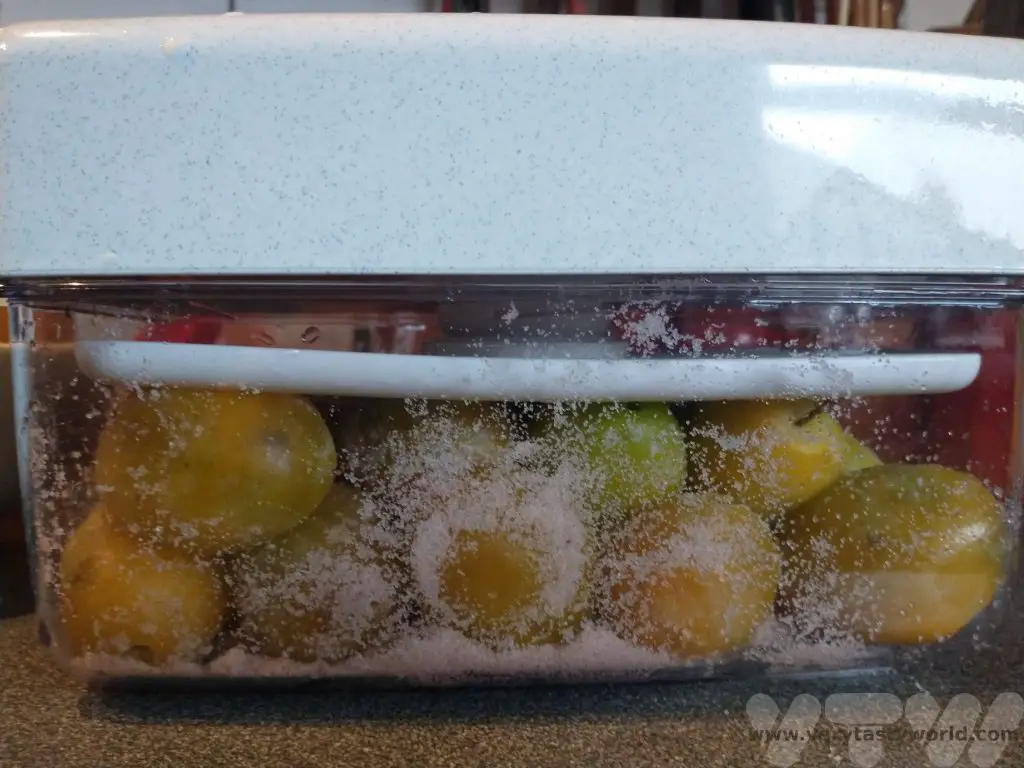
This ferment doesn’t use a brine. The pressure of the weight will release juice from the plums.
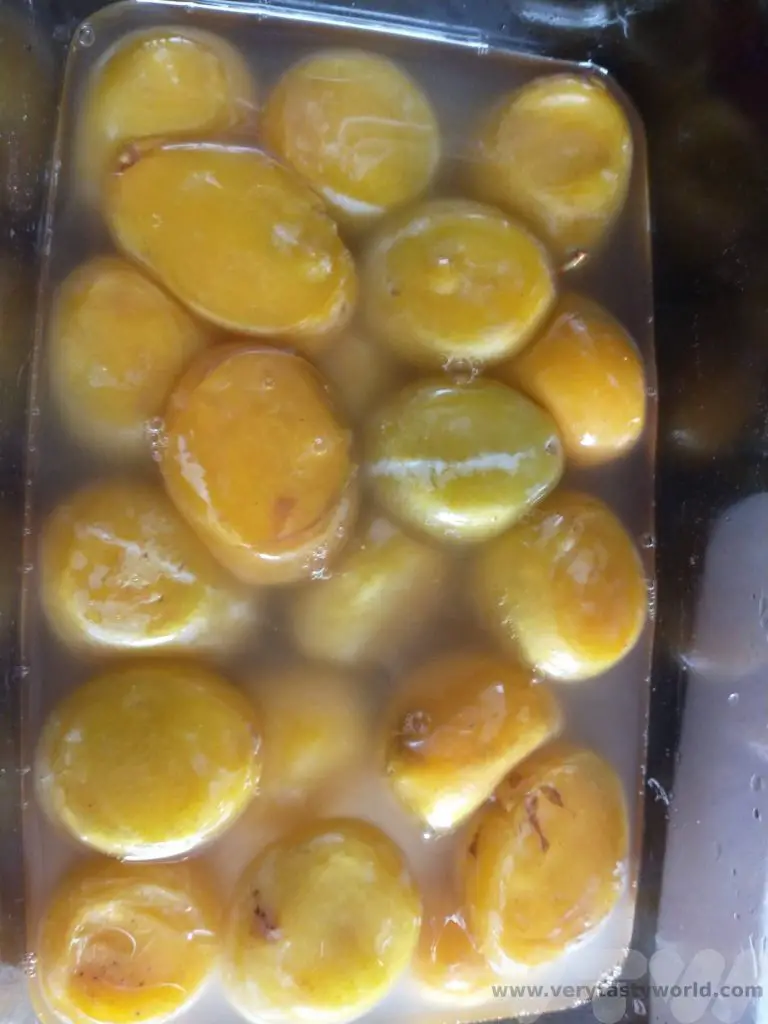
Leave in a cool, dark place for 2-3 weeks. Check the plums occasionally. You will start to see juice appearing in the bottom of the press.
(As with all ferments, if you ever see any mould on the fruit you should throw it away as the spores could cause illness if you consume the plums. It is unlikely that mould will develop with an 8% salt mix as that is lot of salt.)
The next step requires a bit of luck with the weather. Ideally you want a warm, sunny day. In fact, you need three warm, sunny days.
On your sunny day, remove all the plums and place them on a mat, or some kitchen paper, in the sunshine to dry. Place them back in the juicy brine at the end of the day.
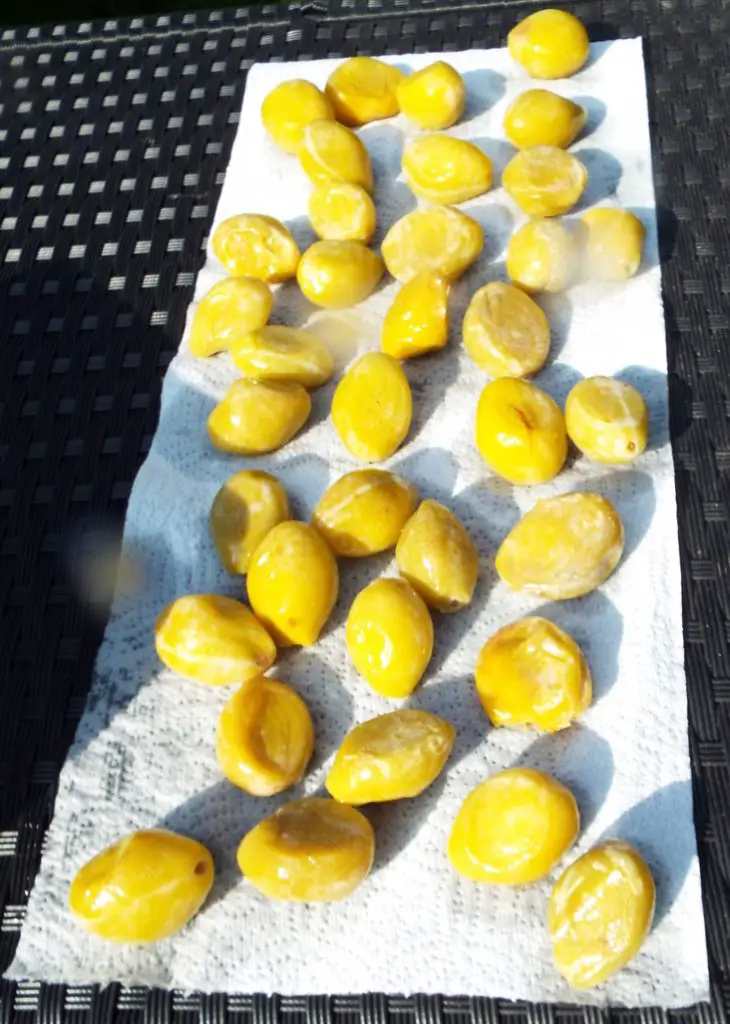
Repeat for a further two days. They don’t need to be consecutive days but it would be helpful if you can dry the plums over the course of a week.
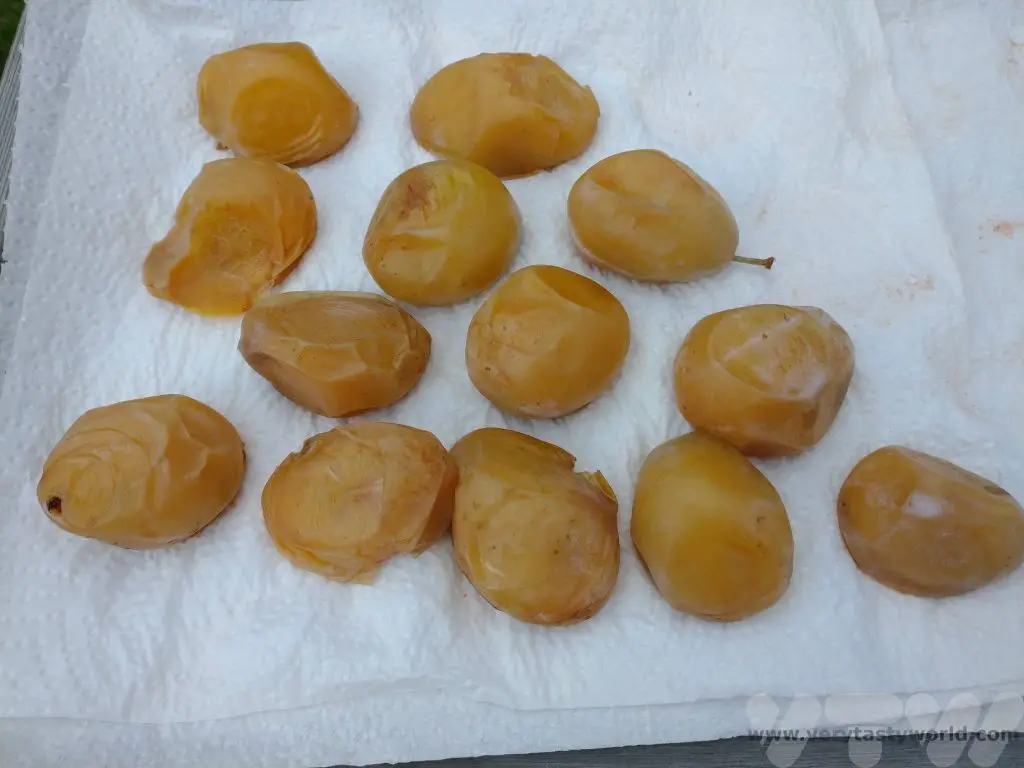
After the third day, you can place the plums in a jar or a plastic container, or even a plastic bag. They will last for months and months. That’s if you don’t scoff them…or have too many hangovers to cure!
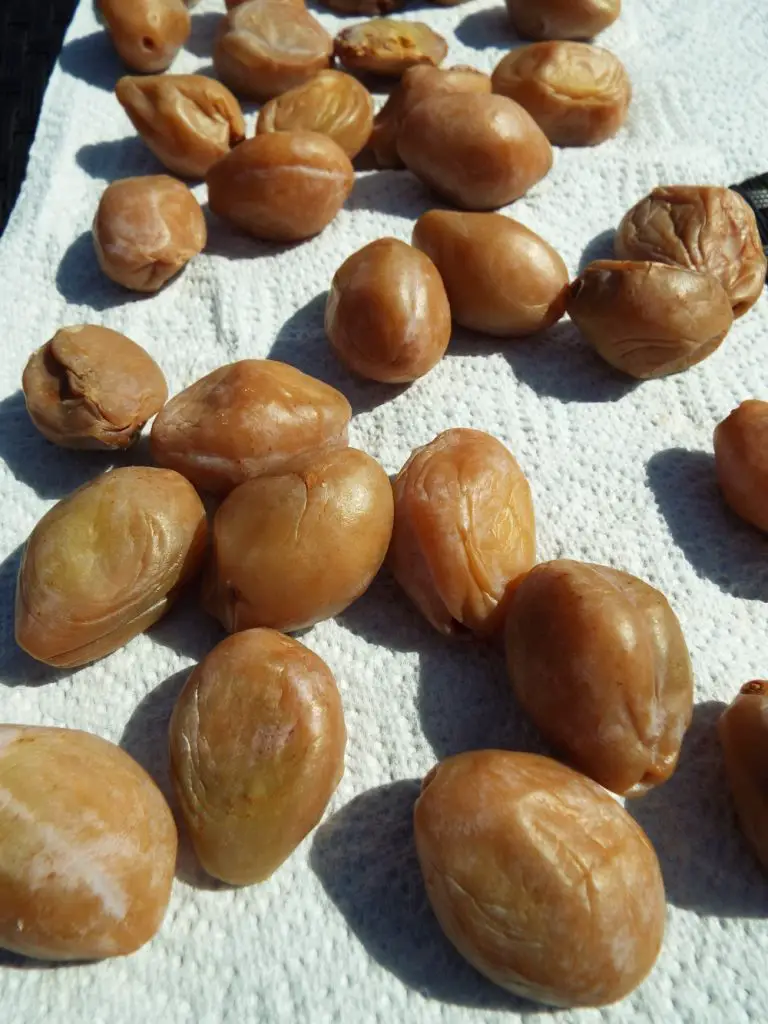
Save the Brine!
We hate food waste so we have devised a way to re-use the salty plum juice brine.
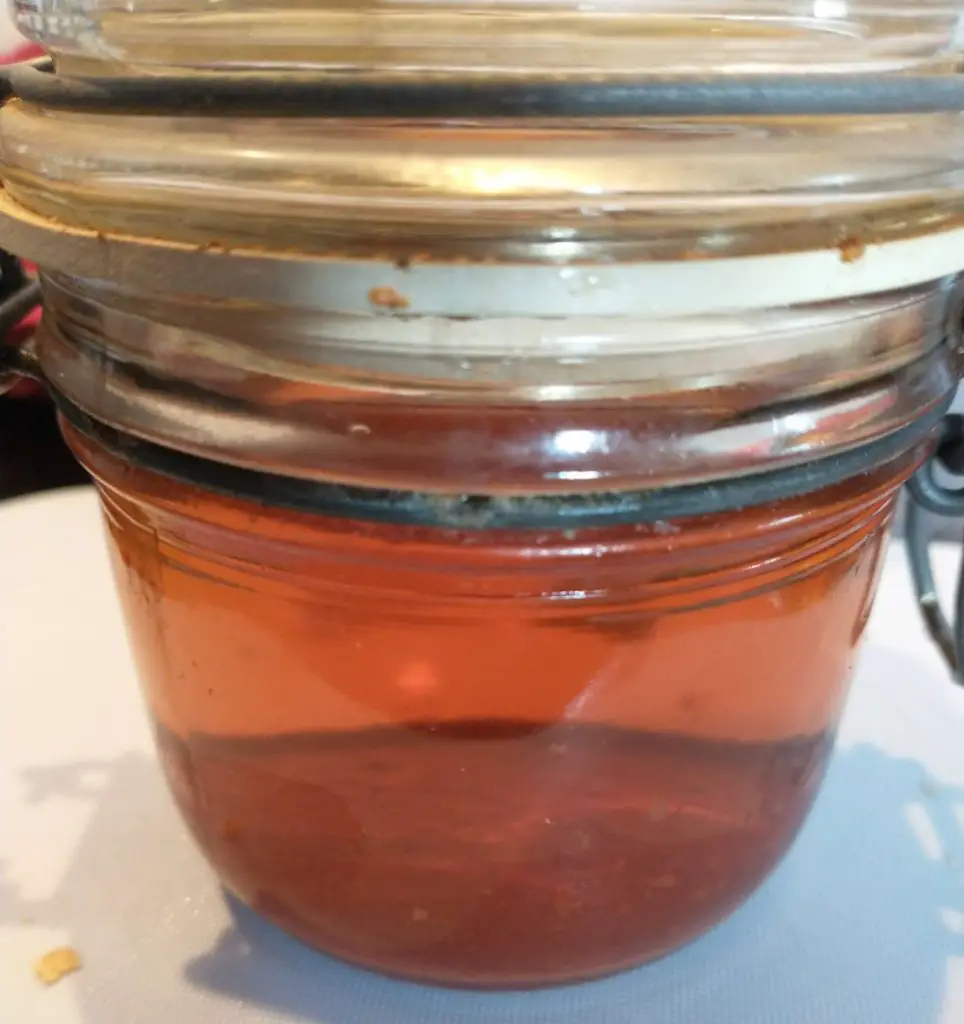
We use it to pickle ginger.
Peel the ginger and cut into matchsticks.
Place them in a jar and cover them with the brine. After a couple of weeks they will be deliciously sour and salty. We use them to add some zing to rice and noodle dishes or as a garnish.
Actually, we have been known to open the jar and sneak a matchstick or two for a quick snack.
Related Posts You May Enjoy

- RECIPE Oyakodon Donburi
- Zero Waste Recipes Before Your Holiday
- RECIPE: Vegetable Biryani Tamil Nadu Style
- RECIPE: Vegan Wild Garlic Pesto
- Recipe: Venetian Pasta Sauce
- RECIPE: Biryani Raita Recipe
- RECIPE: How to Make Costa Rica’s Gallo Pinto
- Recipe: Japanese Simmered Pork Belly – Buta no Kakuni
- RECIPE: How to Make Umeboshi
Sunrise at Angkor Wat and Other Temples
The remarkable temples of Angkor Wat are undoubtedly the main draw for visitors to Cambodia. Although there are many other places to visit in this wonderful country and its neighbours in South East Asia, the temples from the Khmer empire, lost to the jungle for centuries, are astonishing in their scale and construction. If you visit Angkor Wat we recommend spending at least three days in the region. Here’s our guide to visiting, including info on the best way to see the sunrise at Angkor Wat.
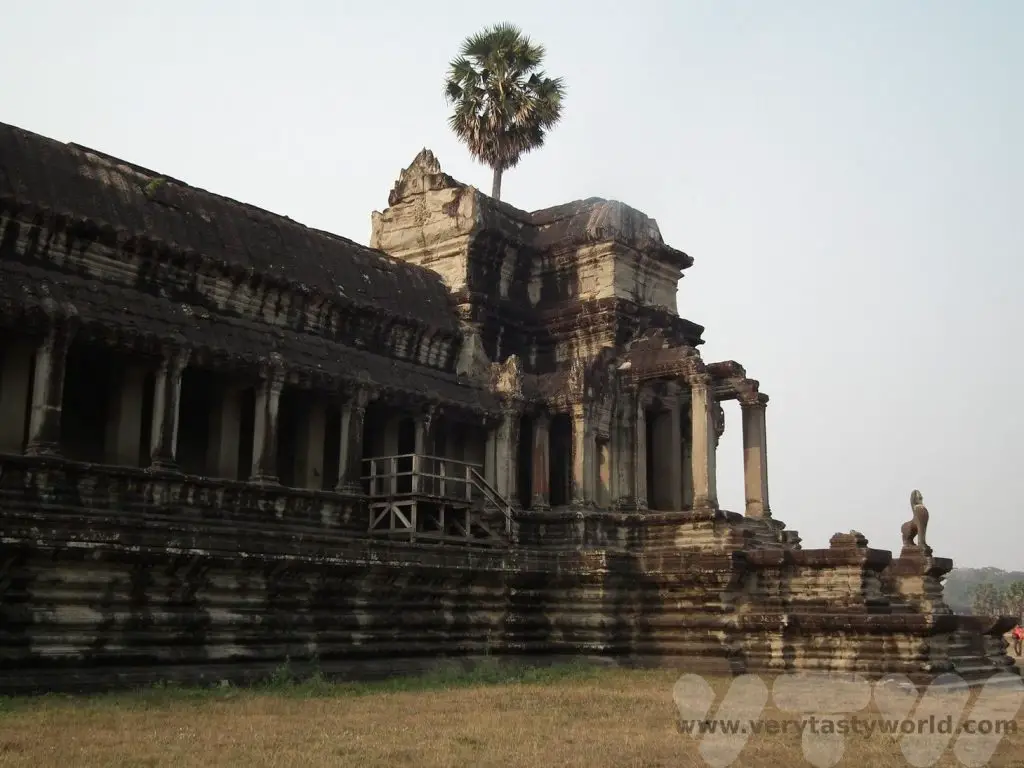
The nearest town to the main temple complex is Siem Reap, which is around 5.5 km from Angkor Wat and caters to the tourists that come to visit. There is a variety of accommodation from budget to luxury and there are loads of shops and restaurants, notably on ‘Pub Street’ where you can sample the local food. Our hotel was about 2km from the centre of Siem Reap and, while we walked back and forth most of the time, there were plentiful tuk-tuk drivers to transport us if we needed.
History of Angkor Wat
Angkor means ‘city’ and Wat means ‘temple’ – so Angkor Wat literally means ‘City Temple’. The temple complex is believed to be the world’s largest religious building.
Angkor was the central city for the Khmer kings between the 9th and 13th centuries. The Khmer Empire was vast and one of the most sophisticated kingdoms in South East Asia. Many buildings and temples were constructed by the Khmers over the centuries. At the height of their civilisation, Angkor Wat was the biggest construction, built in the early 12th century at the behest of Suryavaram II as a dedication to the Hindu God Vishnu. The temple complex is said to represent Mount Meru, the home of the gods, with the surrounding walls and moats symbolising mountains and oceans. The walls are covered with bas-reliefs, stretching for almost one kilometre they tell of tales from Hindu mythology and of the glories of the Khmer empire.
Angkor was sacked in 1177 and Jayavarman VII decided to build a new capital a short distance away, at Angkor Thom. This was, again, a religious complex, but this time a Buddhist temple. Angkor was sacked by the Thai people and then abandoned in the 15th Century, becoming a ‘lost’ city, a city of legends, to be ‘rediscovered’ by French explorer Henri Mouhot in 1860. In 1908 restoration of the complex began. It ground to a halt during the 1970s during the political unrest during the brutal regime of the Khmer Rouge and when work resumed in the 1980s extensive repairs were required. Angkor Wat became a UNESCO site in 1992 and restoration work has continued to this day.
Visiting Angkor Wat – Practicalities
You need to have a ticket in order to visit Angkor Wat and the surrounding temples. While it is possible to visit the main temple and Angkor Thom in a day, as both are located quite close to each other, we chose the 3 day ticket so that we could explore some of the other temples in the region. It is also worth finding a guide and transportation as many of the temples are located several kilometres apart. There are various options for getting a guide. We had one lined up prior to arriving in the nearby town of Siem Reap but you should be able to find a reputable, certified guide via your hotel. There will also be many guides around Siem Reap who will offer their services, which may or may not be reliable. And, of course, you can find online tours, which will usually have reviews, so you can check those out. The best guides will know when to visit the attractions in order to avoid the worst of the crowds, will be able to show you the ideal photo spots and, most importantly, will also have loads of information about the history of the sites.
If you don’t wish to have a guide you will still need transportation especially if you plan to visit some of the temples that are further away. Tuk-tuks are easy to find in Siem Reap and are a great way of getting around. You can negotiate a price with the driver.
You cannot get into Angkor or the surrounding temples without a ticket which you buy at the official ticketing centre. The tickets are non-transferable and will have your photo printed onto them. Click here for the latest info and prices.
You can get 1 day, 3 day or 7 day passes. They don’t have to be used on consecutive days. The 3 day pass can be used over the course of a week and the 7 day pass can be used over a month. We had a 3 day pass which enabled us to visit a number of the temples.
There is also a code of conduct for visitors, which are basically a matter of common courtesy:
Wear appropriate clothing (i.e. be respectful, very short shorts and sleeveless shirts are not suitable).
Do not touch the monuments.
Refrain from talking loudly.
Do not enter prohibited areas. These are clearly marked and are usually there for safety reasons.
No smoking.
Do not buy souvenirs from children – they should be in school.
Do not take photos of monks, unless you ask their permission. Also, do not touch monks. (But, honestly, why would you?)
Sunrise at Angkor Wat – The Main Attraction
Seeing the sunrise at Angkor Wat is an essential activity. Unfortunately this is an essential activity for all visitors so it does get really crowded. There are two tips to make the sunrise visit easier.
The night before your visit, ask your hotel or hostel to prepare a packed breakfast for you or stock up on some food from any of the many stores in Siem Reap. Then set your alarm and get an early night. Try to get to the site as early as possible. The site will be open from 5am. (N.B. Most other sites are open from 7:30am so Angkor Wat is an exception.) If you are with a guide, they will often know the best spots from which to view the sunrise. It’s worth the wait as the darkness fades and anticipation mounts as the sun begins to appear.
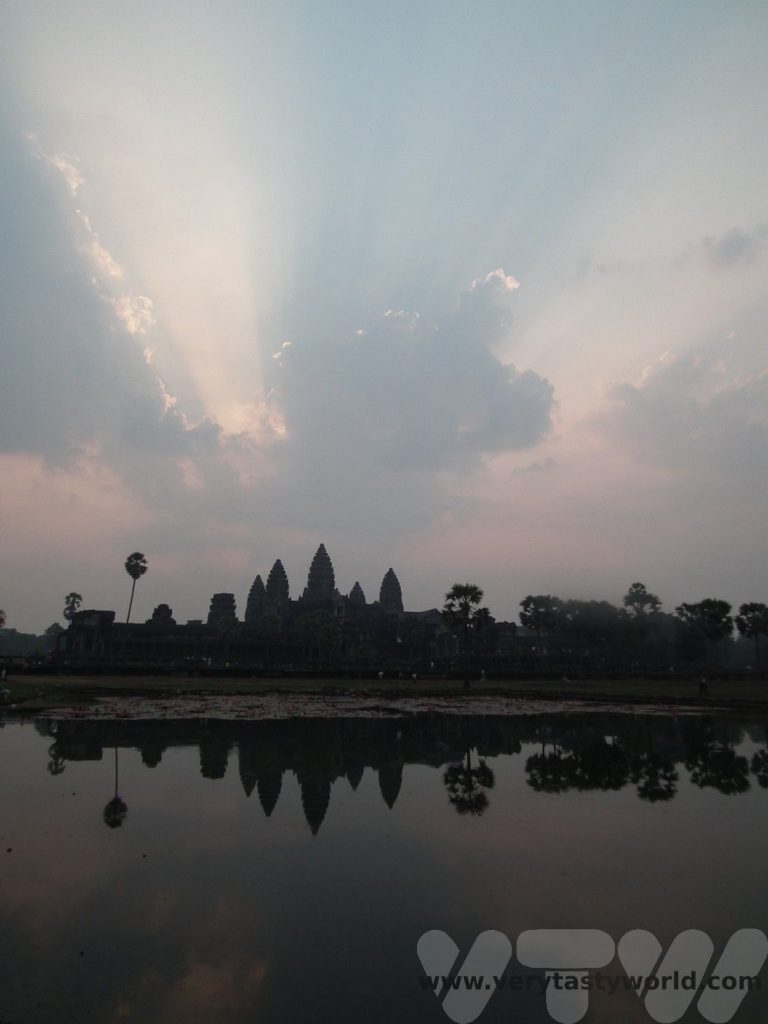
Once the sun has risen and the assembled throng have sighed their admiration, most people will go back to their hotels for breakfast. If you have your breakfast with you, you can enjoy it whilst admiring the view before the temple itself opens and then be first – or at least amongst the first – in the queue to explore the complex properly. It made a huge difference to us – exploring the temple with only a few other people around.
As time goes by, it’s a possibility that increasing numbers of visitors will cotton on to this tactic so it’s always worth checking with the guides or your hotel to find out when is the best time to visit. And, having enjoyed a peaceful exploration of Angkor Wat, when we went into Angkor Thom the Bayon was swarming with visitors.
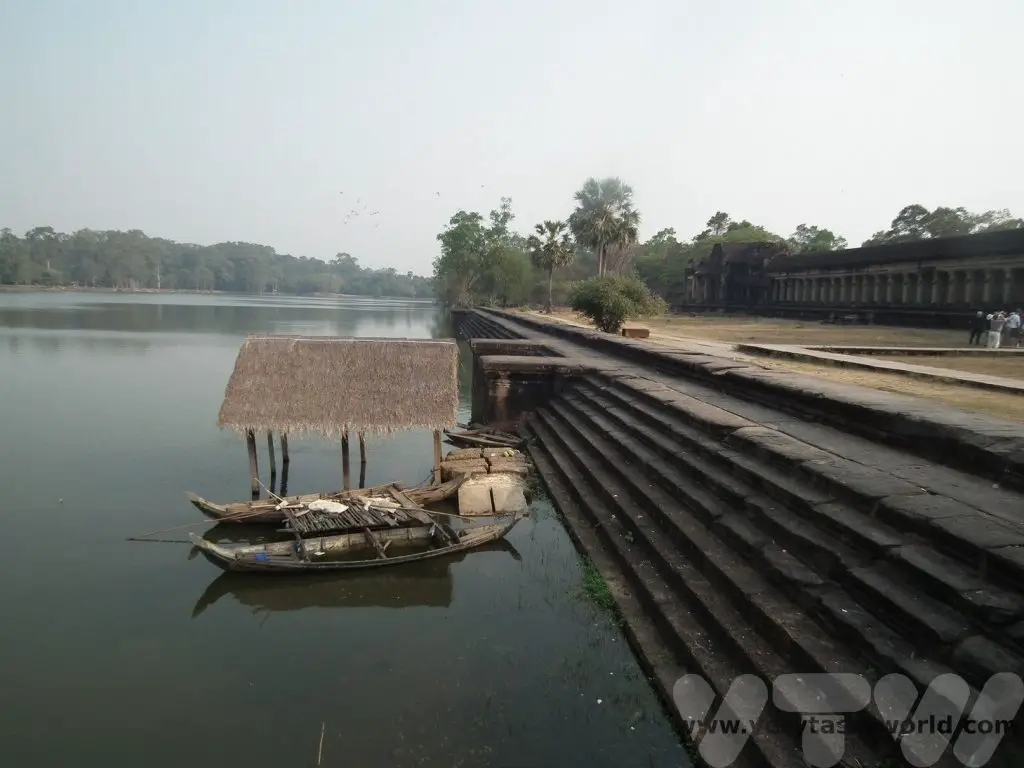
The Angkor Wat complex is surrounded by a large moat.
The temple itself is located on a raised terrace with three galleries, each increasing in height, surrounding a central tower.
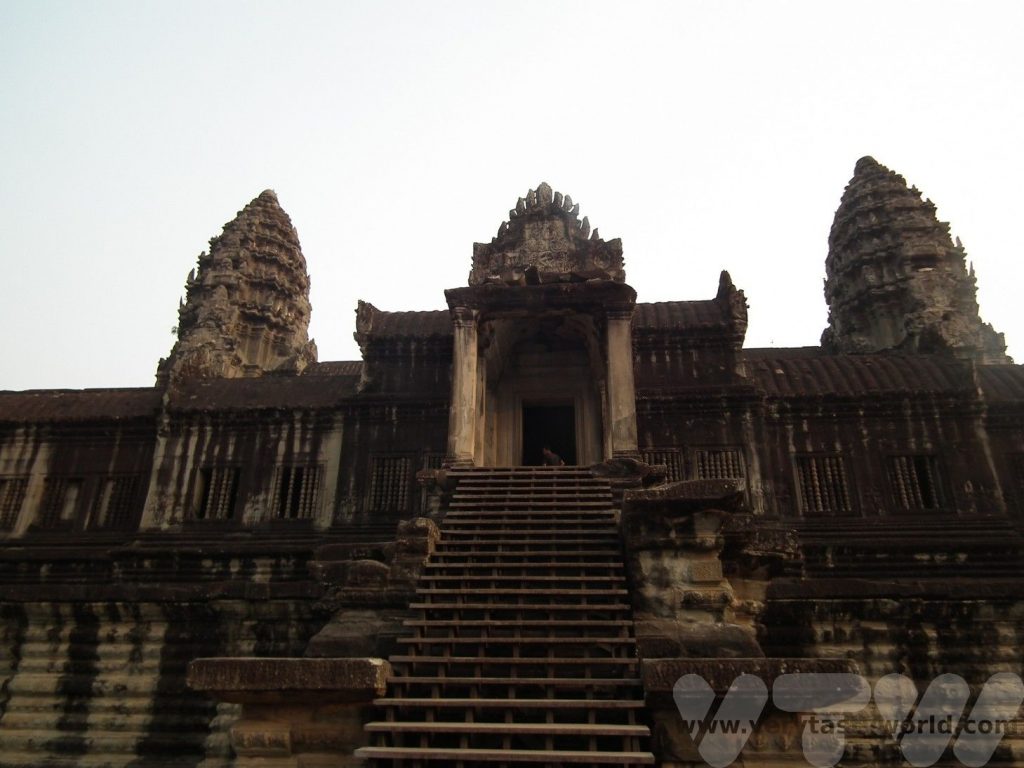
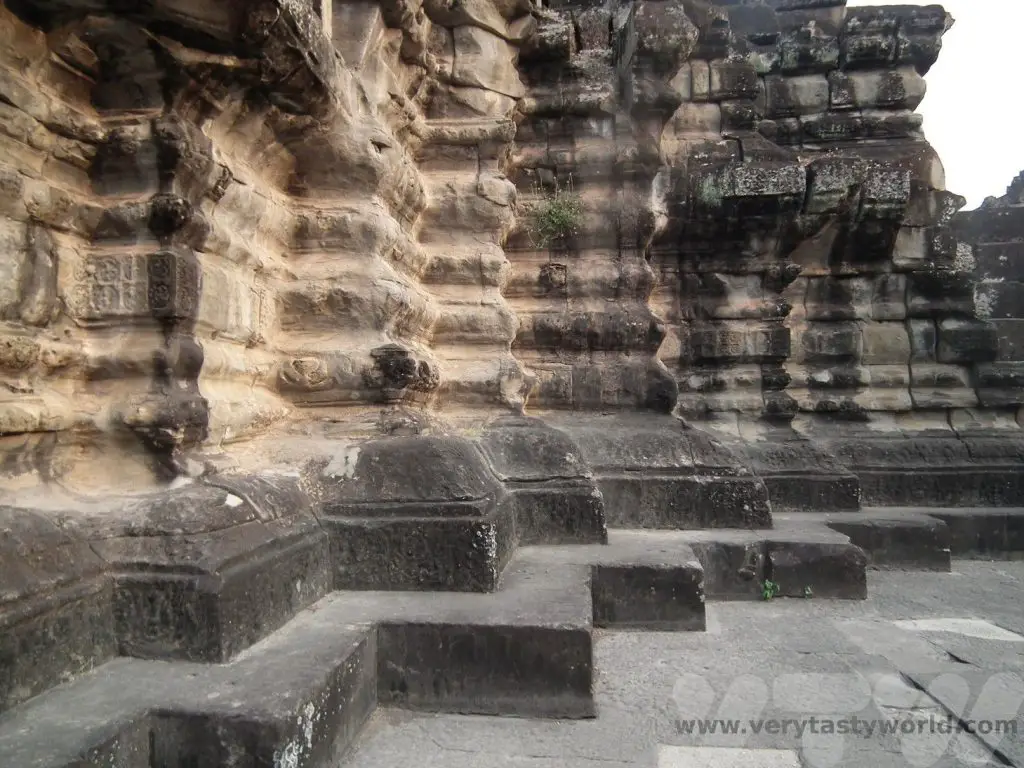
Each corner of the temple has a tower.
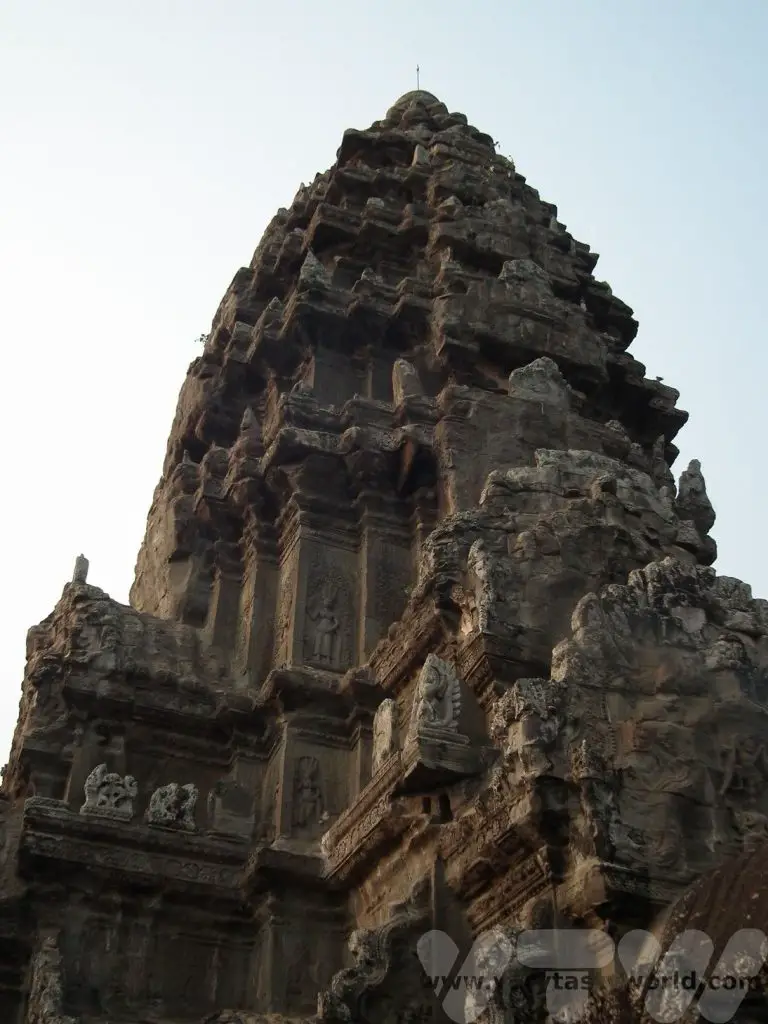
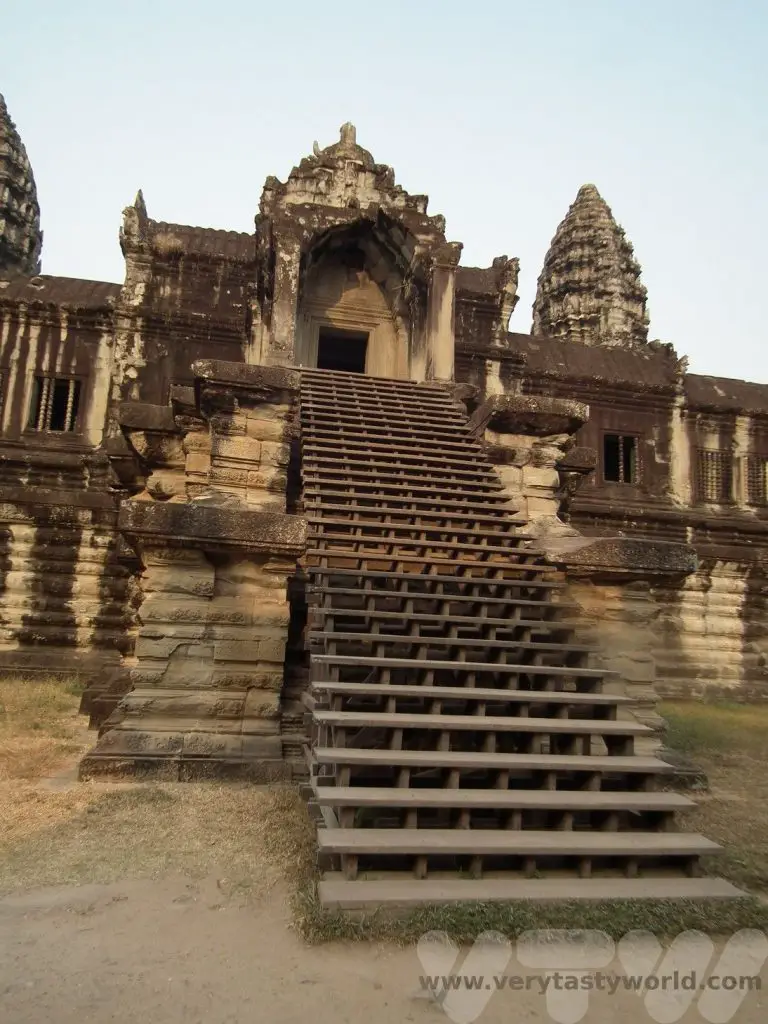
The temple façade is covered with beautiful and intricate bas-relief carvings, showing gods and figures from Buddhist and Hindu scriptures, even depicting scenes from the Hindu texts the Mahabarata and the Ramayana. The carvings were created with the intention of viewing them in an anti-clockwise direction.
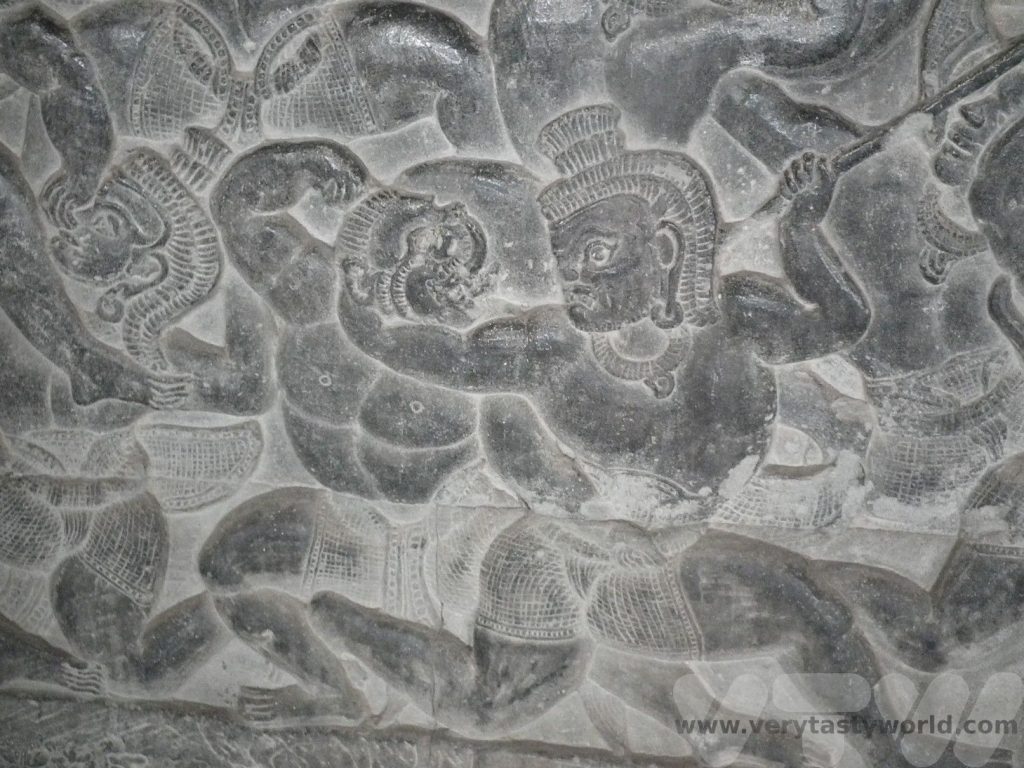
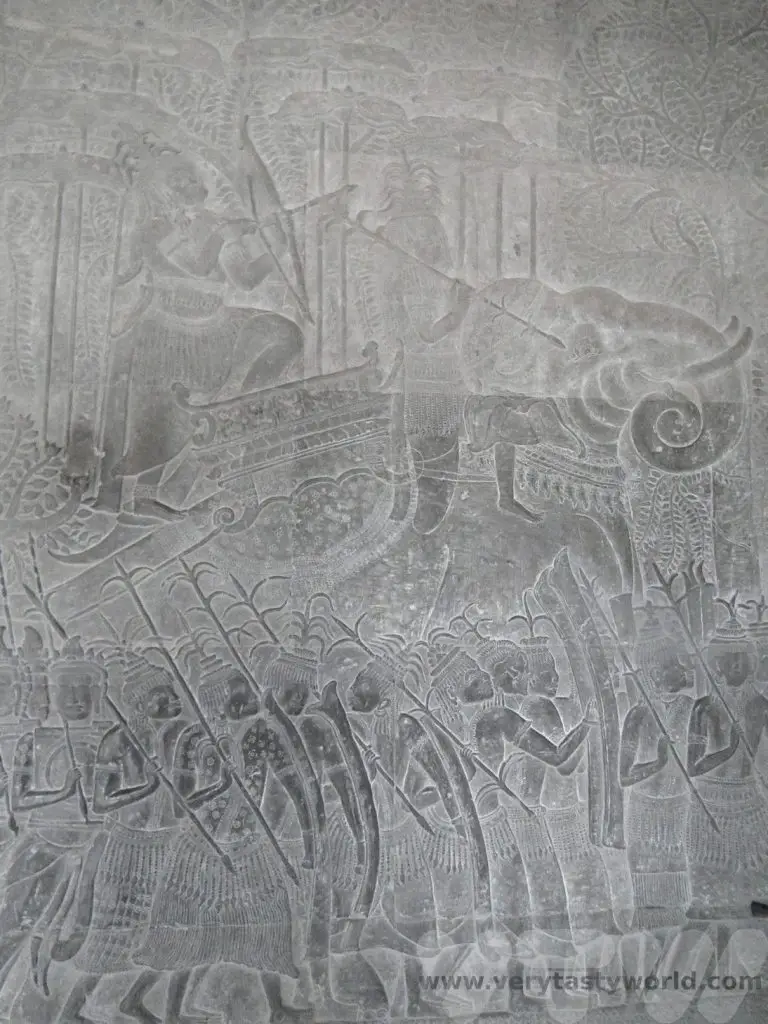
It is possible to enter the central tower. We were quite surprised to find images of Budhha inside, particularly as Angkor Wat was constructed as a Hindu temple.
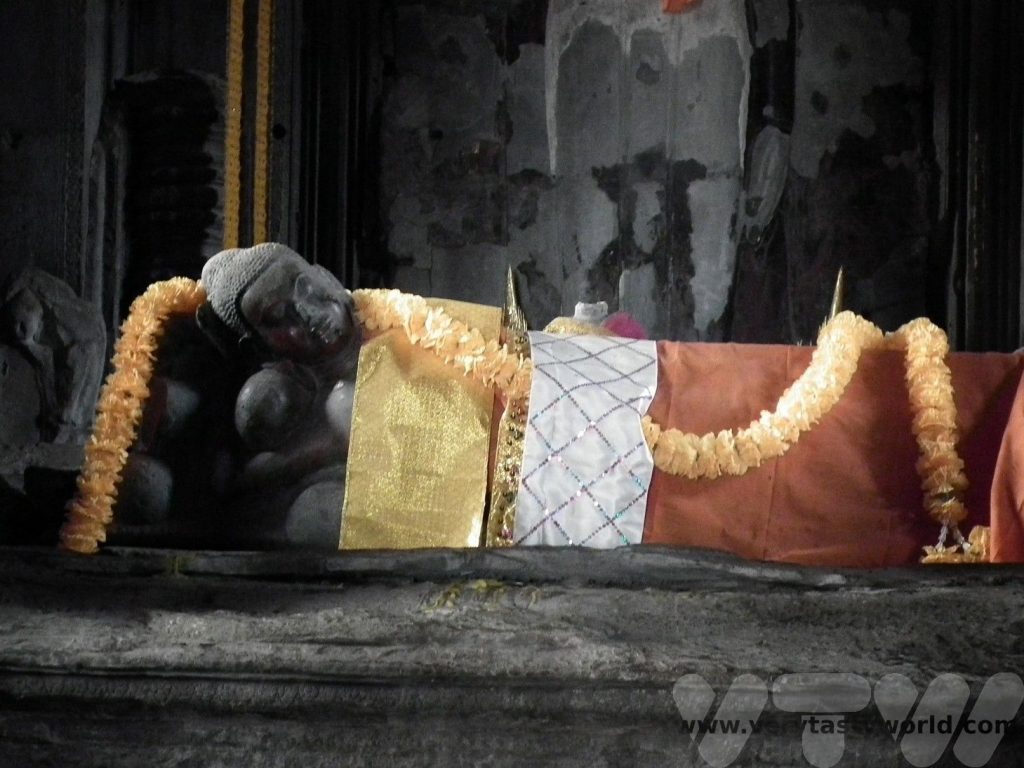
Angkor Thom
Angkor Thom was our next stop. Located a couple of kilometres away from Angkor Wat, it was the final capital city of the Khmer Empire. Established in the late 12th century by King Jayavarman VII, it covers an area of 9km² and was the most enduring of all the sites. Jayavarman was a Buddhist so the temples at Angkor Thom were dedicated to Buddhism. Indeed, during the king’s reign the Khmer people converted from Hinduism to Buddhism.
Angkor Thom includes sights such as the South Gate, a wonderful way to enter the complex, with its grand – and quite grotesque – guardians of the bridge as you cross the moat.
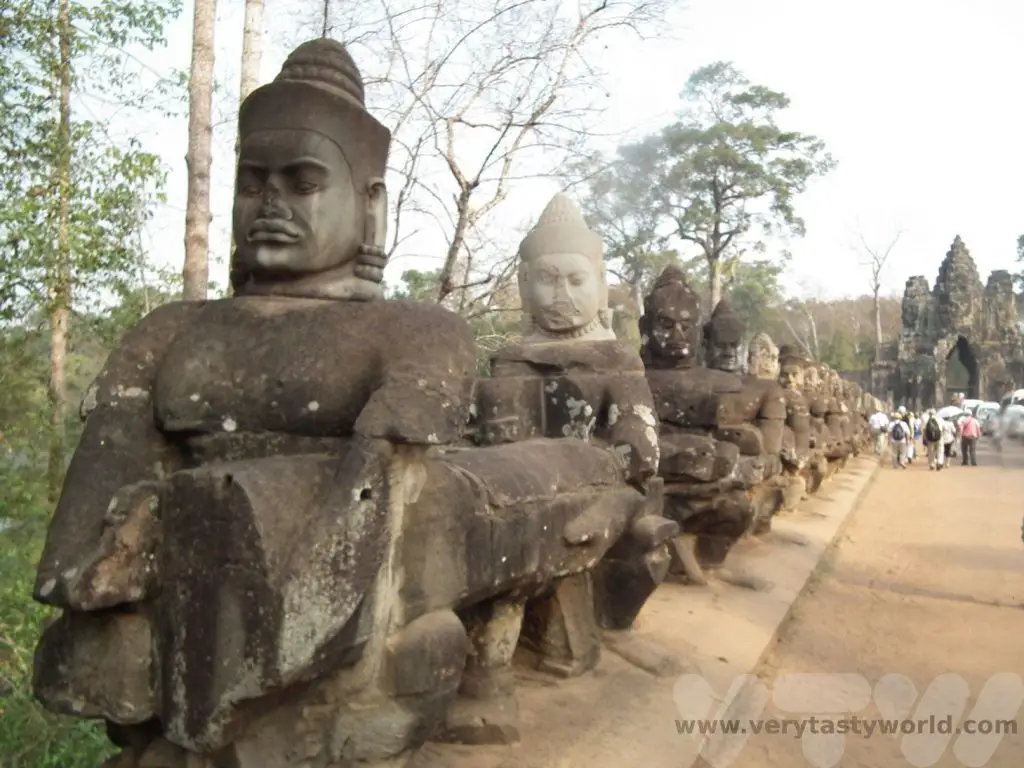
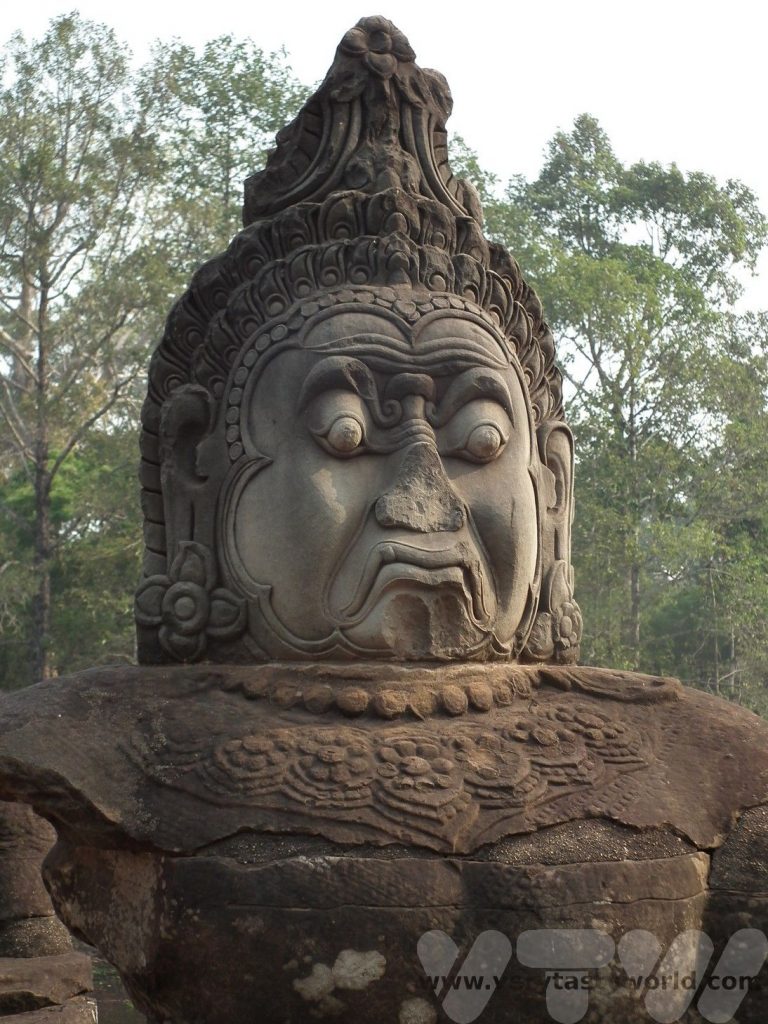
The Bayon is a remarkable structure. It is covered with the stone heads of Bodhisattva Avilokiteshvara, smiling serenely and was the last great temple built at Angkor.
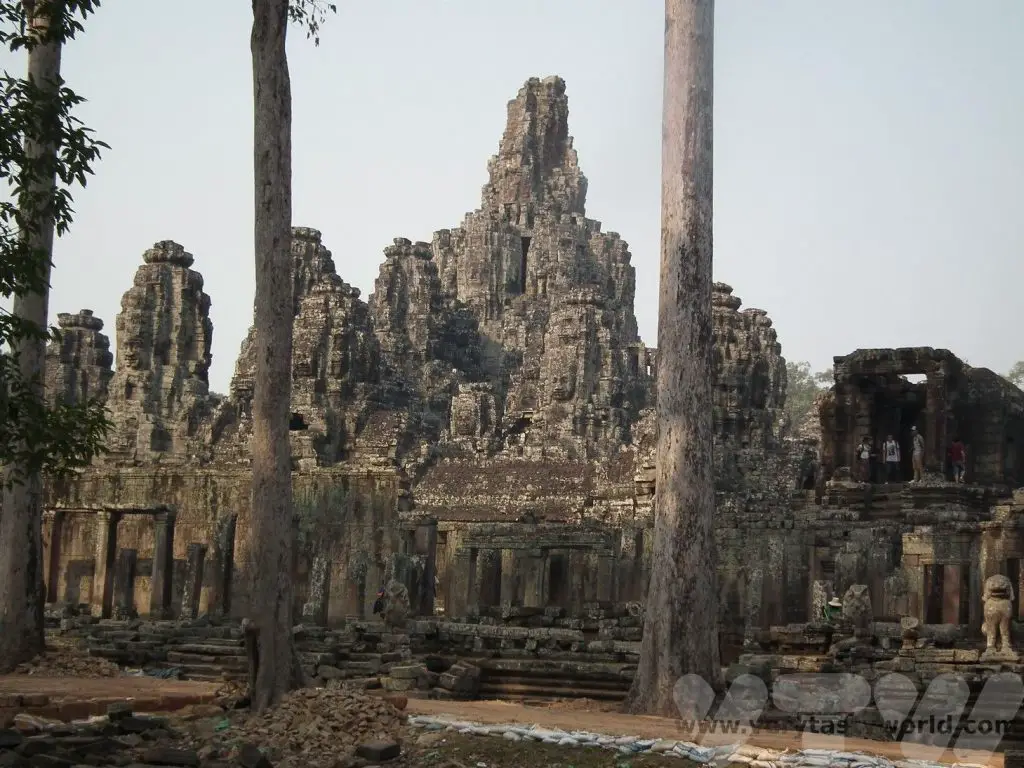
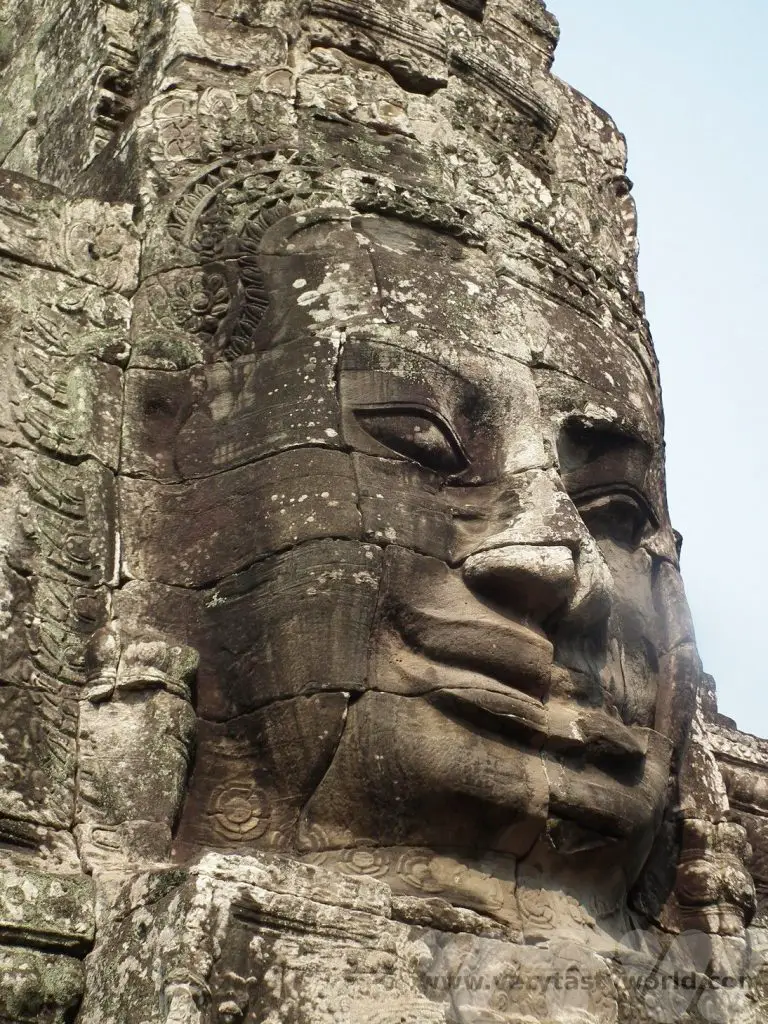
Moving into the Royal Enclosure, …the Terrace of Elephants was originally an extension of the palace of Phimeanakas and was the place from which Jayavarman VII could view his armies as they returned victorious.
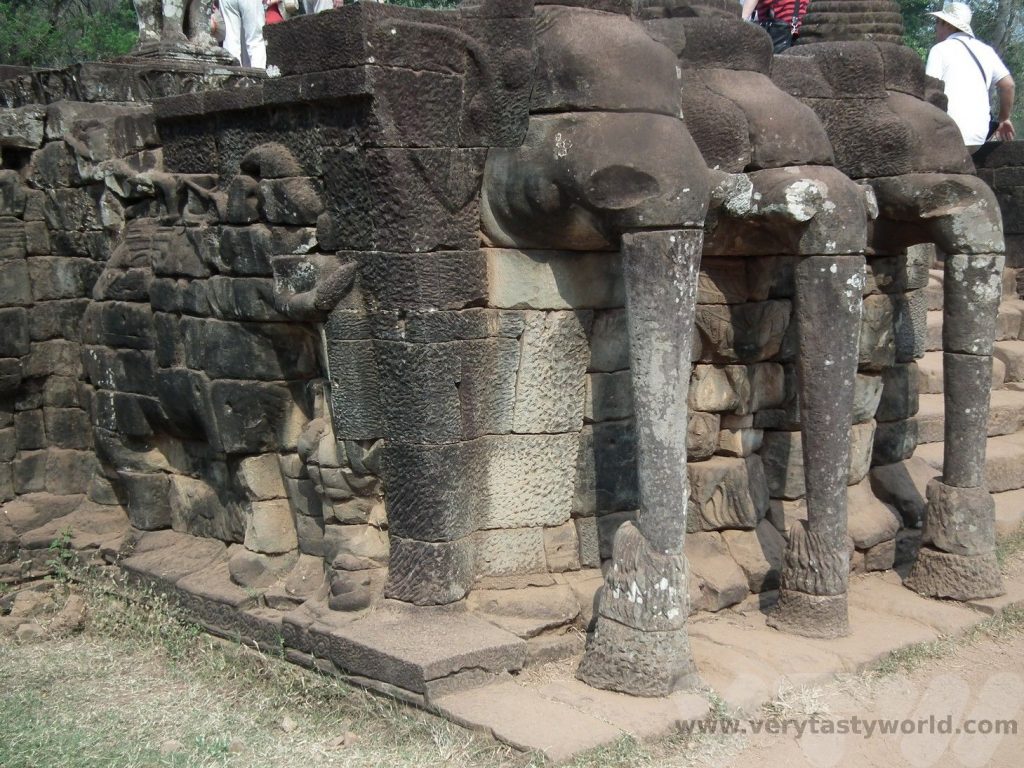
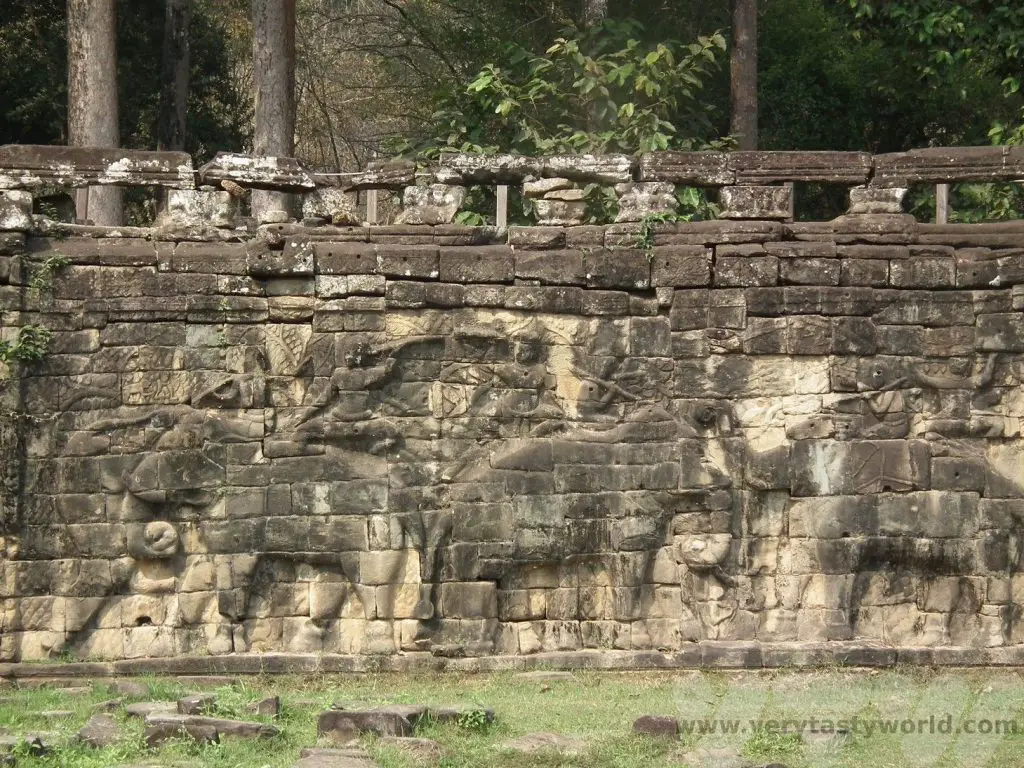
The Terrace of the Leper King was built by Jayavarman VII but the name has an unusual derivation.
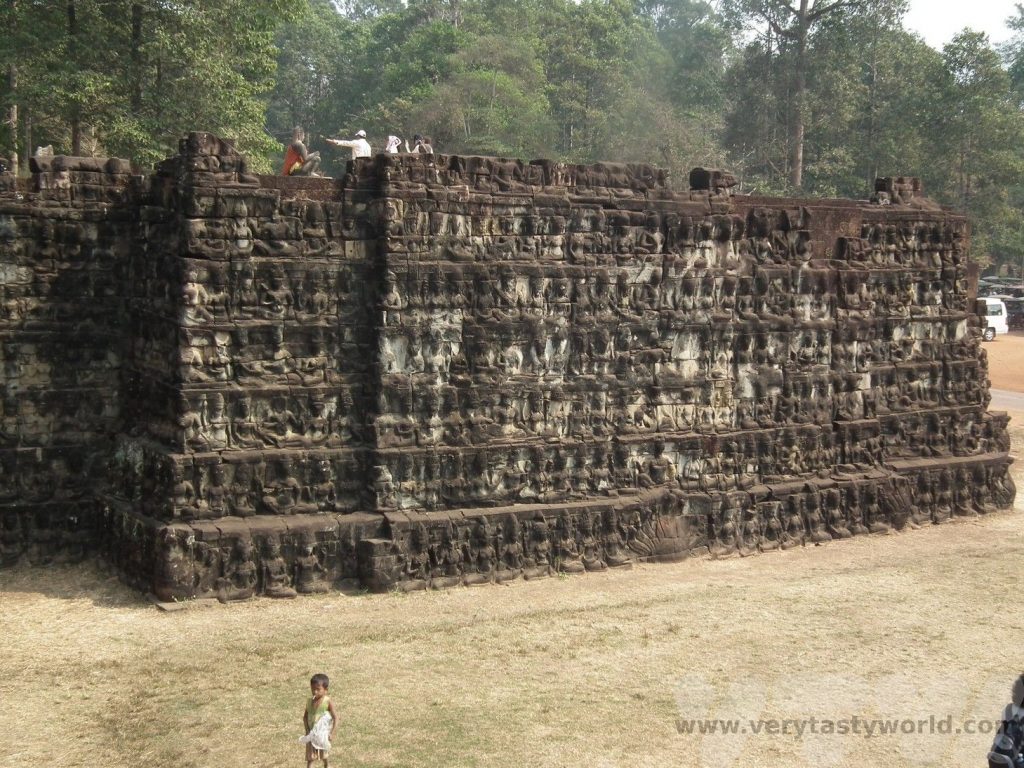
A sculpture found at the site was believed to have been created in the 15th century, had deteriorated and was covered in moss which gave the appearance of leprosy. There is also a link to the legend of King Yasovarman I who was believed to have suffered from leprosy.
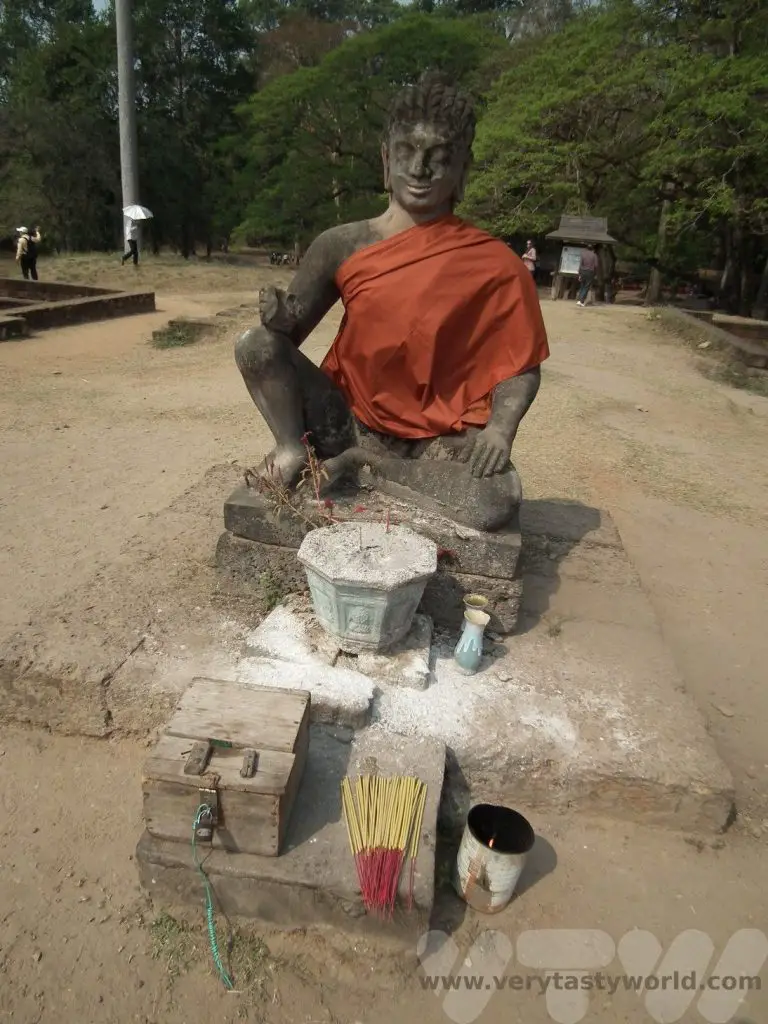
Visiting Angkor Wat – Other Temples to Explore
While Angkor Wat and Angkor Thom are the main attractions in the area there are so many other temples and buildings to visit.
Ta Prohm
A particular favourite of ours was Ta Prohm, just down the road from Angkor Thom.
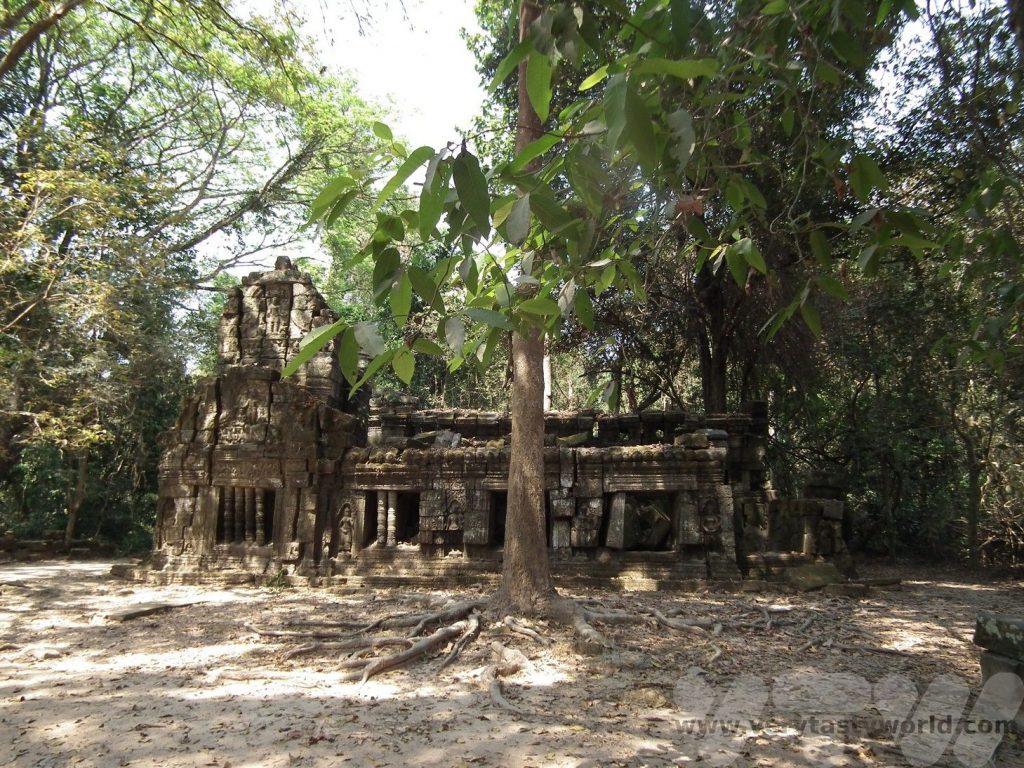
It was another temple constructed at the behest of Jayavarman VII (the creator of Angkor Thom) in the late 12th century and was originally called Rajavcihara. Apparently designed for the king’s mother it was a lavish temple, once covered in pearls, precious stones and gold, and home to over 12,000 people. However it was abandoned after the fall of the Khmer empire and lost to the jungle for centuries.
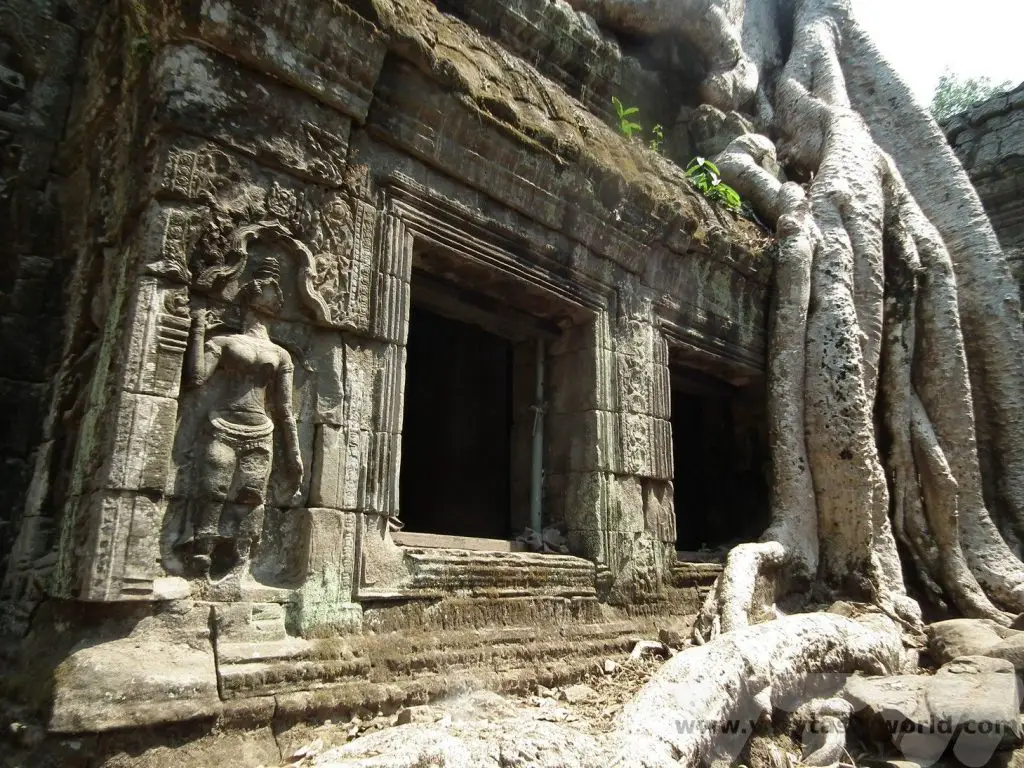
The design of the temple is typically Khmer, with a concentric design of square or rectangular temples – the enclosing walls encasing an inner sanctum. But, unlike many of the other temples in the region, this hasn’t been cleared and restored and the trees of the jungle have remained, forming a beautiful symbiosis with the buildings.
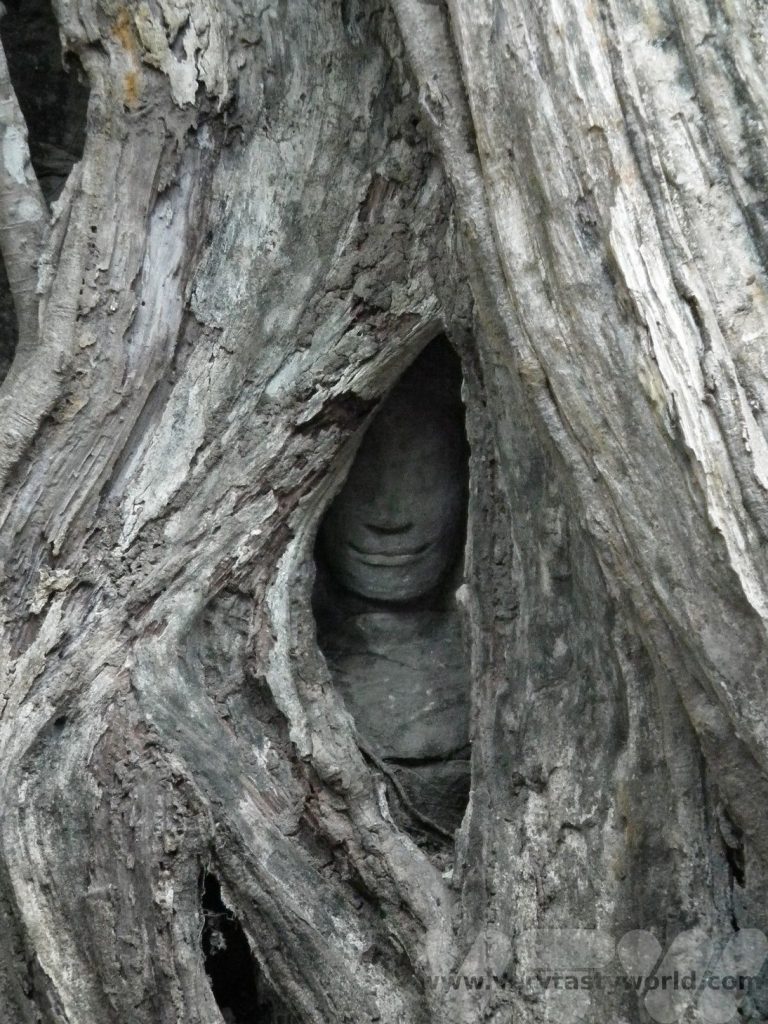
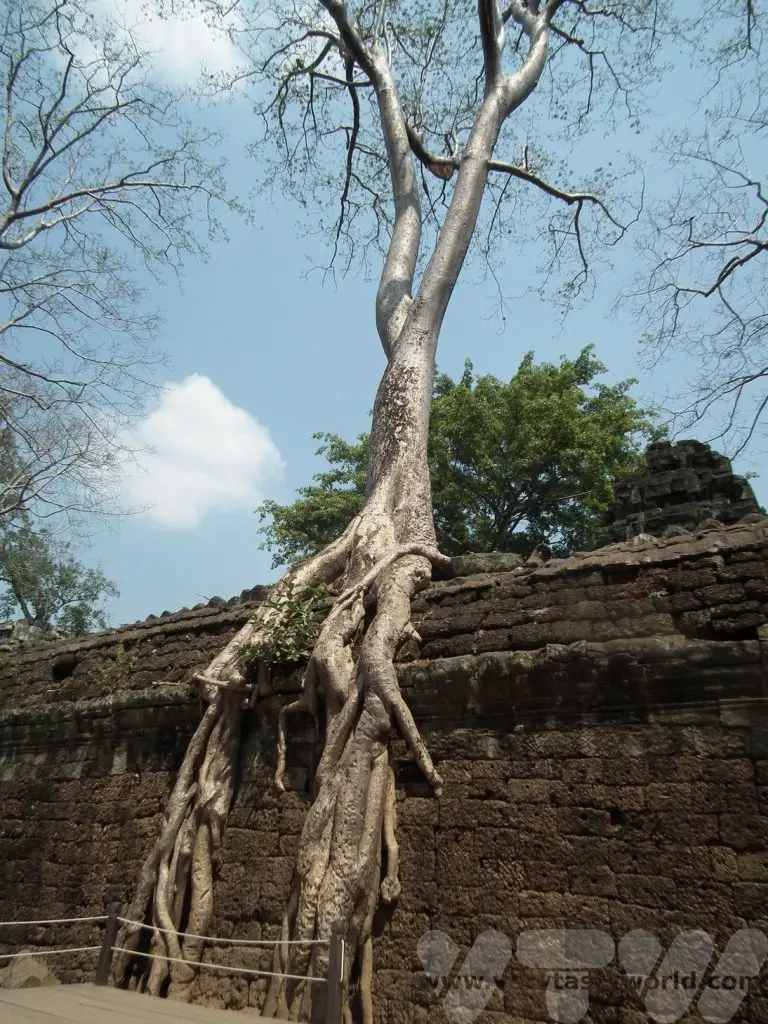
Banteay Srei
The Khmer Temple of Shiva at Banteay Srei, dating back to the 11th century, is the Citadel of Women. It has some remarkable sandstone decorations, friezes and lintels which are some of the best preserved in the region.
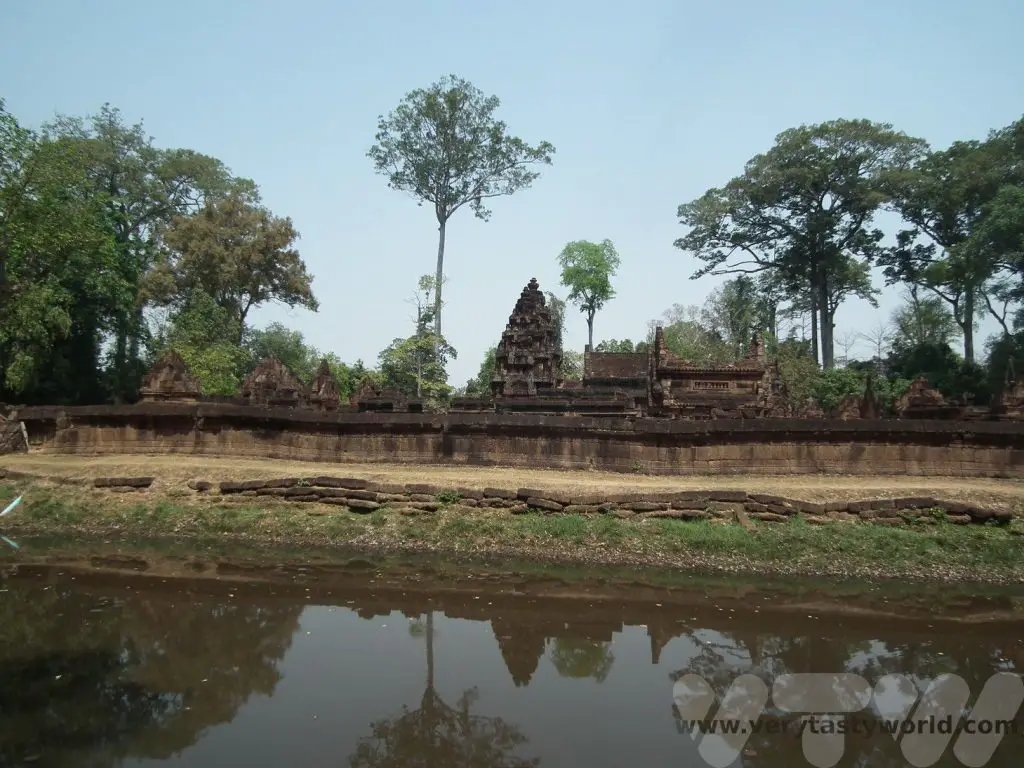
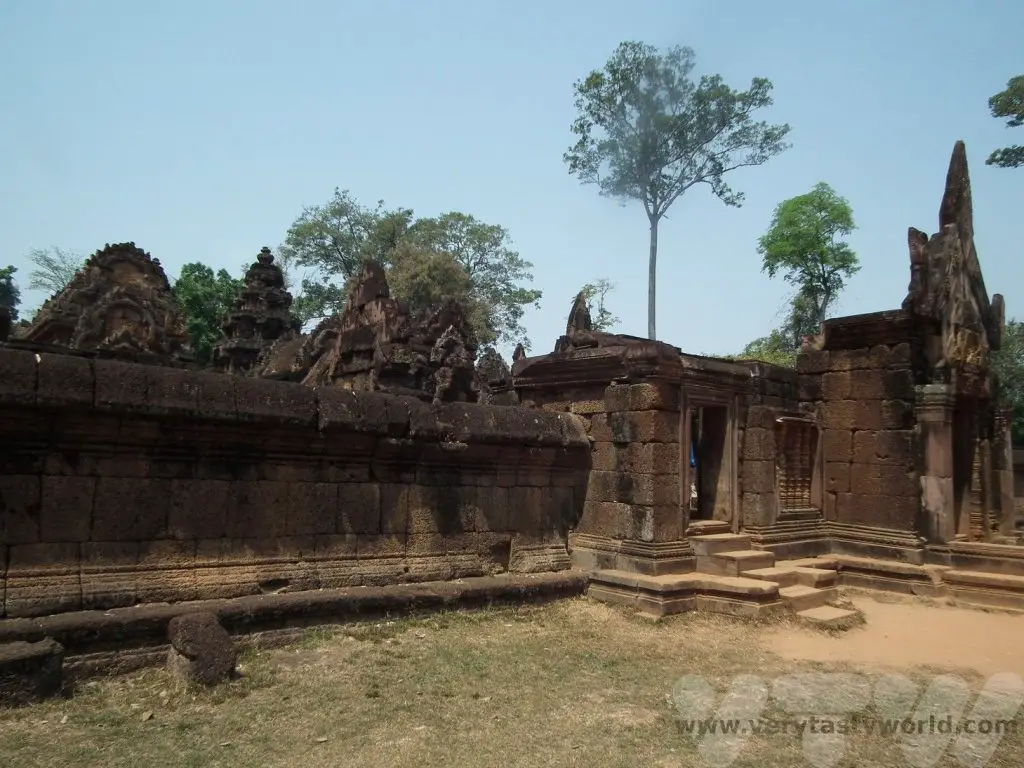
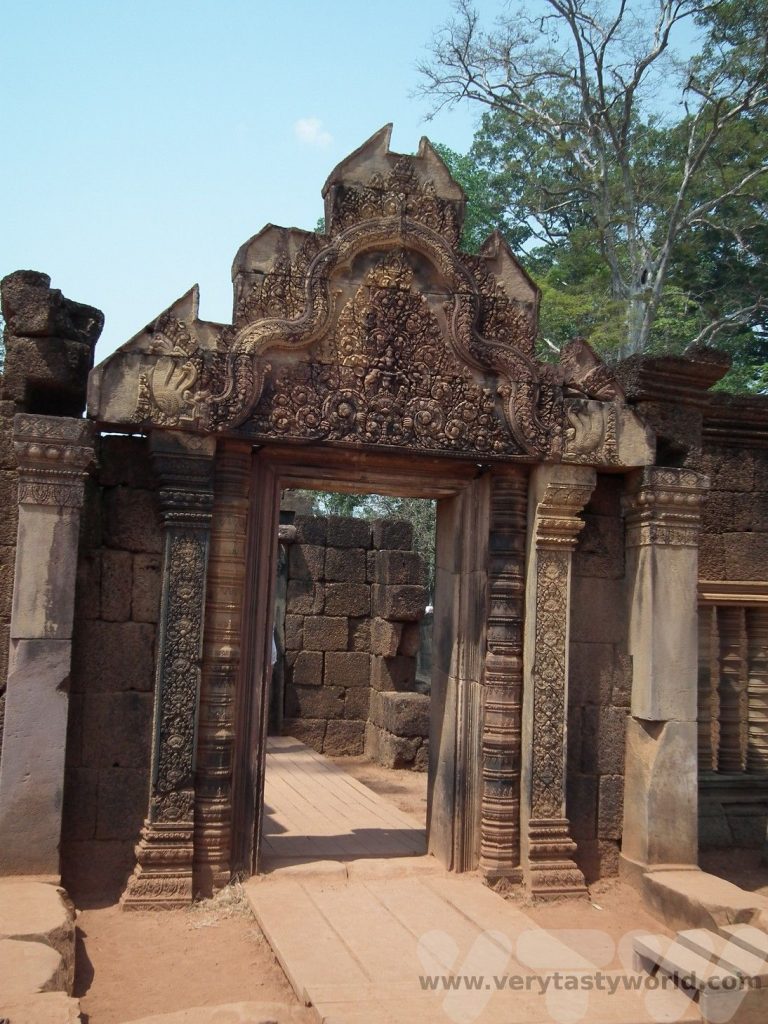
Kbal Spean
Kbal Spean is a Hindu Pilgrimage site set deep in the jungle to the North East of Angkor. It actually pre-dates the Angkor Temples by around 200 years and is the oldest site in the region.
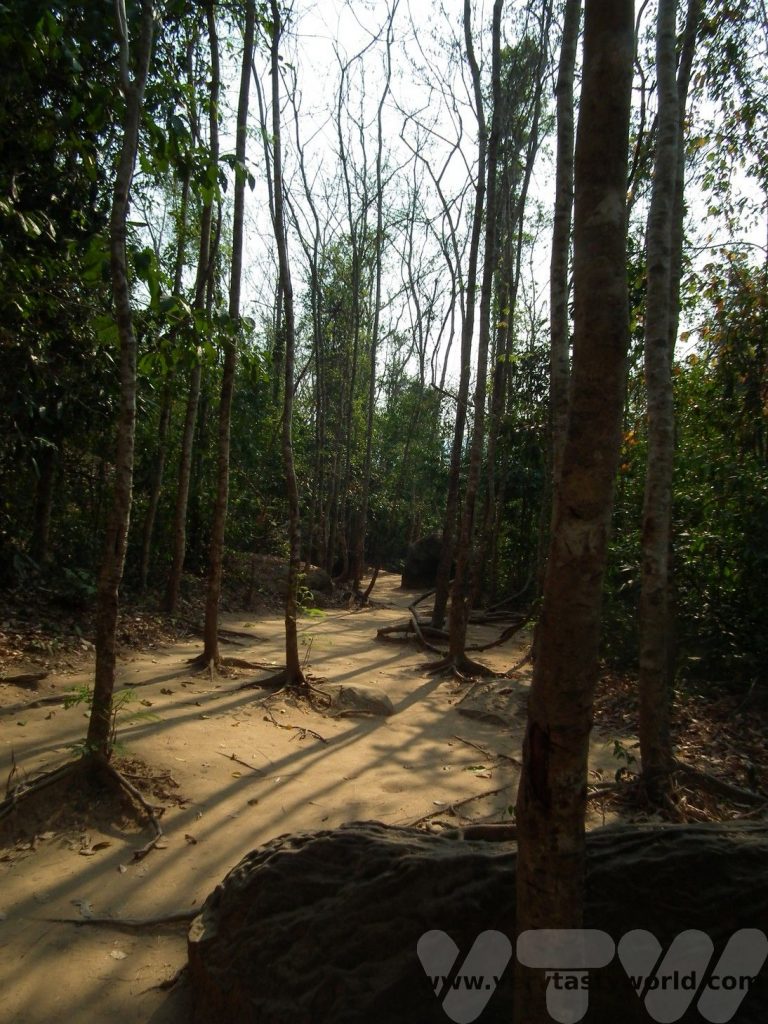
After hiking for around a kilometre through the jungle you reach the River of a Thousand Lingas, amazing sculptures that are actually located in the river bed.
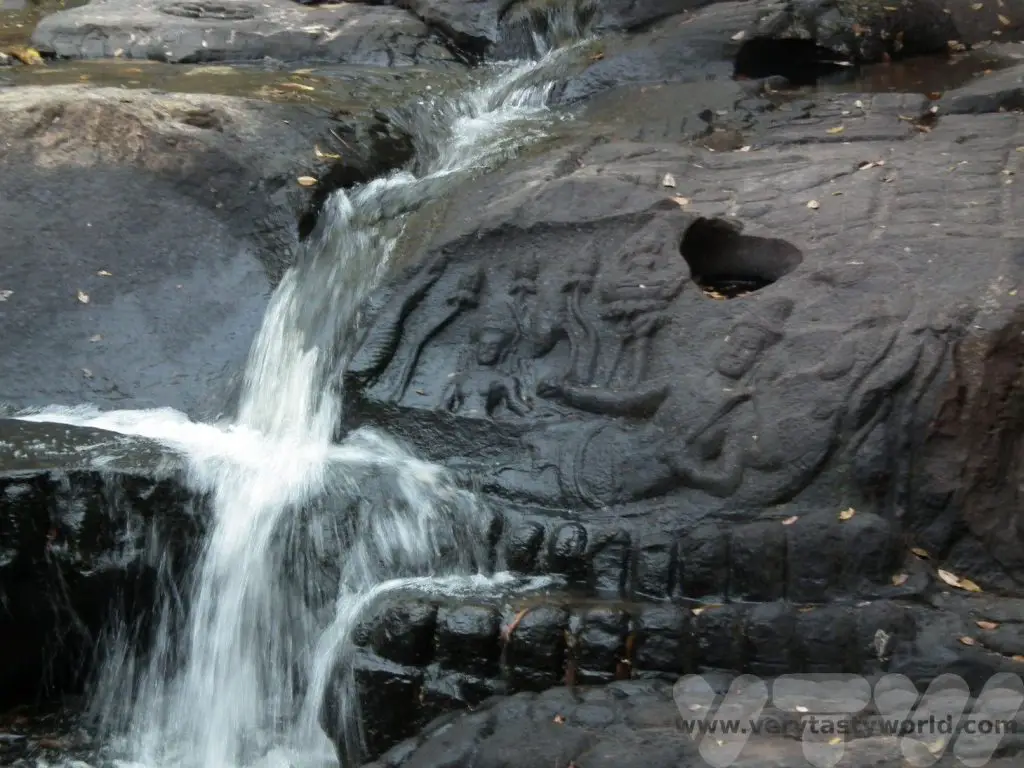
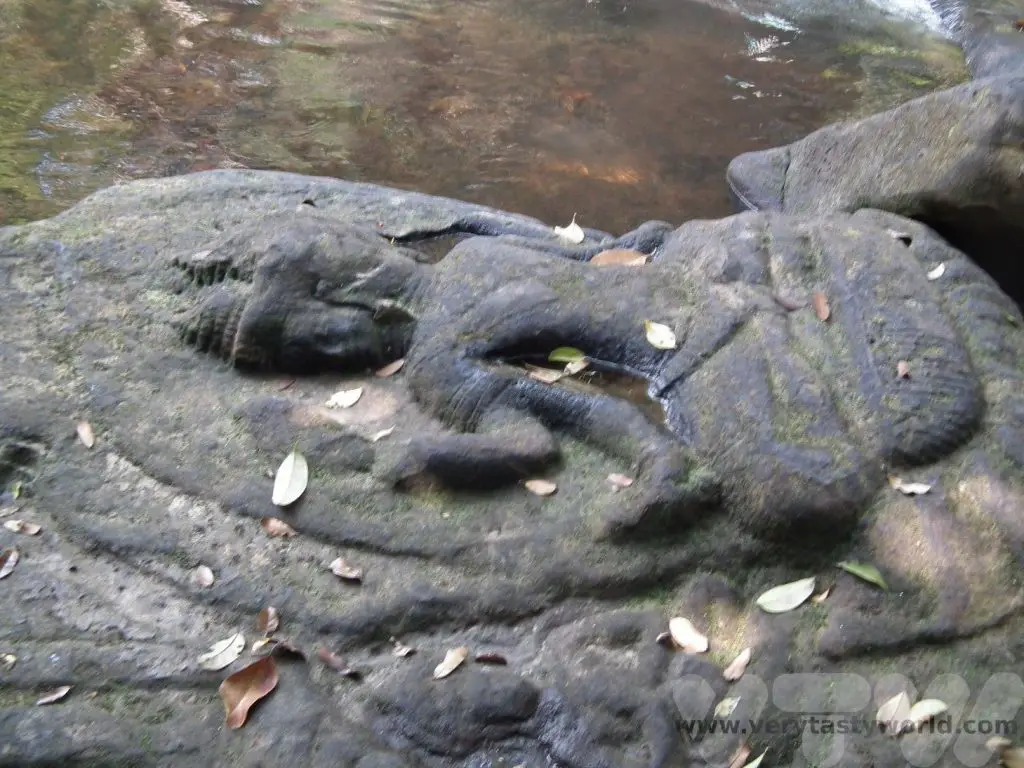
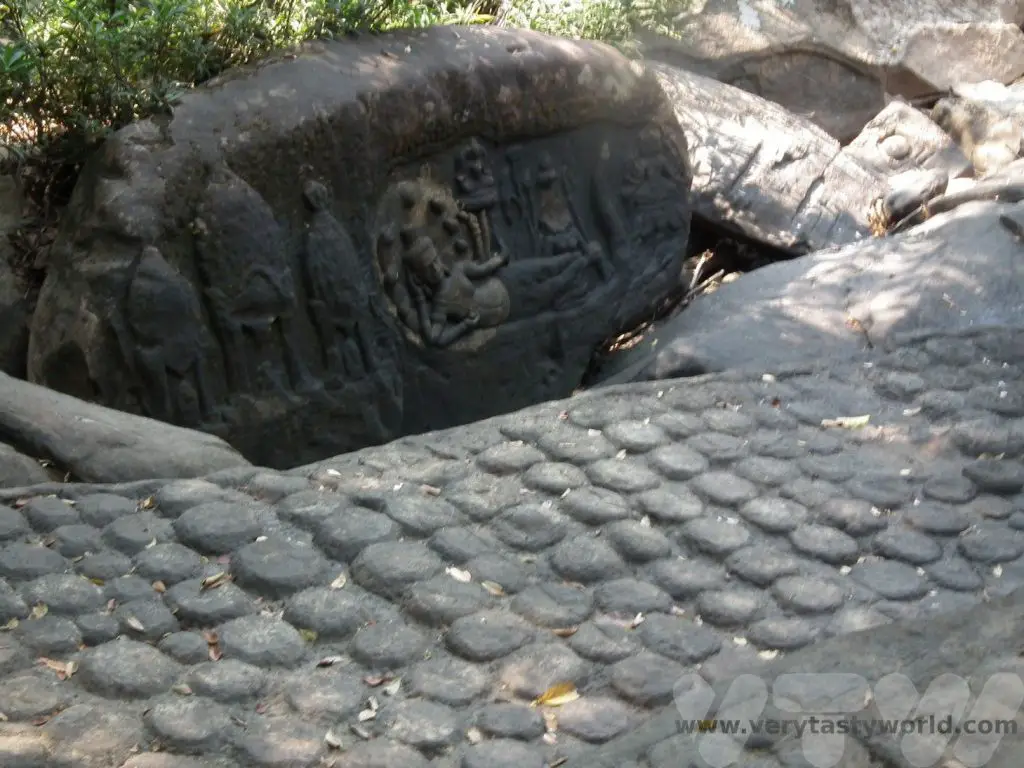
The Roulos Group
And finally, the other temples we visited were the Roulos group which are older and date from the 9th and 10th centuries. They are located around 15km south-east of Siem Reap in the former city of Hariharalaya. King Jayavarman II founded the Khmer empire in 802 CE. His successor was his nephew, Indravarman I, who initiated the construction of the temples here.
Preah Ko was the first. The name means ‘sacred bull.’
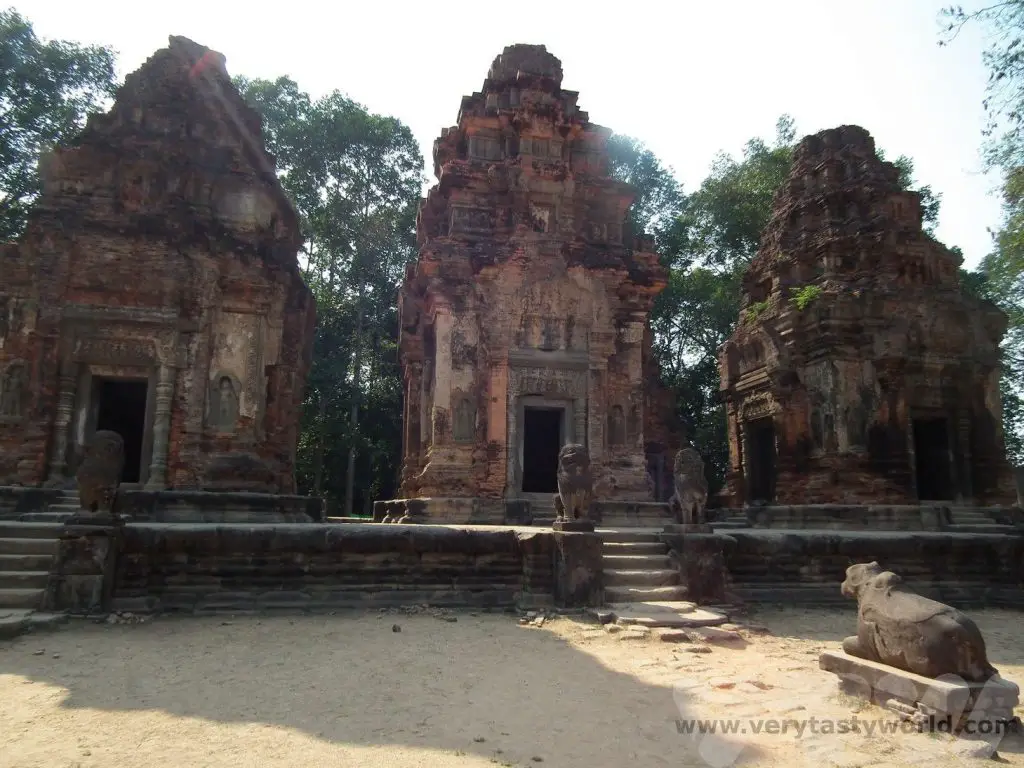
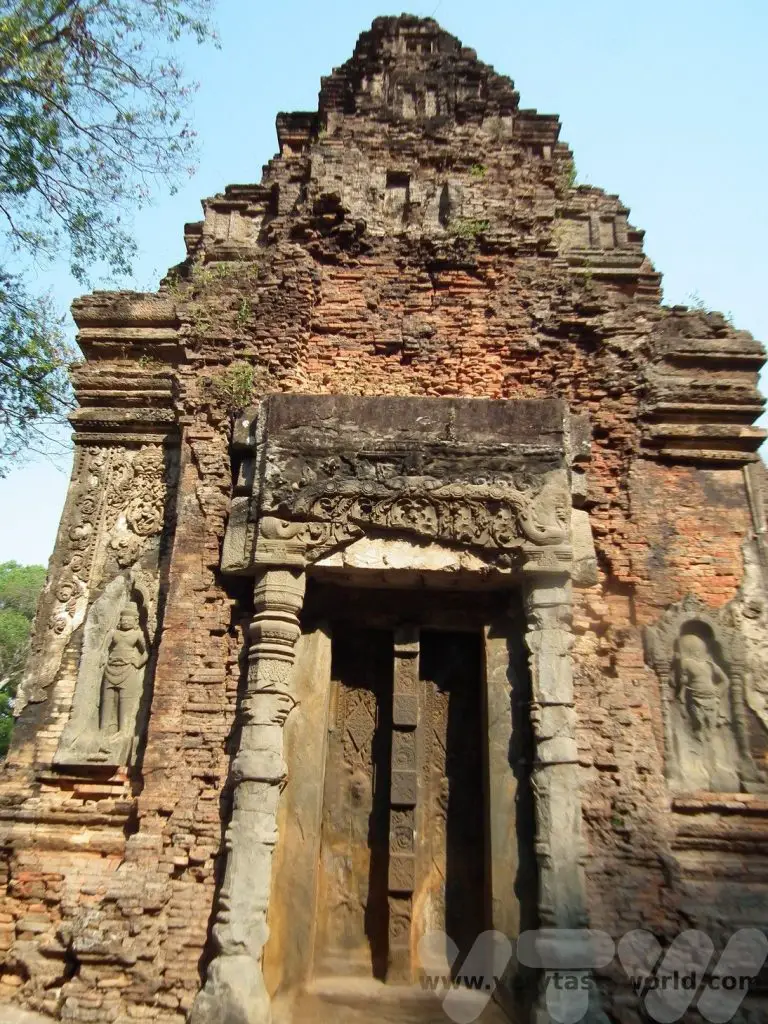
Bakong was next and is considered to be the first Khmer temple mountain. It is the most impressive of the structures in this group. This was King Indravarman’s official temple. The pyramid has five levels and is surrounded by two towers on each of its sides.
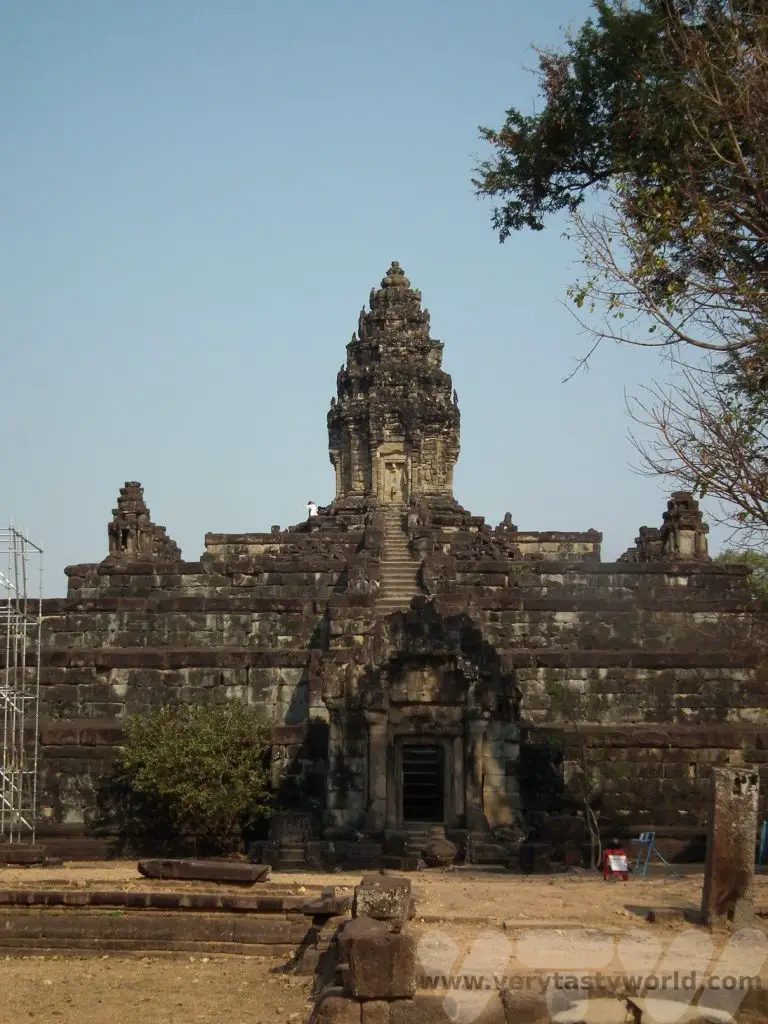
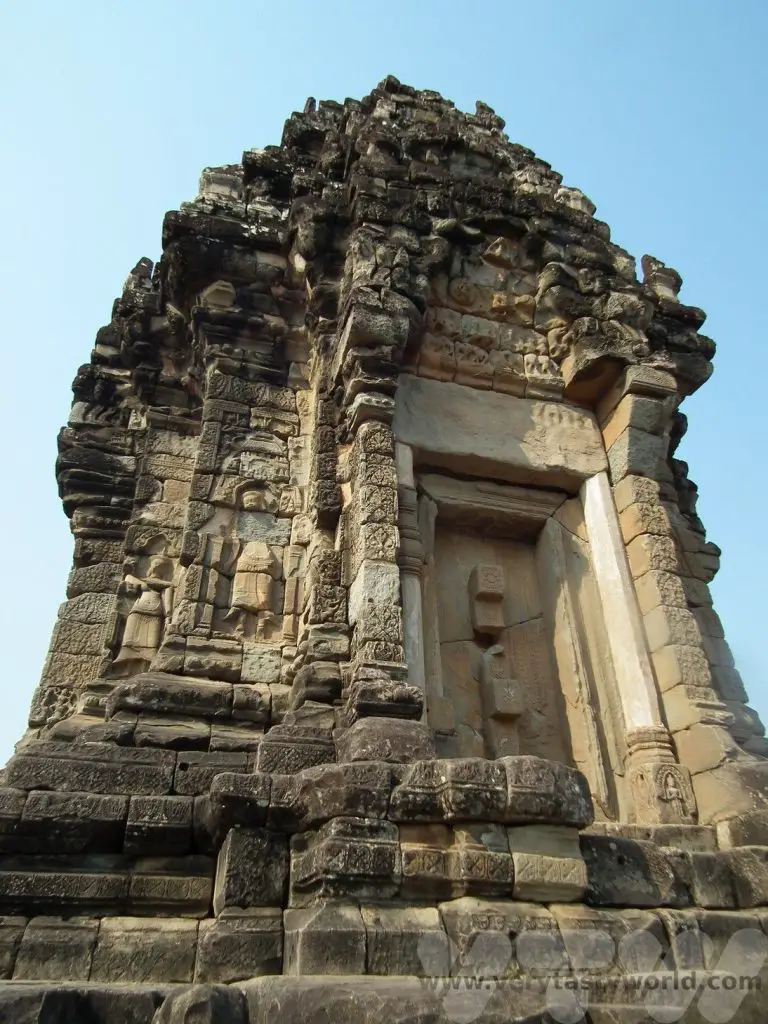
The Lolei temples are grouped together. These are of a brick construction and represented King Yasovarman’s parents and grandparents. The taller towers are for his grandparents and the front towers are for the males in the family.
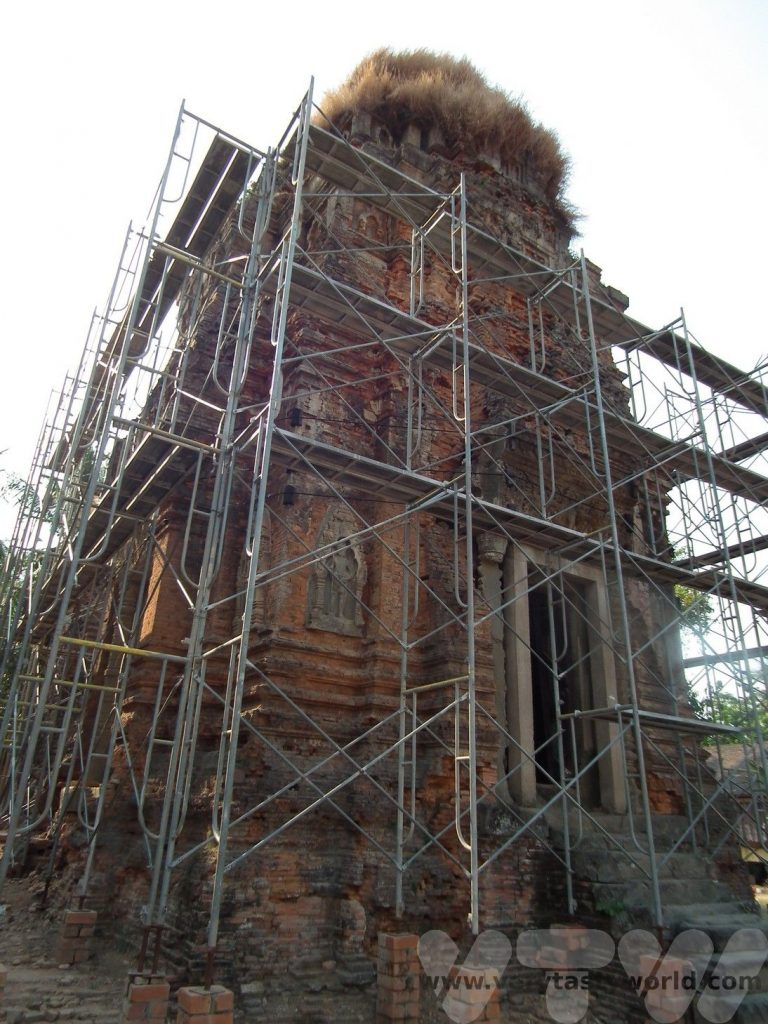
Après Sightseeing – Siem Reap
After all the sightseeing we would wander into Siem Reap. Pub Street is the place to find restaurants and bars in the evening – perfect for relaxing after a long day’s sightseeing. It is possible to visit markets, enjoy cookery courses and, of course, eat traditional Cambodian cuisine. This platter included spring roll, mango salad, fish amok (a fragrant curry), green curry, cha tu kuong (stir-fried water spinach) and steamed rice.
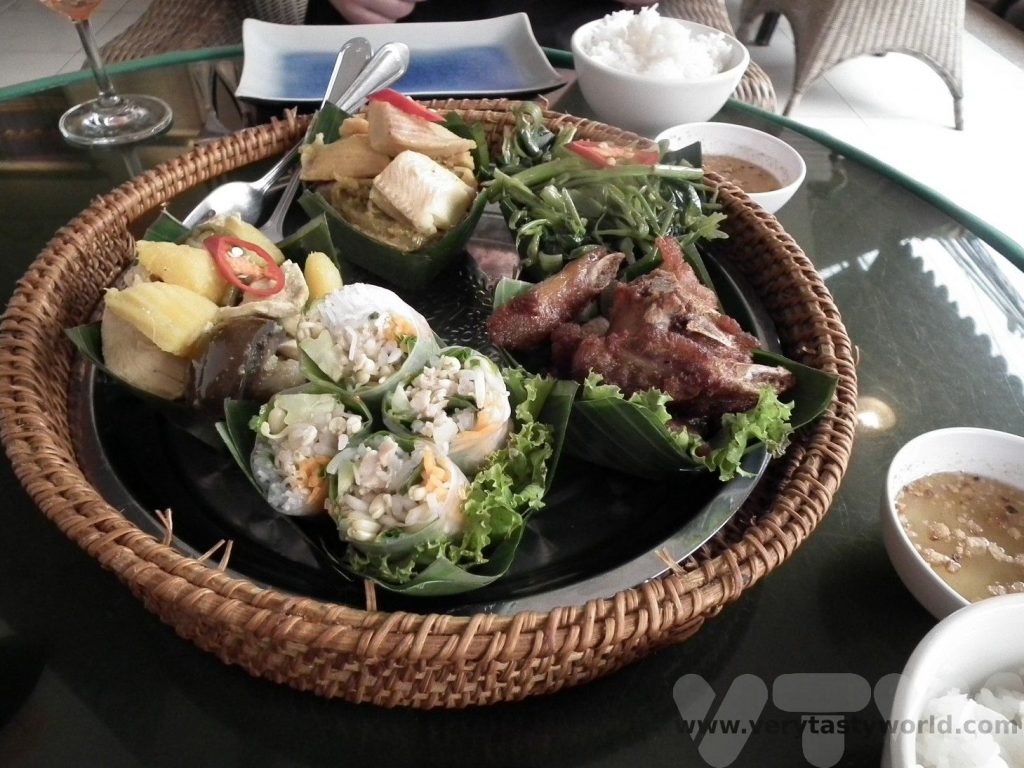
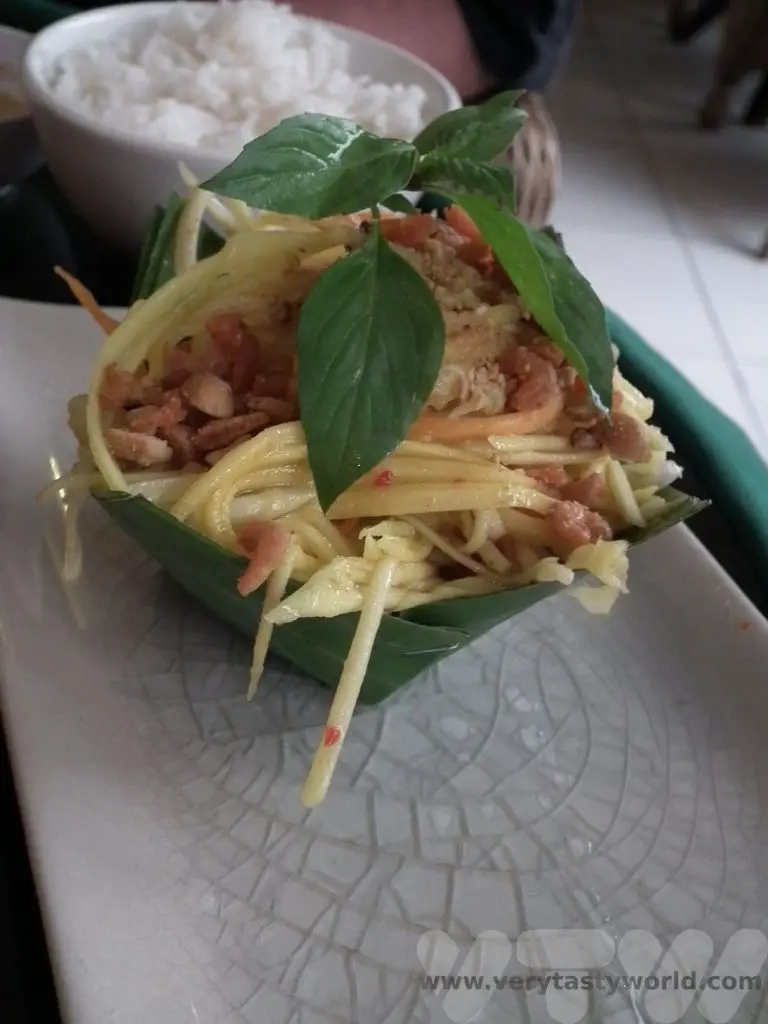
Other Excursions
Although our primary purpose of the trip was to visit Angkor Wat, there are other activities in the area. Siem Reap is located close to Lake Tonle Sap, the largest freshwater lake in South East Asia. It’s a fascinating lake because it is part of the Mekong river system. The Mekong and surrounding catchment feeds it during the wet season and the lake’s water level will rise to around 11m. But during the dry season the lake feeds the Mekong and water levels can get as low as 1m before the rains arrive. It’s a lake where local people live and work and it’s possible to take a boat trip and visit some of the floating villages.
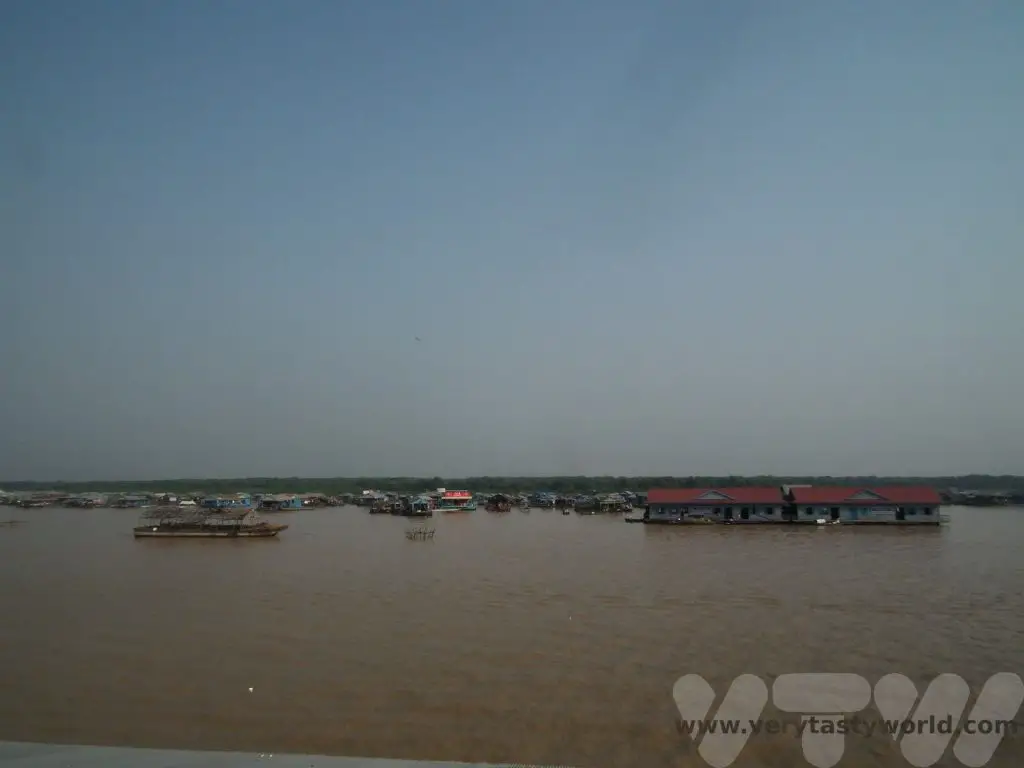
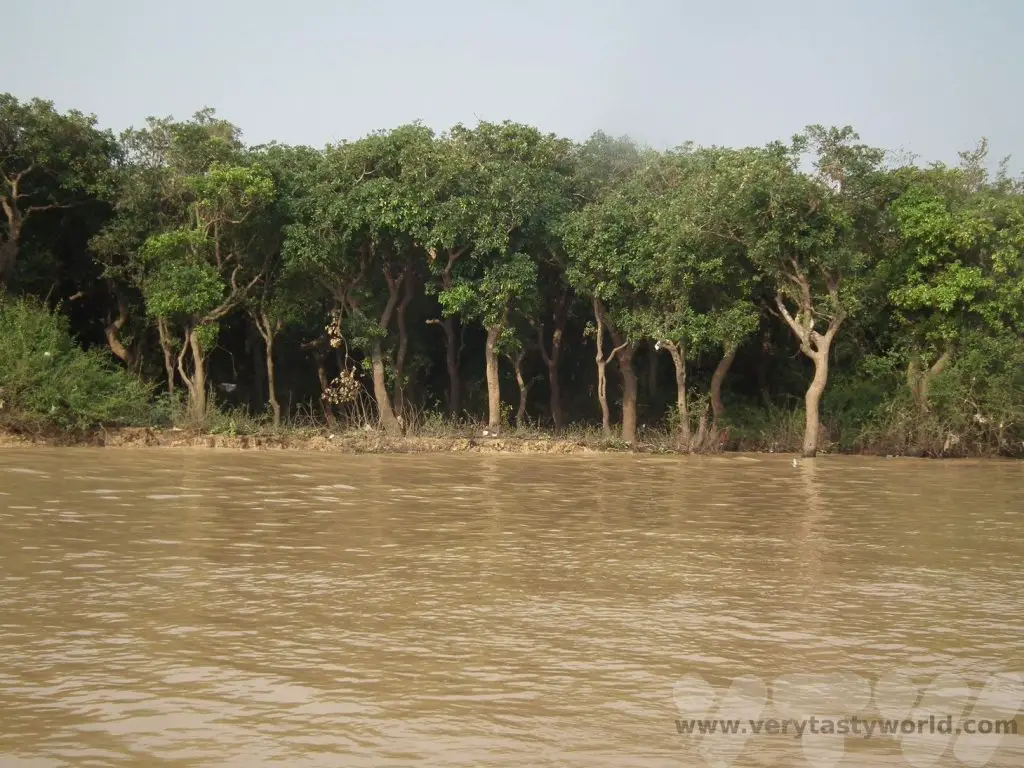
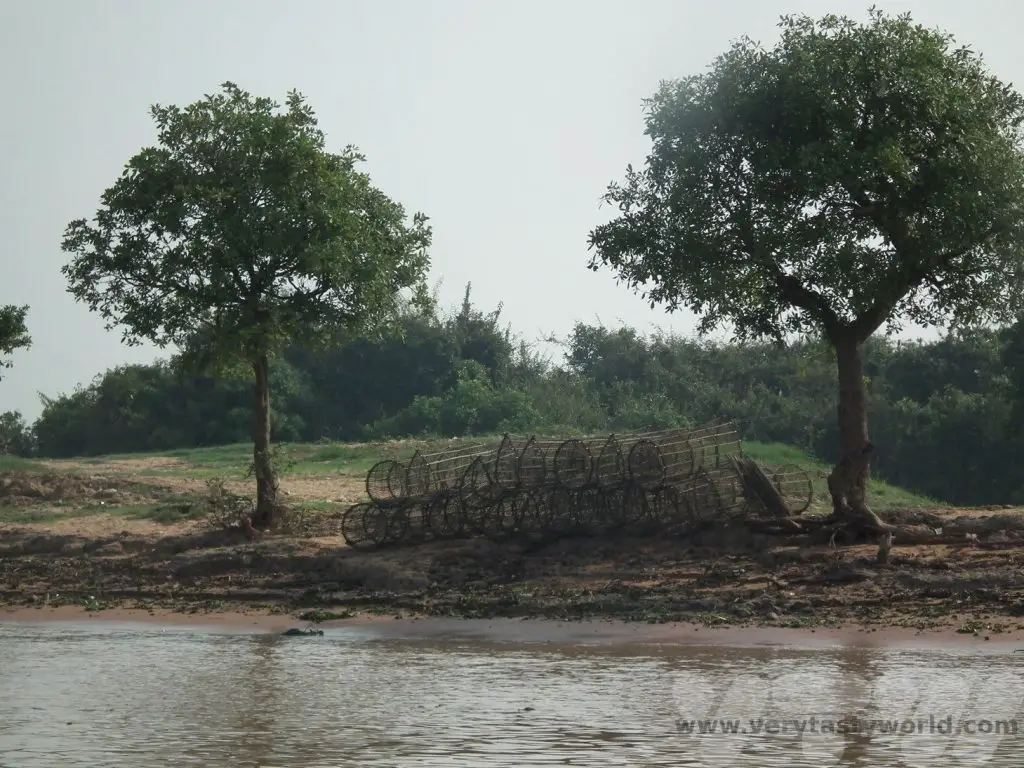
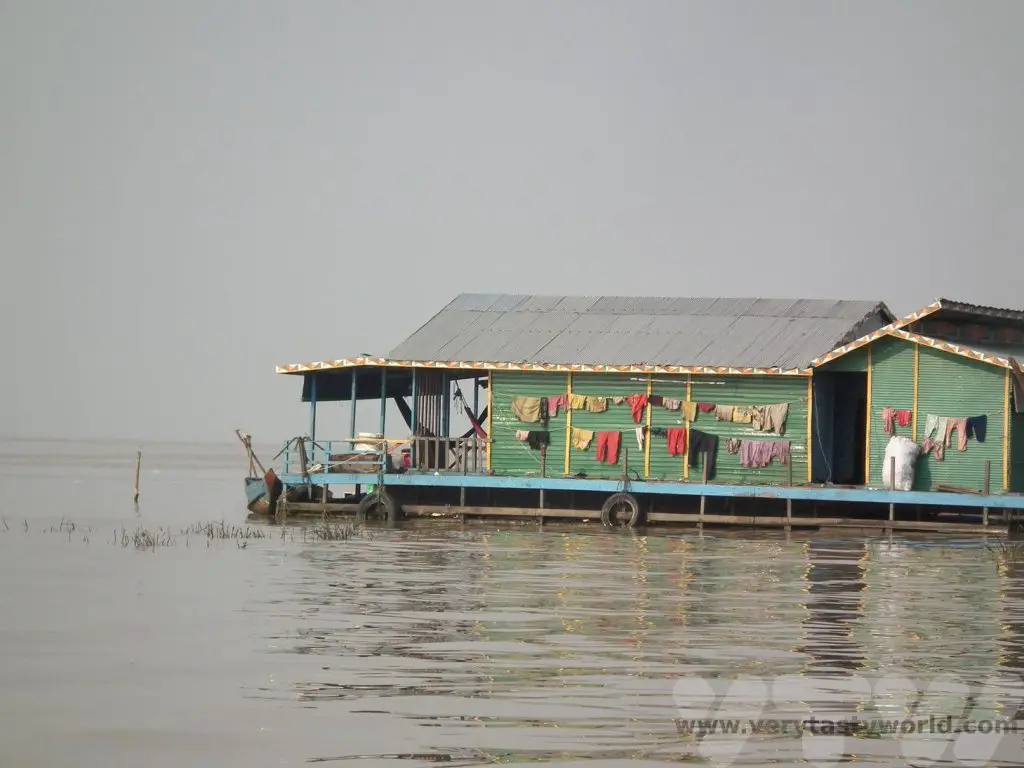
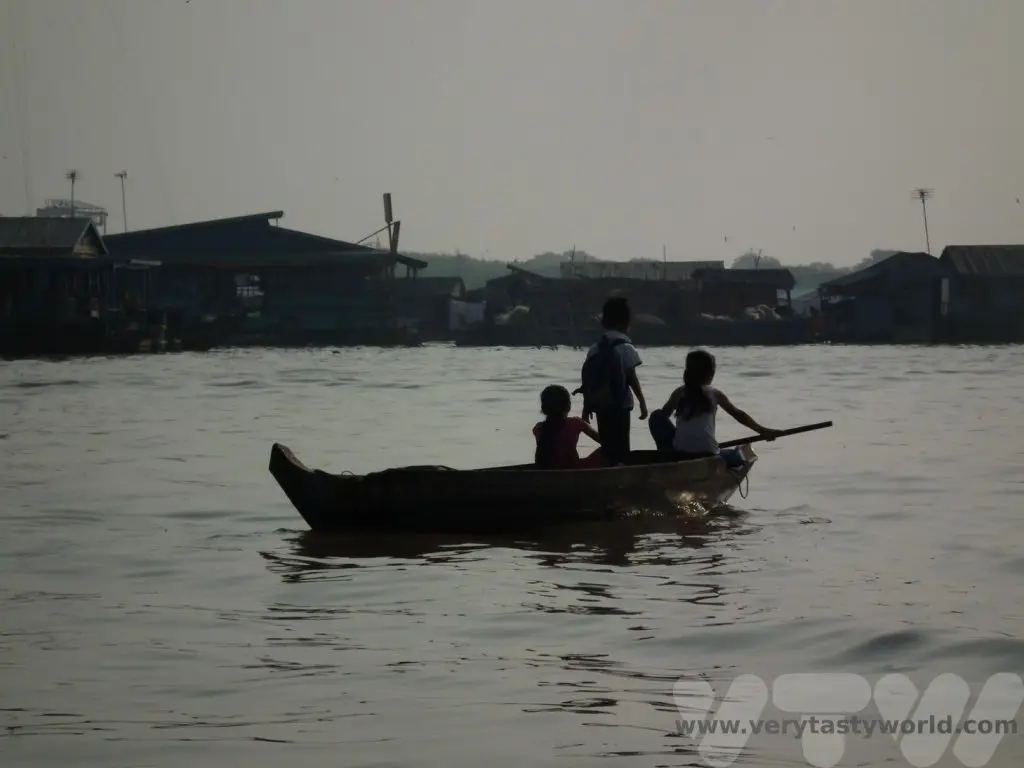
Related Posts You May Enjoy

Mekong Delta River Cruise in Vietnam
Fruits of the Dragons
As the mighty Mekong river reaches Vietnam and approaches the South China Sea the main waterway splits into a maze of rivers that form the Mekong Delta. The region is known locally as Cuu Long, or “Nine Dragons”, representing the nine main tributaries. Located just a few hours away from Ho Chi Minh City, enjoying a Mekong Delta river cruise is a lovely excursion when visiting south Vietnam.
The delta region covers an area of around 40,500 square kilometres in south-western Vietnam. It is the mouth of the Mekong, Asia’s third longest river, which has run nearly 5000km from its source in the Tibetan plateau, through China, Myanmar, Lao PDR, Thailand, Cambodia and finally into Vietnam.
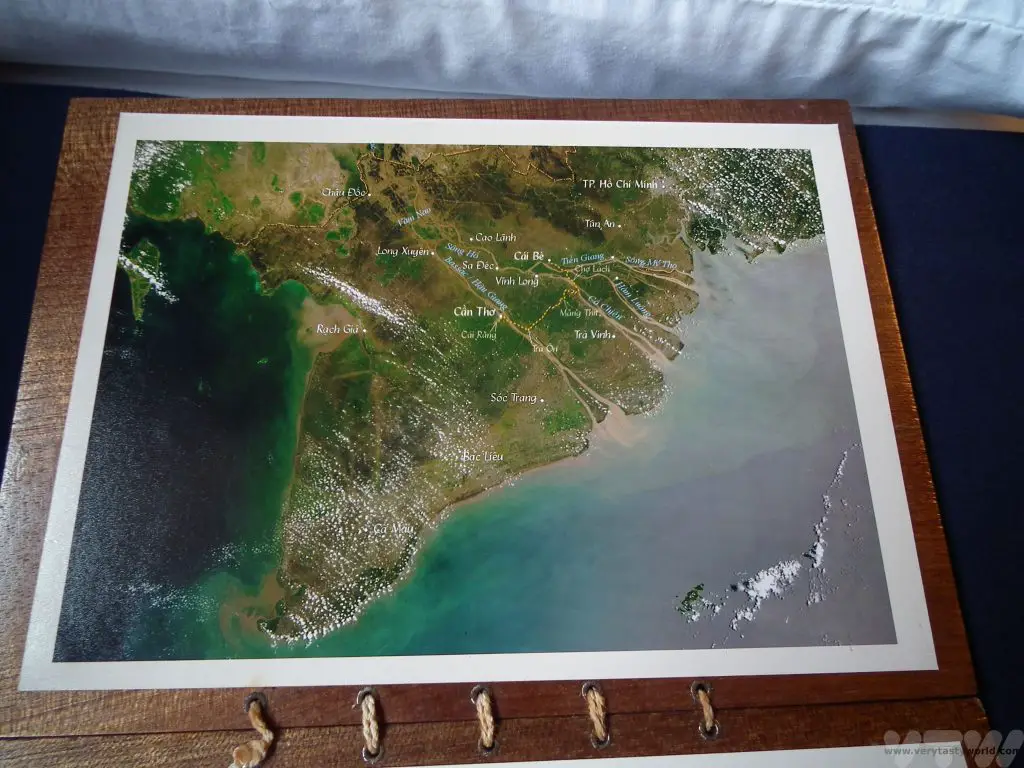
River Cruise
Three to four hours’ drive away from the relentlessly loud and energetic Ho Chi Minh City, the hectic urban hubbub slowly transitions to rural rice fields. It is possible to undertake a river cruise along the Mekong Delta from a number of locations in the area; there are plenty of choices with various levels of indulgence. It’s a lovely way to see the country from a very different perspective and at a pace that is much more laid back. We chose a two day journey from Cần Thơ to Cái Bè starting along the Sông Hậu branch of the river and sailing into the Mekong.
Depending on budget there are different boats available. Some are rather splendid – we travelled on a traditional style Bassac boat. These are wooden vessels with private cabins and a decks with seating so that you can enjoy the view.
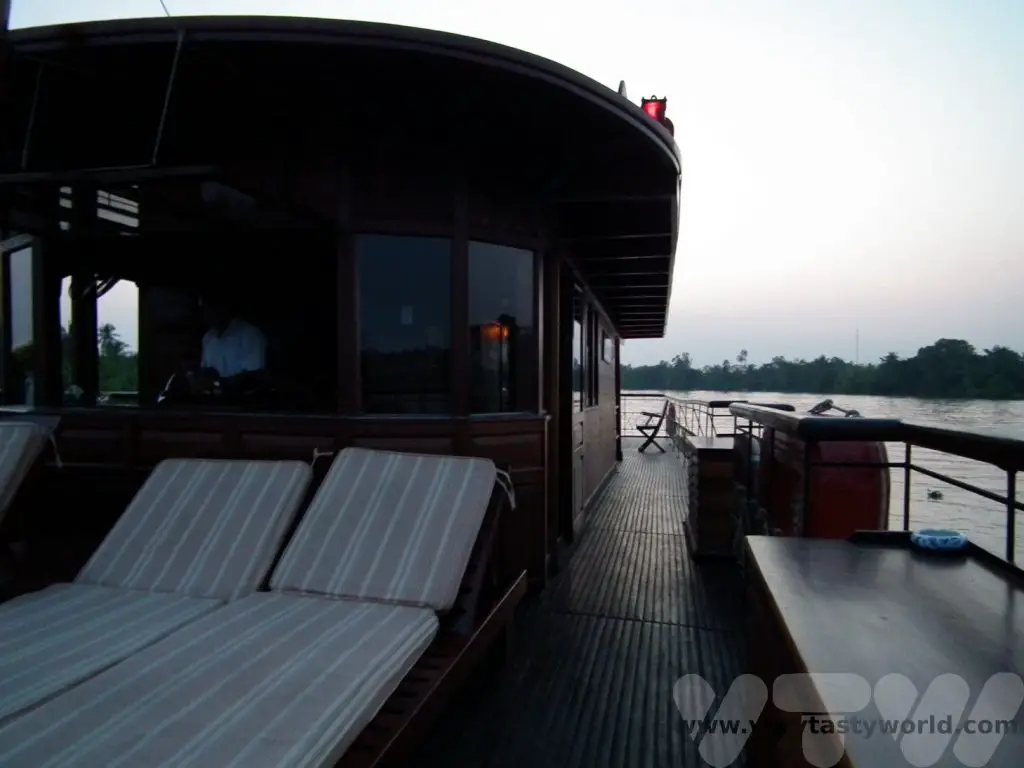
The cabins are compact, but had all the facilities we needed, including a teeny en-suite shower room.
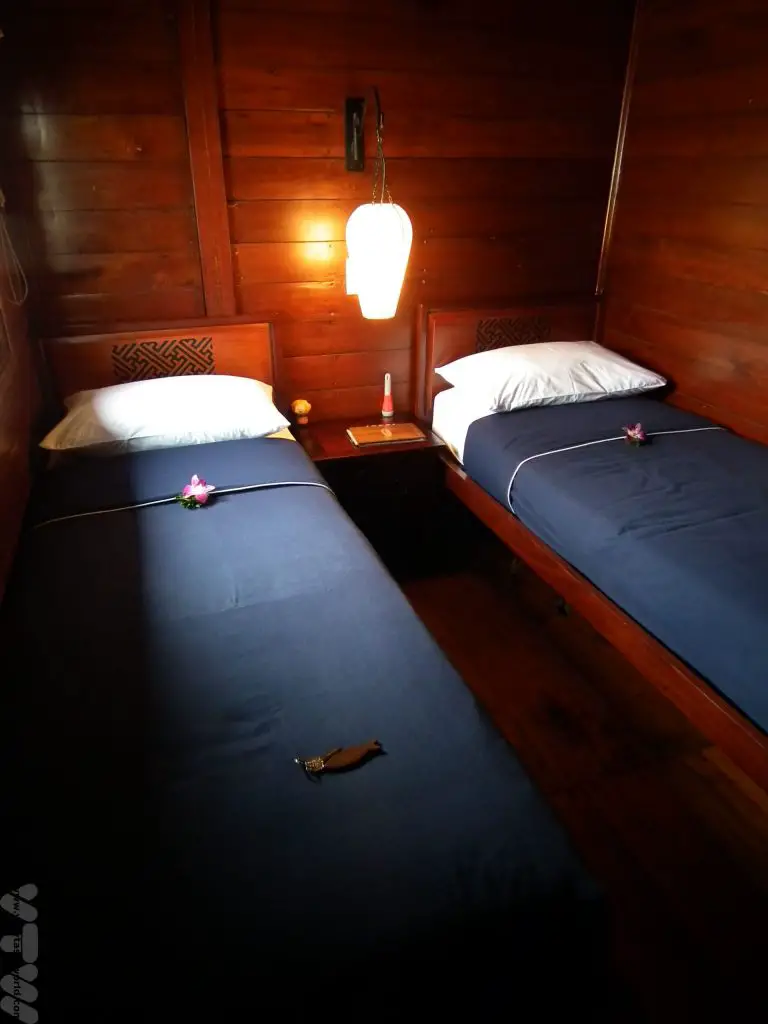

A Slow Journey Along the Mekong Delta
Cruising along the Mekong can best be described as ‘leisurely.’ We saw all sorts of vessels, large and small, as we travelled along.
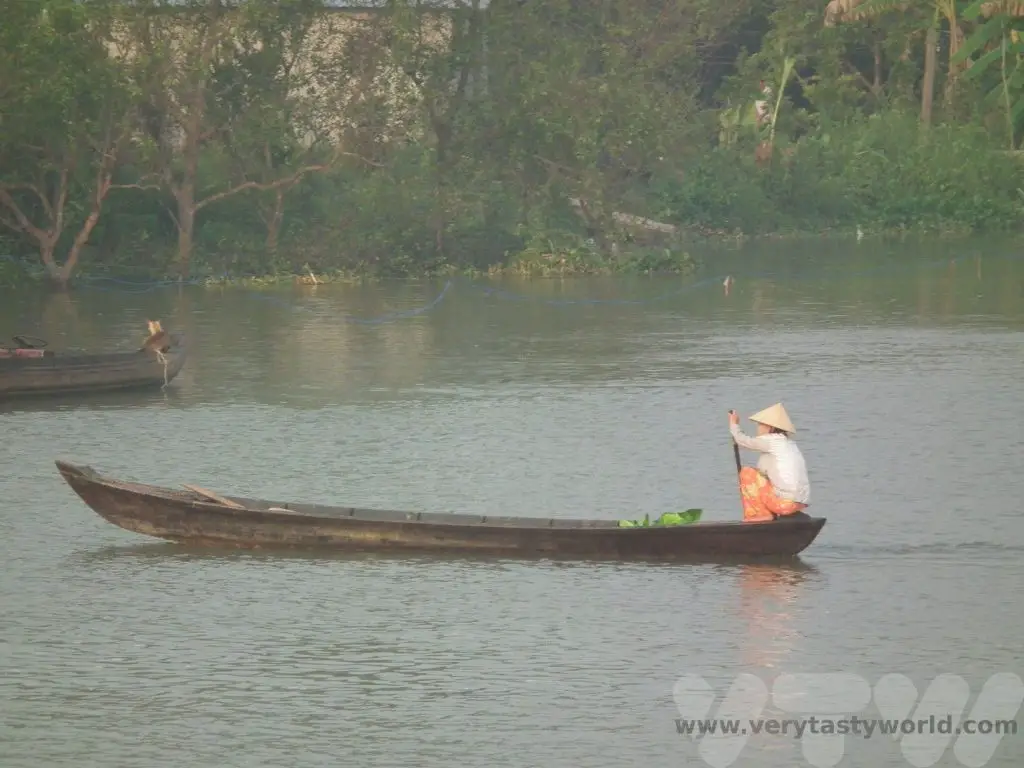
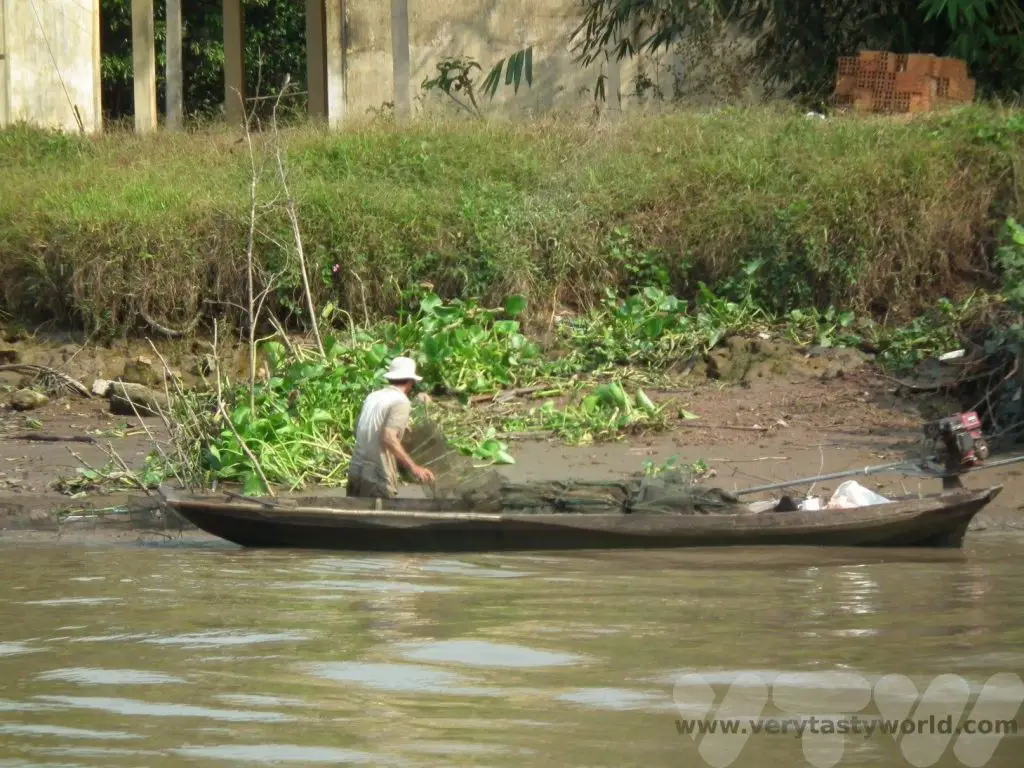
All along the journey we saw water hyacinth floating gently by. This is a fast growing plant that floats freely in the river. It is a bit of a problem in the delta as it can get clogged up in a motor boat’s propellers and is also somewhat invasive, preventing other life thriving on the river. It is apparently edible (not sure we’d want to fish it out of the river and have a munch and, anyway, it needs to be cooked first) but it can also be collected and processed in order to make woven products such as mats, bags and baskets, which local people can sell.
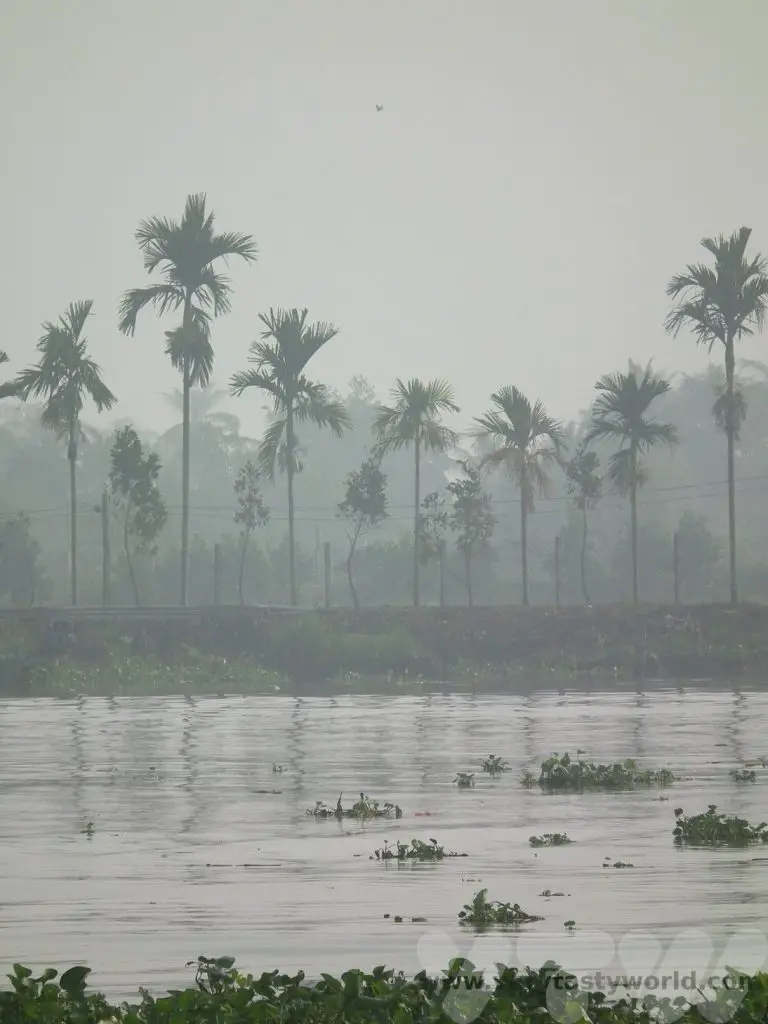
Mekong Delta River Cruise – A Land Excursion
Many of the boat trips offer excursions to various attractions along the way. It is also possible to visit some of the onshore villages in the area and to explore them on foot, visiting local farmers and learning about the food that’s produced there.
The area is extremely fertile and rice is the major crop grown. Due to the climate in South Vietnam it is possible to achieve three crops per year.
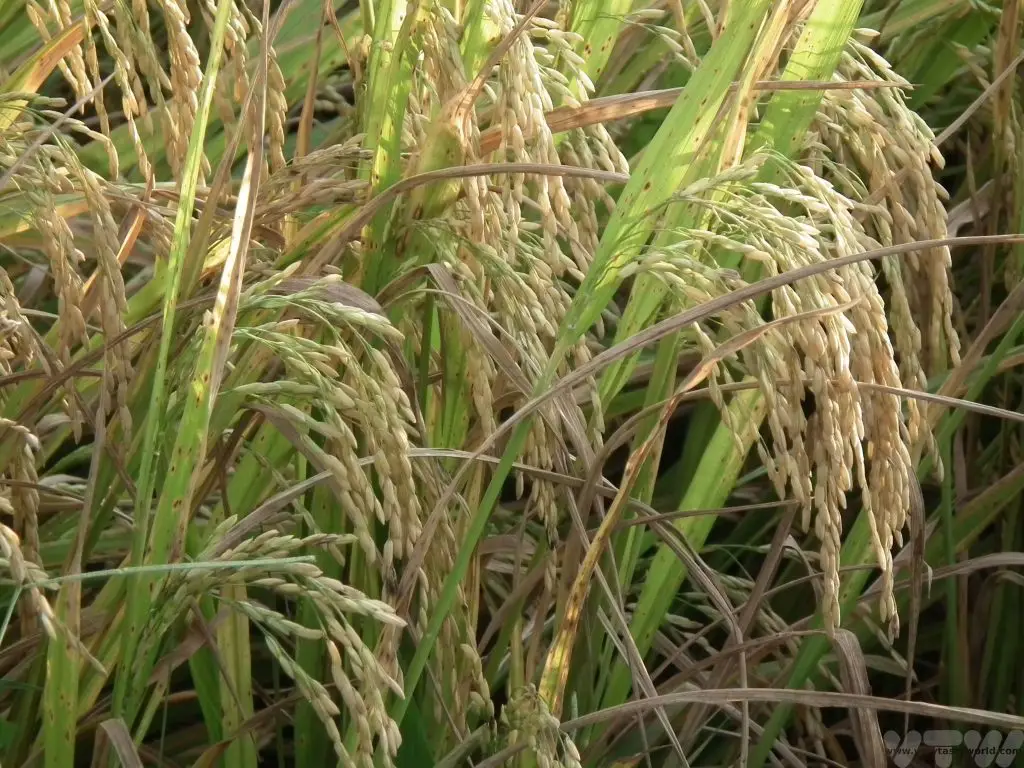
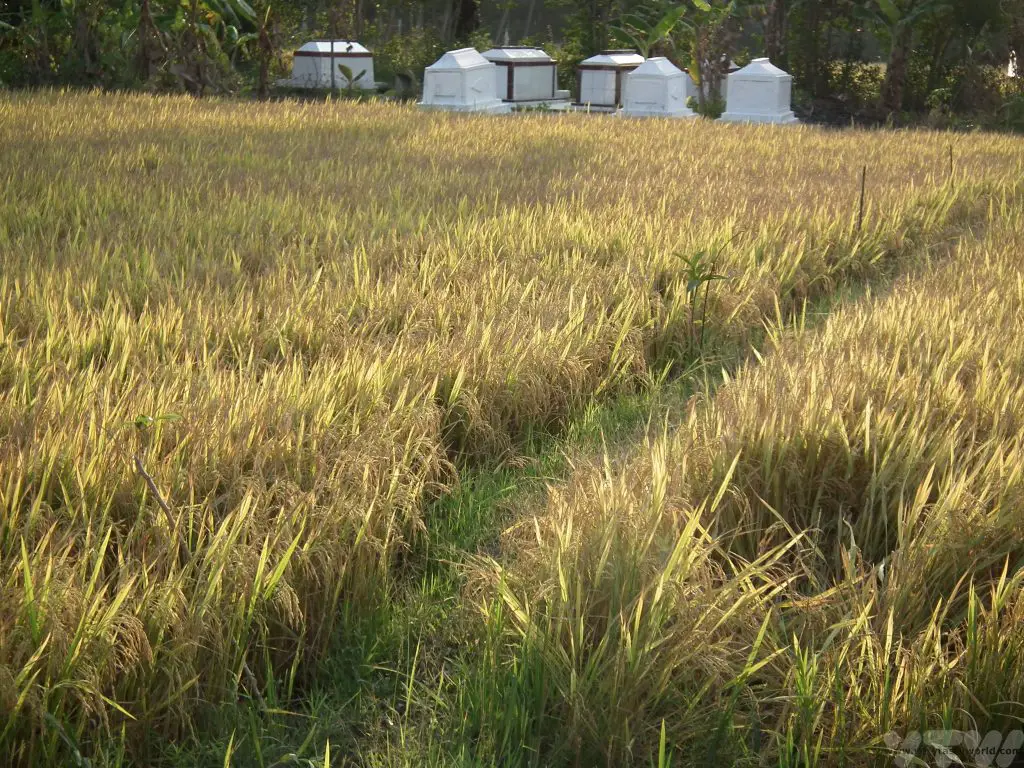
There are no cemeteries in Vietnam so families set up graveyards in the fields.
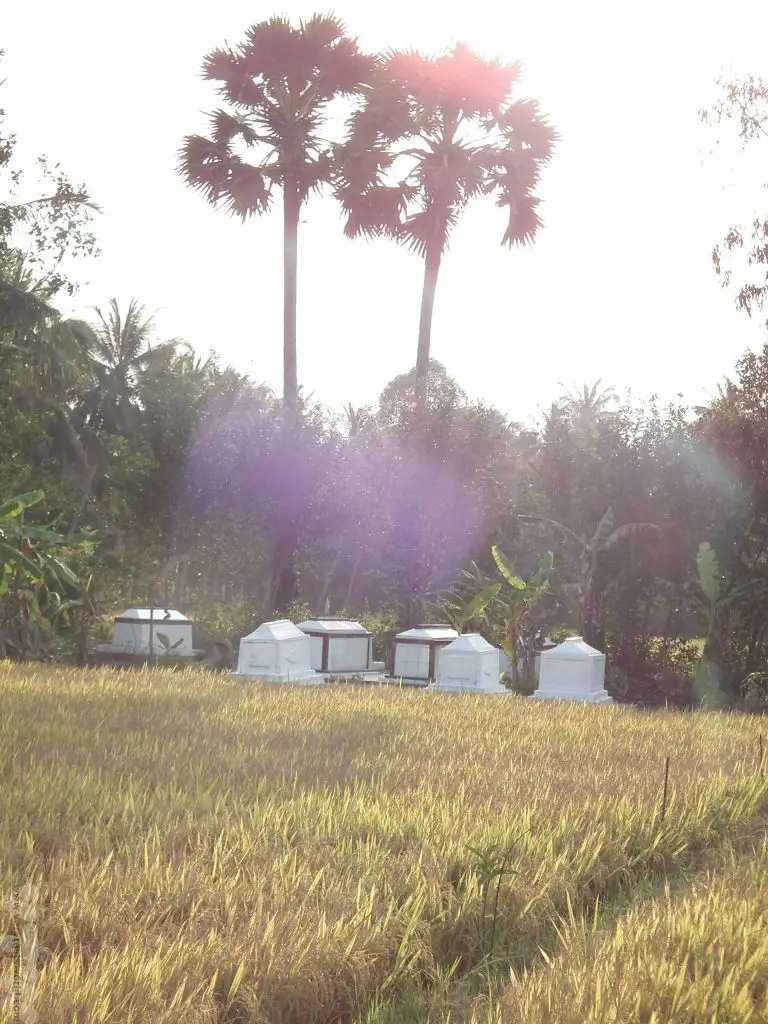
There are also a number of fruit trees that grow in the region. Some are familiar.
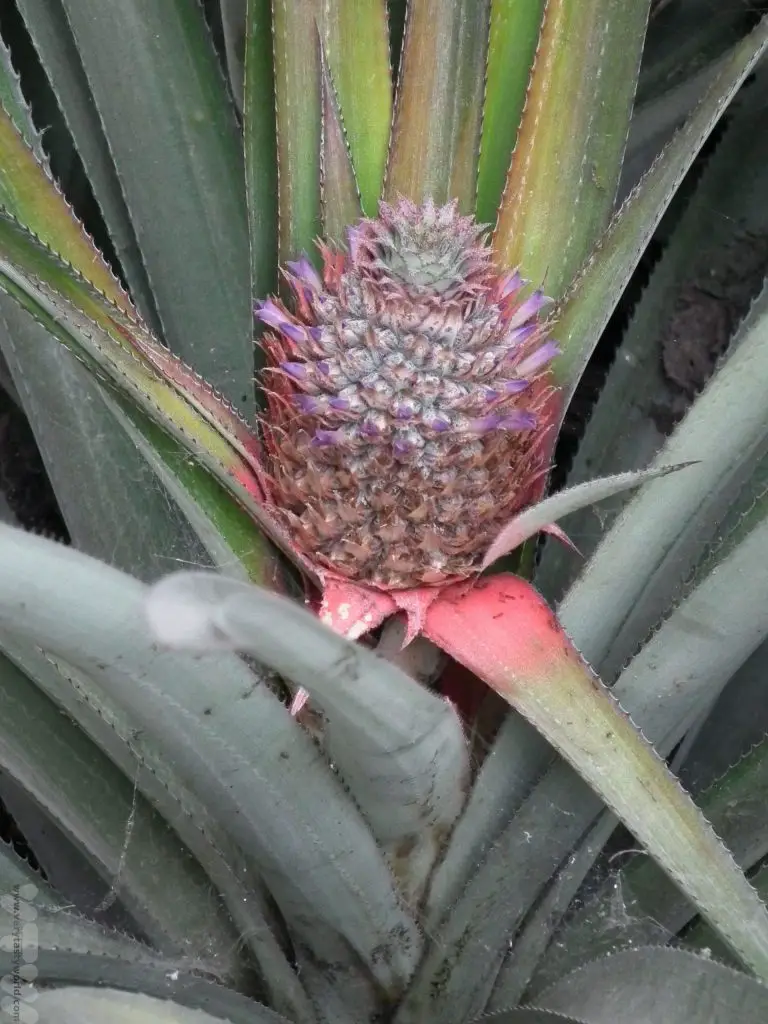
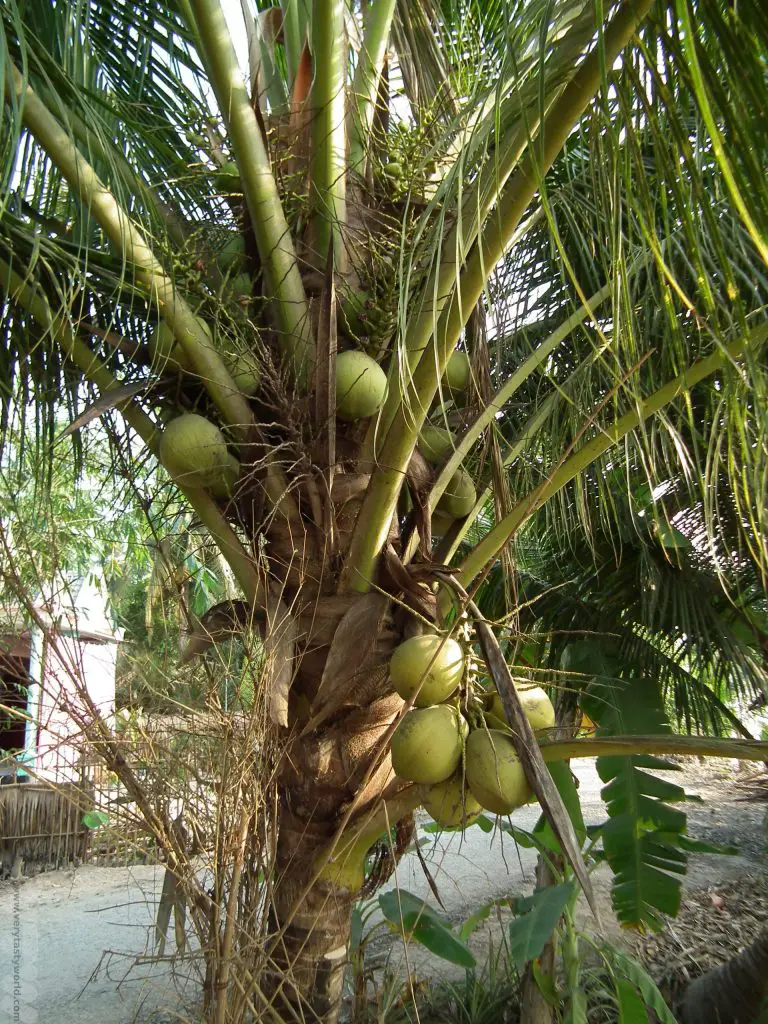
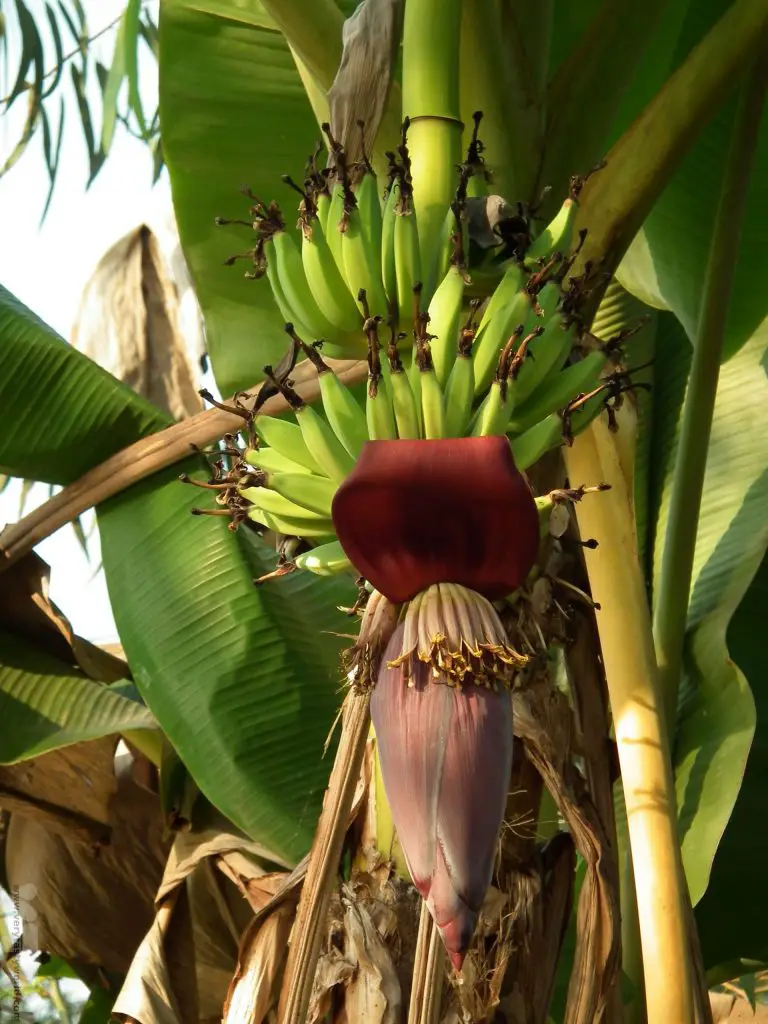
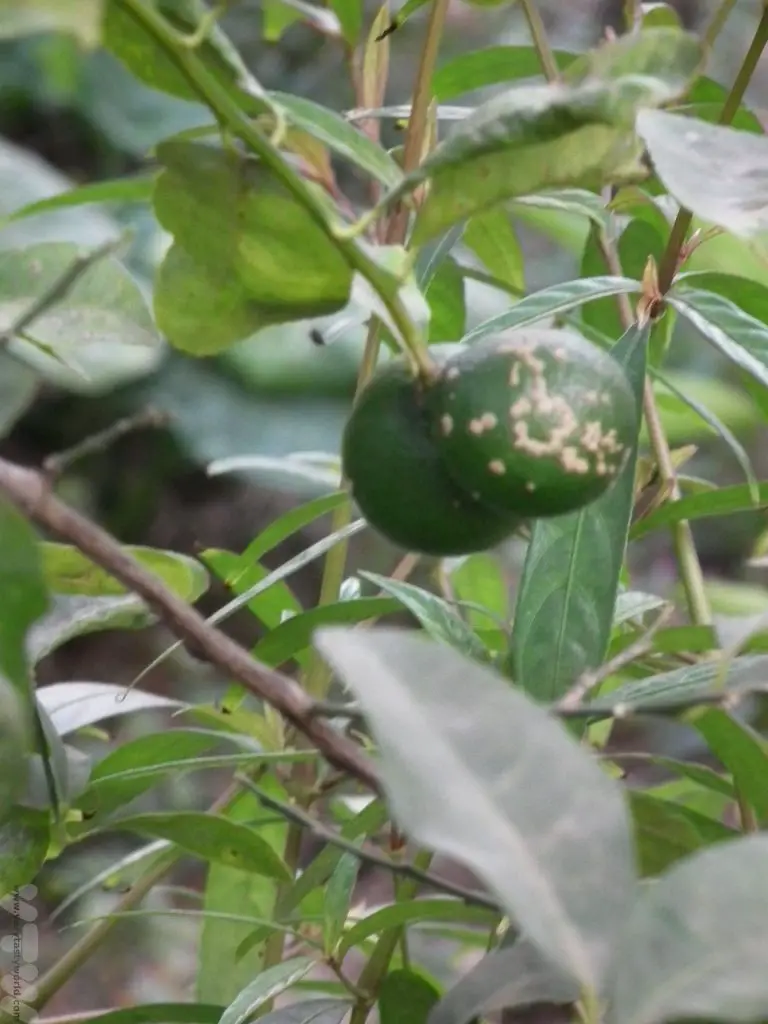
Jackfruit has become hugely popular in recent years as a ‘meat substitute’. Its texture and ability to absorb flavours make it incredibly versatile for vegetarians and vegans – mock ‘pulled pork’ is a particular favourite. But actually it is very tasty as a fruit in its own right.
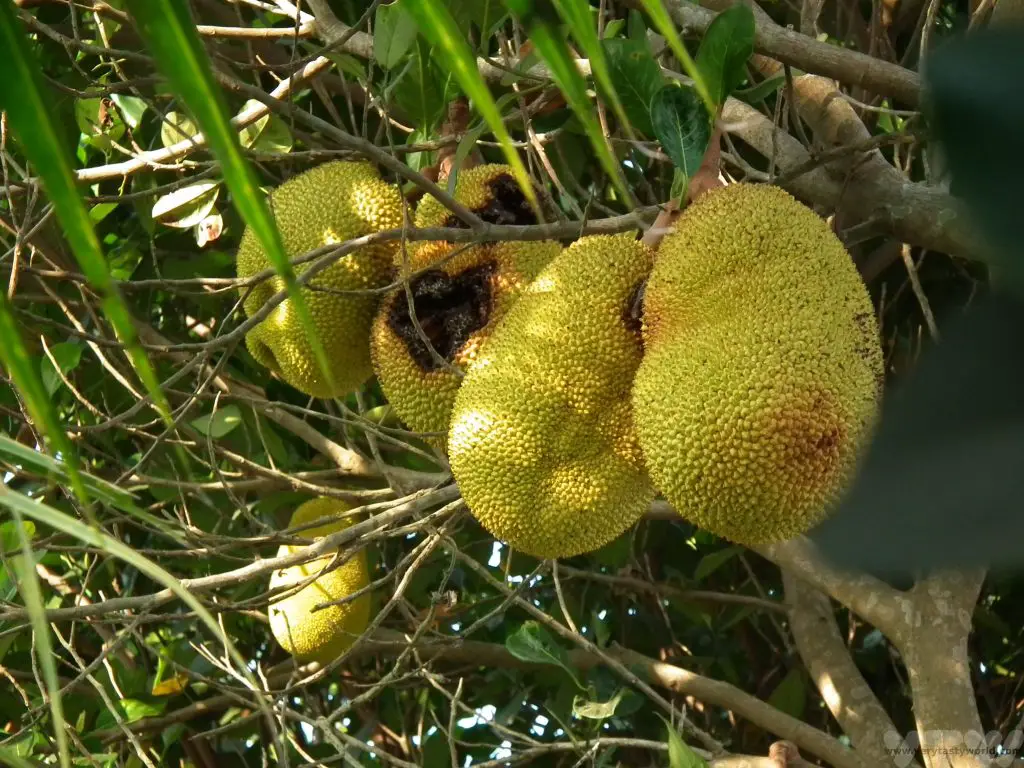
Tapioca is the starch derived from the roots of the cassava trees and often used in puddings (which are far more delicious than school dinners).
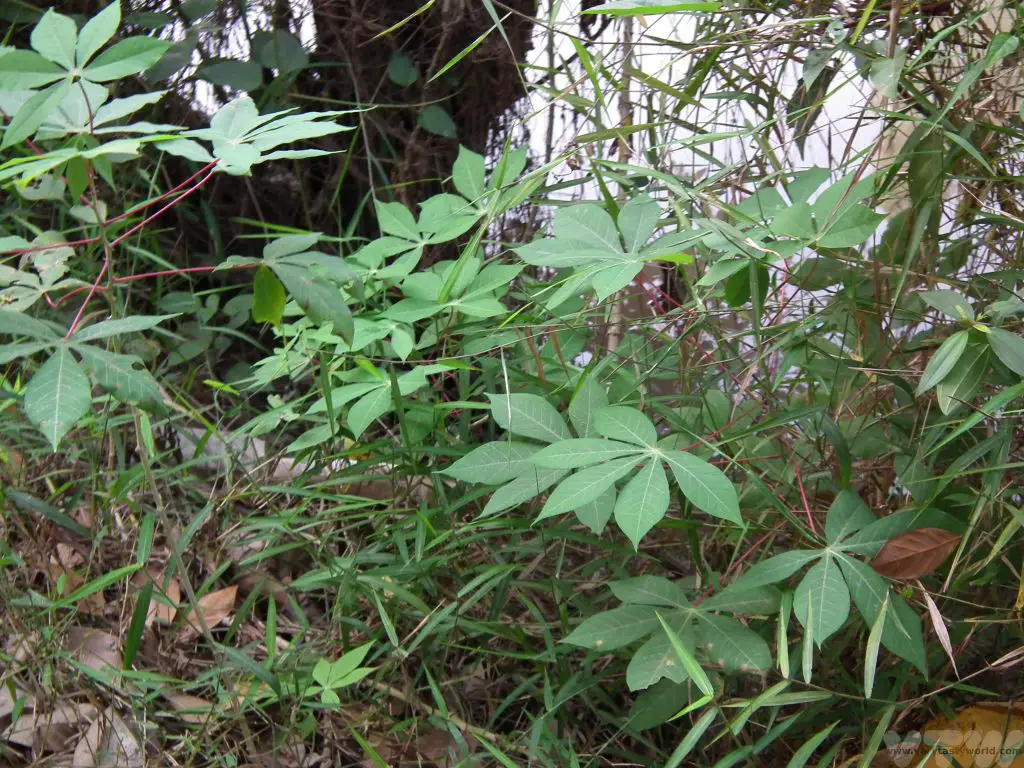
Some of the residents are happy to open up their houses and it is possible to do home stays with local families. If you’re just on a day trip, visitors are sometimes offered some of the amazing fruits grown on the island.
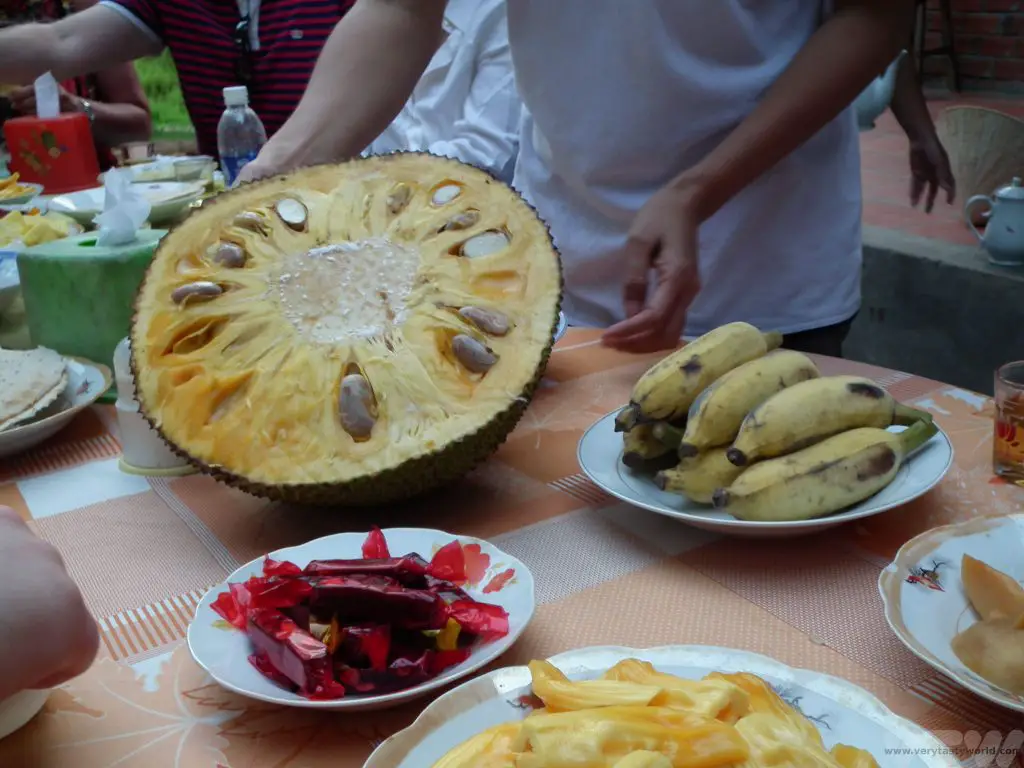
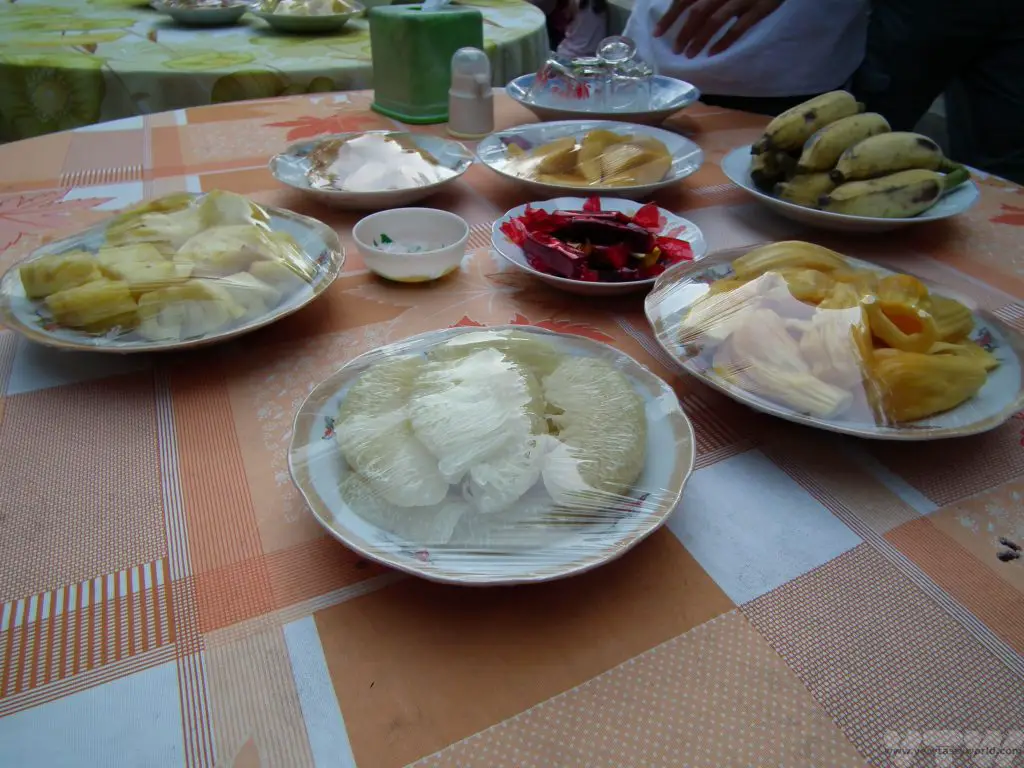
This platter was exceptional. There is an sequence to eating the fruit in order to gain maximum enjoyment: Always start with the fruit with sour flavours and finish with the sweet.
One plate that was a particular revelation was the pineapple. Of course, fresh pineapple is utterly scrumptious, especially when it hasn’t travelled half-way around the globe, but it was served by sprinkling a little chilli and salt on each piece and was a taste sensation. It makes sense: like a lot of Vietnamese food it includes sweet and sour flavours (which the pineapple provides) plus an additional salty dimension and a good dose of heat from the chilli.
Banana leaves are not only functional, they can also be decorative – just look at this lovely banana leaf ‘origami’ grasshopper.
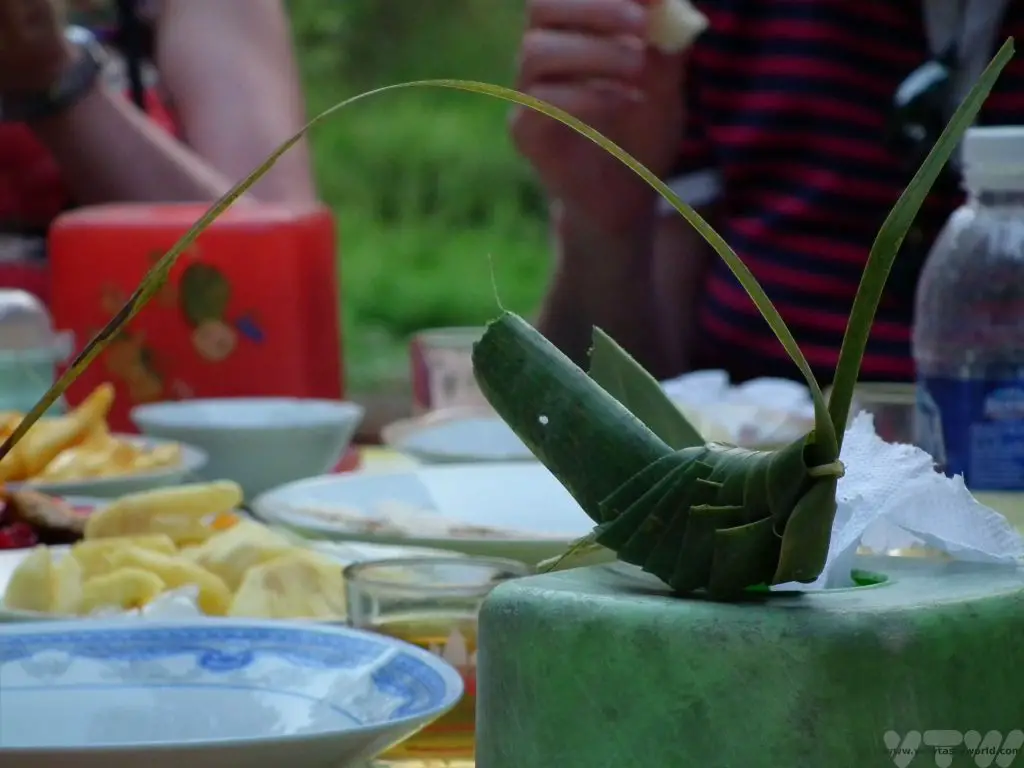
It was late afternoon by the time we returned to our boat.
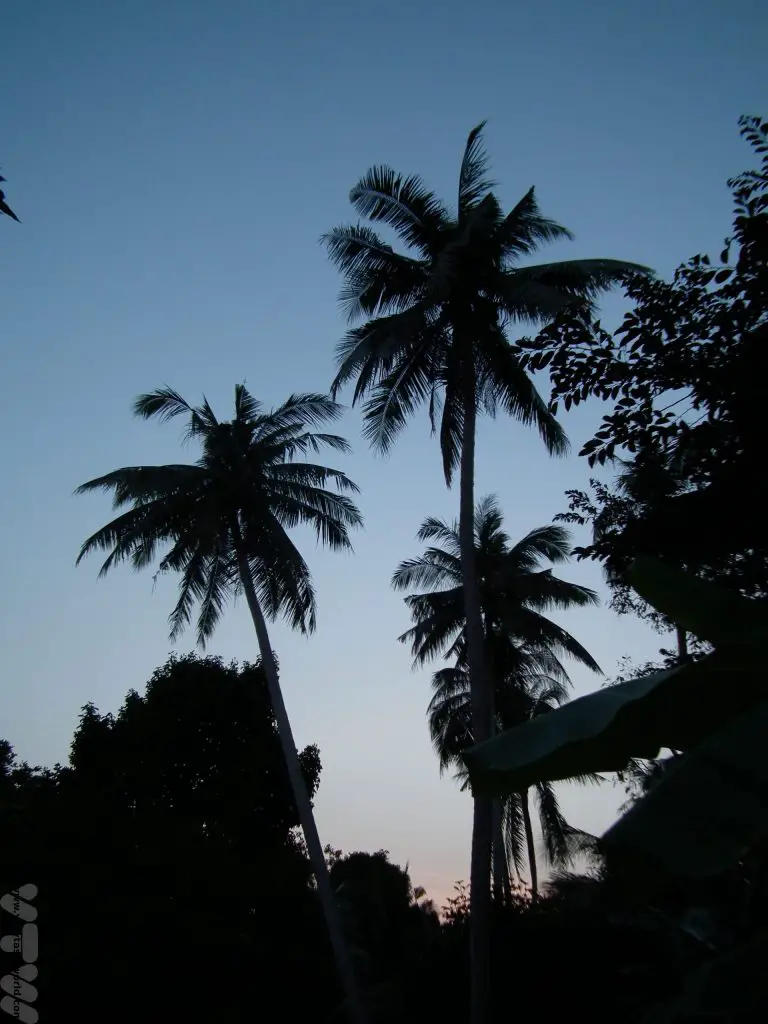
Time for a delicious, decadent seafood dinner…
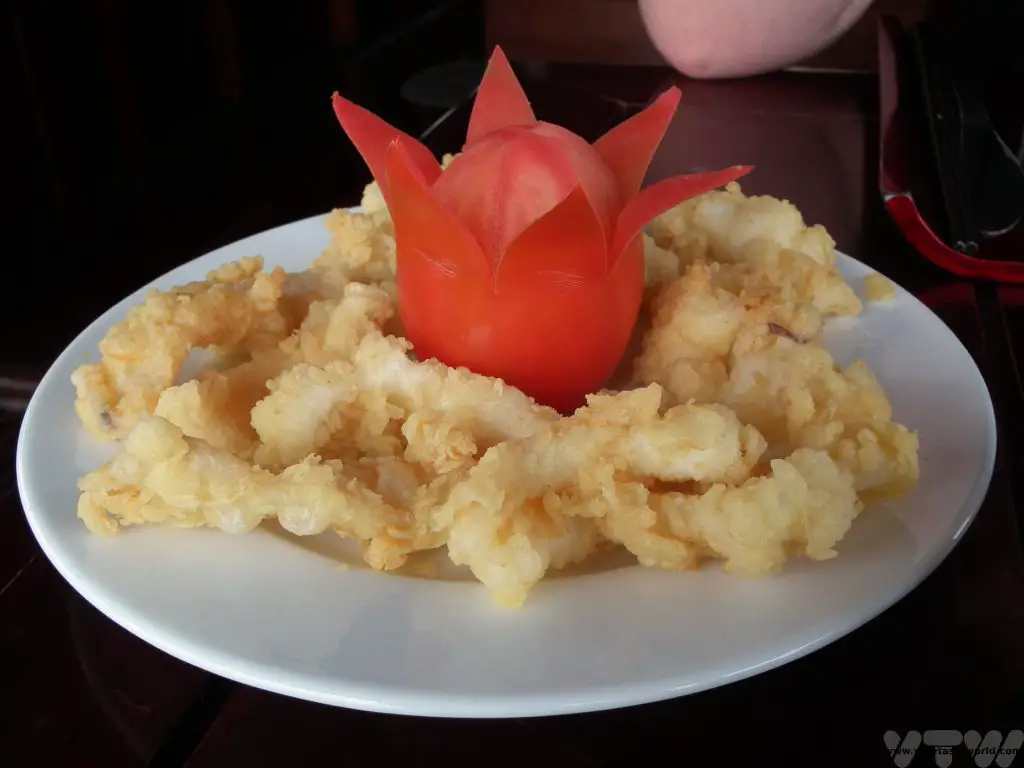
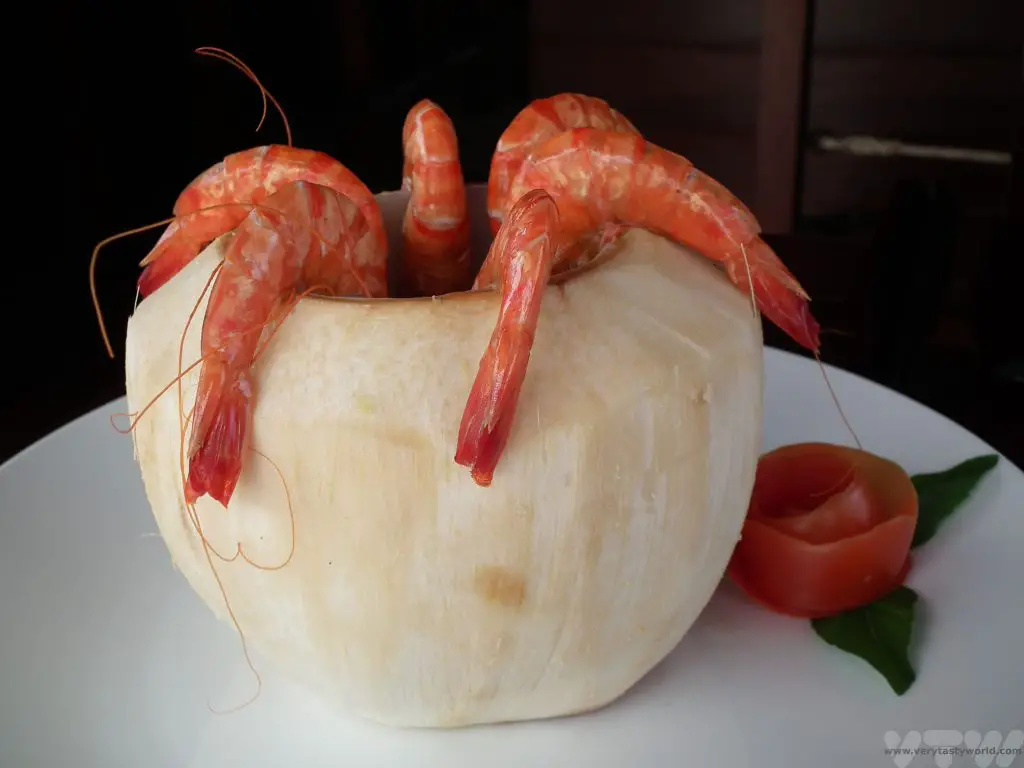
…followed by after-dinner drinks watching the sun set over the Mekong.
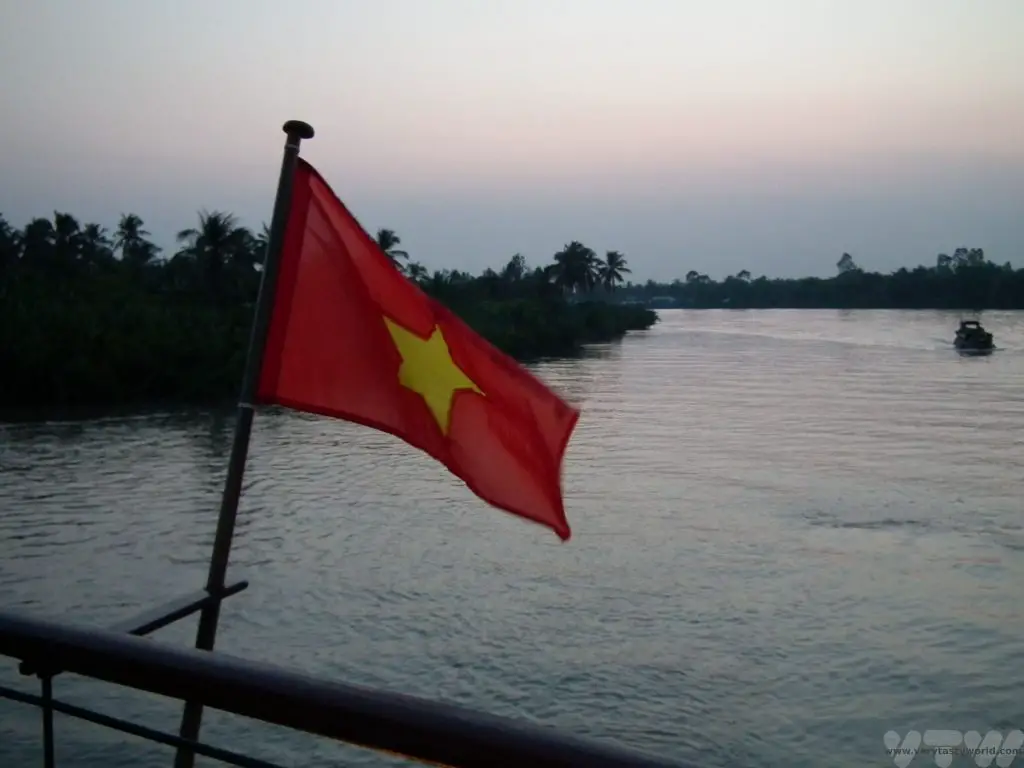
Journey to Cái Bè
Our boat docked at Tra On for an overnight stay onboard. The following morning we headed towards Cái Bè. The Mekong becomes much more of a working river and we passed by many riverside emporia and floating shops.
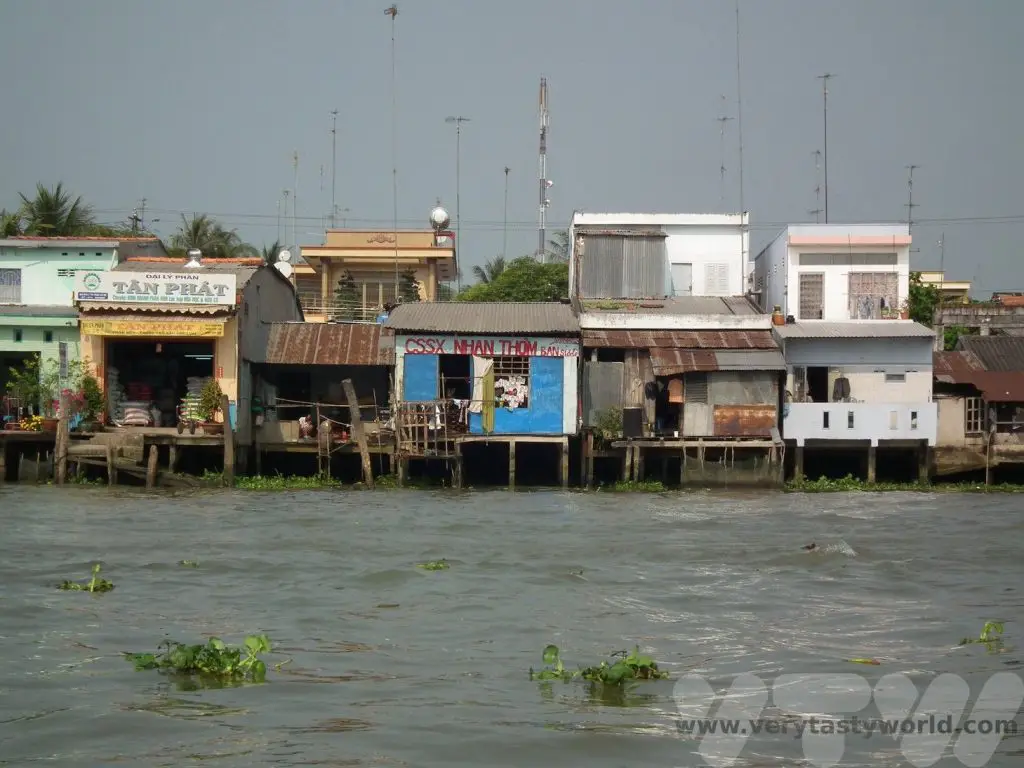
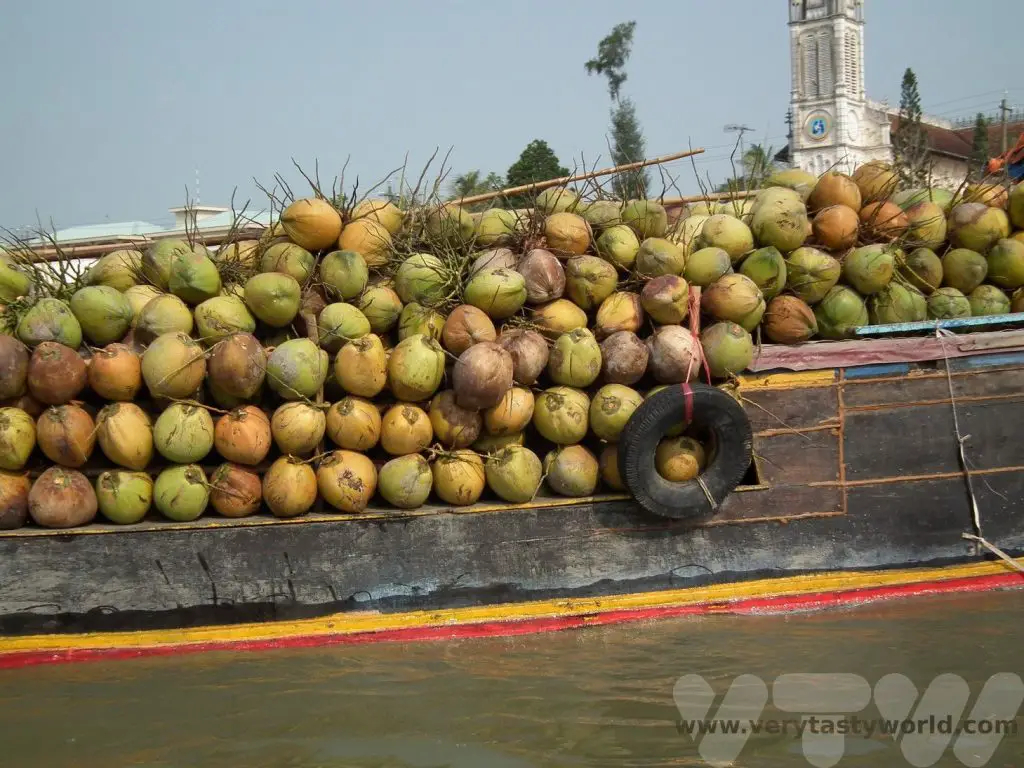
Cái Bè has a Catholic church – an unusual structure to see in the region. Dating from 1929-1932 apparently it has the tallest bell tower in the province.
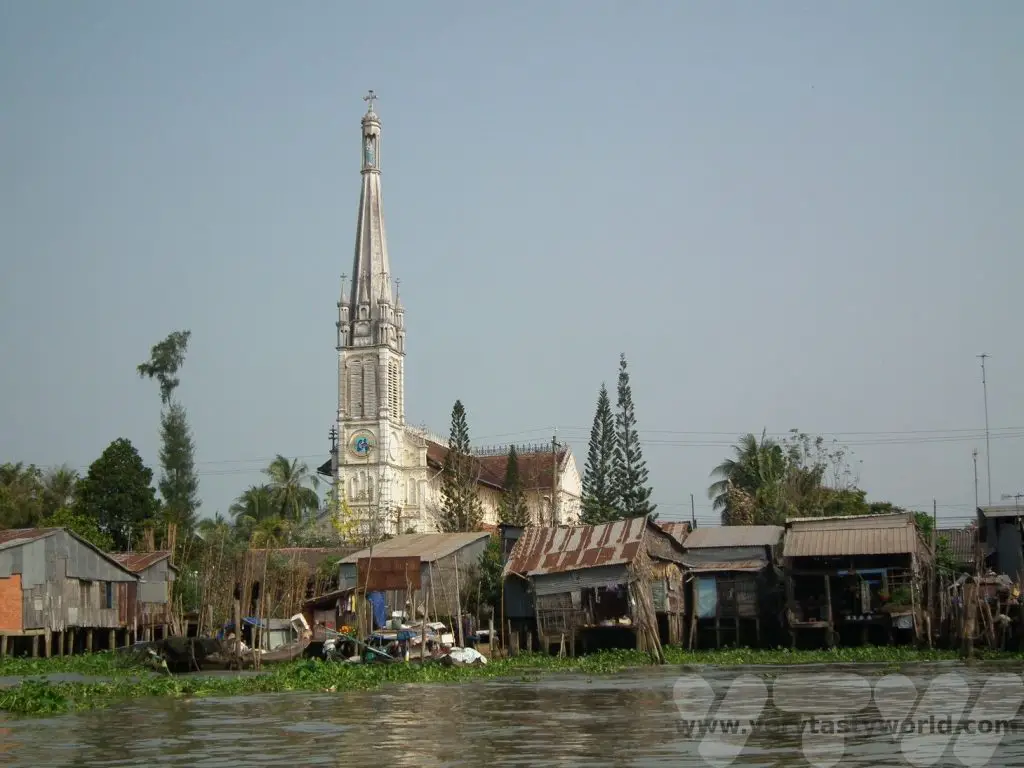
The local boats have eyes painted on them which reputedly scares away the crocodiles.
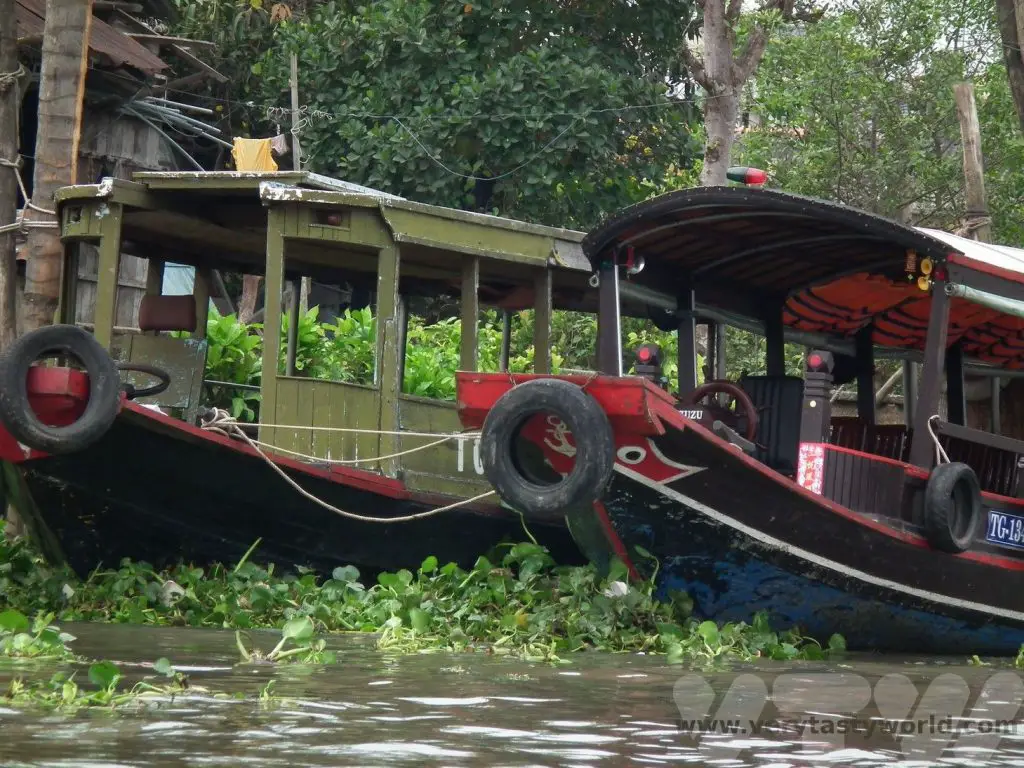
On arrival at Cái Bè we disembarked and visited a factory which made rice products – rice paper and rice cakes – as well as candies.
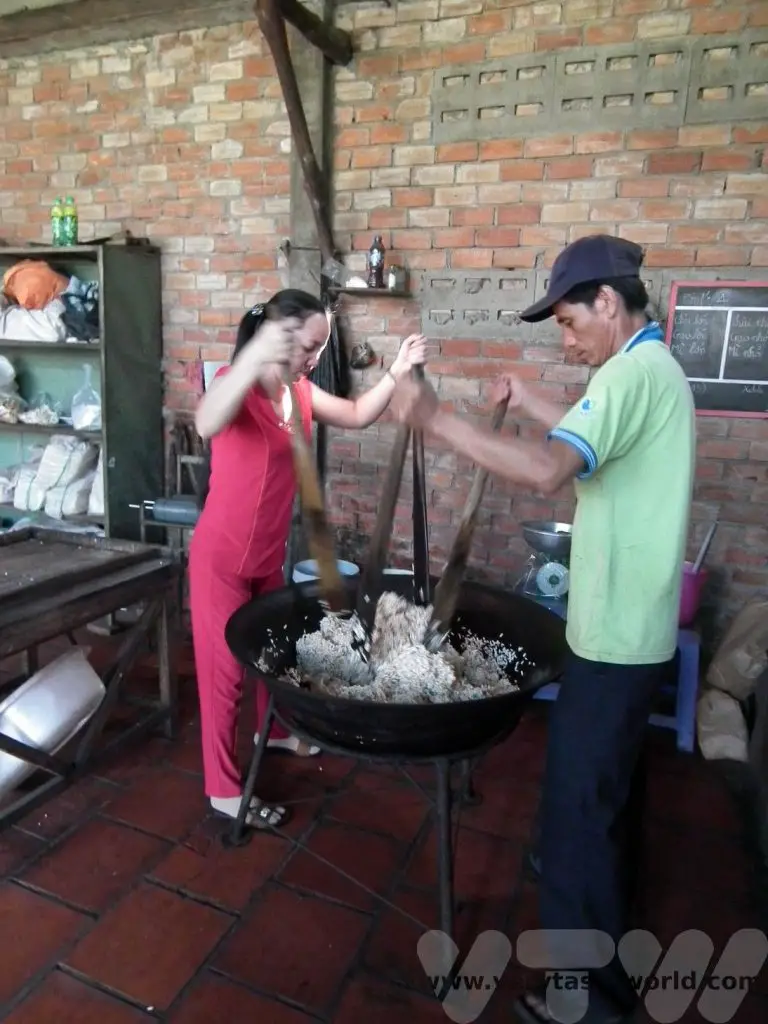
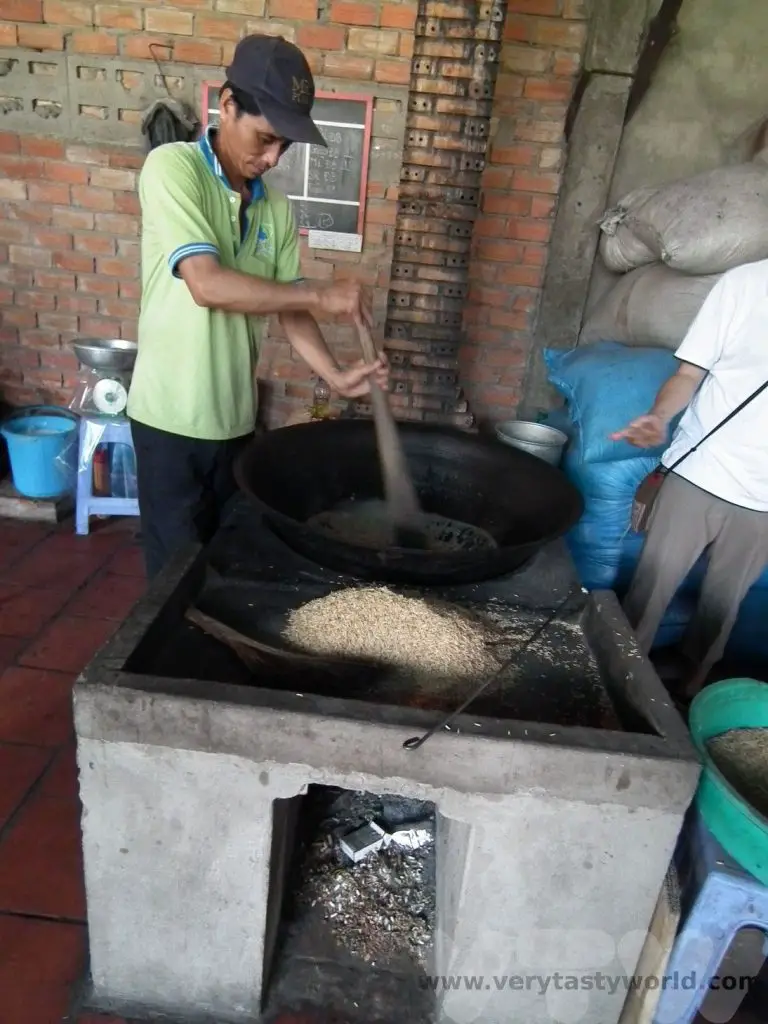
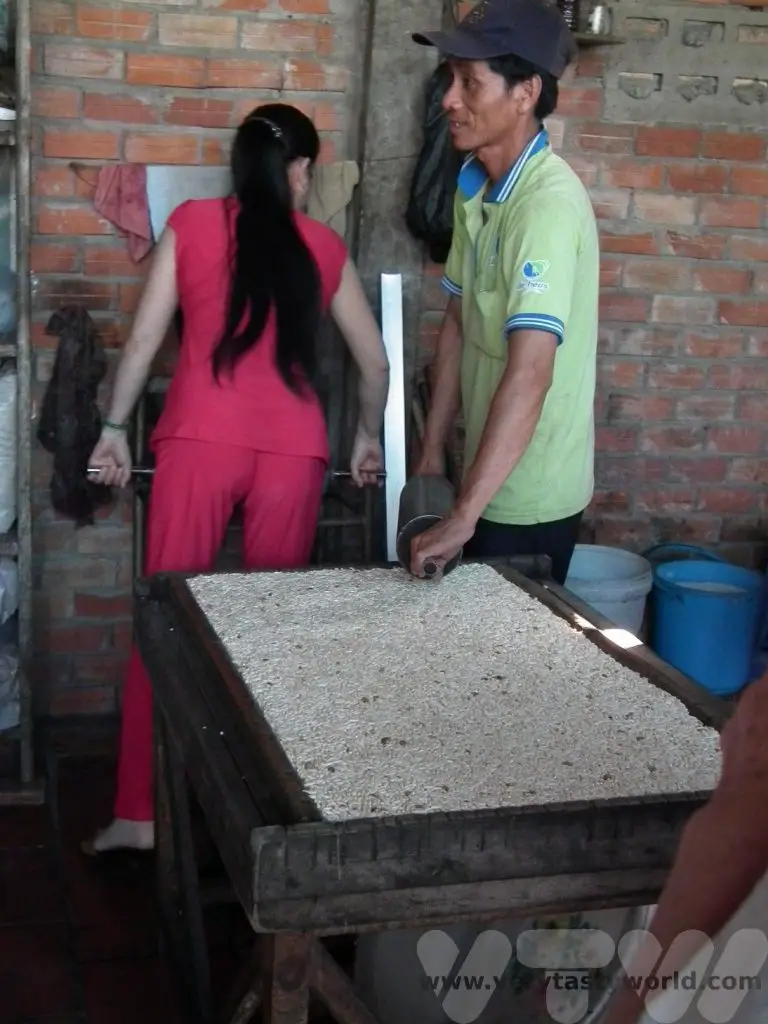
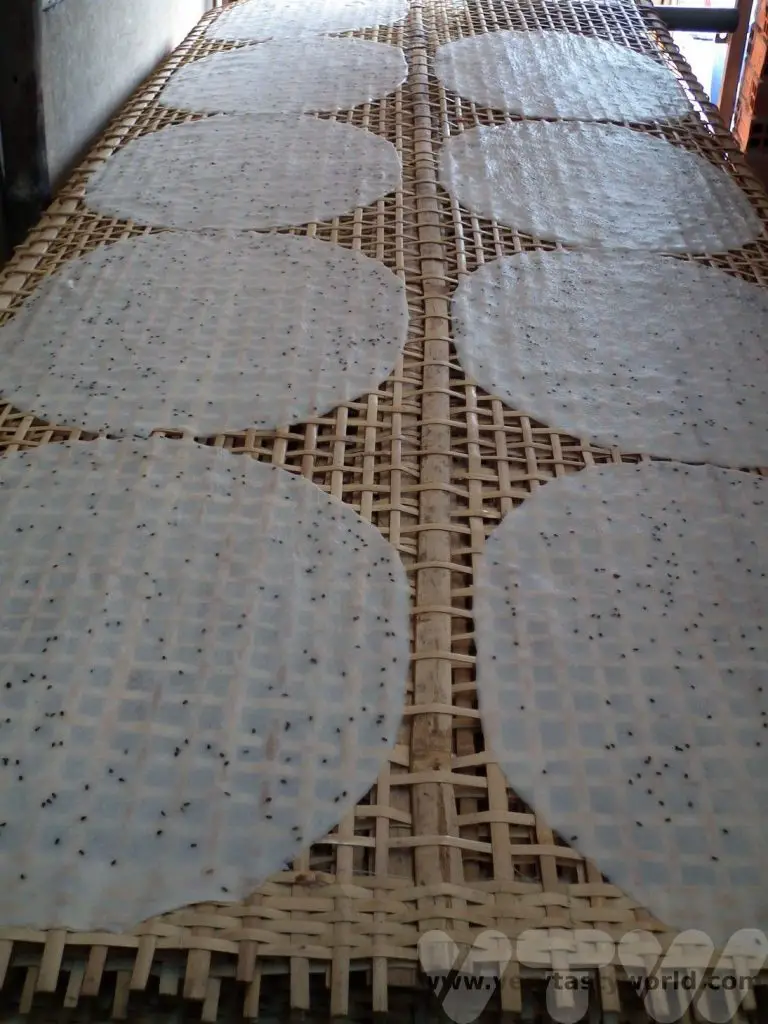
In making coconut candy, shredded coconut is used to make coconut milk and cream which is combined with sugar and malt syrup and then heated and mixed together.
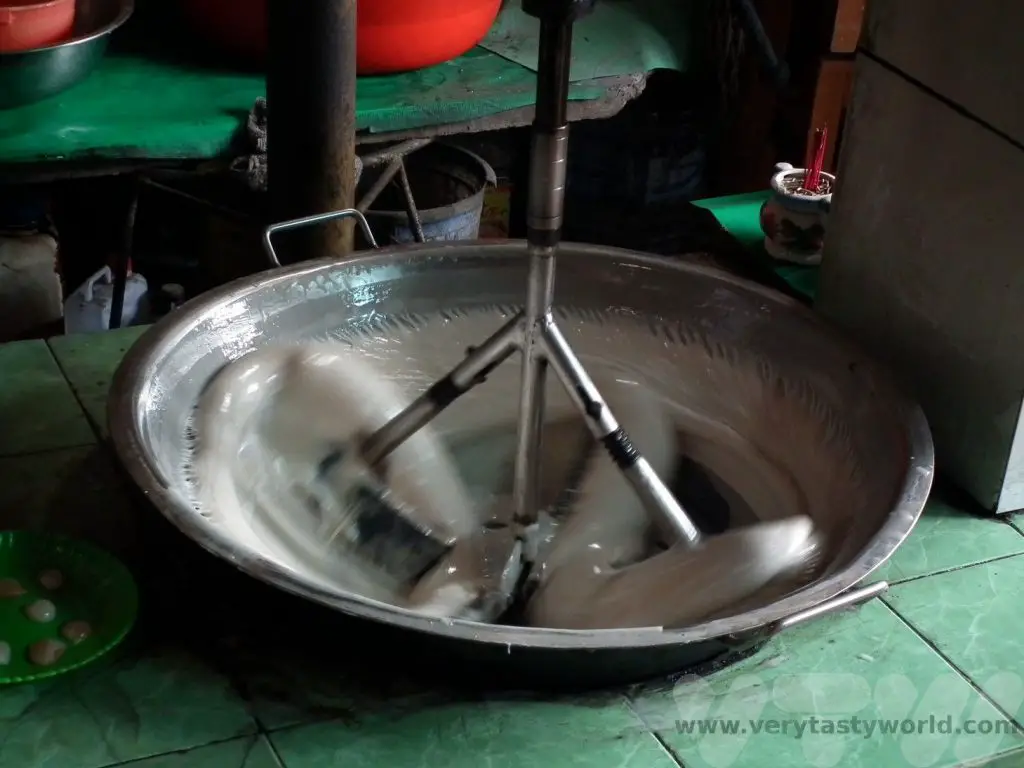
Whilst still warm, the mixture is then laid into strips to cool and then they are cut into bite-sized candy pieces.
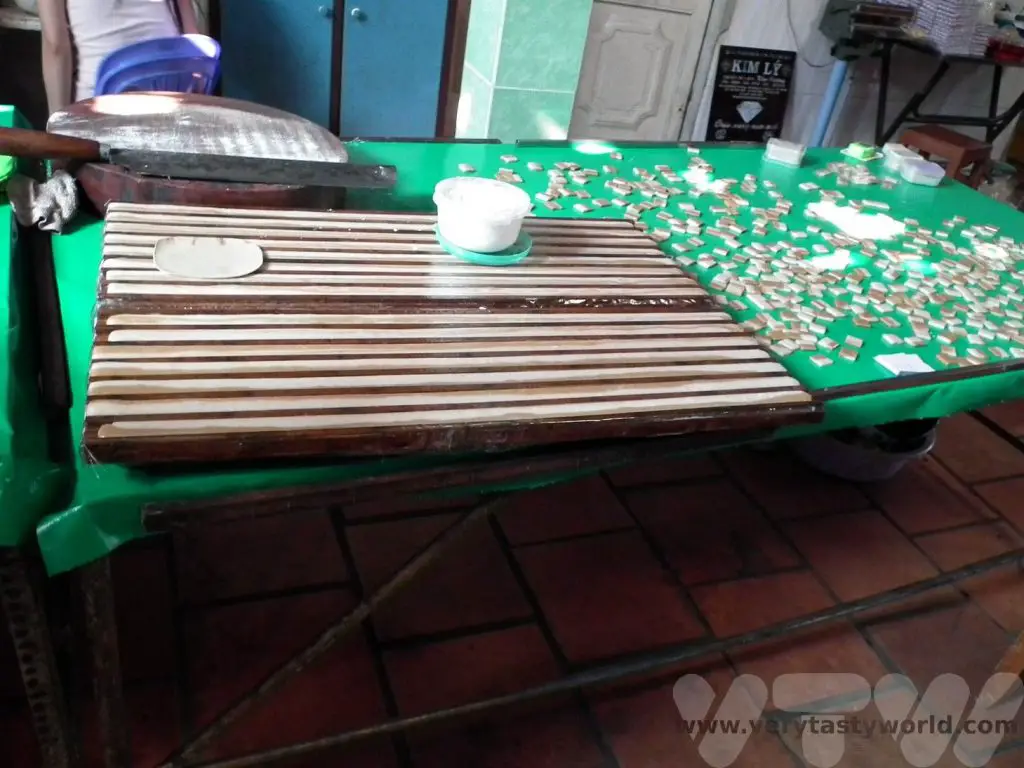
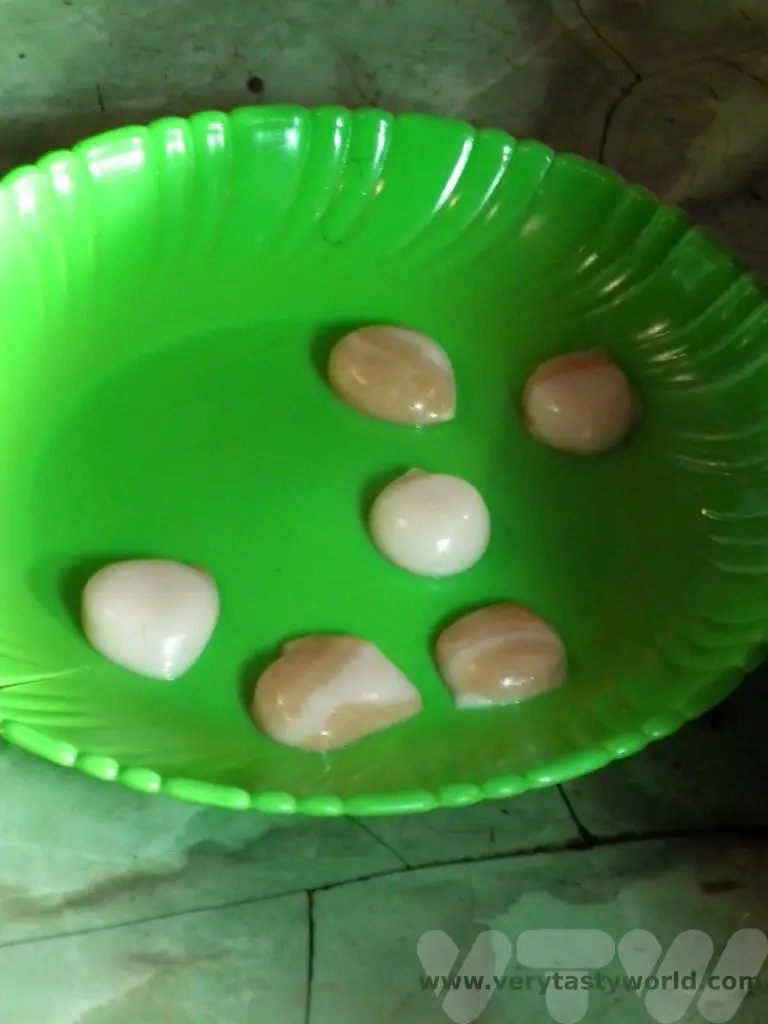
Related Posts You May Enjoy

The Leh to Manali Highway
No Bridge Over Troubled Water
See the sublime splendour of the Indian Himalayas, the majestic snow-capped peaks, the stark and ethereal beauty of the world’s highest and most romantic mountain range! The magnificence of nature revealed in all its craggy, towering glory, waiting just for us. After a wonderful few days exploring Ladakh, we were to travel the long and winding Leh to Manali highway to take us from lofty Ladakh to the lush valleys of Himachal Pradesh.
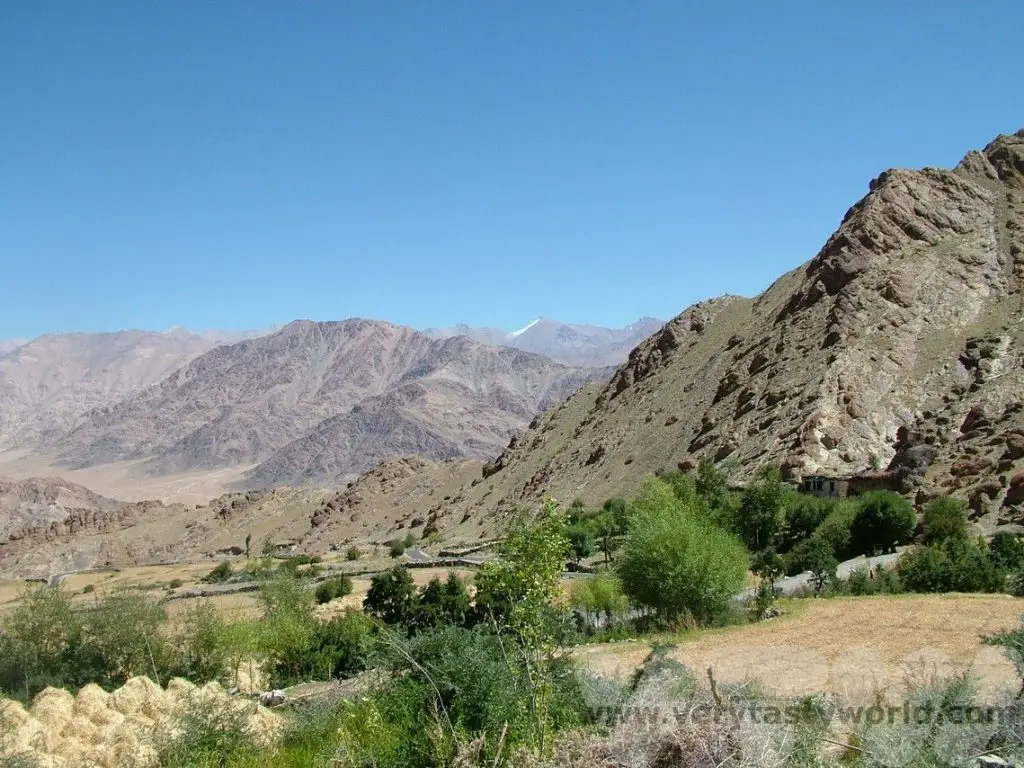
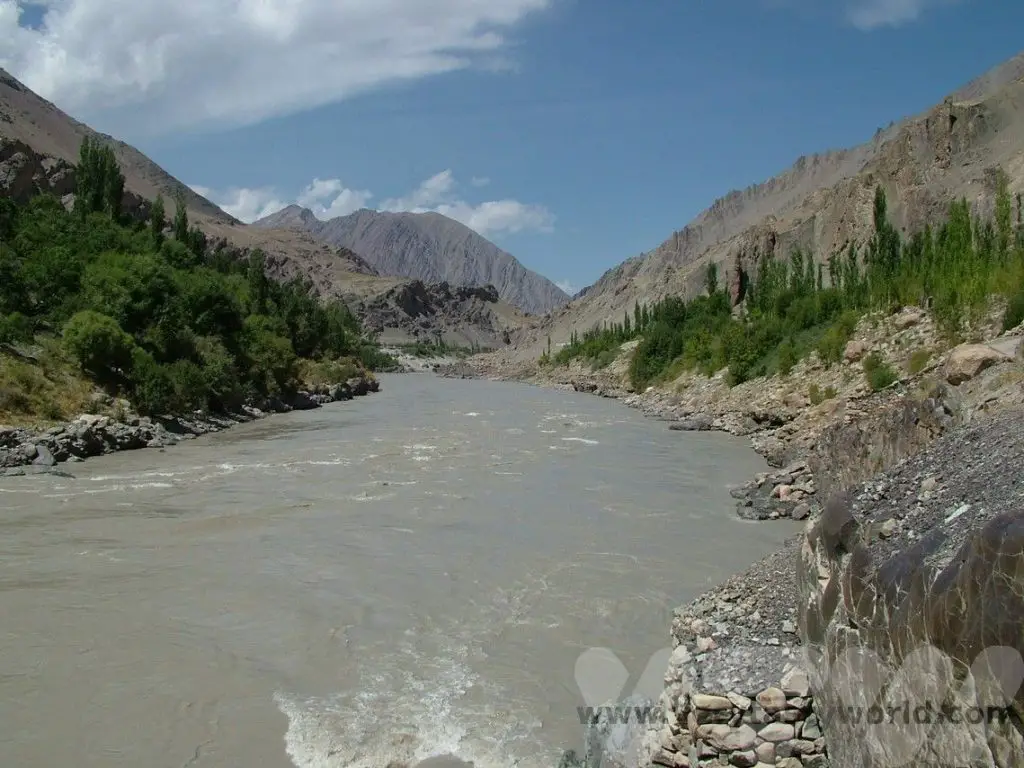
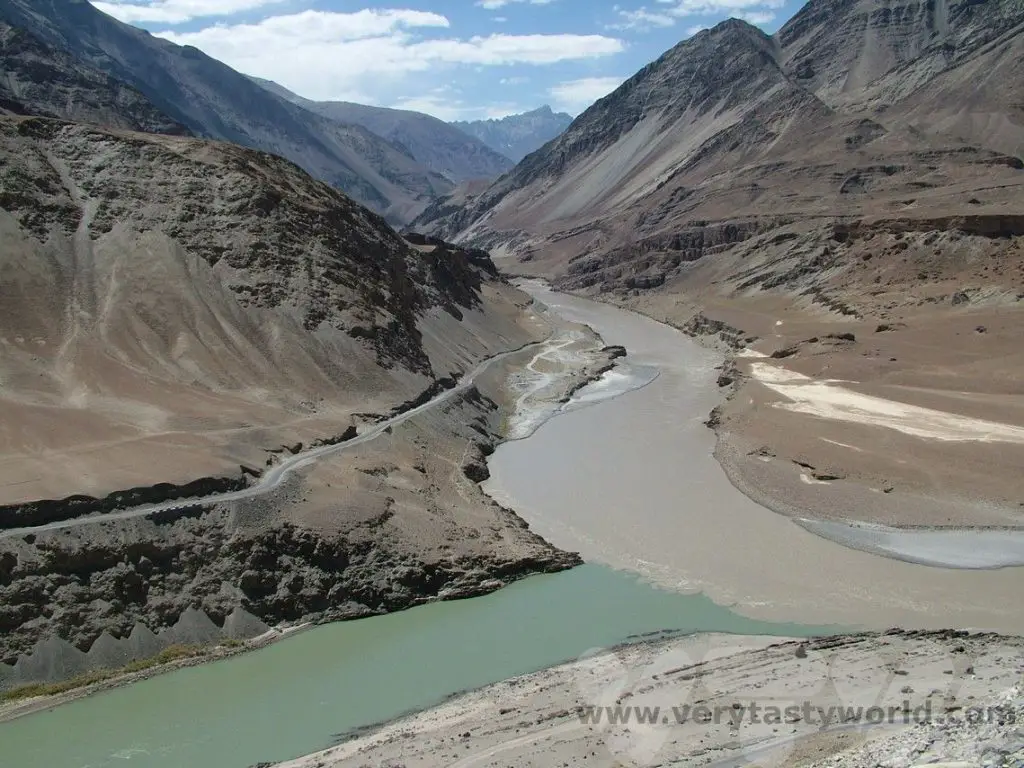
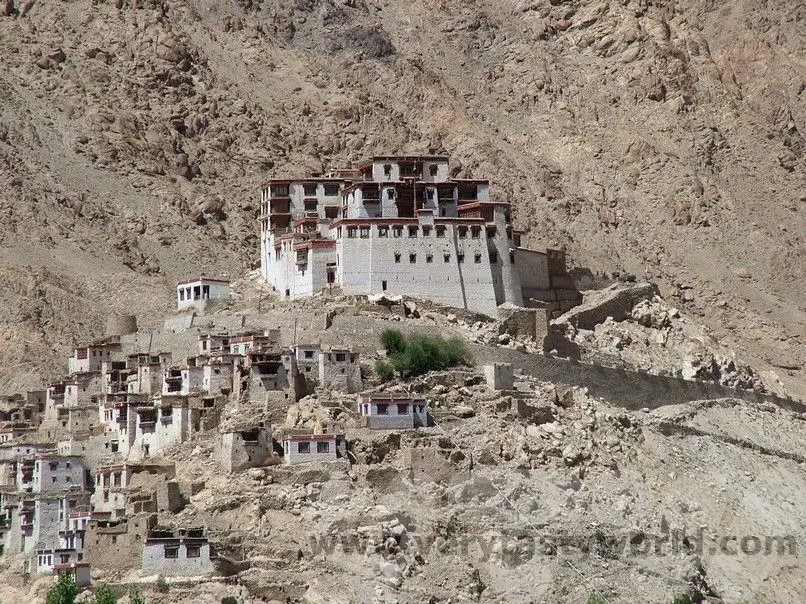
It’s just that the holiday sales pitch promotes the magisterial tranquillity of the experience without fully explaining the other, less expected, ‘joys’ that await the hapless tourist on their journey of a lifetime. It’s the laws of physics applied in a wider context, as every action has an equal and opposite reaction so every experience of aesthetic perfection must necessarily be tempered with some form of discomfort or inconvenience.
Travelling the Leh to Manali highway is a remarkable journey that takes three days. Our mode of transport for this illustrious road trip was a coach. If you are travelling in a coach on a long and winding road be aware that it could be bumpy. Don’t, whatever you do, sit in the back seats – you may want to relive those school trips where the cool kids all sat at the back of the bus, but the suspension and the road will have you bouncing around all over the place.
Leh to Sarchu
Soon after we left Leh we crossed the Taglang La – the second highest road in the world (at the time) at 5328m. When the road marker stated, ‘Unbelievable is not it?’ we couldn’t help but agree.
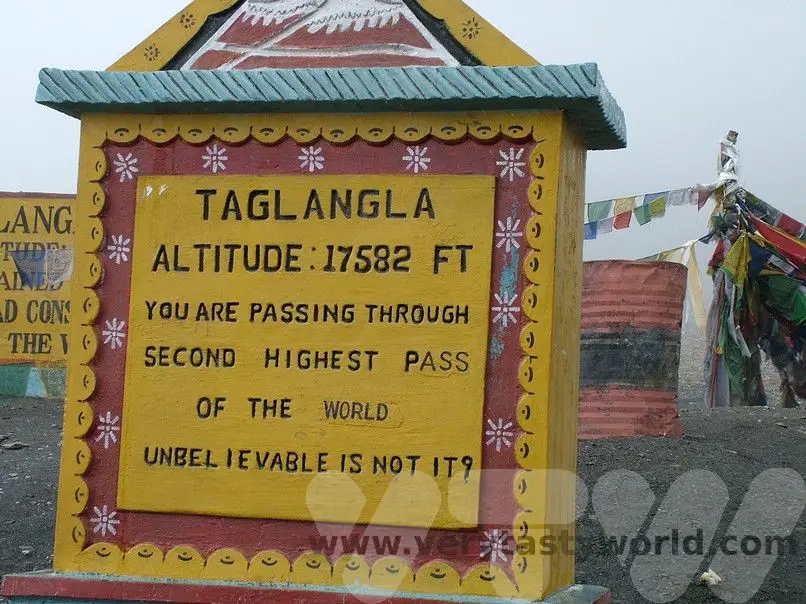
Then we wound our way through the Gata loops, a series of 21 hair-pin bends, which required the coach to engage in some mildly terrifying 3-point turns in order get around each curve, with the driver’s assistant getting out at each bend to take the vehicle’s wheels to the very edge of the road with its precipice below. Indeed much of the journey involved travelling along single track roads which skirted long drops to the valley below.
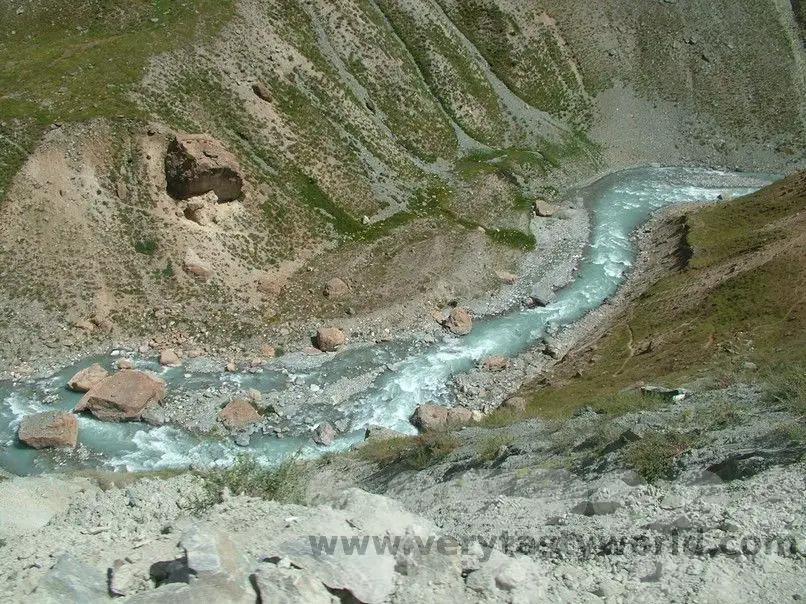
It is a lonely, desolate road, but also a strangely beautiful road.
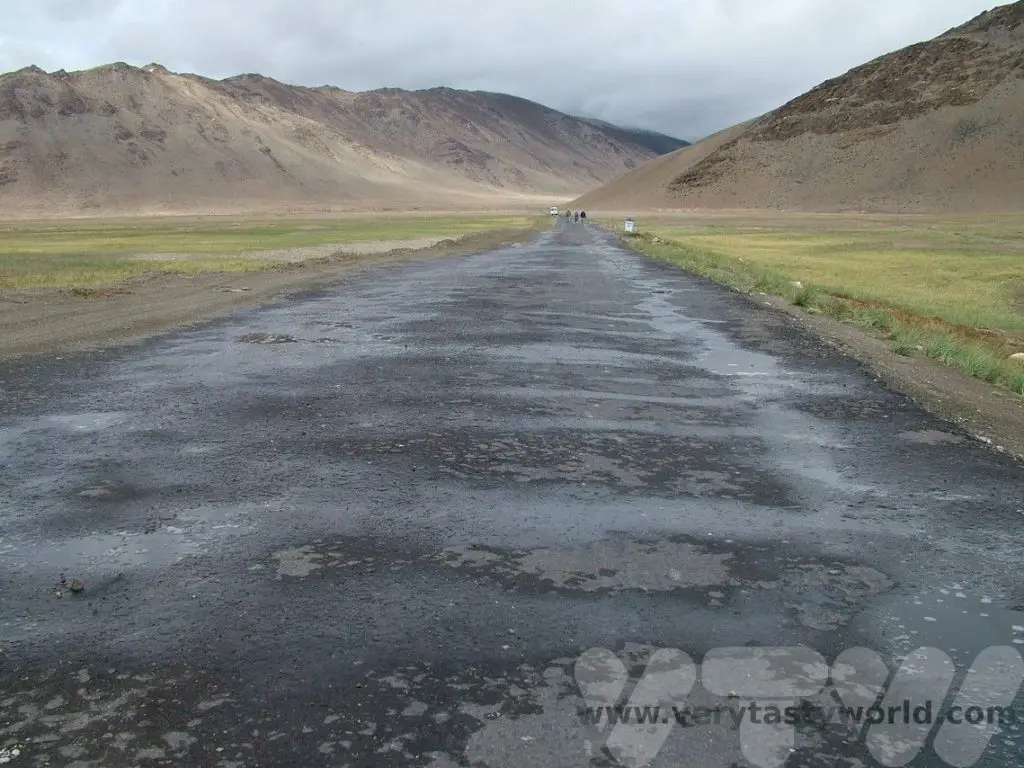
But it can be a dangerous road. All along the highway we saw evidence of vehicles that had not stayed on the highway and had plummeted several hundred metres into the valley below and were gently rusting in the river.
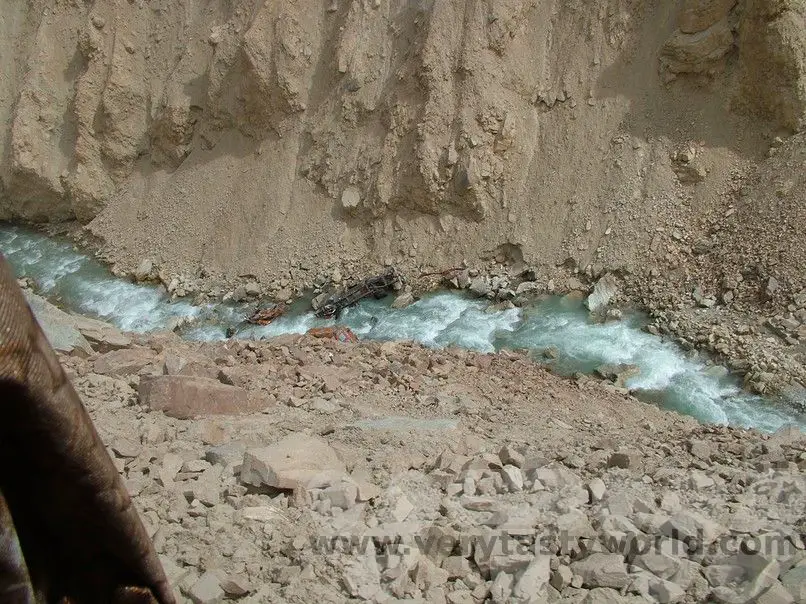
Along the route are camps where it’s possible to get a break and a cup of tea or a snack. We would see many workers whose job it was to maintain the road each year.
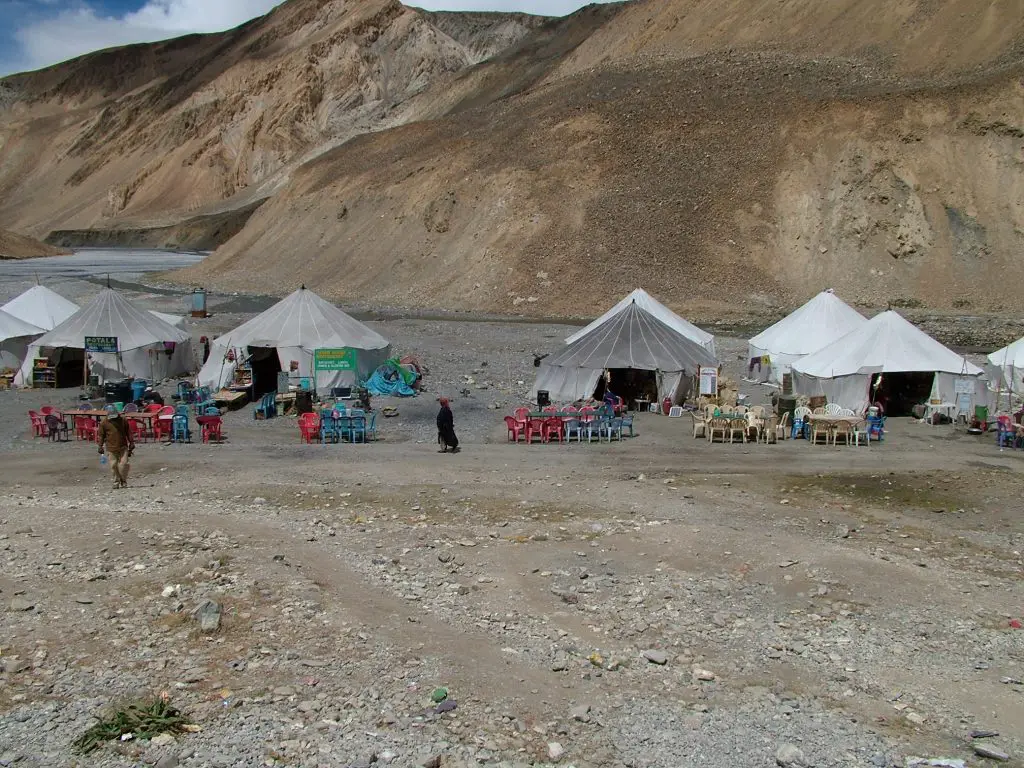
We were headed for Sarchu where we camped at 4200m.
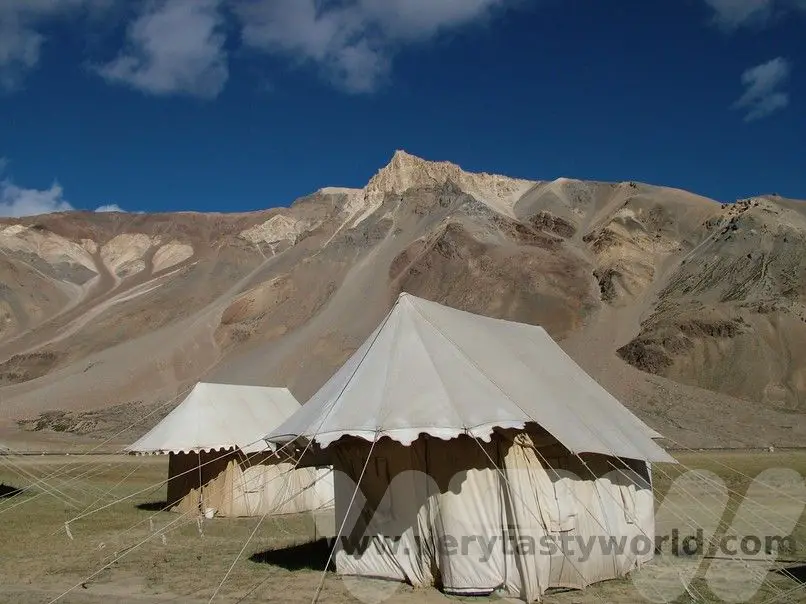
Considering the remoteness of the location the accommodation was good – our tent even had an en-suite toilet, basically a long drop loo with a seat. There was no shower but no need even to think about showering, or even getting undressed, as the temperature was very cold indeed. This was the highest altitude we have ever spent the night and, although we both had slight headaches, were generally fine.
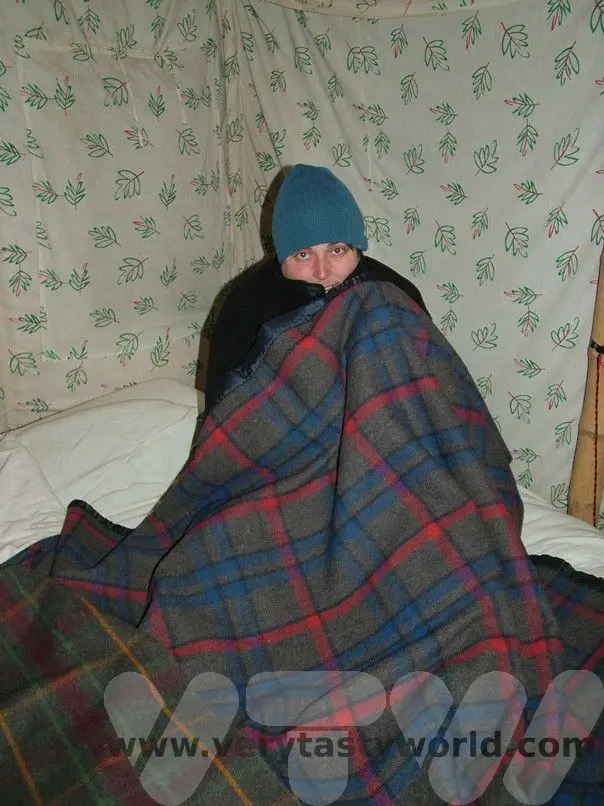
Sarchu to Jispa
The following day would involve the long and winding road climbing to 4891m at the top of the Baralacha La Pass and then descending to Jispa which was a pretty place to stop for the night. It was possible to have a walk around the area – much needed after sitting on a coach for hours on end.
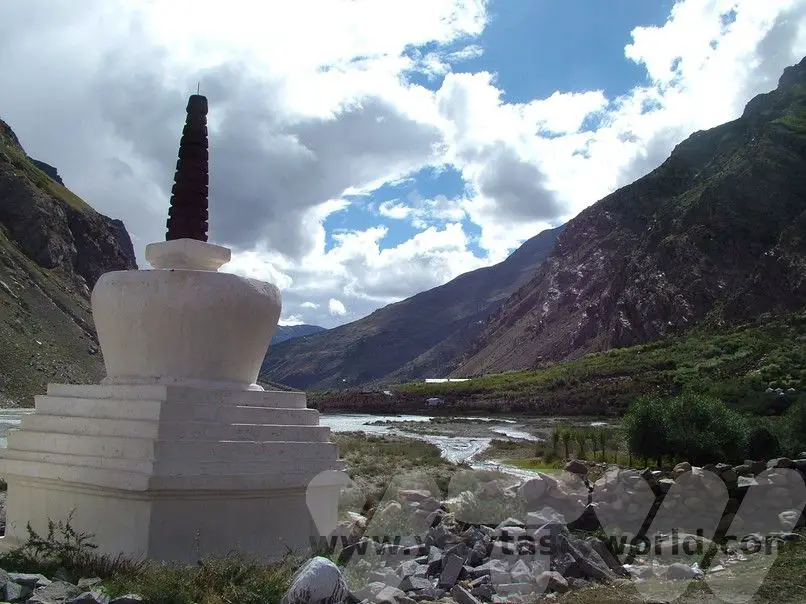
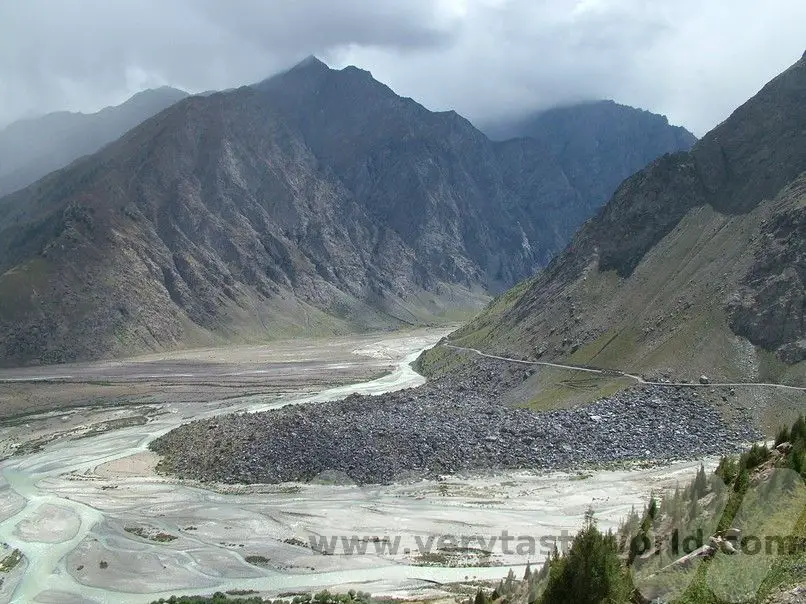
Jispa to Manali
The next day would offer something altogether unexpected. The Leh to Manali highway is a beautiful one and a treacherous one, but it is also the only one. Maintained for the short window of the year that it is actually traversable, the long and winding road is a marvel of man against nature. Except nature always, always wins. A case in point: scattered along the expansive road are a number of bridges crossing unfeasibly deep gorges through which the mighty Indus flows, plunging hundreds of feet into foaming rivers of kinetic danger. These bridges, as innumerable signs tell you, can only take one – that is one – vehicle at a time at a maximum speed of 5mph. So naturally a mini-convoy of four articulated trucks decided to play Indy 5000 across a particularly vulnerable bridge with inevitable girder-crashing results.
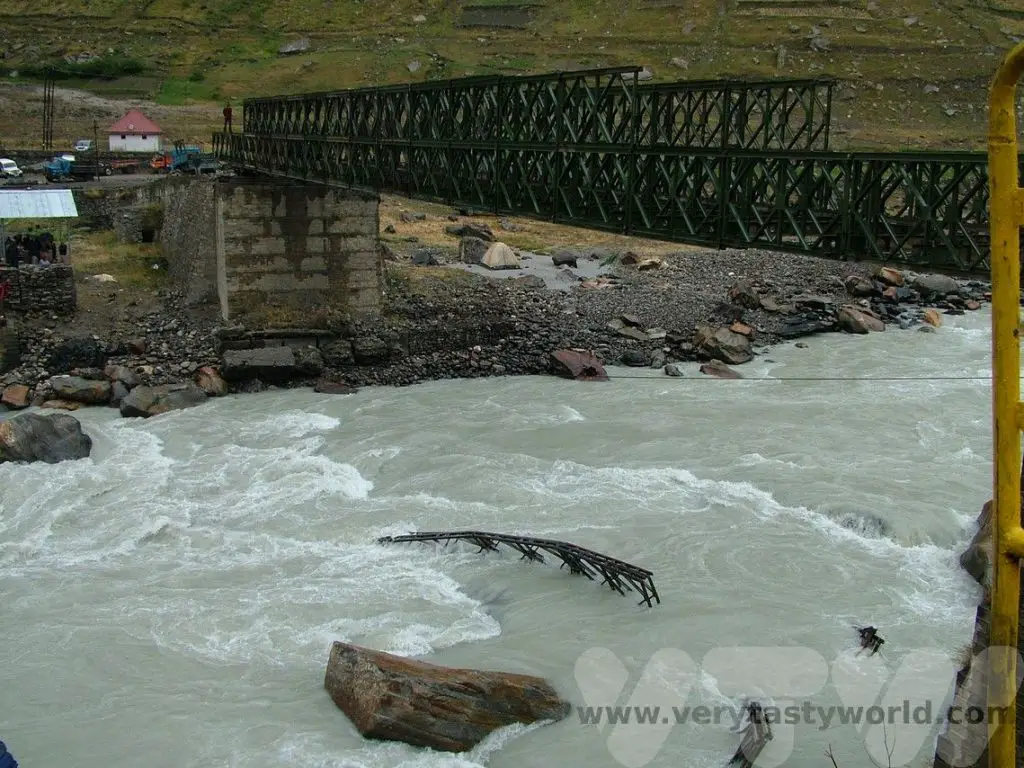
The result? One non-bridge slap-bang in the middle of the one of the world’s most inhospitable roads with ‘no-go’ season rapidly approaching and little opportunity to retrace our steps.
We had already travelled for two days. There wasn’t really any going back. It started raining. The ravine approached, with its considerable drop to rocks and fast flowing river, strewn with debris in busted and rusted decay. When we finally arrived at the crossing, the bridge was being slowly reassembled to make it safe to travel across the fissure of fear. Unfortunately it wouldn’t be ready in time for us to cross. But cross we must. Fortunately there was a solution.
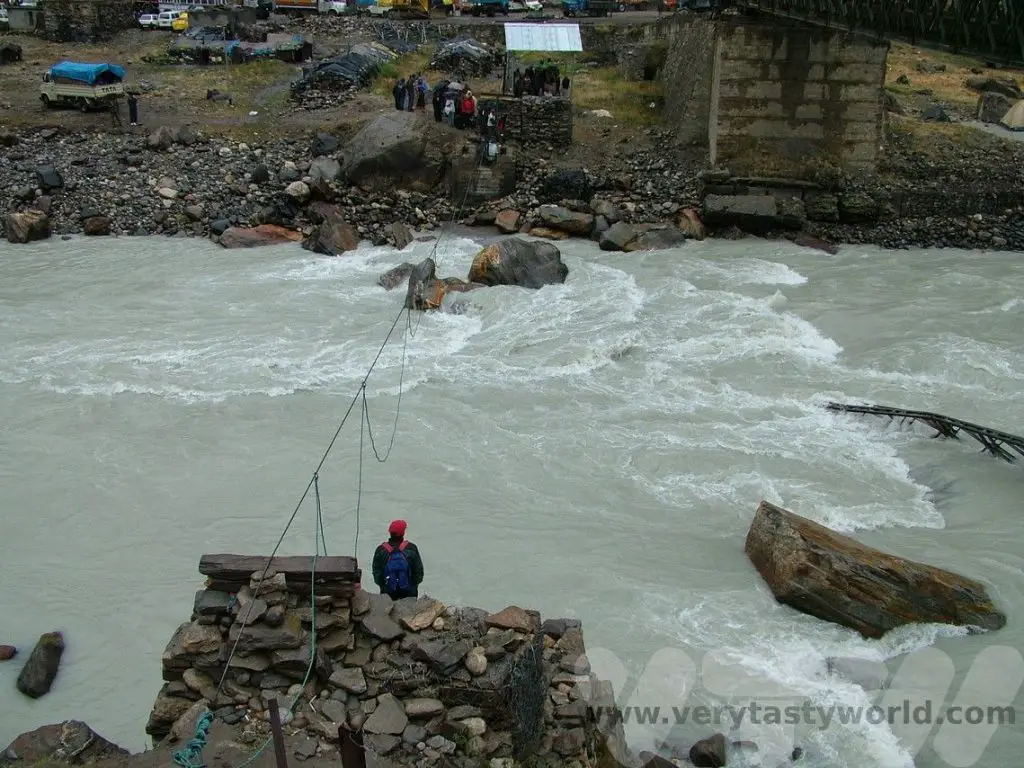
A petrifying solution that made rickety wobbling across a rusty bridge inside a heavy coach utter bliss compared to what was on offer: A cage. An open metal cage. A cage that needed to be accessed from the edge of a slippery jetty over a rocky fall. And then it was hoisted across the raging river on a rope, with the claustrophobic couple of passengers squished in together, along with their possessions, suddenly wishing they had packed less and not eaten so much. Horrifying consequences consolidated in the imagination as we were compacted in the cage of doom and pulled across the ravine in abject terror.
Fortunately these concerns proved to be unfounded as the cage glided across the turbulent torrent and deposited both human cargo and their luggage at the destination. Safe at last and on terra firma, rather than experiencing terror further. Soaked to the skin but with our lives and luggage intact, we dripped with joy. It’s a shame the coach didn’t make it (there was no cage and rope for the vehicle) but a back-up had been made available on the other side.
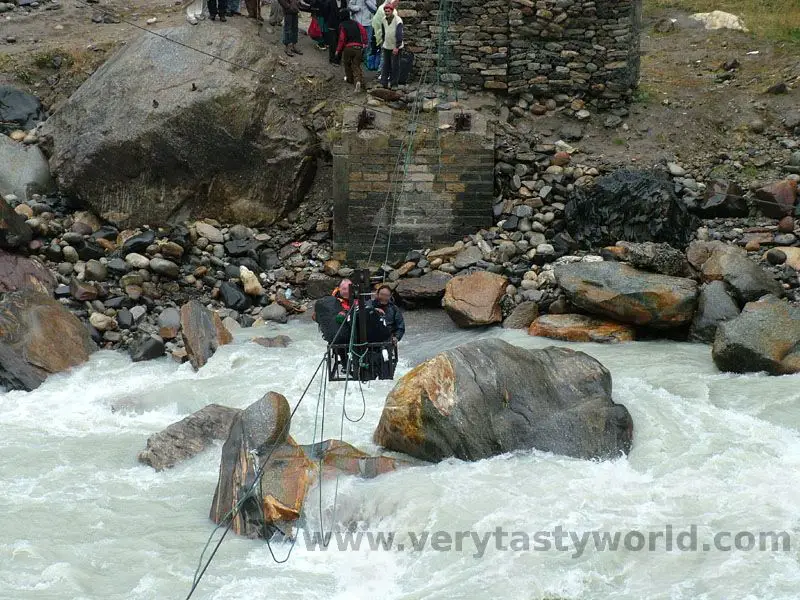
The experience had left us in much need of recovery sustenance. Fortunately for the ravenous rescuees there was a roadside café that offered a vat of dal and a plethora of freshly made chapatis that beckoned consumption. After such an ordeal any food may have been welcome, but this was the best tasting dal experience ever, the spice a delight, the texture a perfect consistency, with the forever welcome taste of fresh chapati allowing for distribution of the soupy lentil joy to instigate itself on the palette and in the stomach. Survival dal! A memorable meal.
Then it was simply a drive over the Rohtang pass (3977m)…
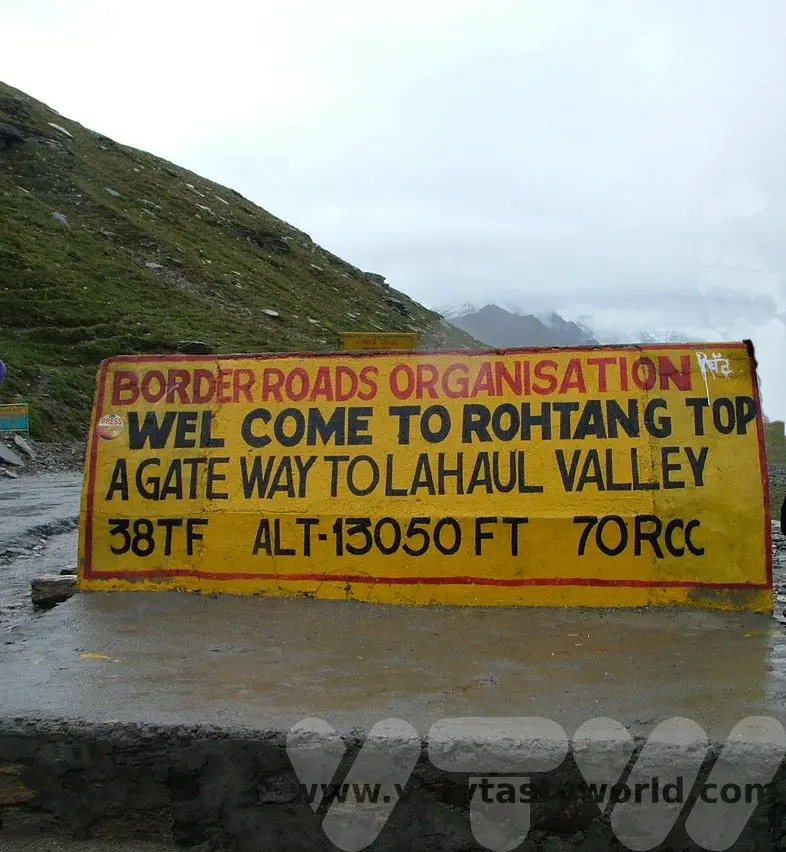
…and into the lush valleys of Himachal Pradesh towards Manali.
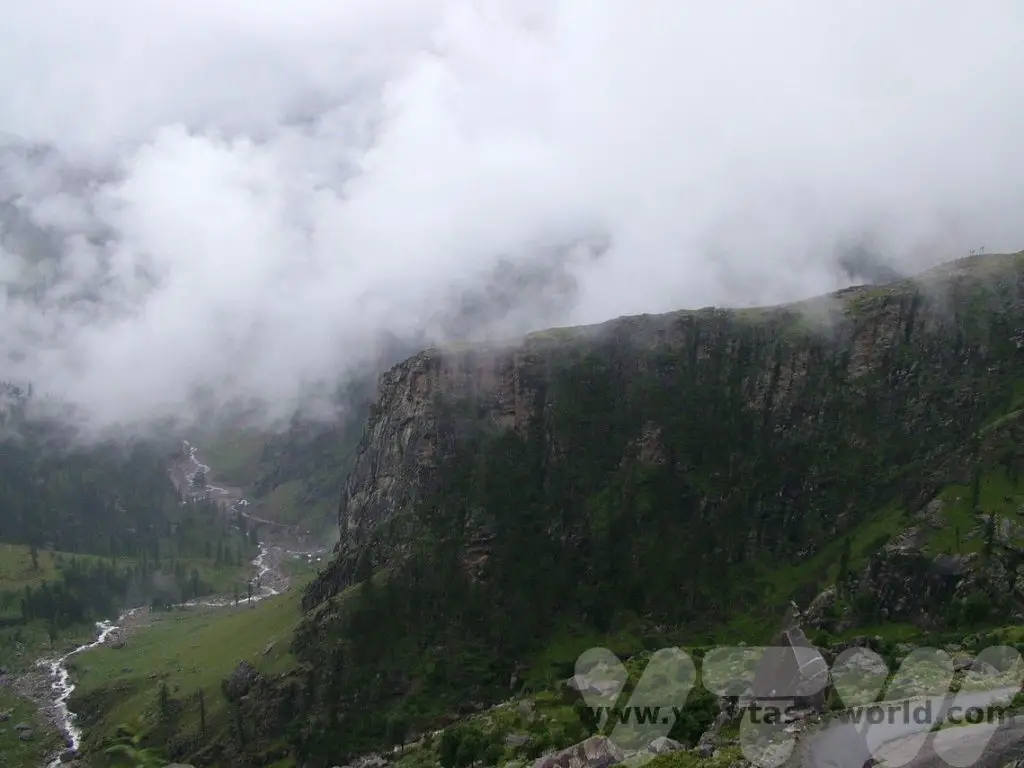
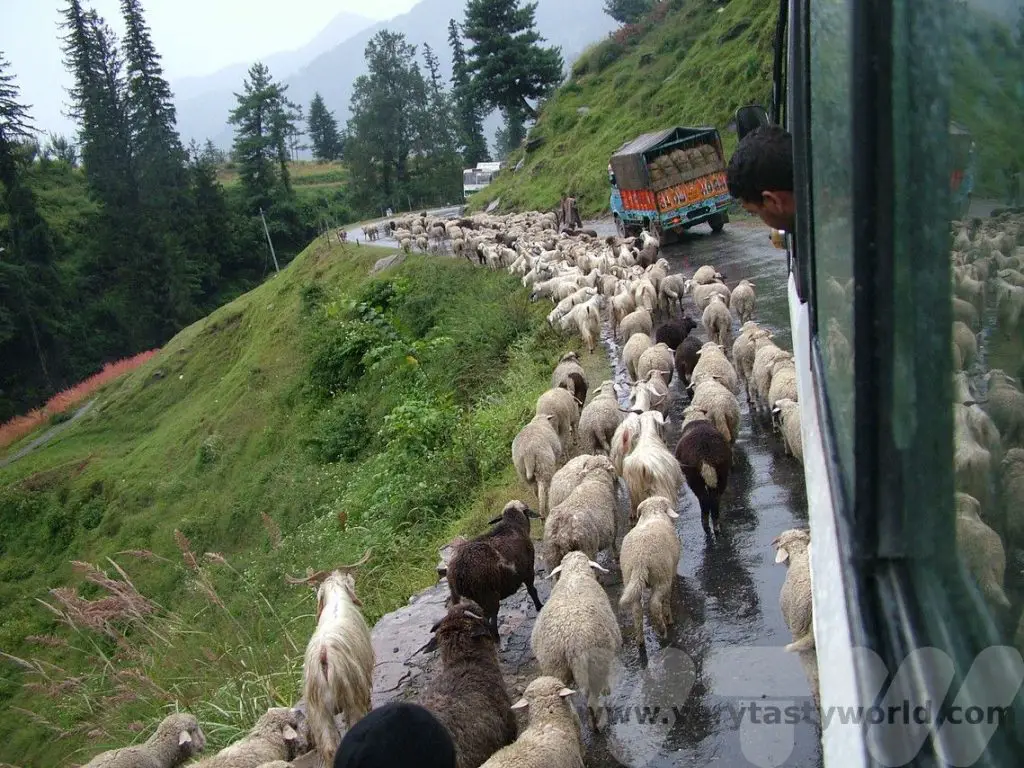
Related Posts You May Enjoy

Osaka Restaurants Japan – Kuidaore on Dotonbori
We visited Osaka (pronounced O-saka rather than o-SAR-ka) on our very first trip to Japan many years ago. We had already spent time exploring Tokyo, Hakone and Kamakura and it was following an afternoon and evening in Osaka, exploring the neon arcades and playing video games, taking silly photos in the print club booths, riding the Hep 5 big wheel and singing our socks off in a karaoke bar (where you get a private booth rather than have to sing in front of complete strangers), that we realised that we had fallen in love with Japan. The following day we visited the Dotonbori area in the Namba district and discovered Osaka’s restaurants. We decided that Osaka was our favourite place in the world.
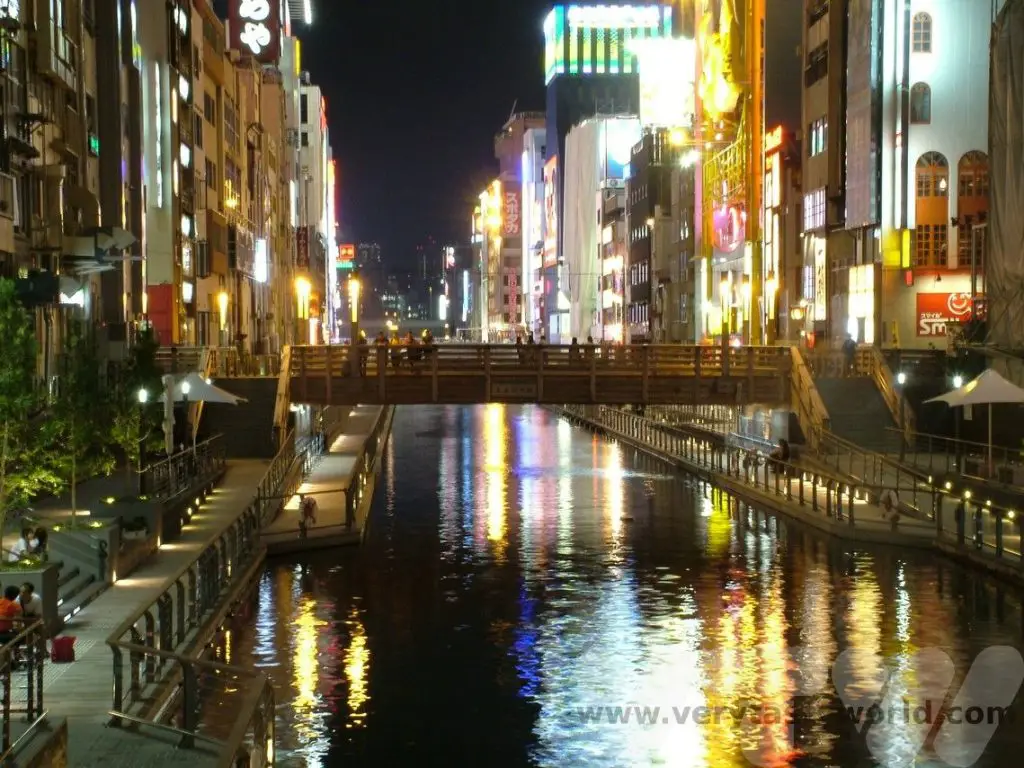
We’ve returned to Osaka many times over the years and we always make a beeline for Dotonbori. We’ve often stayed in business hotels close by. It’s a short walk away from the JR Namba Station Exit 14 (Yamatoji line), which is especially useful if you are using your JR Pass. Be aware that Namba is a big station. If you are arriving on the shinkansen (bullet train) you can get there from Shin-Osaka using the subway Midosuji line to Shinsaibashi Exit 4-B. (N.B. you can’t use your JR Pass on the subway.)

Osaka is known for being one of Japan’s centres of commerce, indeed there’s a phrase that many salarymen use as a greeting: ‘mokari makka’ which means ‘are you making money?’ The residents of Osaka speak Kansai Ben, the dialect of the region. It’s quite different to the Japanese we’ve learned in classes. For example, Osaka residents will say, ‘okini’ as thanks instead of ‘arigato’; although arigato will absolutely be understood you may well receive a big smile if you use ‘okini.’
Dotonbori History
Dotonbori means ‘Doton Canal’ and the history of the area goes back several hundred years to 1612 when Yasui Doton, a local merchant, started constructing a canal system in the area to link the Kizugawa river to the Umezu river. However, he was killed in 1615 during the Siege of Osaka and his cousins completed the canal project, naming it after Doton. Following completion, the area thrived, trade increased due to the better transportation along the canal and Dotonburi became an entertainment district, with theatres, teahouses and restaurants. It’s a fantastic place to visit, especially for foodies!
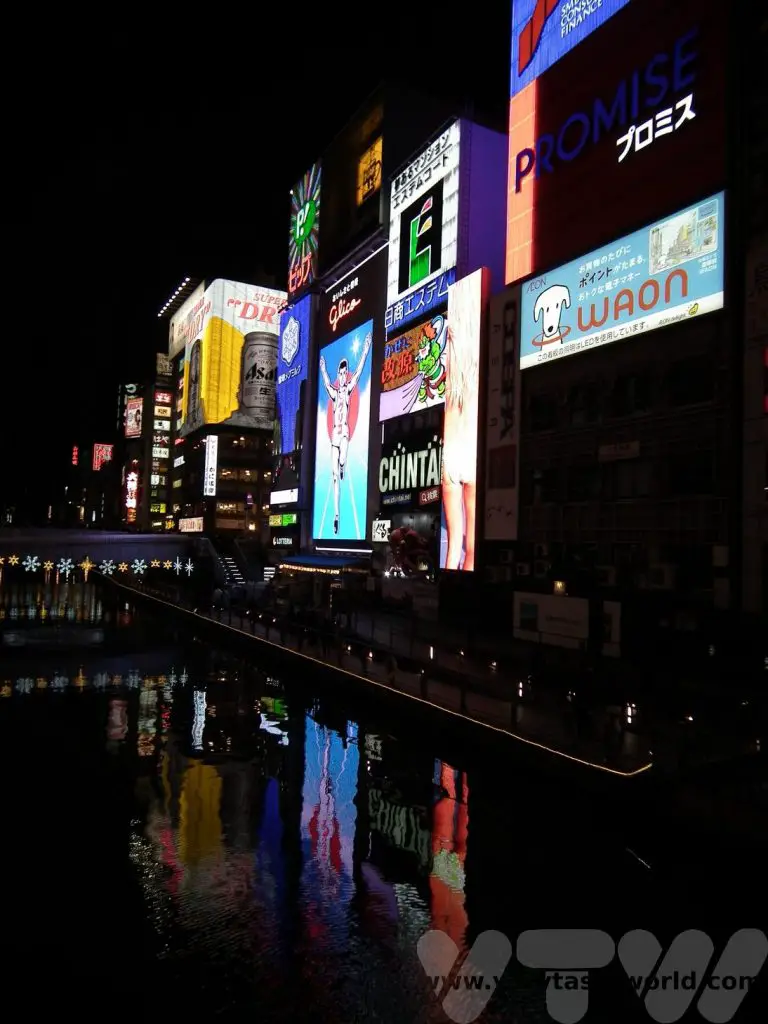
The district is defined by street between the Dotonboribashi Bridge to Nipponbashi Bridge. Probably the most iconic image of the area is that of the Glico running man – and it’s essential to see him at night, brightly lit in neon. Glico is a sweet manufacturer established in 1922 and famous across Japan. They are probably best know for those delicious Pocky coated biscuit sticks.
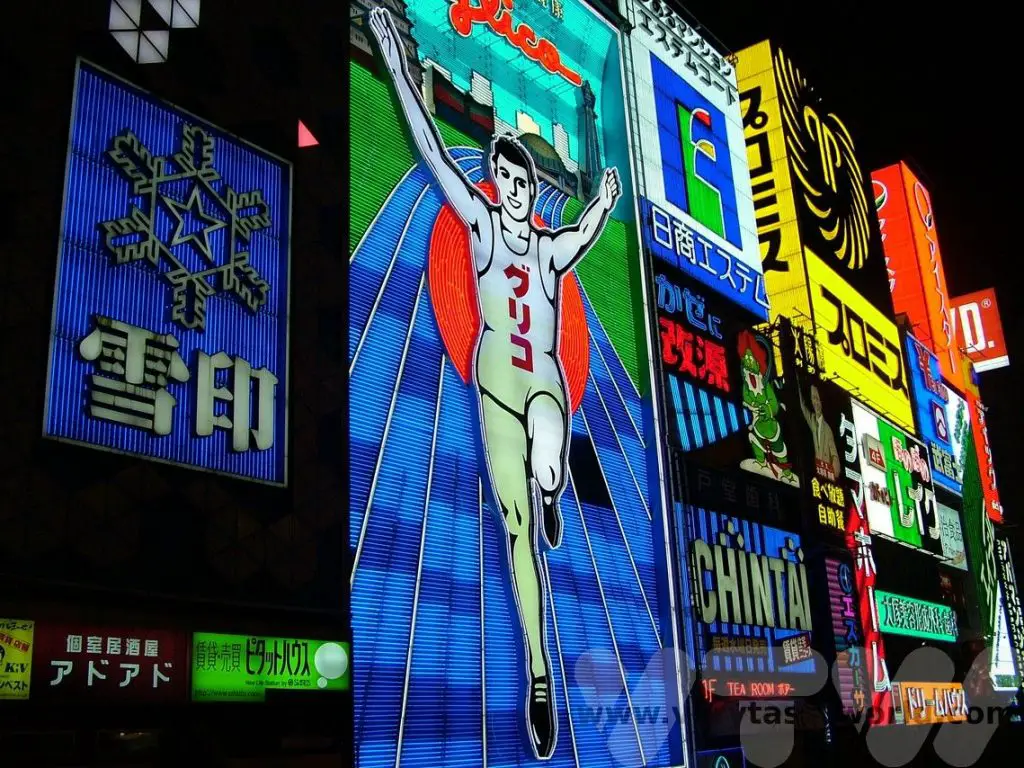
Dotonbori is one street, but actually the surrounding streets are also full of excellent bars and restaurants. We’ve had some of our best nights out in Osaka by wandering into random bars in the area. Locals and tourists alike are very friendly and we’ve often just started chatting with people. There was one particularly memorable night when a pair of airline pilots decided to buy Jagermeister bombs (a Jagermeister shot inside a glass of Red Bull) for the denizens of the entire bar which resulted in a highly caffeinated boozy evening and us sleeping in so late that we missed much of a planned excursion to Kobe the following day!
Kuidaore
The word ‘kuidaore’ means to go bankrupt by extravagant spending on food and Dotonbori would be a place where you could have a really good attempt at achieving this as it is chock full of excellent restaurants.
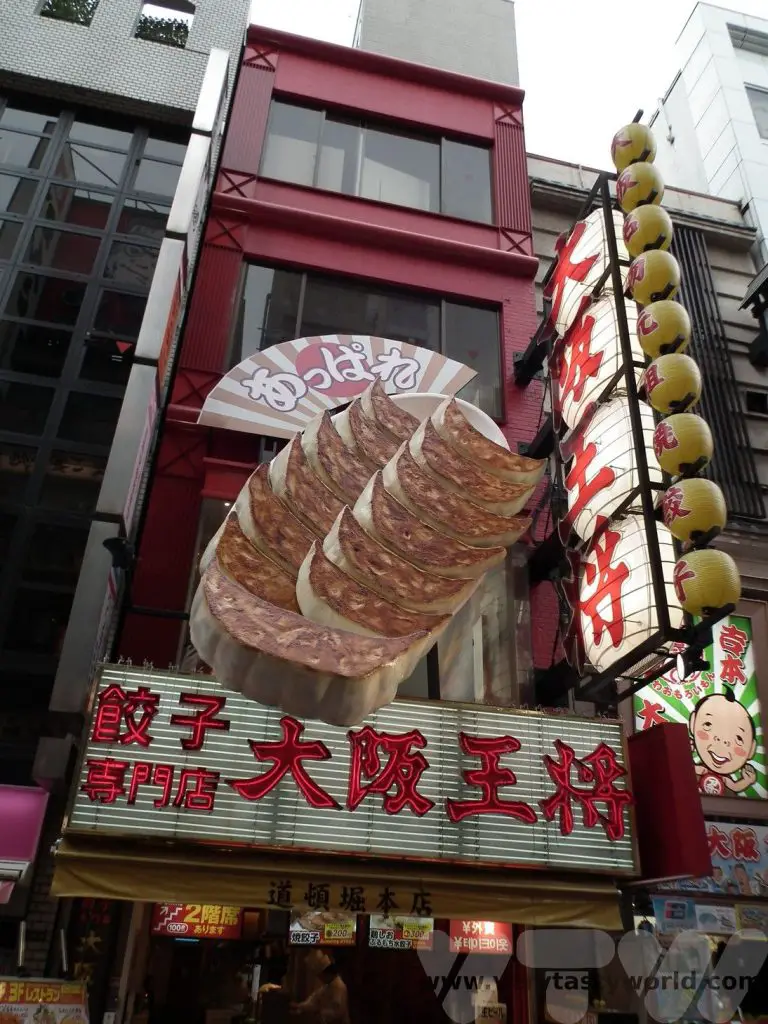
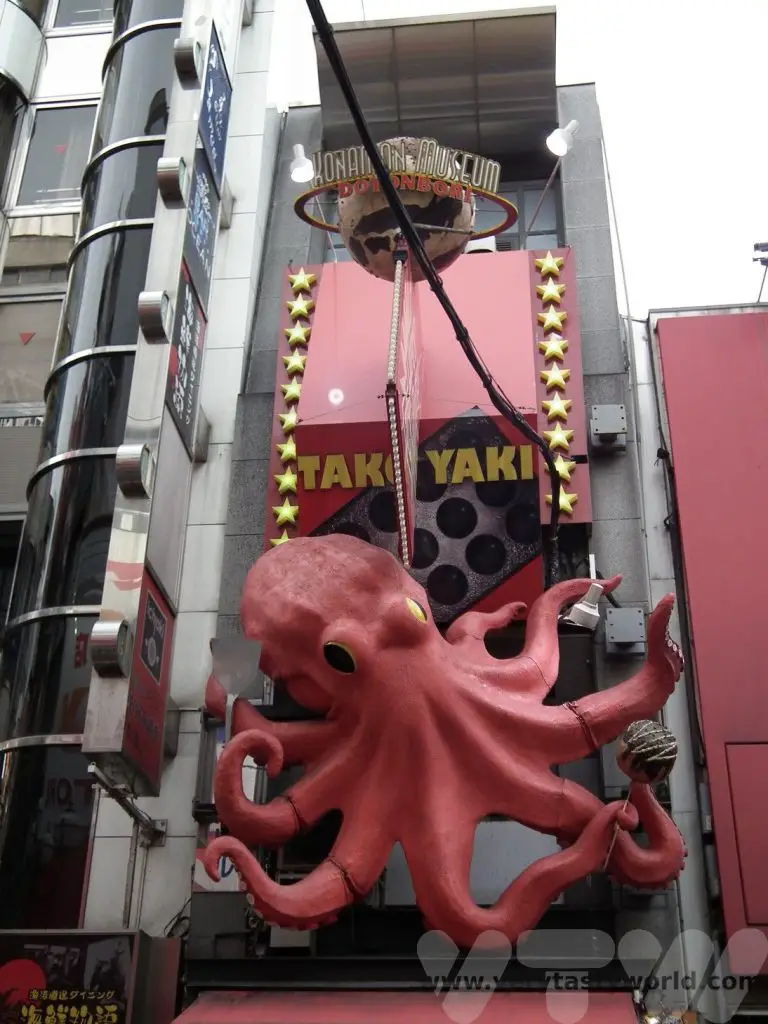
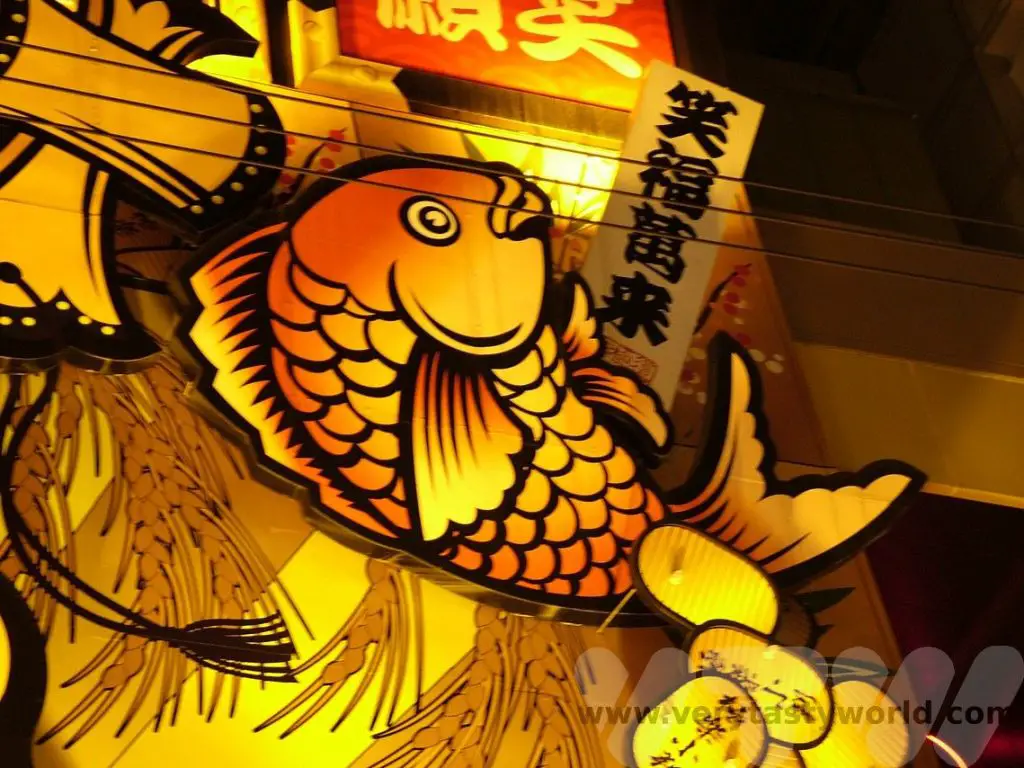
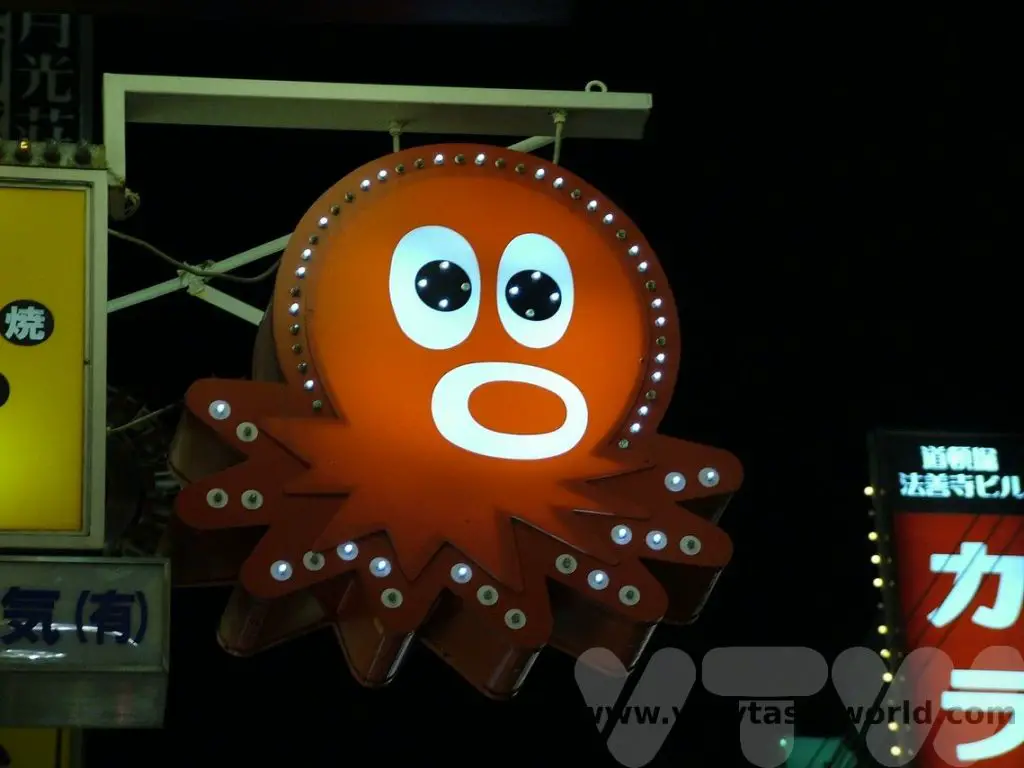
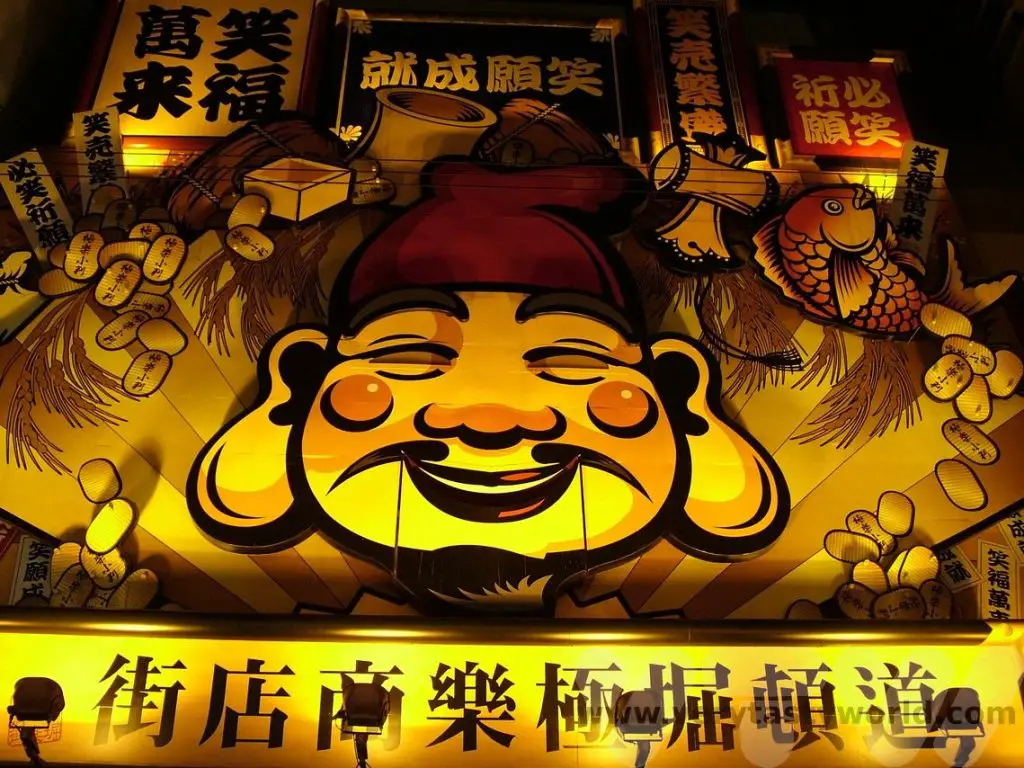
One thing to remember when visiting cities in Japan is to look up! In the UK most shops and restaurants are located at ground level but Japan is a country with high rise buildings. Very often shops and restaurants will be located on multiple levels within the same building. You will often see boards outside the building advertising various emporia: F1, F2 etc to go up, B1, B2 etc to go down. (N.B. floor levels in Japan match the American model where the ground floor is called the first floor, unlike in the UK where the ‘ground floor’ is at street level and the next floor up is the ‘first floor’.)
Essential Osaka Restaurants
Takoyaki – The Best Street Food
Takoyaki is quintessential Osaka street food. It comprises spherical octopus pieces in a batter which are cooked en masse in a griddle.
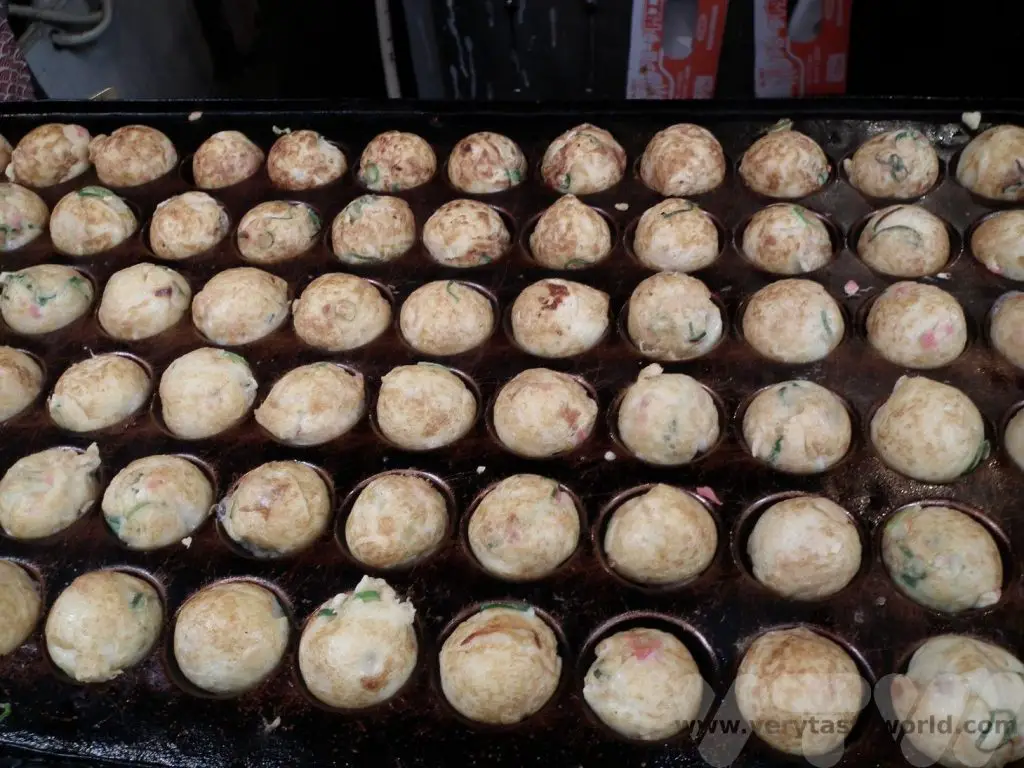
The takoyaki maker expertly and deftly turns each octopus ball by hand so that they are cooked evenly.
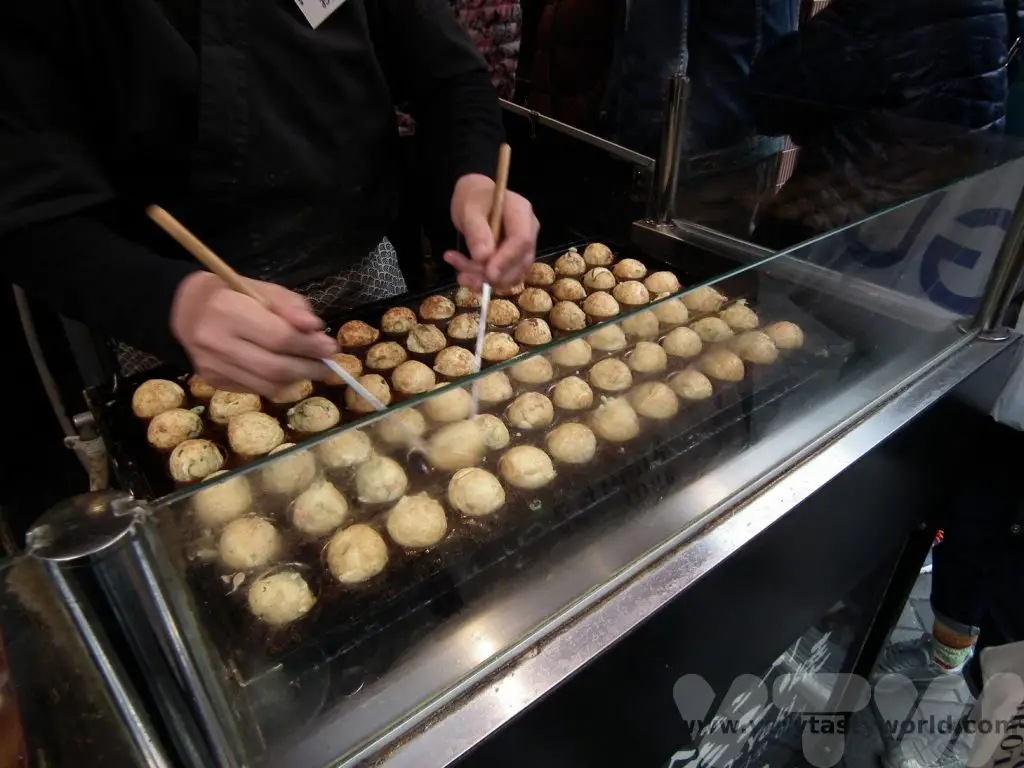
Served with mayonnaise, takoyaki sauce (which is similar to brown sauce) and bonito flakes (skipjack tuna flakes shaved to wafer thin slices – which are rich in umami and are often used to make Japanese dashi stock), which undulate gently in the heat of the takoyaki. You just have to wait a little while before scoffing because they will be extremely hot as soon as they come out of the griddle.
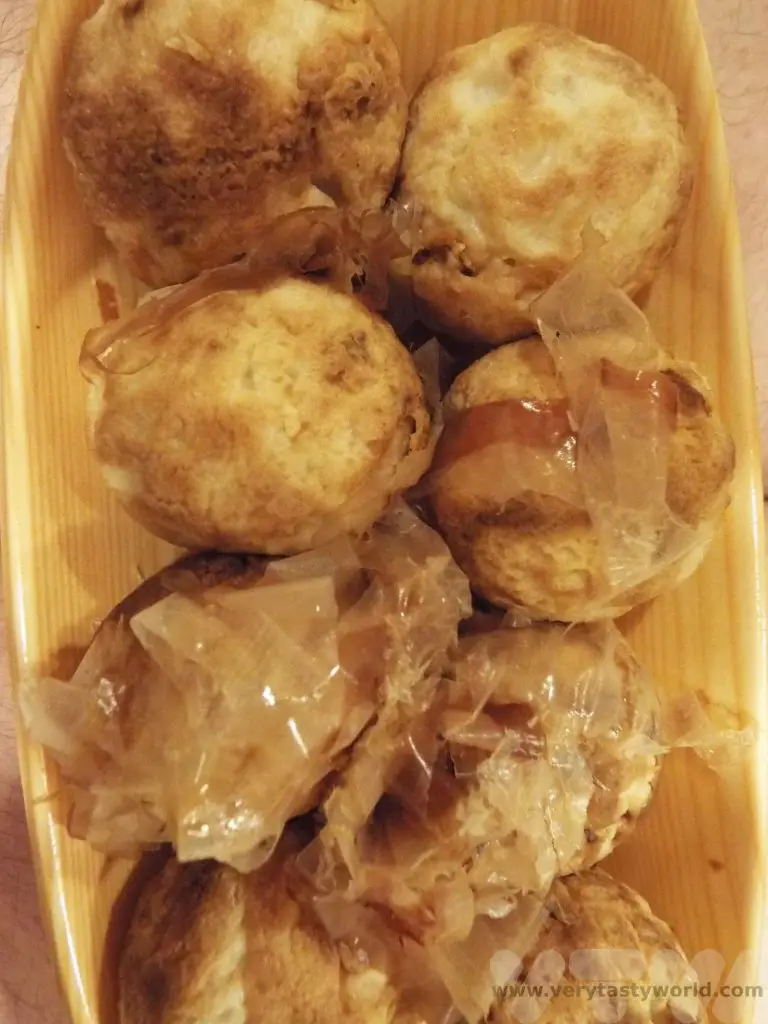
Okonomiyaki – As You Like It
Okonomiyaki, which translates as ‘as you like it’, is often described as a cross between a pancake and a pizza. It’s a cabbage based batter (but don’t let that put you off – it’s really delicious) with multiple fillings and toppings. Some establishments have a chef prepare the okonomiyaki, others will let you sit at the griddle and you can cook it yourself.
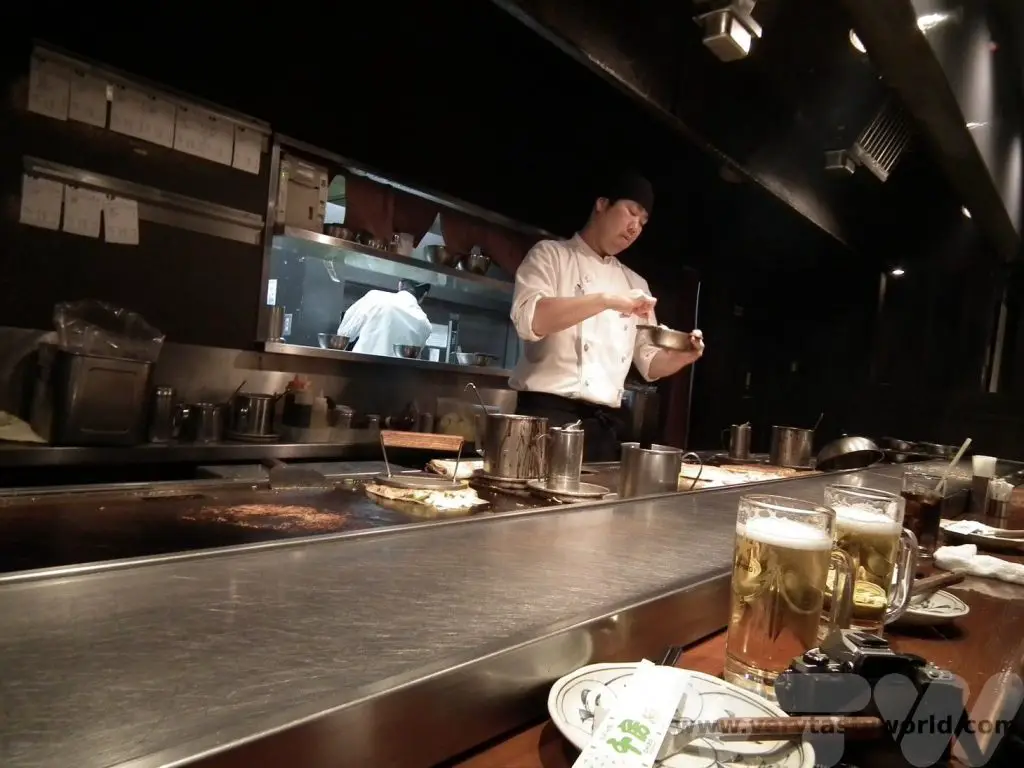
The basic batter mixture is prepared and cooked on the griddle.
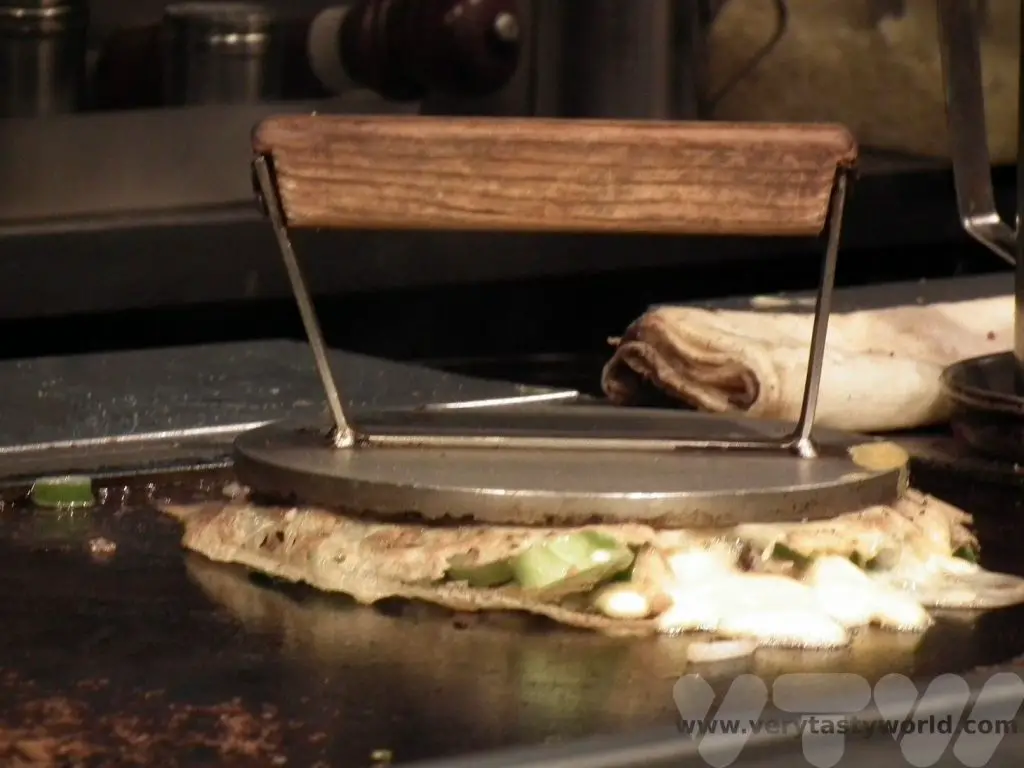
Then you have a choice of toppings – meat and prawns are popular choices and veggie options, such as kimchi are also available.
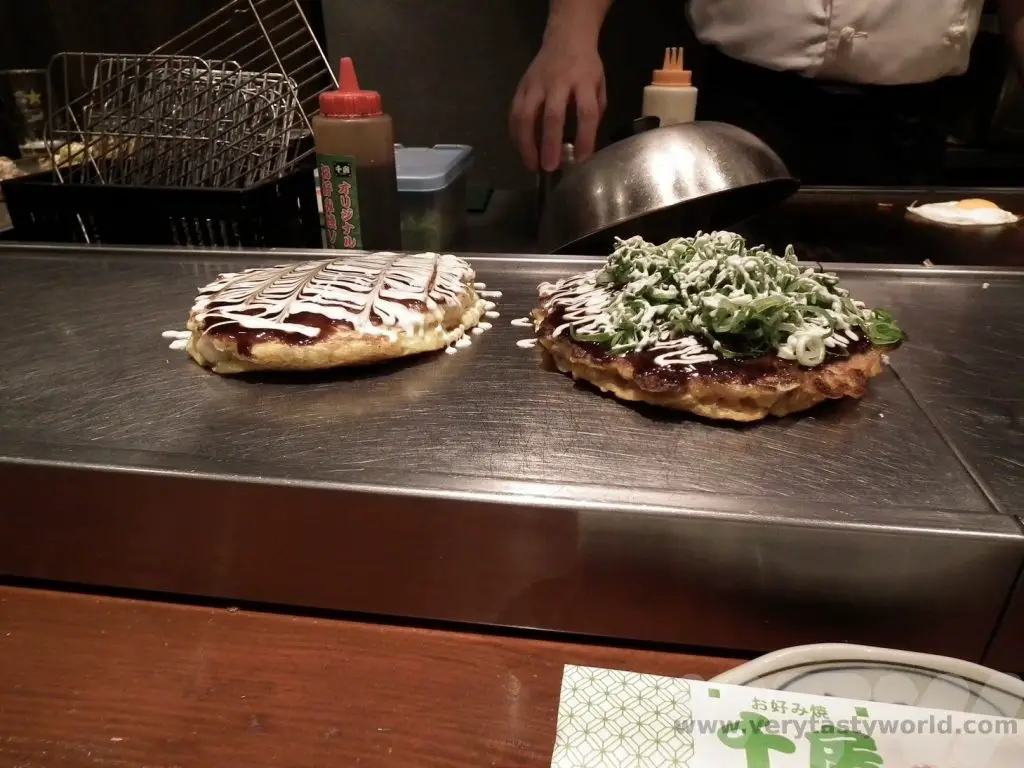
The okonomiyaki will be garnished with a variety of yummy things, including mayo, okonomiyaki sauce (similar to takoyaki sauce/brown sauce), flakes of nori seaweed and those delightful undulating bonito flakes. Chilli sauce may also be available. The chef will embellish your okonomiyaki in the most delightful way. And of course, when the chef asks you what garnish you would like, the correct answer is EVERYTHING!
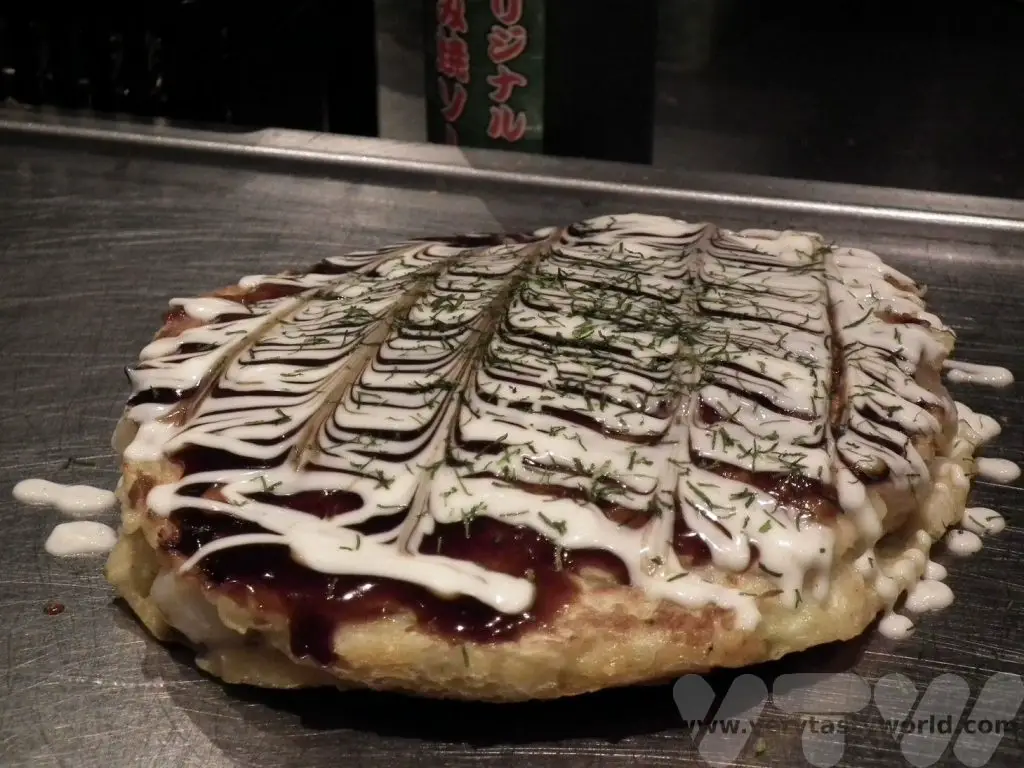
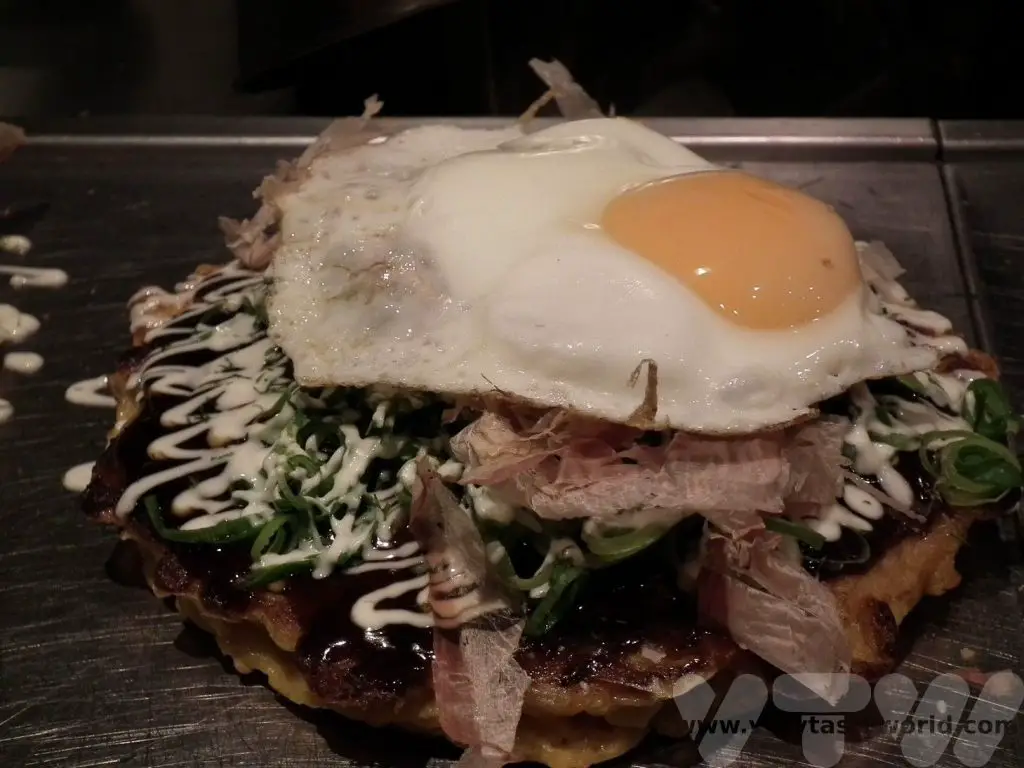
Fugu – Dare You Try Puffer Fish?
Fugu is the fish that has a formidable reputation – it’s the puffer fish, parts of which are deadly poison particularly the liver, the ovaries, eyes, and skin. The toxin basically paralyses you and you asphyxiate while still conscious. Not very nice at all.
But fugu is also a prized delicacy. The non-poisonous bits are fine to eat but absolutely can only be prepared by a licenced chef who has trained for several years. You can eat fugu all over Japan but it was at Zubora-ya, with its highly distinctive sign comprising a giant pufferfish lantern outside the restaurant, that we first tasted this fearsome fish.
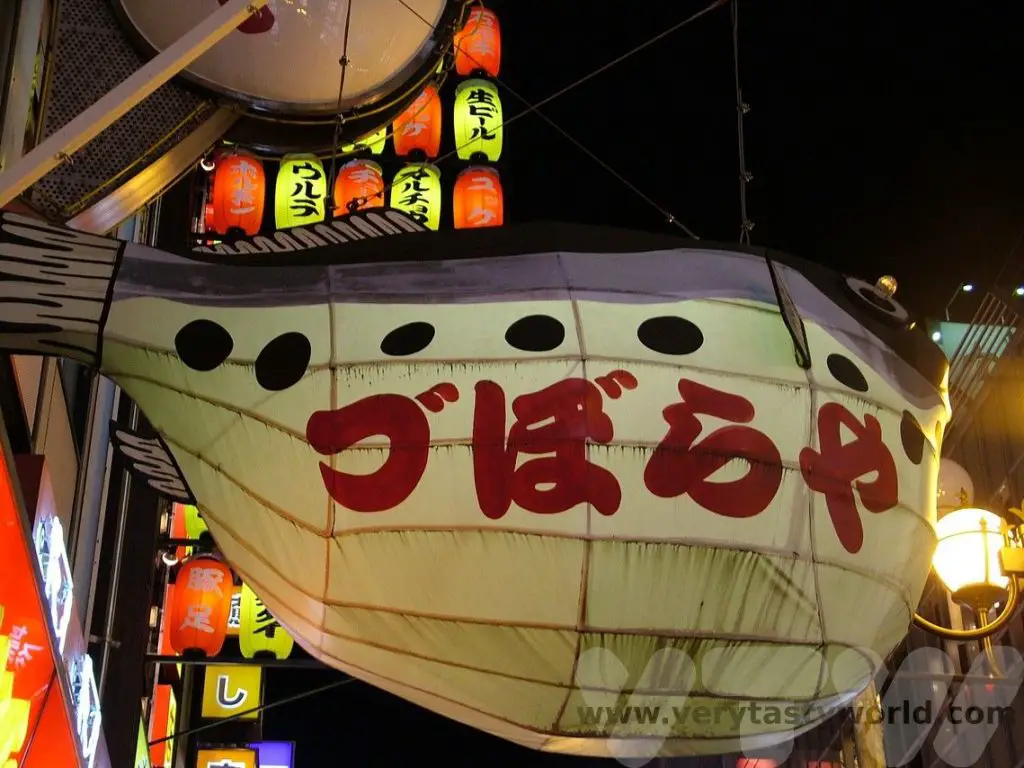
We thoroughly enjoyed a set menu at Zubora-ya – sushi and sashimi is the conventional way to enjoy fugu. It has a mild flavour and a firm texture that is something like a cross between squid and monkfish. It was delicious. And we survived!
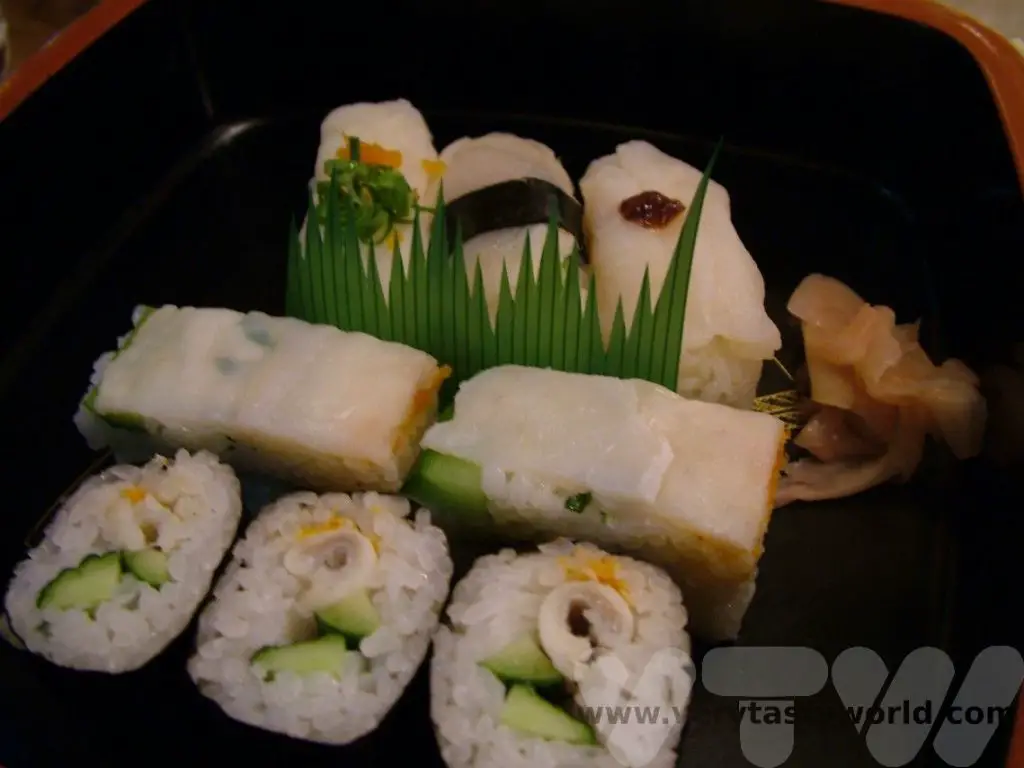
Sadly, Zubora-ya had to close during the pandemic and has not reopened.
Kani – Crab Heaven
Kani Doraku is another distinctive restaurant which has a model of a giant crab waving its pincers on the outside wall, beckoning you inside (well, that’s our interpretation!).

We have eaten here several times and always had a hugely enjoyable meal. Again, it’s a multi-storey building and, depending on how busy it is you may eat within the restaurant or be taken to a private room with tatami mat flooring and a telephone. The telephone was a bit daunting first time around but we picked up the phone and said, ‘kite kudasai,’ (please come here) and someone came along to take our order – which largely involved pointing at a picture menu. Even though it’s a large restaurant it’s very popular these days so it’s worth booking. There are actually multiple restaurants of this chain along Dotonbori, so check out the others if the first one you try is full. (The most popular is closest to the Glico Man.) The set menus aren’t cheap but they are good value and the food is utterly delicious.
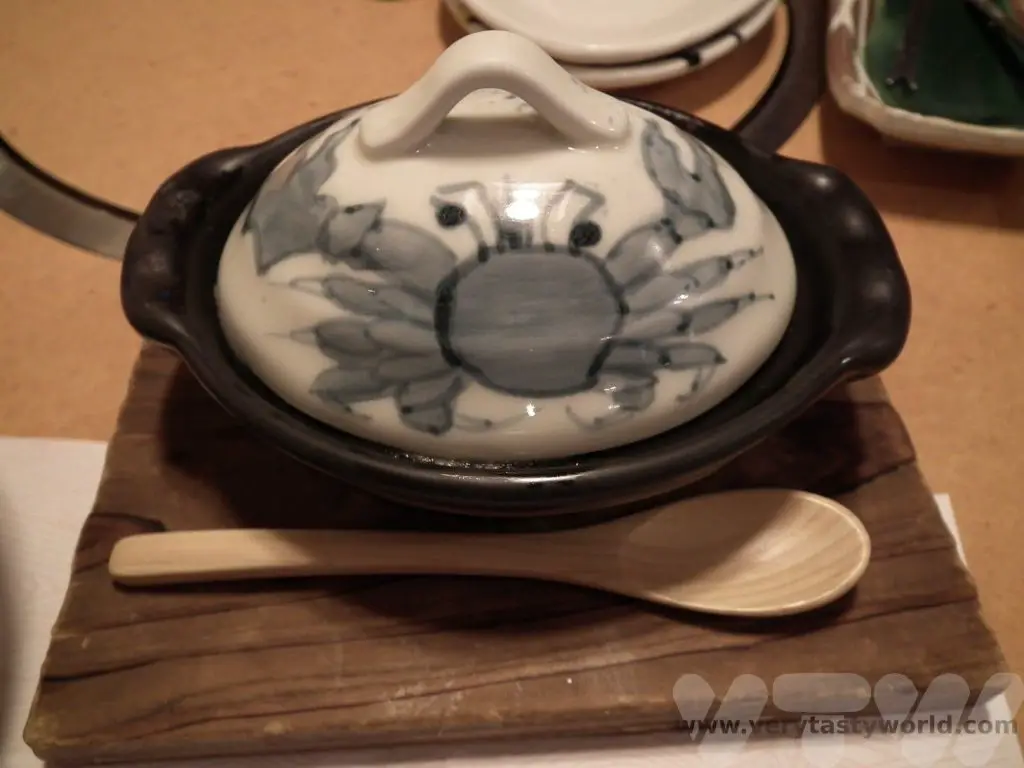
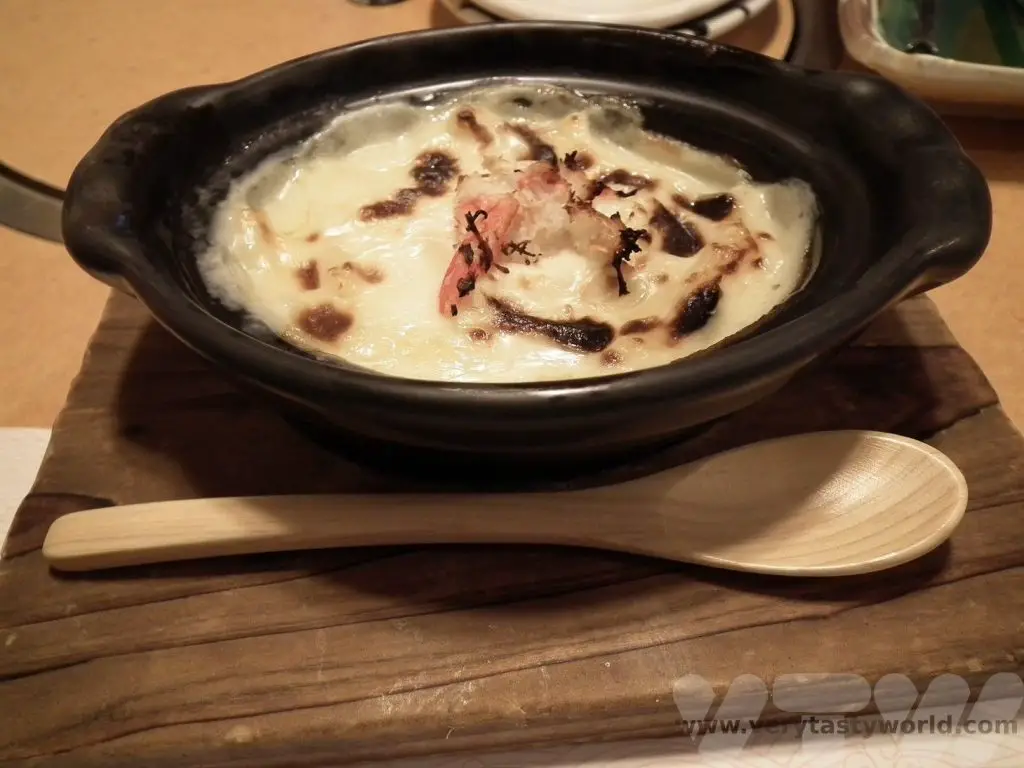
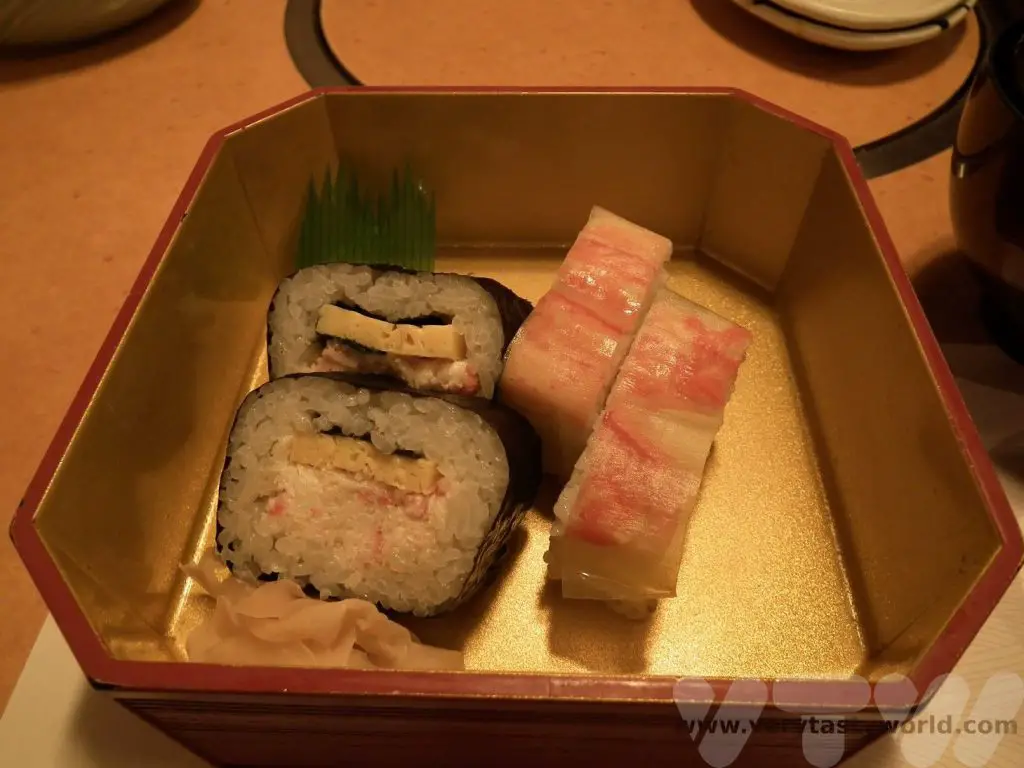
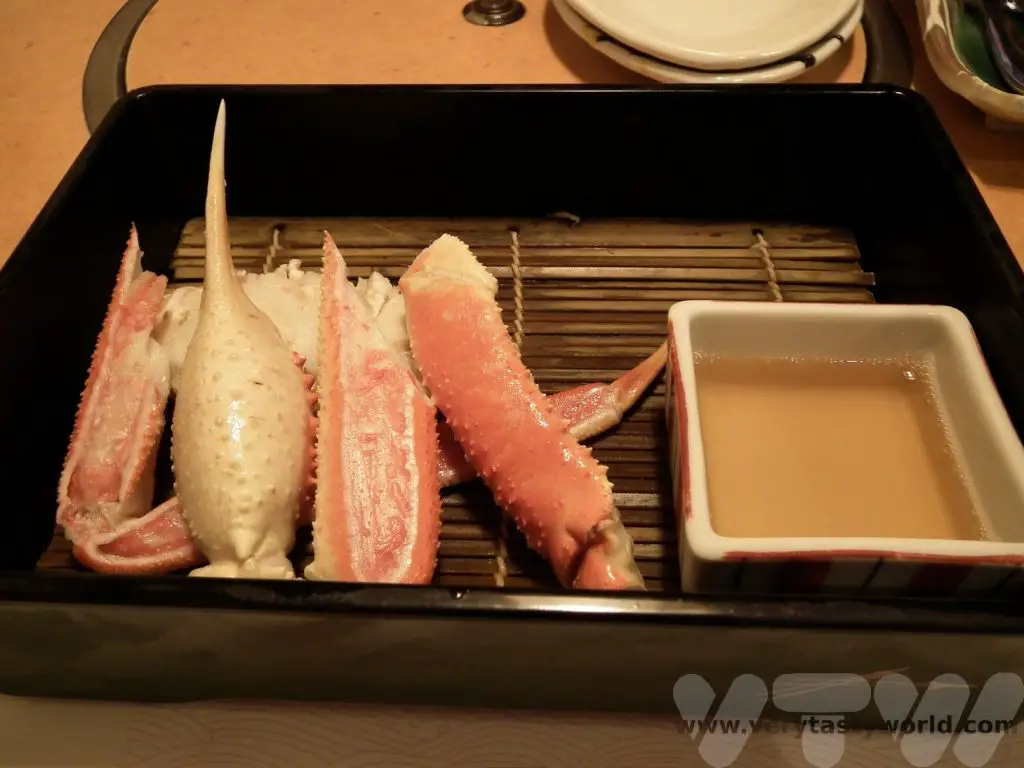
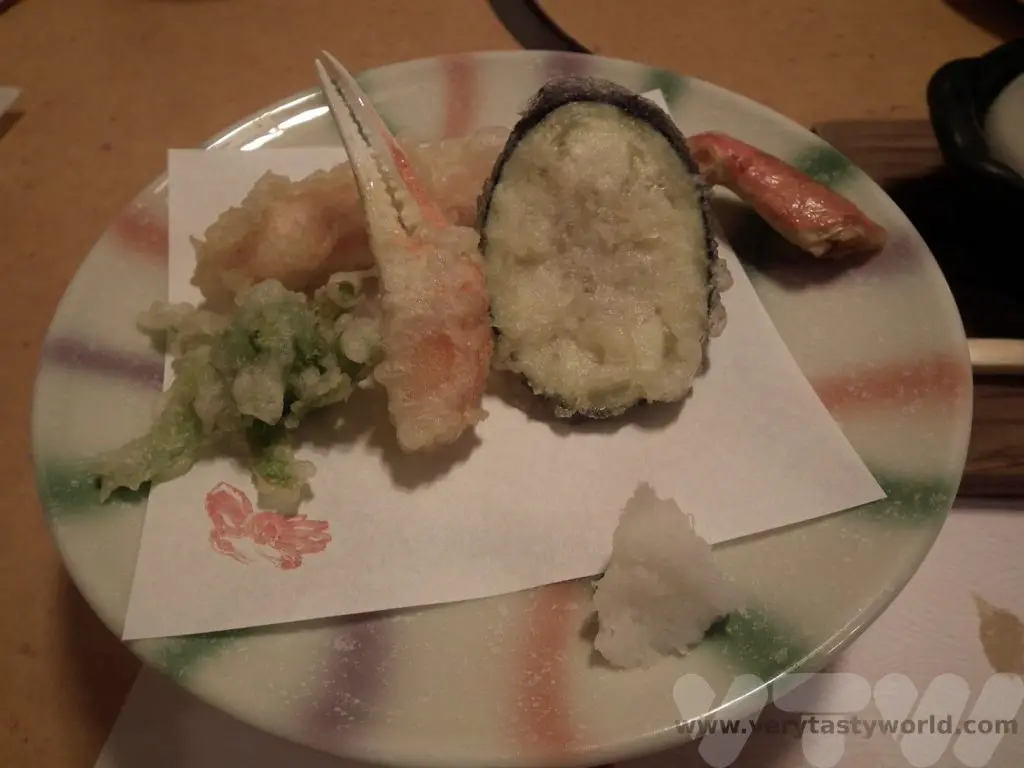
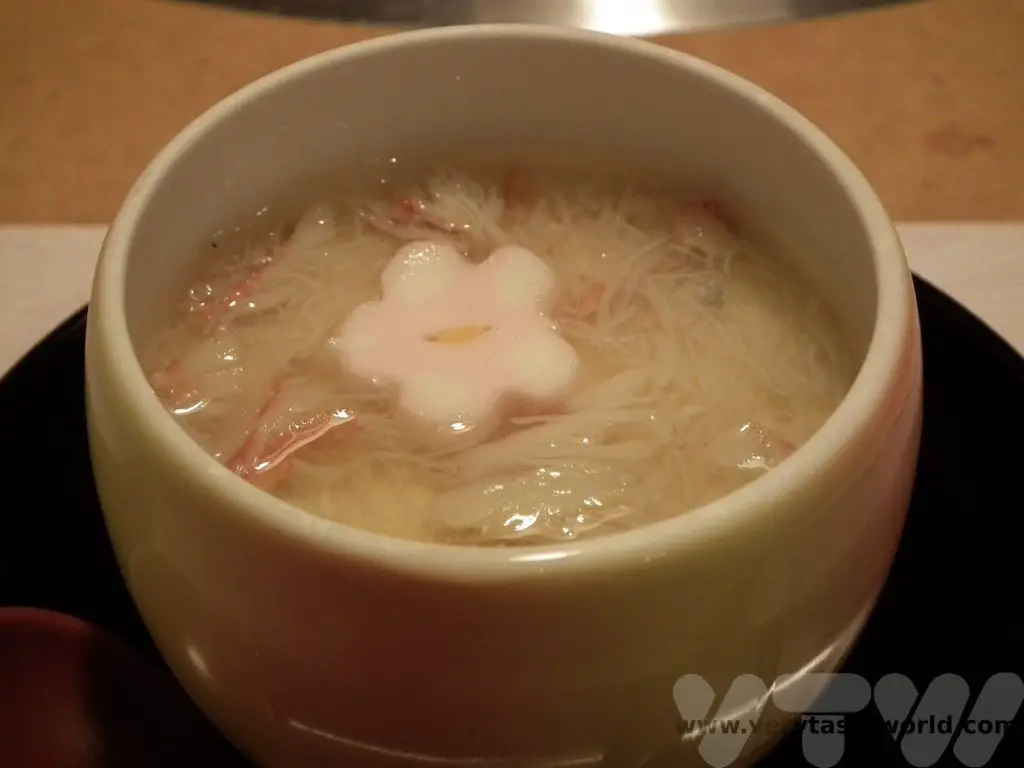
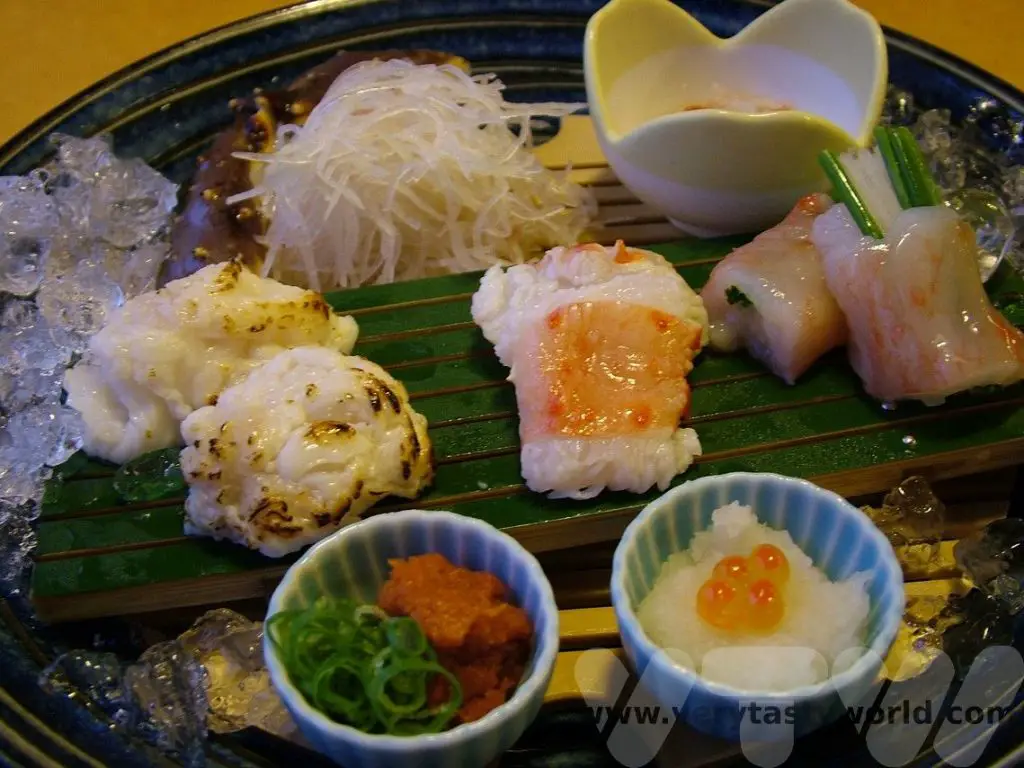
We’ve enjoyed crab sushi and sashimi, crab chawan mushi (steamed egg custard), crab tempura and crab gratin with a clear soup and matcha ice cream for dessert. Utterly delicious.
Other Dotonbori Establishments
There are loads of other restaurants along Dotonbori and the surrounding area. Kuidaore was an enormous eight storey restaurant founded in 1949. It was recognisable by its iconic Kuidaore Taro Clown, a vaguely creepy mechanical drumming puppet at the entrance. Sadly it closed some years ago but the building was populated by different shops and restaurants in what’s now known as the Nakaza Cui-daore Building.
If you like ramen noodles (and who doesn’t?) there are three Kinryu restaurants along the street. Kinryu translates as ‘golden dragon’ and the restaurants can easily be found by their distinctive dragons on the hoardings above the shopfront.
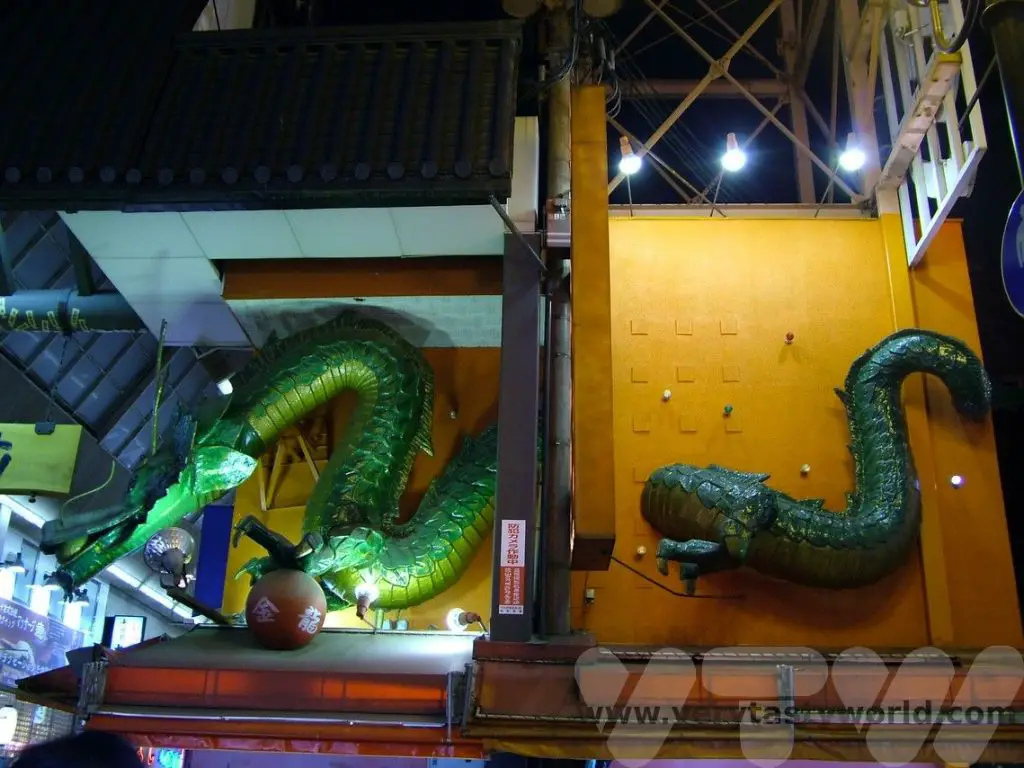
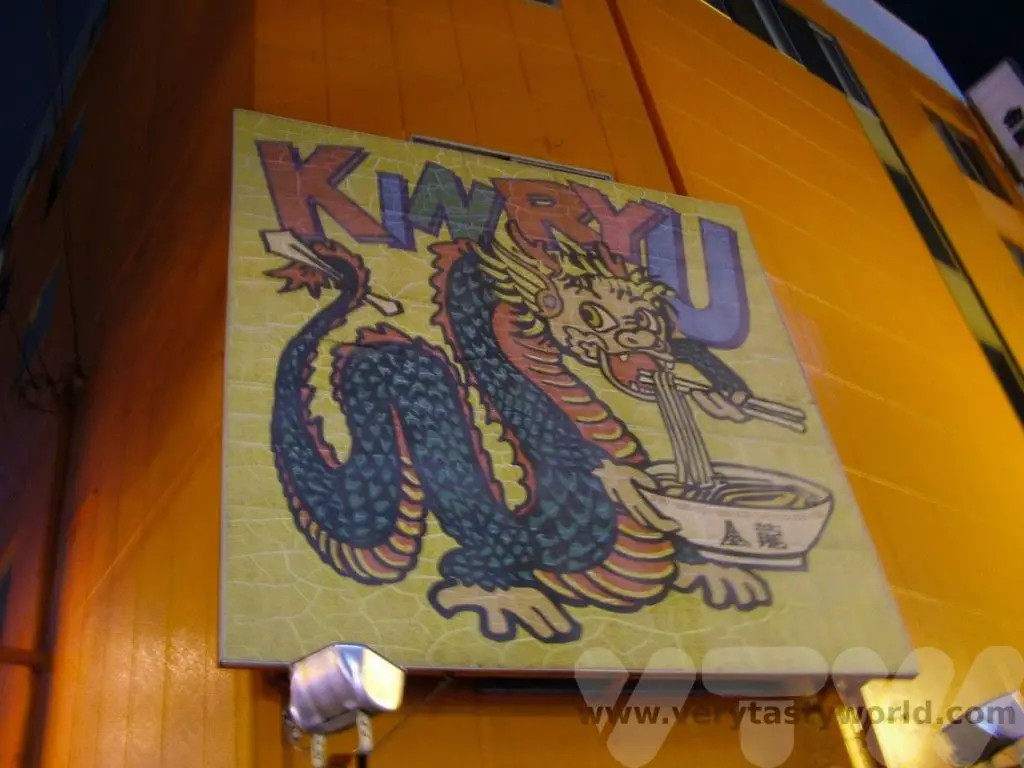
And even the standard restaurants on Dotonbori, those without the amazing neon signs, are worth checking out. One of the great things about dining in Osaka – and indeed throughout Japan – is that you don’t need to speak or read Japanese. Many restaurants will have an English, Chinese or Korean menu and those that don’t will often have a picture menu or, better, realistic models of the food in the window, usually with prices. You can take a photo of your desired dish or even take your food server outside and point to the dish you want.
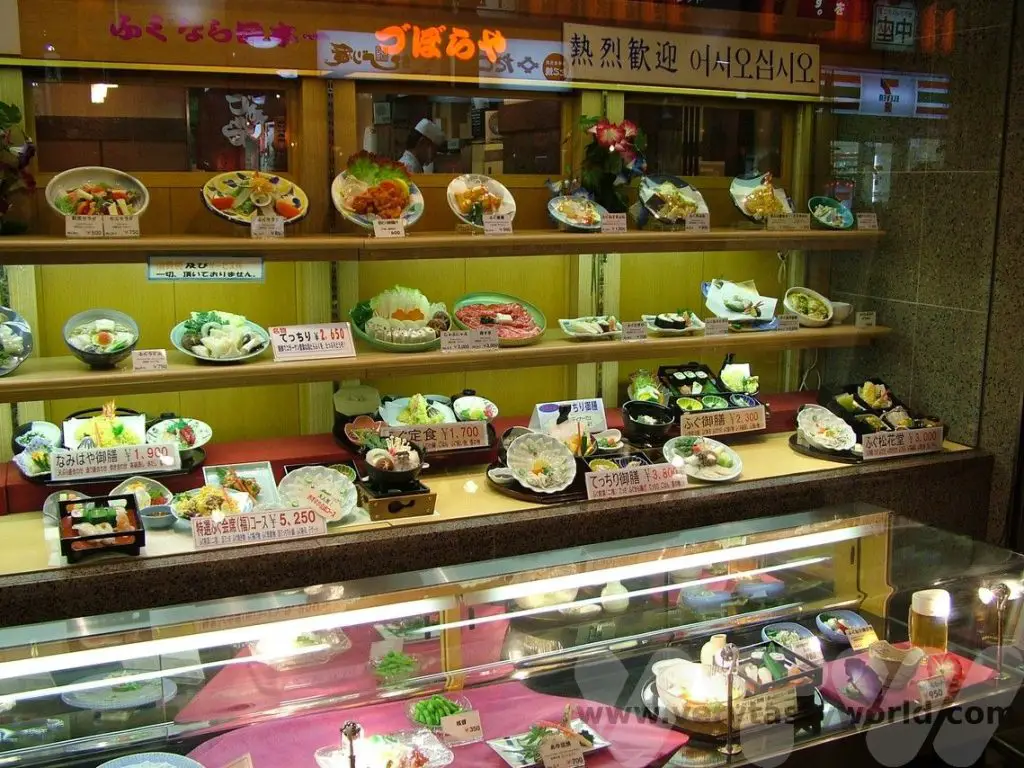
The models of the food are surprisingly realistic and many are made in Osaka. We managed to find a shop that sold them but they are hideously expensive, so we treated ourselves to a couple of sushi fridge magnets as a souvenir.
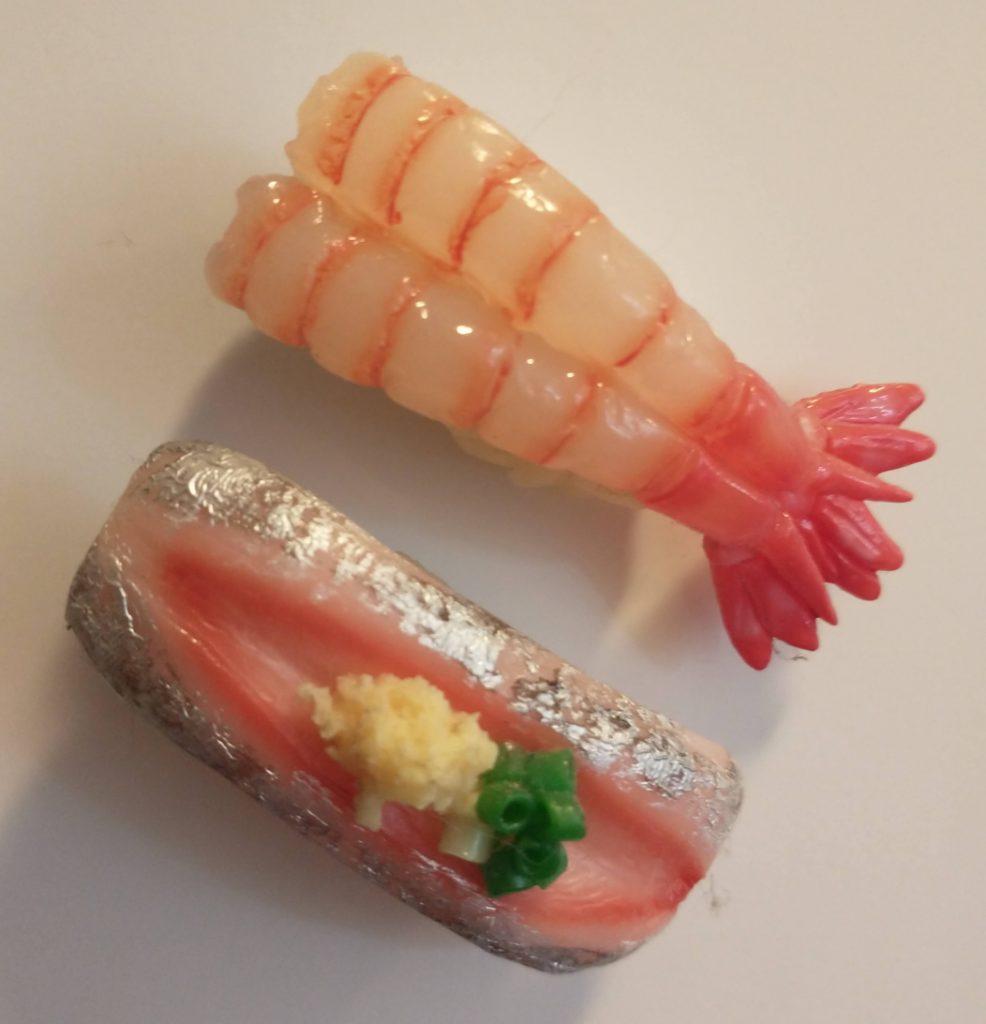
Related Posts You May Enjoy

- Recipe: Simmered Shiitake Mushrooms
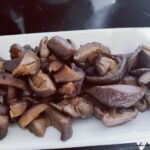
- How to Use Public Transport in Japan

- RECIPE Oyakodon Donburi

- Planning a Trip to Japan
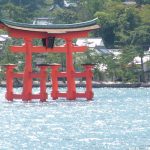
- The Makanai: Cooking for the Maiko House
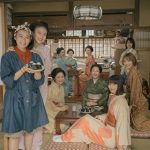
- Setsubun Food – Bean Throwing Day

- The Gassho Farmhouses of Rural Japan
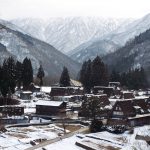
- Recipe: Japanese Simmered Pork Belly – Buta no Kakuni

- RECIPE: How to Make Umeboshi

RECIPE: Japanese Fried Chicken Karaage
Fried chicken is one of life’s great pleasures. And Japanese fried chicken karaage is no exception. In Japan, it is a tradition to eat fried chicken from KFC on Christmas Day before the traditional new year celebrations commence. However, we feel that JFC offers far superior fried chicken.
Always use chicken thigh meat. It has so much more flavour than breast meat and is guaranteed to be juicier and more succulent.
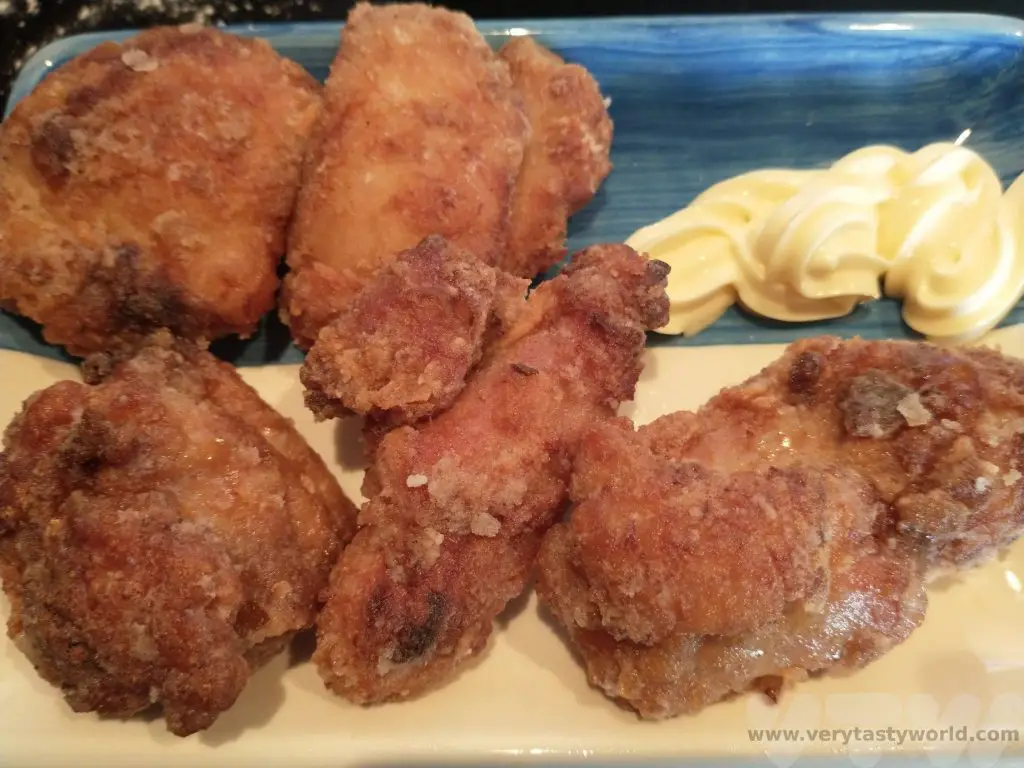
Making karaage isn’t difficult but it also isn’t a quick process. However the results are definitely worth taking the time to make the dish. The chicken absolutely needs to be marinated – this adds so much flavour. The word karaage refers to the cooking technique, that is frying the food in oil. You don’t need equipment such as a deep fat fryer – a frying pan will be just fine.
Recipe for Japanese fried chicken karaage:
Ingredients
Serves 4
800g boneless chicken thigh (skin-on is fine), each thigh cut into 4 pieces
For the marinade
4 tbs soy sauce
1 tbs mirin (if you can’t get this, add a little more sake/wine and a tsp of sugar)
1 tbs cooking sake (or white wine if you can’t get that)
1 inch of ginger (finely grated)
1-2 cloves of garlic (finely grated) depending on how garlicky you like your food
For the coating
Potato starch. If you can’t get this, fine rice flour or even cornflour will be fine. (Icing sugar would not!) We didn’t have quite enough potato starch so mixed in a little rice flour. About a cup’s worth (275ml) – as much as you need to coat all the chicken.
For the cooking
Vegetable oil (enough to get about 1 cm depth of oil in your pan)
Method
Place the chicken thigh pieces in a bowl and add the soy sauce, mirin, sake, ginger and garlic. Mix well and leave to marinate for at least an hour.
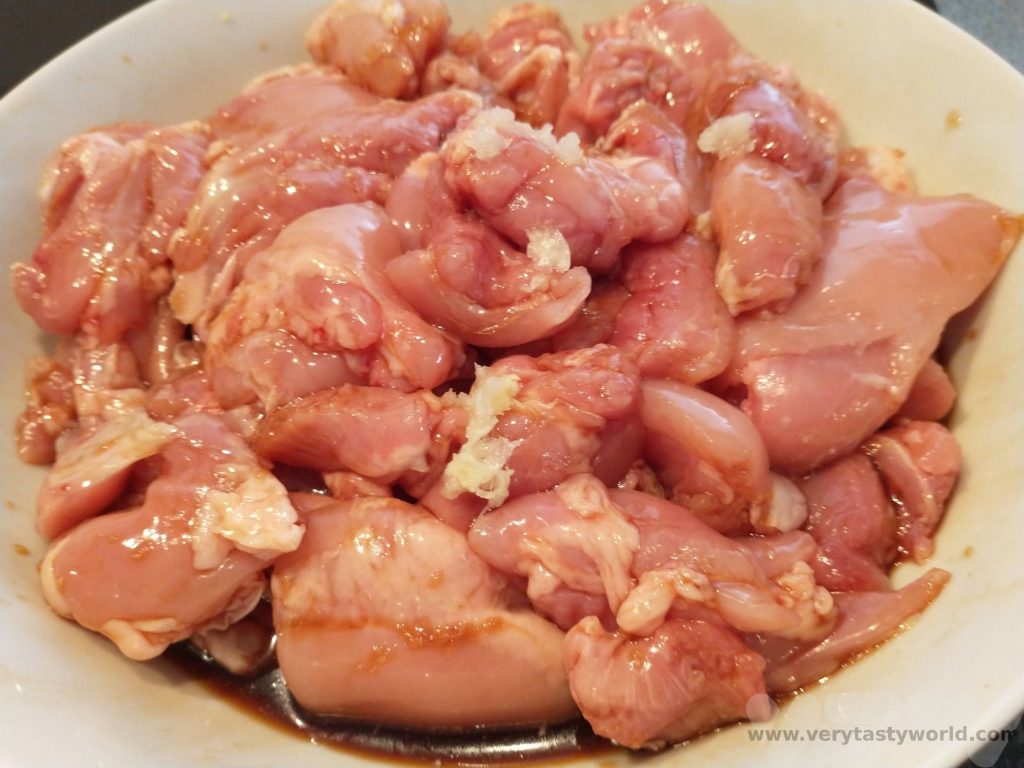
Pour the oil into a frying pan until it’s about 1 cm deep. Heat up. The oil will be hot enough when you put a little flour into it and it sizzles.
When the chicken has had a chance to acquire those lovely flavours pour the potato starch into a bowl.
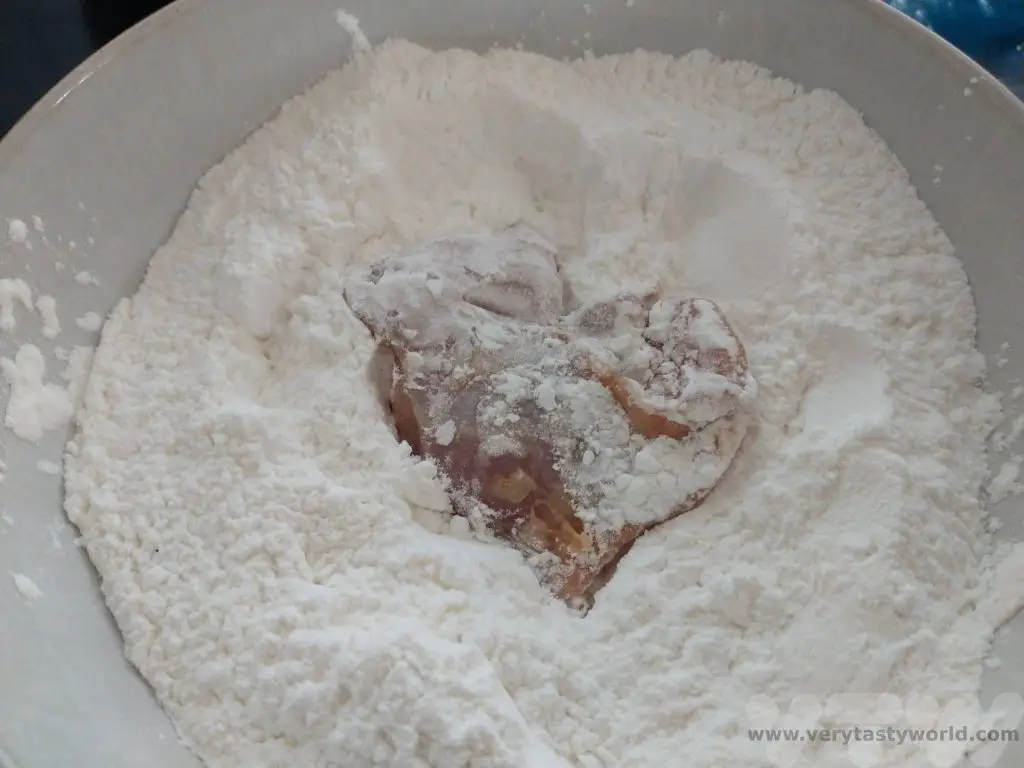
Take each piece of chicken, dip both sides in the flour, shake any excess off, and then carefully place in the oil.
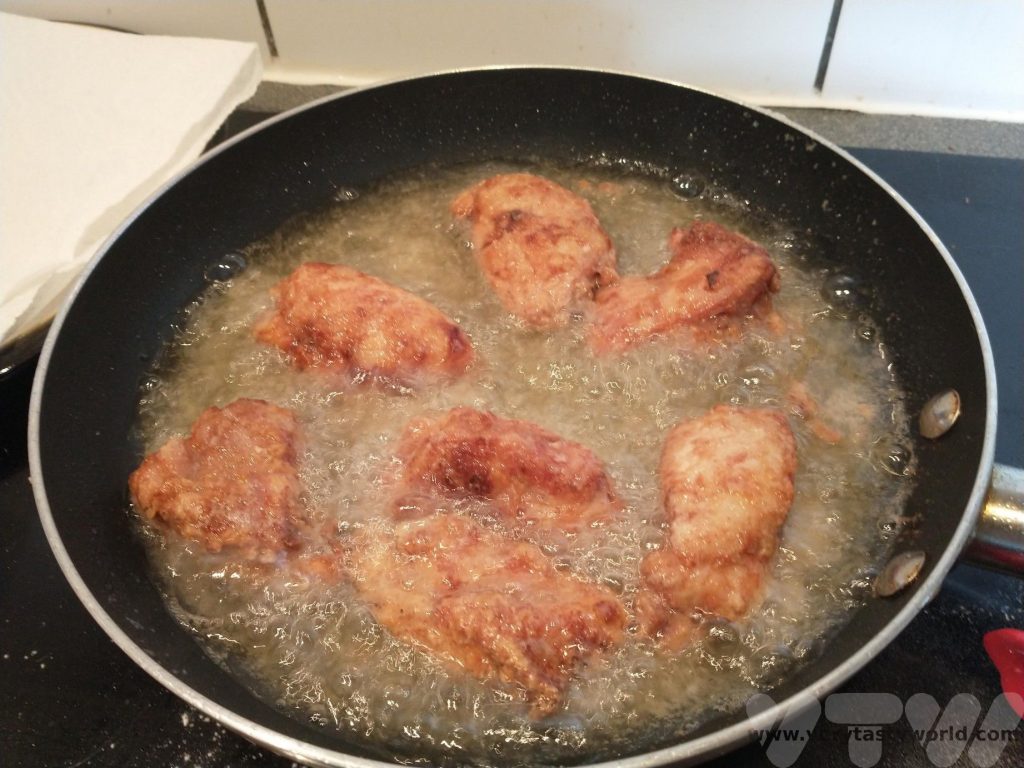
Repeat for further pieces of chicken. Do not overfill the pan – this is a process whereby the chicken should be cooked in batches. We tend to use a clock method – put a piece of chicken at the top, then go round the pan putting further pieces in in a clockwise direction so we know which piece was put in first. Cook the chicken for 5-7 minutes, turning occasionally, until the pieces are golden brown.
Then remove from the oil and place on kitchen paper to soak up excess oil. You can transfer the chicken from the first batches into a heatproof bowl in the oven set on a low heat to keep them warm.
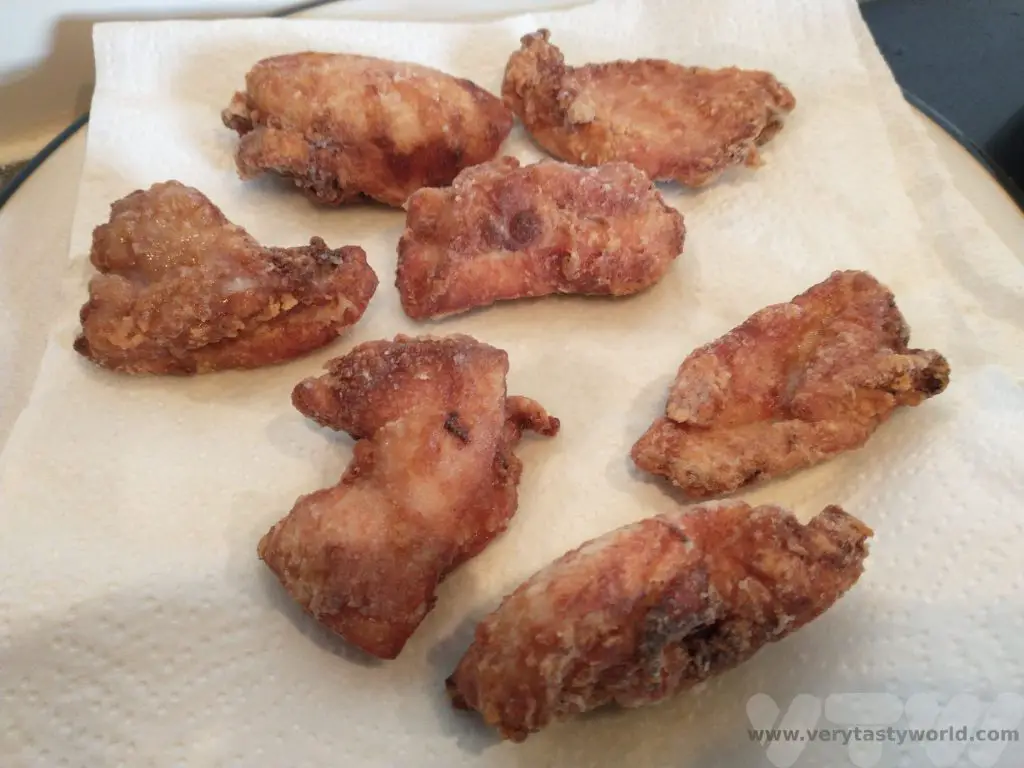
Start the next batch and repeat until all the chicken has been cooked.
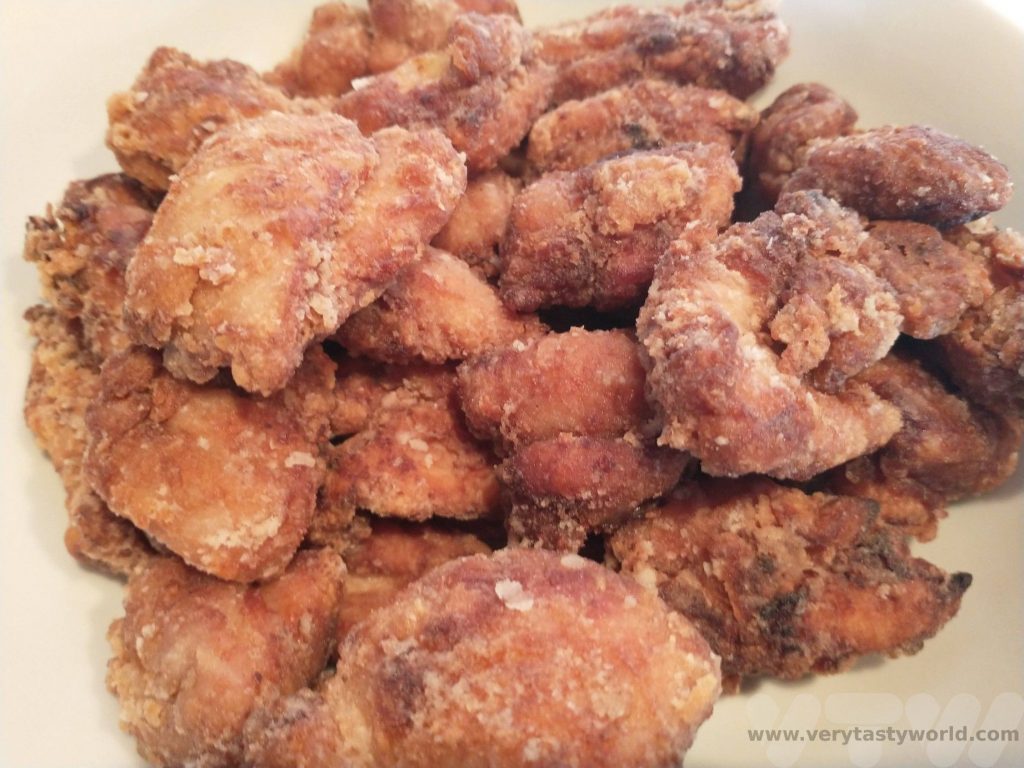
Serve with Japanese mayo. It’s not at all healthy but it’s oh, so decadent and delicious! If you’re feeling more health conscious, shredded cabbage is a popular accompaniment.

Karaage chicken is also yummy when served cold the following day. It often features in bento boxes.
Related Posts You May Enjoy

- RECIPE Oyakodon Donburi
- Zero Waste Recipes Before Your Holiday
- RECIPE: Vegetable Biryani Tamil Nadu Style
- RECIPE: Vegan Wild Garlic Pesto
- Recipe: Venetian Pasta Sauce
- RECIPE: Biryani Raita Recipe
- RECIPE: How to Make Costa Rica’s Gallo Pinto
- Recipe: Japanese Simmered Pork Belly – Buta no Kakuni
- RECIPE: How to Make Umeboshi
Places to Visit in Munnar, Kerala
One of the most striking things about the state of Kerala in Southern India is how very green it is. A popular place to visit, it has spectacular scenery, interesting wildlife, fascinating culture and fantastic food. It’s no wonder that the locals call it ‘God’s Own Country.’ We toured the area for a week, visiting Athirappilly, Thekkady and Kumarakom, where we spent a very pleasant afternoon on a houseboat in the backwaters. The hill station near Munnar has the perfect climate and landscape for growing tea. At an elevation of 1500m the temperature is much more comfortable than the searing temperatures closer to sea level. There are lots of places to visit in Munnar and the surrounding area.
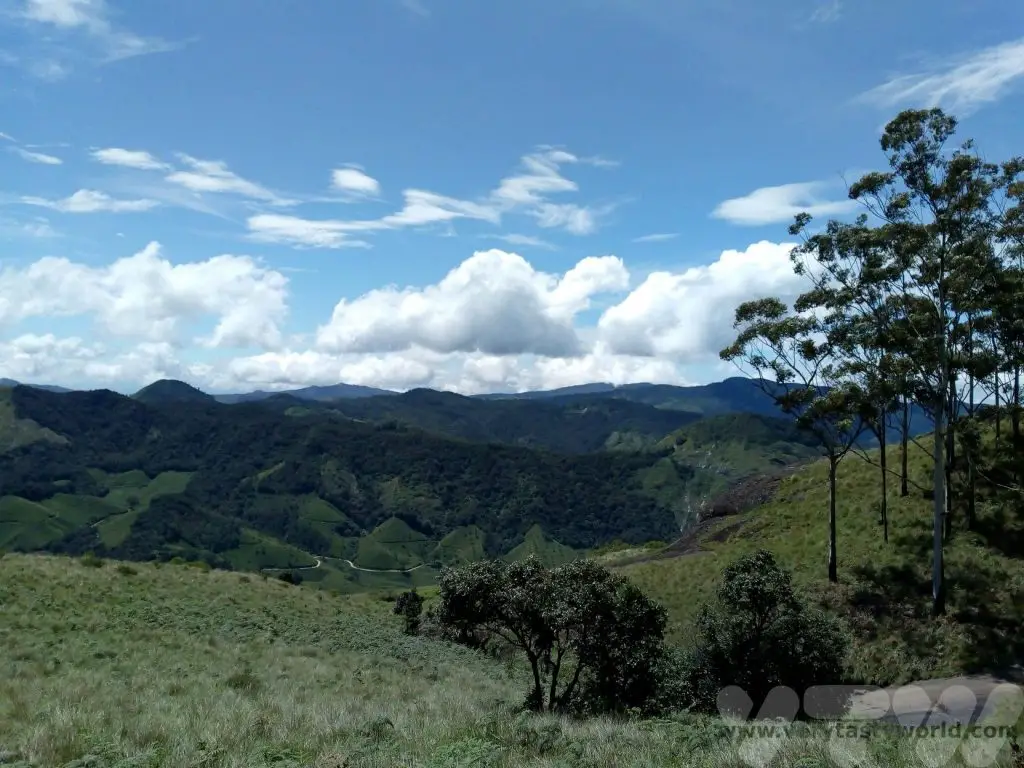
Places to visit in Munnar – Eravikulam National Park
The Eravikulam National Park is one of five national parks in Kerala and is home to a lots of wildlife, including the Nilgiri Thar, a type of goat which is seriously endangered and can only be found in any significant numbers in this area. There also are deer, monkeys, wild dogs, otters, mongooses, martens and porcupine as well as many species of bird and butterflies.
The park used to be a British game reserve during colonial times and was known for its rich hunting grounds. Later, the Kannan Devan Hill Produce Company managed the lands which were handed to the Kerala Government in the early 1970s. The Nilgiri Tahr had become almost extinct by 1972 and was placed on the endangered list so the park became a conservation area and achieved national park status in 1978.
The park is located around 15km away from central Munnar and you can either get a cab or hire a car/driver to reach it. Buses are available but less convenient. You can’t walk or drive around the area, private cars are not allowed inside the park and you have to catch a bus from the entrance car park. Just buy your tickets at the kiosk and join the queue. Beware that the queue may be long as it’s a popular place to visit. The bus ride is very scenic as it climbs the hill via a number of hairpin bends.
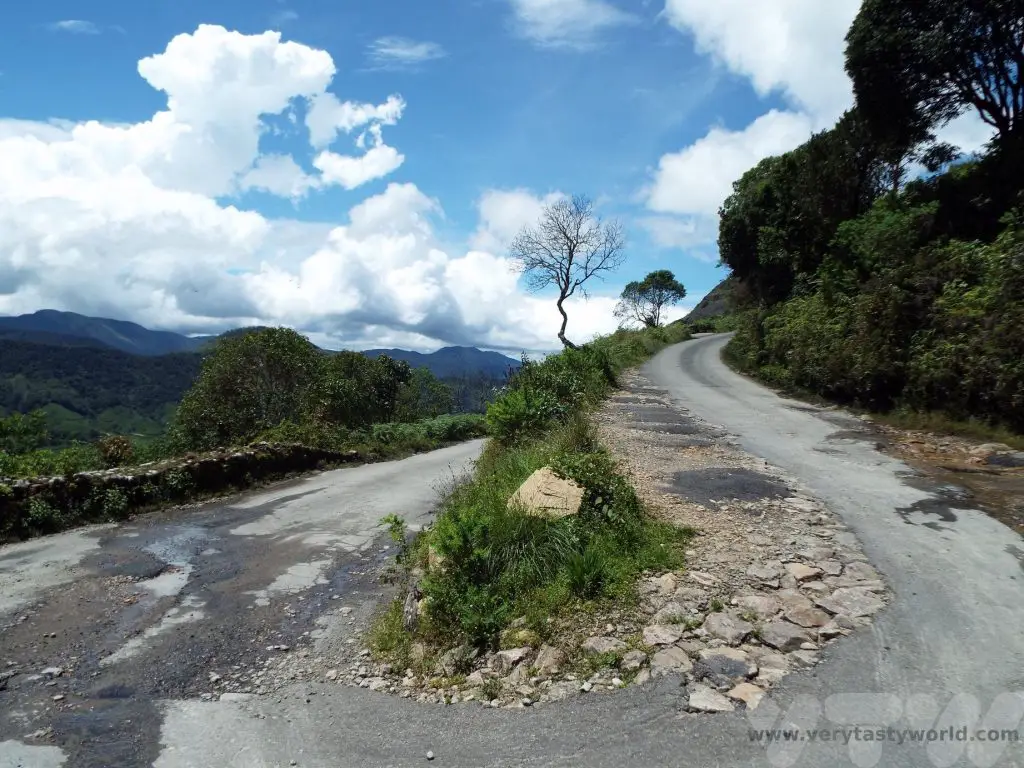
The wildlife wasn’t co-operating when we visited but the trip nevertheless offered a lovely walk with spectacular views.
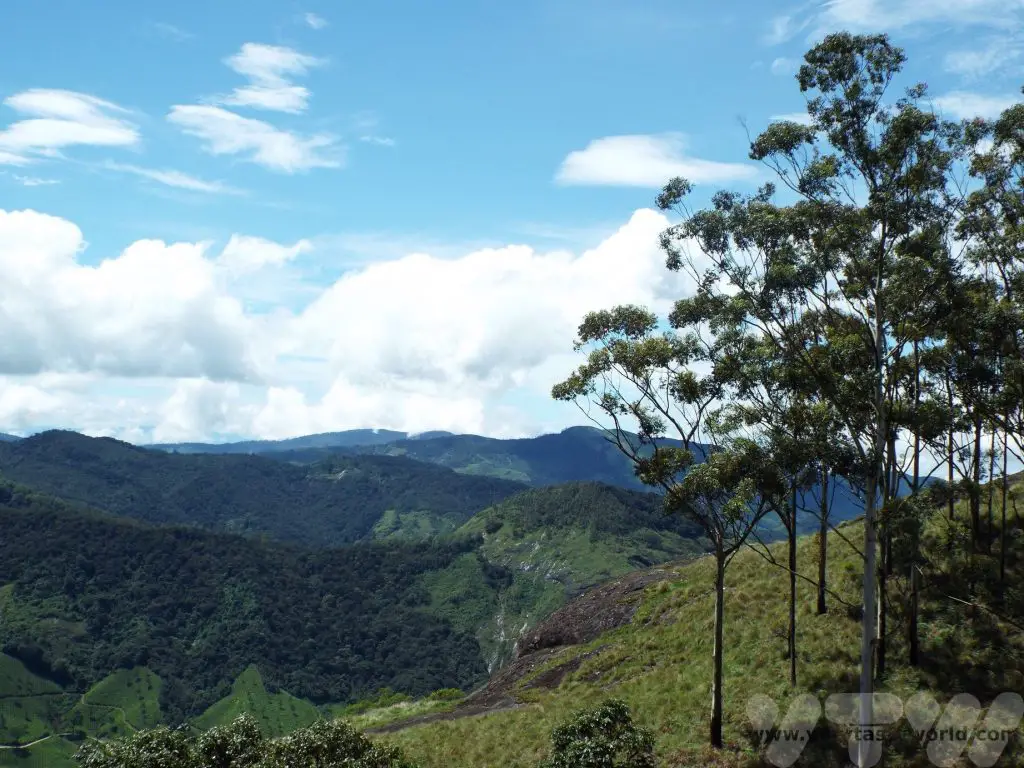
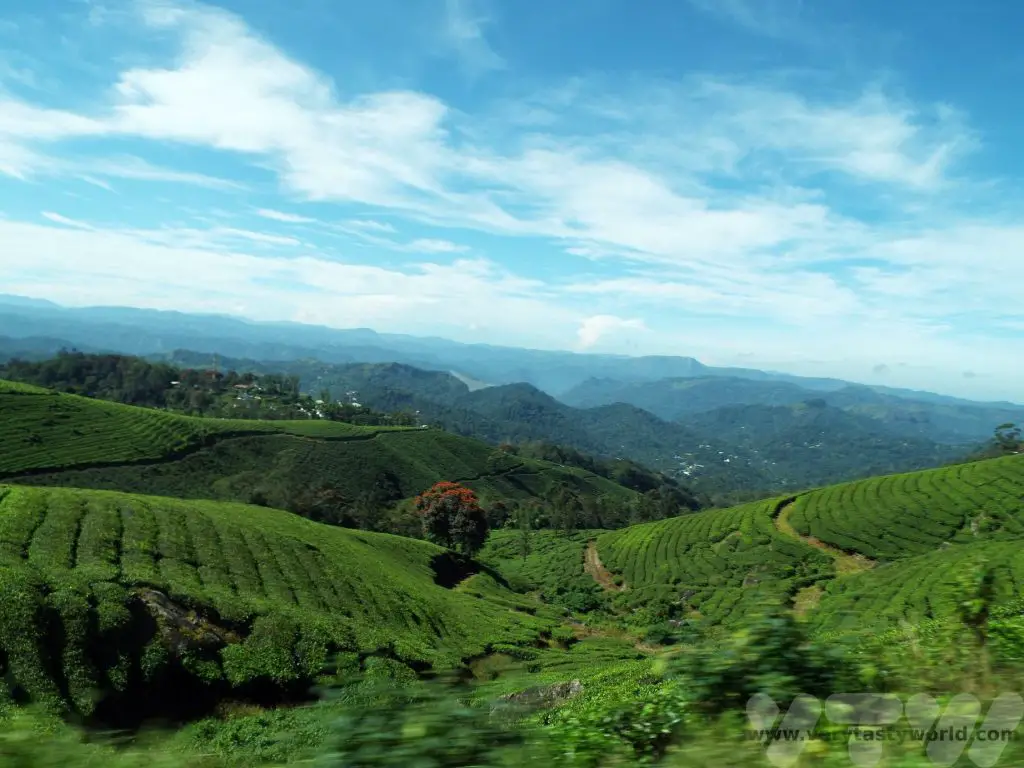
Visit the Rose garden
The Floriculture Centre, more commonly known as the Rose Garden, is worth a short visit if flowers and plants are your thing. You can wander through the terraces and have a look at the local flowers and plants.
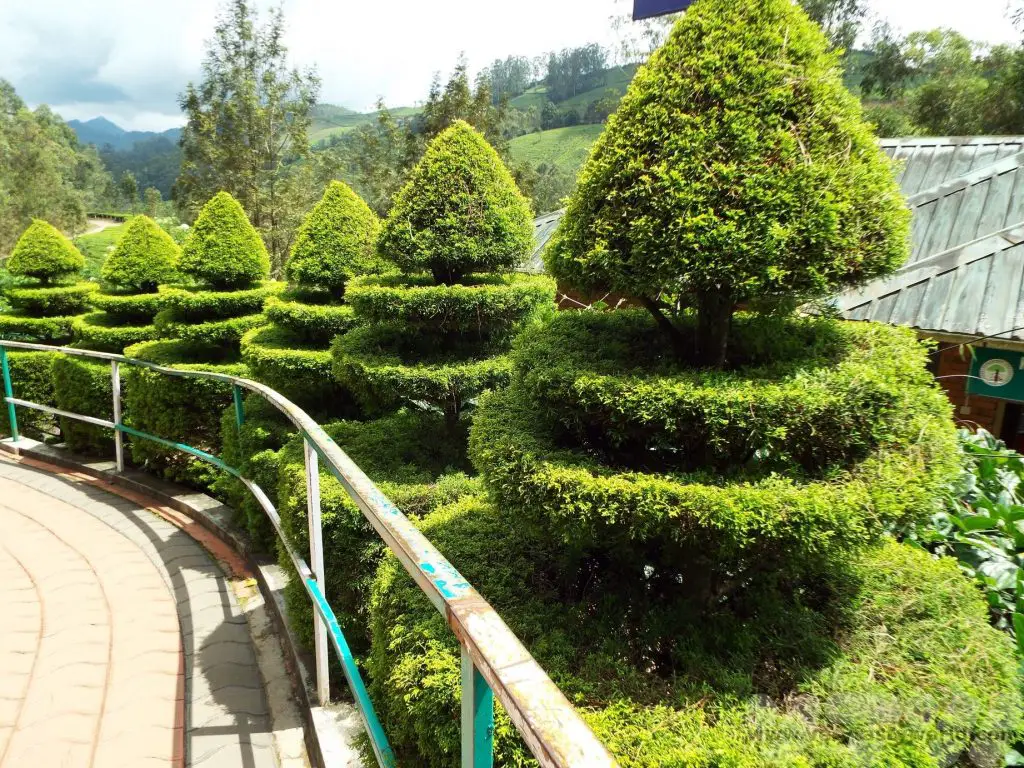
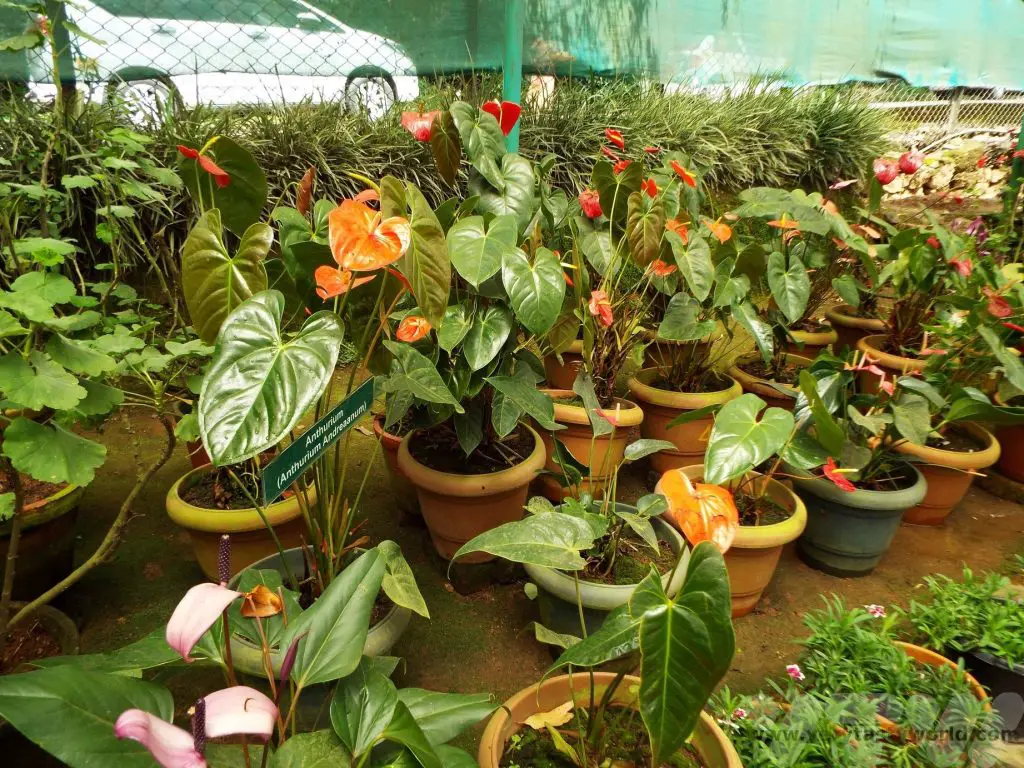
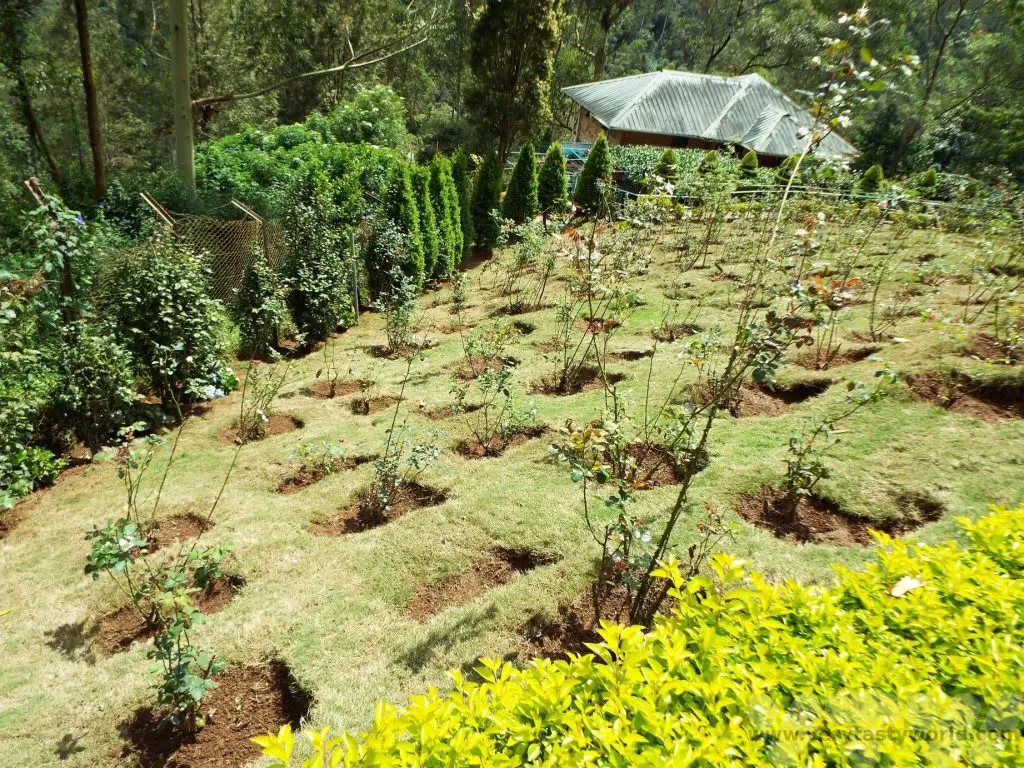
After lunch (you can read about thali here) we headed out through the countryside to visit the Mattupetty Dam and Kundala Dams. On the way to the Kundala Lake, we spotted a bunch of people gathering at the roadside with cameras and phones out and most definitely pointing in a particular direction. It’s always worth stopping to see what the crowds are looking at. And we were rewarded with the sight of a couple of wild elephants sauntering through the fields.
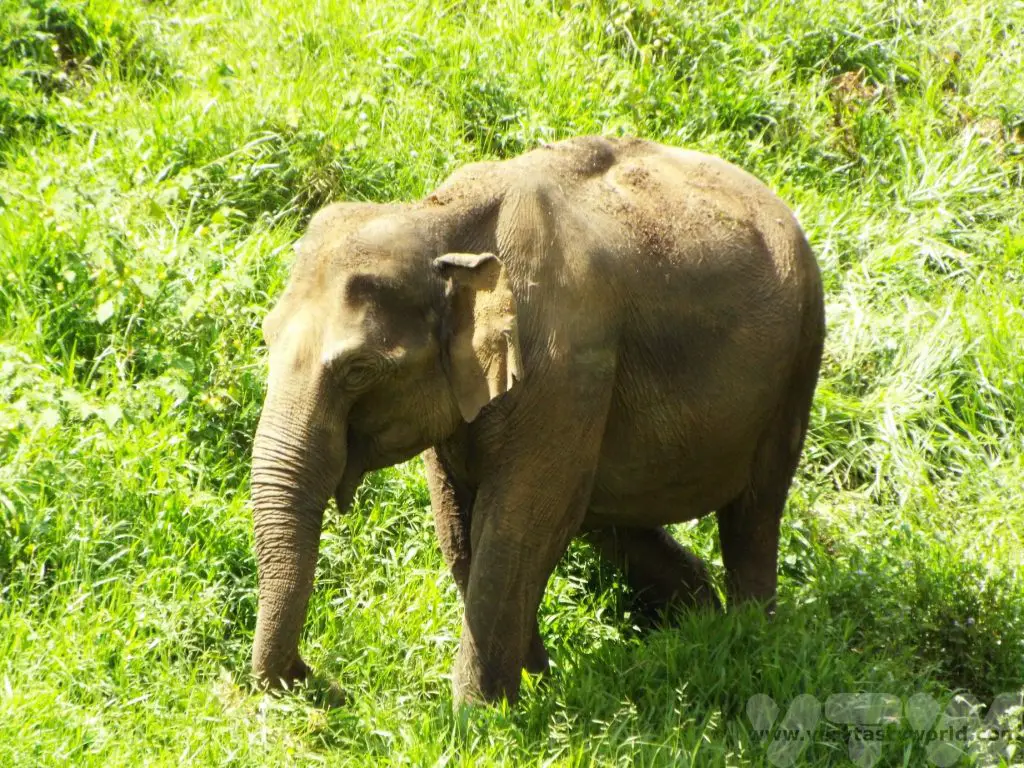
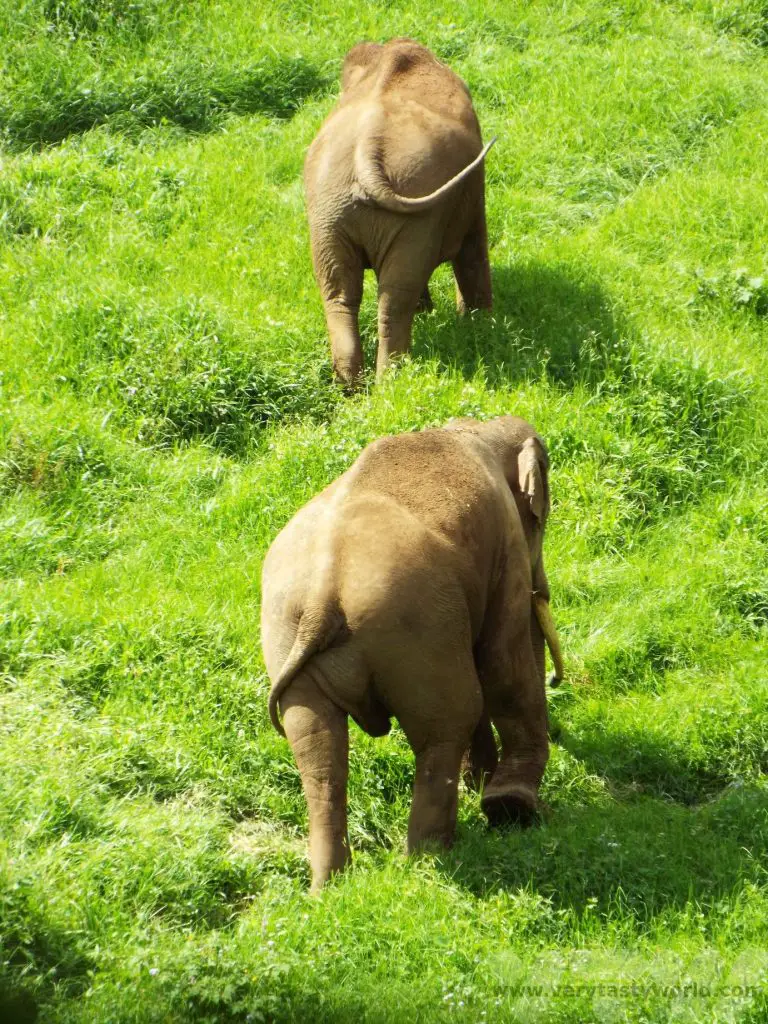
It’s possible to walk in the forests surrounding the lakes and across the dams.
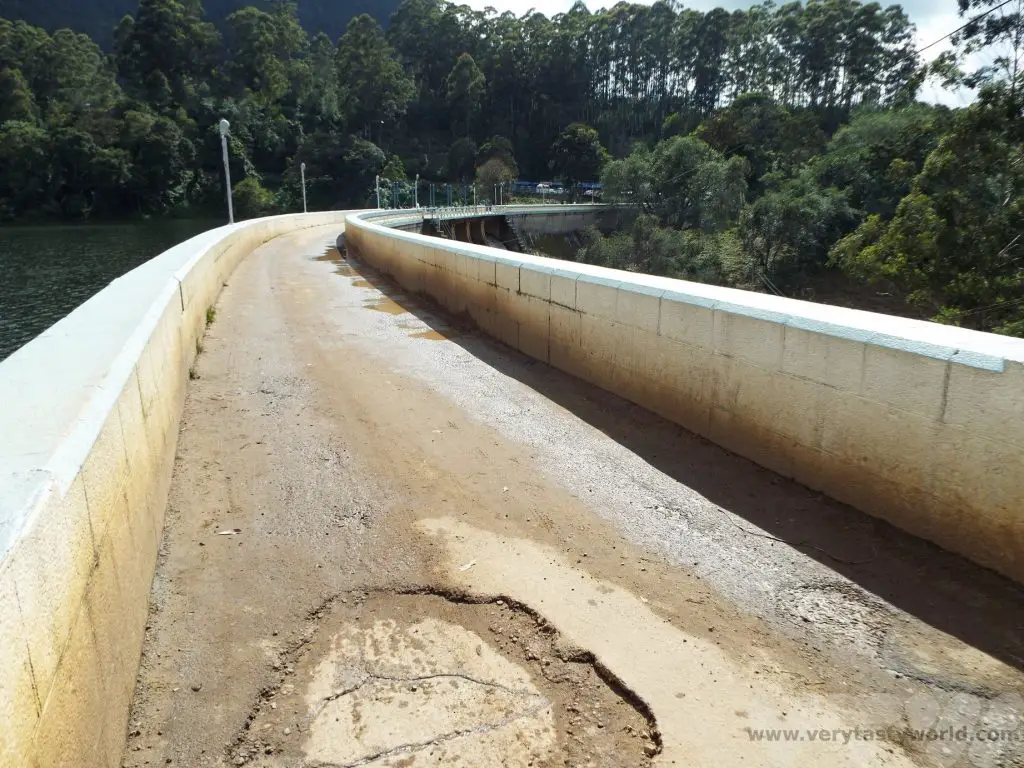
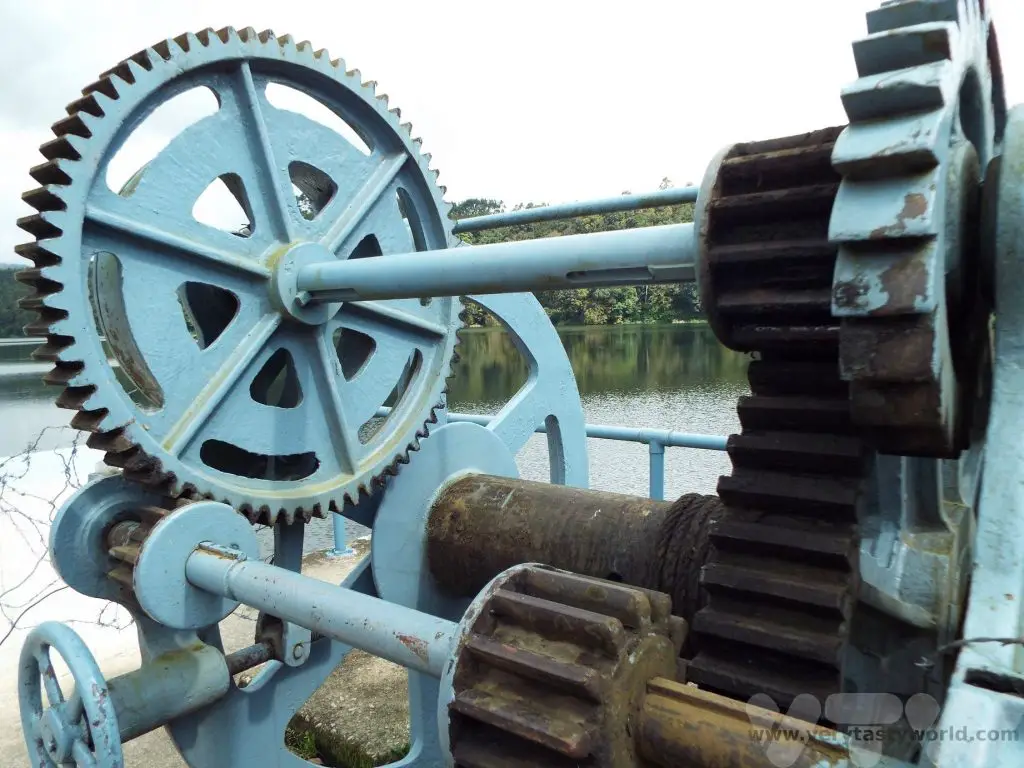
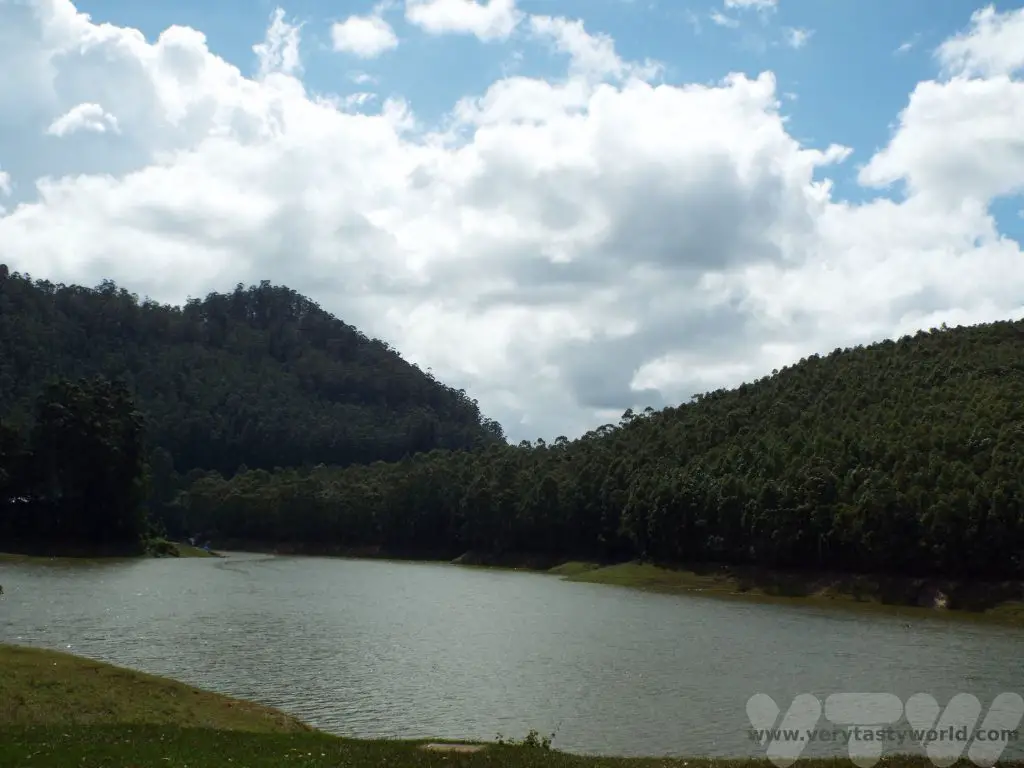
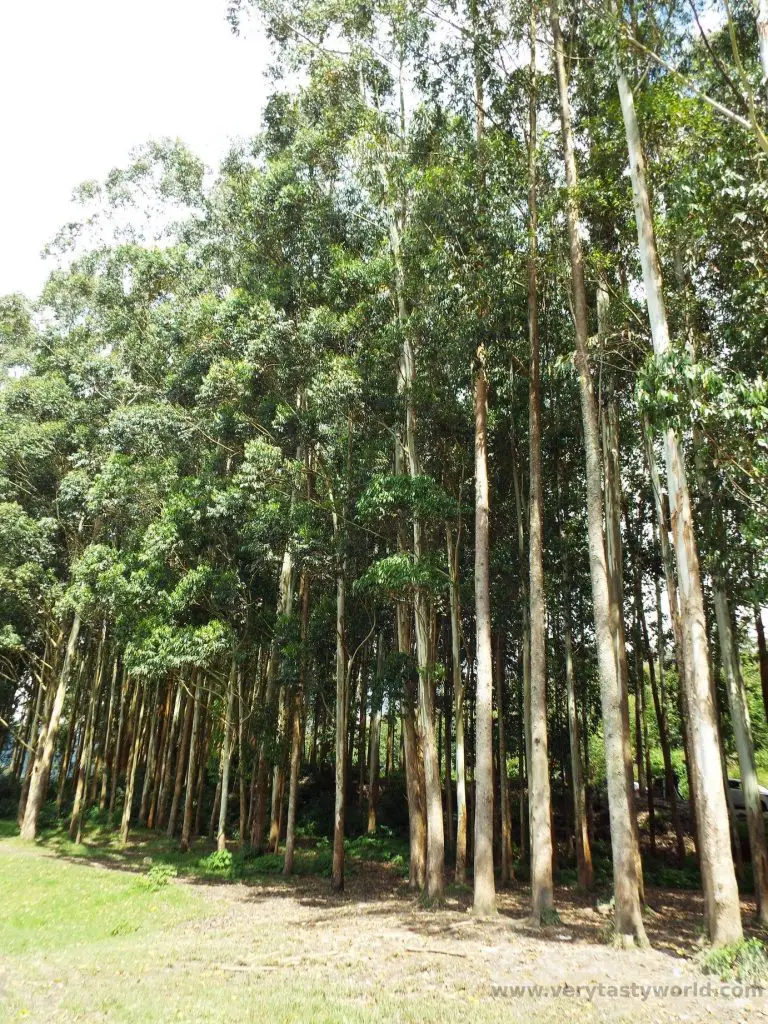
Tea and Spices
Tea plantations adorn the surrounding hills in all directions, each individual tea plant creating a pattern that dominates the landscape.
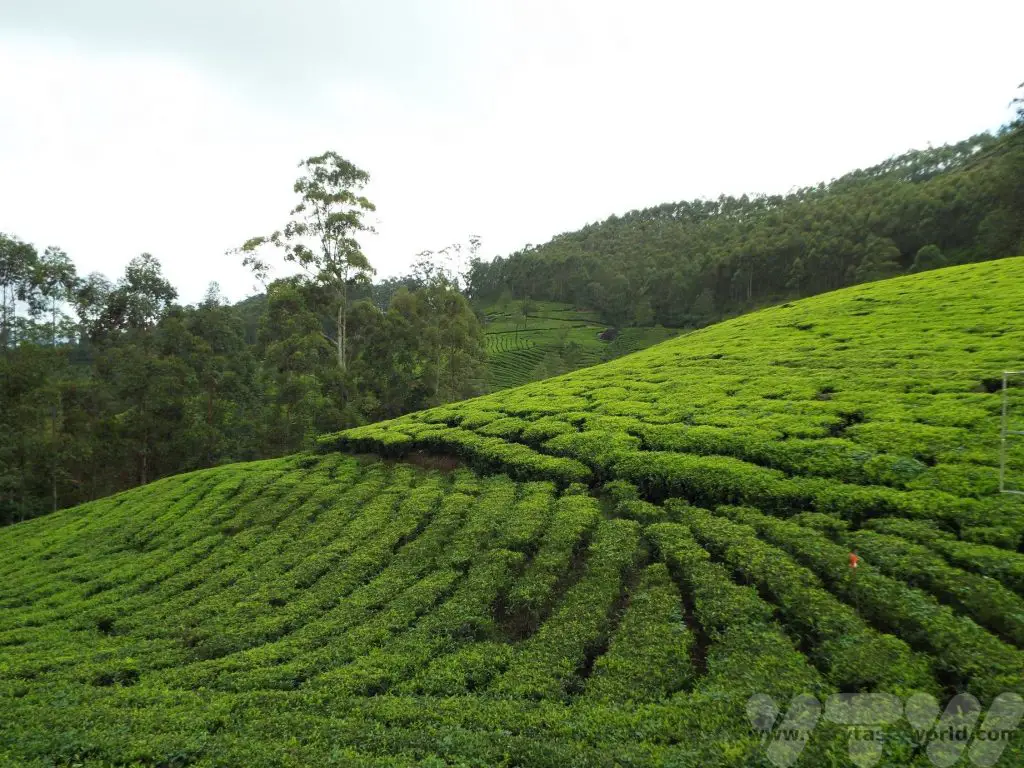
Tea plants like receiving lots of water but don’t like sitting in water, hence the plentiful rainfall in Kerala provides plenty of hydration and the hilly landscape is ideal for perfect drainage.
The tea is picked by hand. Only the top three leaves, which are the most tender, are used. There are a number of processing plants around Munnar. We didn’t have time to visit a tea plantation but did bring back some Munnar tea as a souvenir.
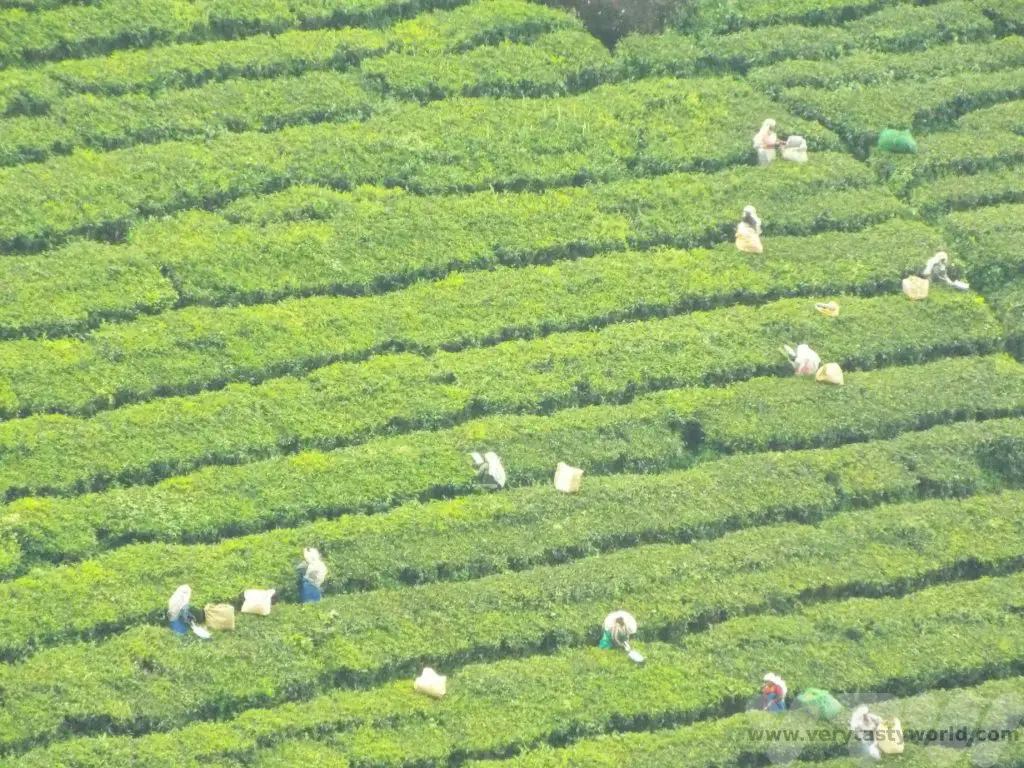
Kerala is also famous for its spices. Keralan cuisine is amazingly good – all the dishes we tried were beautifully flavoured. Many of the spices grown can be used in both savoury and sweet dishes. We visited a spice plantation, in the pouring rain (thankfully they loaned us umbrellas) and saw a number of plants that are used for culinary and medicinal purposes.
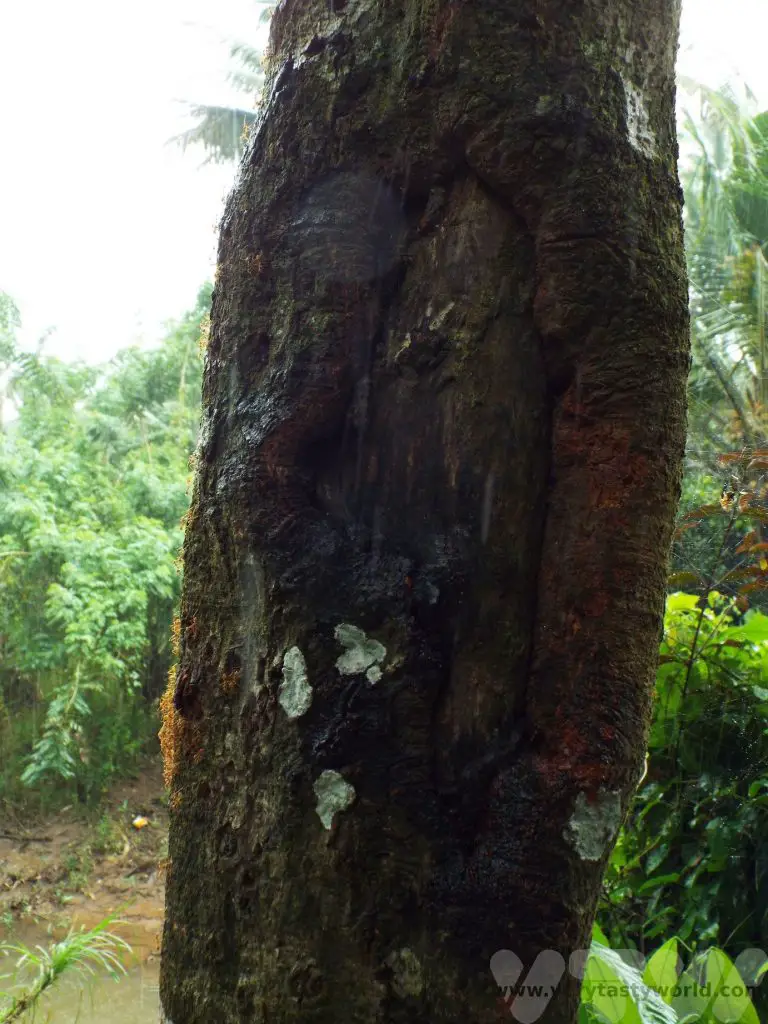
Cinnamon comes from the bark of the tree. Peel it off and it curls up into those familiar scrolls.
Allspice is a very apt name. If you smell and taste: think of nutmeg. Yes! Think of cinnamon. Yes! Think of cloves. Yes! It really has a flavour that can emulate many different spices and is a great all-rounder.
Cardamom is an amazingly aromatic spice. It actually grows at the base of the plant in little pods.
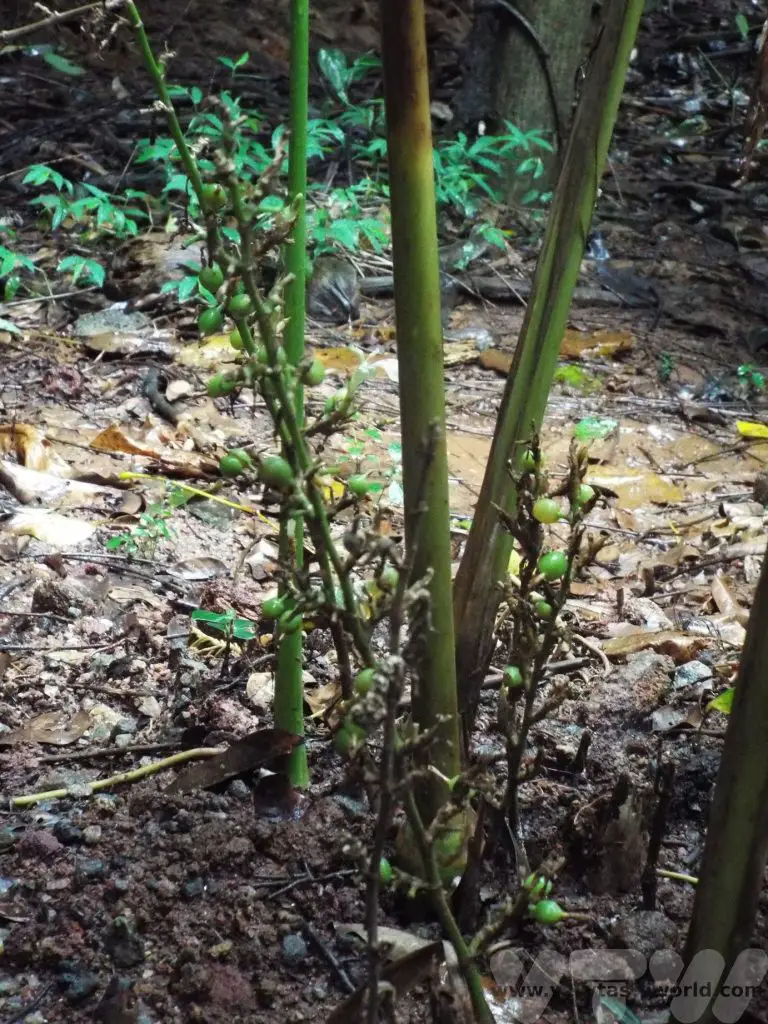
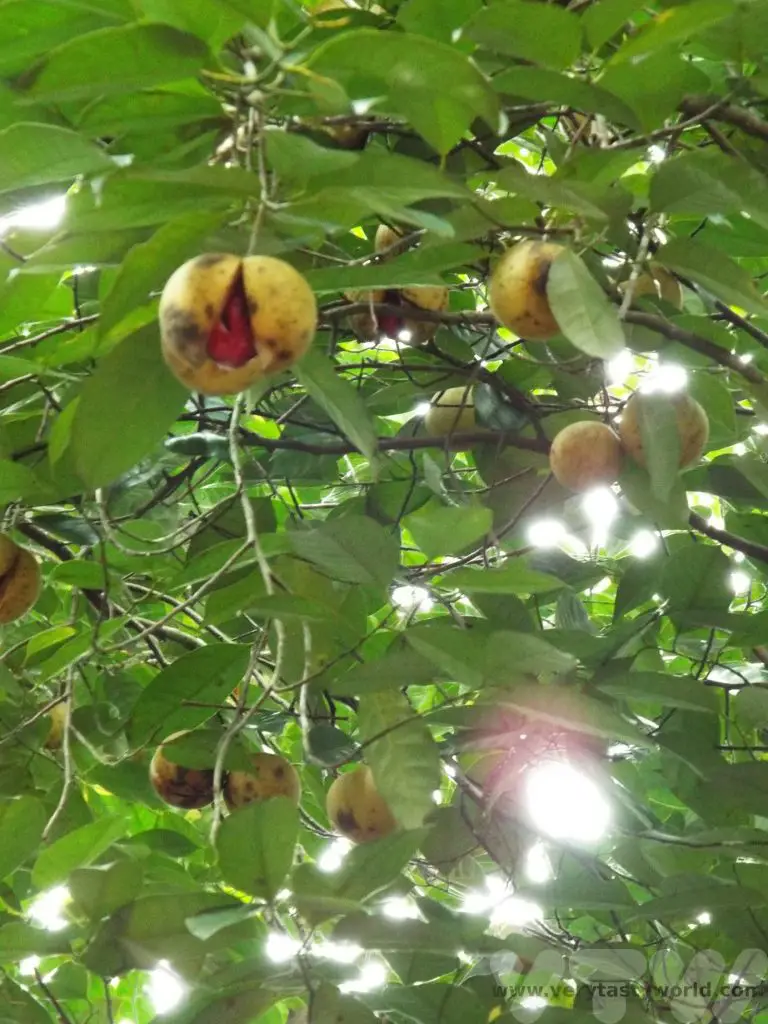
Nutmeg and mace. Mace is the outer ‘skin’ of the nutmeg – you get a milder nutmeg taste with a more citrusy flavour.
Cloves add a real fragrance to savoury dishes. They also have a numbing effect and are a traditional remedy for toothache.
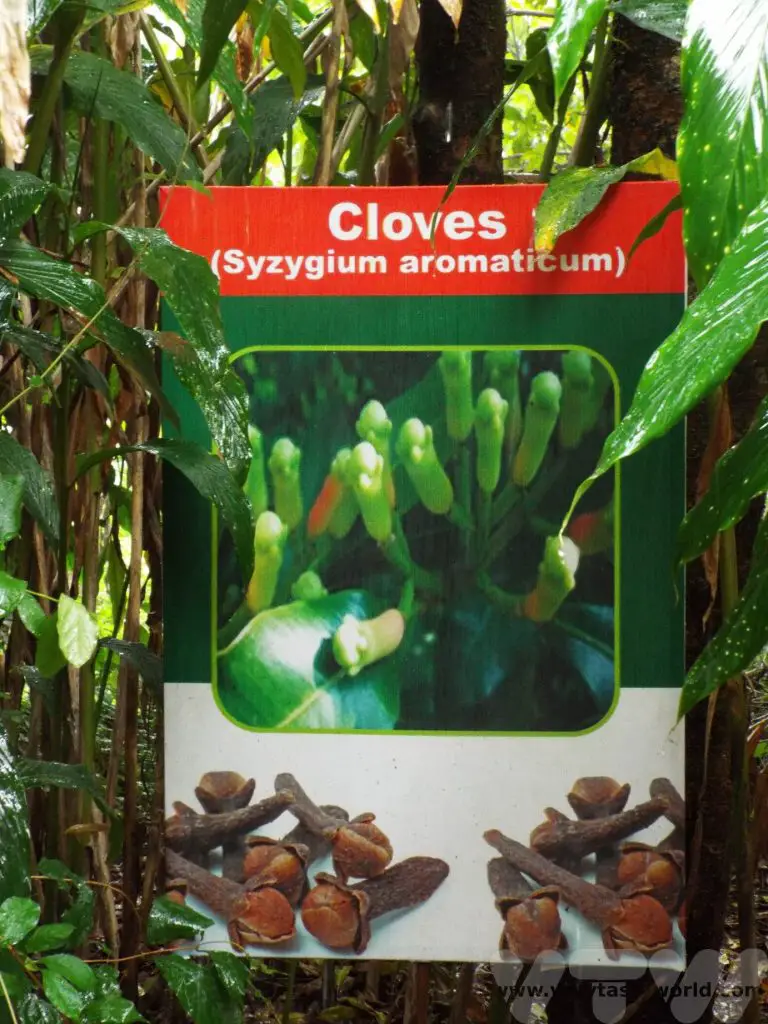
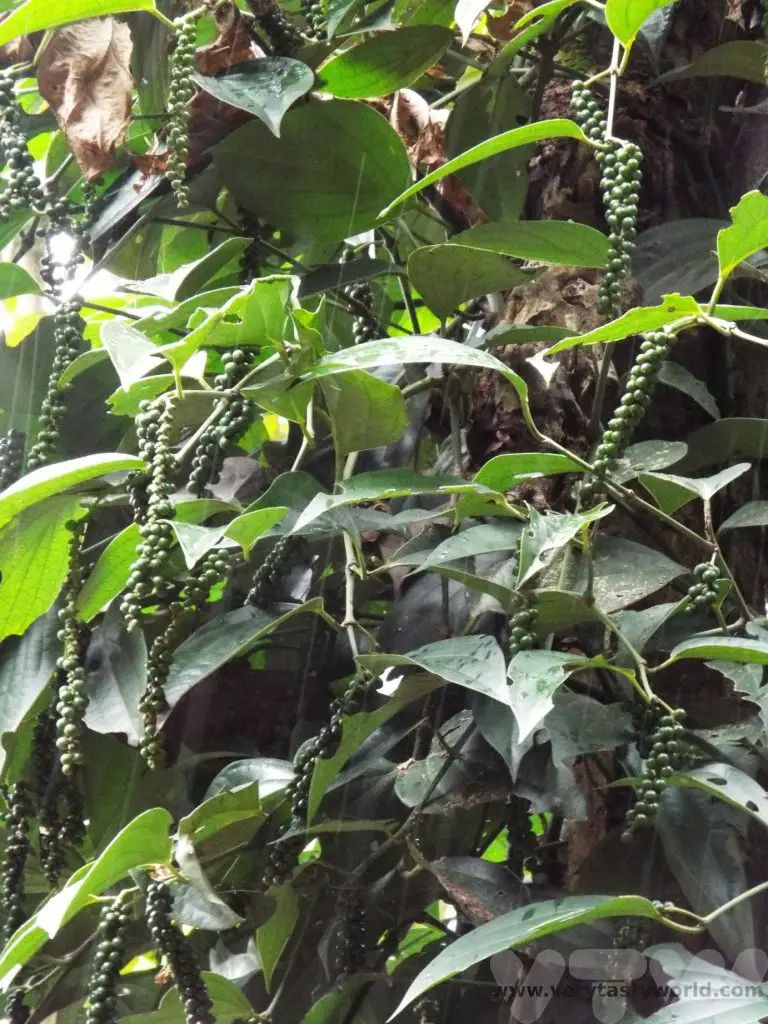
Peppercorns are native to Kerala and have been used in Indian cooking since at least 2000 BCE. Once the most valuable spice in the world, pepper can be eaten in its many different forms (albeit the same fruit of the tree): green peppercorns are the unripe fruit of the pepper tree. When they turn red they are ripe. Black and white peppercorns are, likewise, both the same fruit of the pepper plant, but are processed differently. Black peppercorns are picked when the fruit is almost ripe and then they are sun-dried, and this turns the outer layer black. White pepper is the peppercorn without the skin. It’s the black skin that has the distinctly peppery flavour elements. If you want heat but not the flavour, white peppercorns are the one to use.
We purchased some of the spices, particularly those that are expensive to buy at home. They make ideal souvenirs as they easily slip into any spaces your backpack and ours have been used extensively since our return home.
Places to Visit in Munnar – Kathakali and Kalaripayattu performance
We made our way to the Punarjani traditional village to see a Kathakali and Kalaripayattu performance in the early evening.
Kathakali is a form of classical Indian dance which tells a story, often based on traditional legends, Hindu mythology and Indian epic stories. There is a narrative but no dialogue – dance, mime and song are the means by which the story is told. Artists spend several years training at specialist schools in order to develop their skills. The expressive performance is emphasised by the spectacular costumes and make-up, which can take around 3-5 hours to apply.
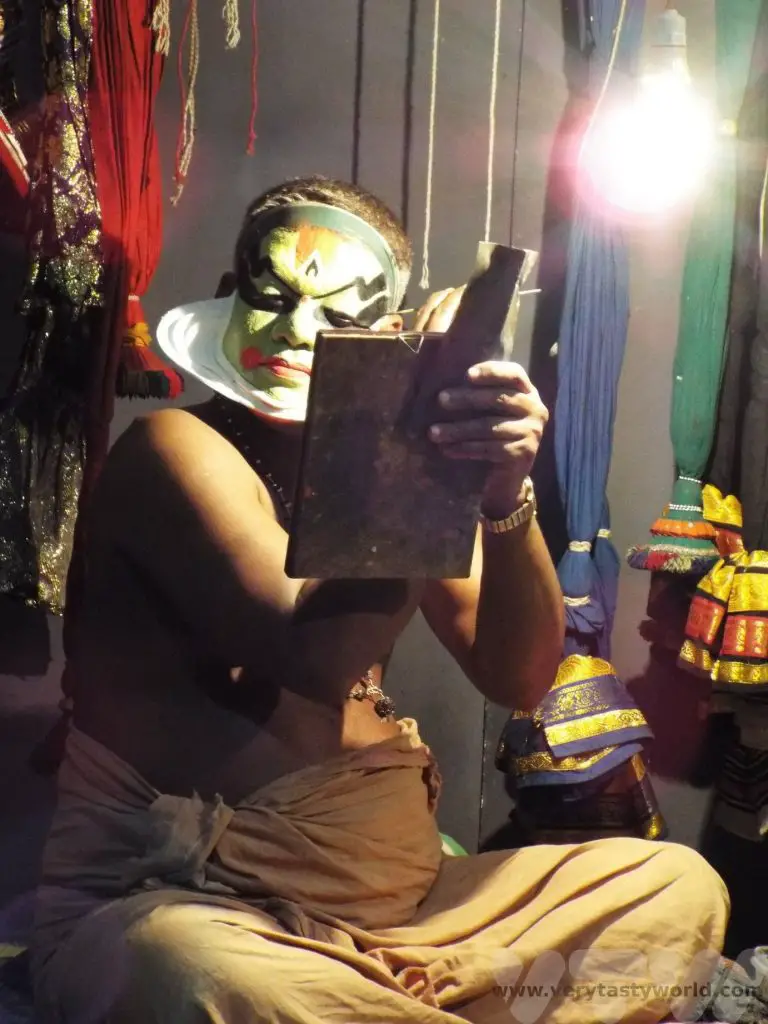
It is worth arriving early for the performance because you are often allowed backstage to watch the performers apply their remarkable make-up.
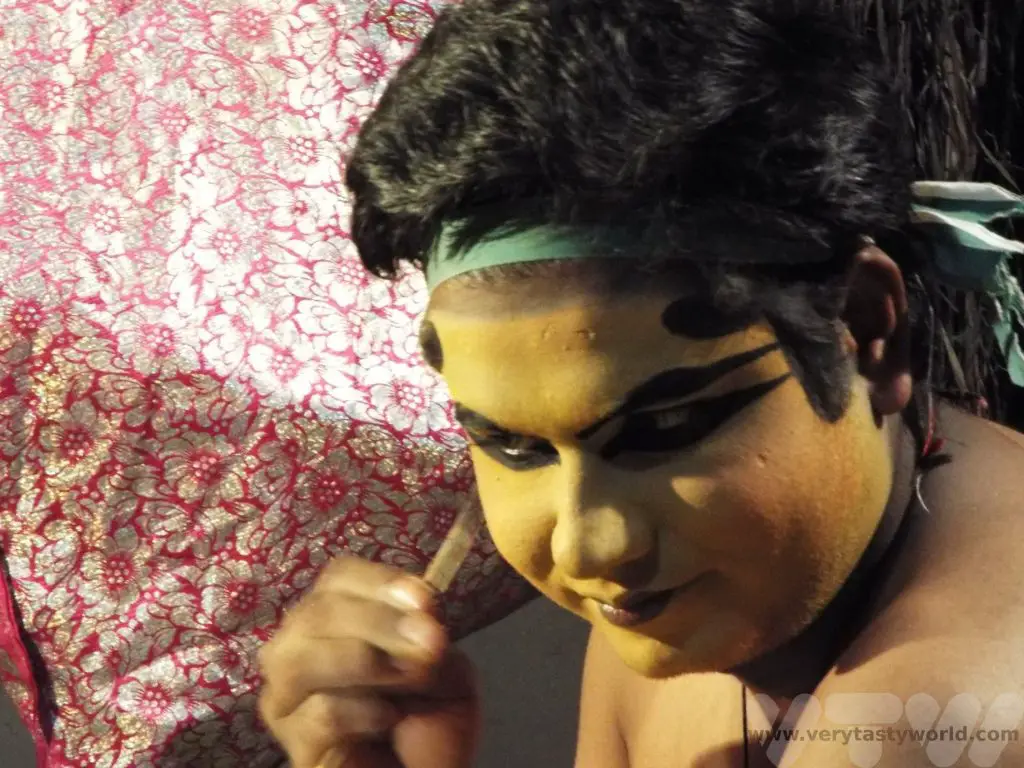
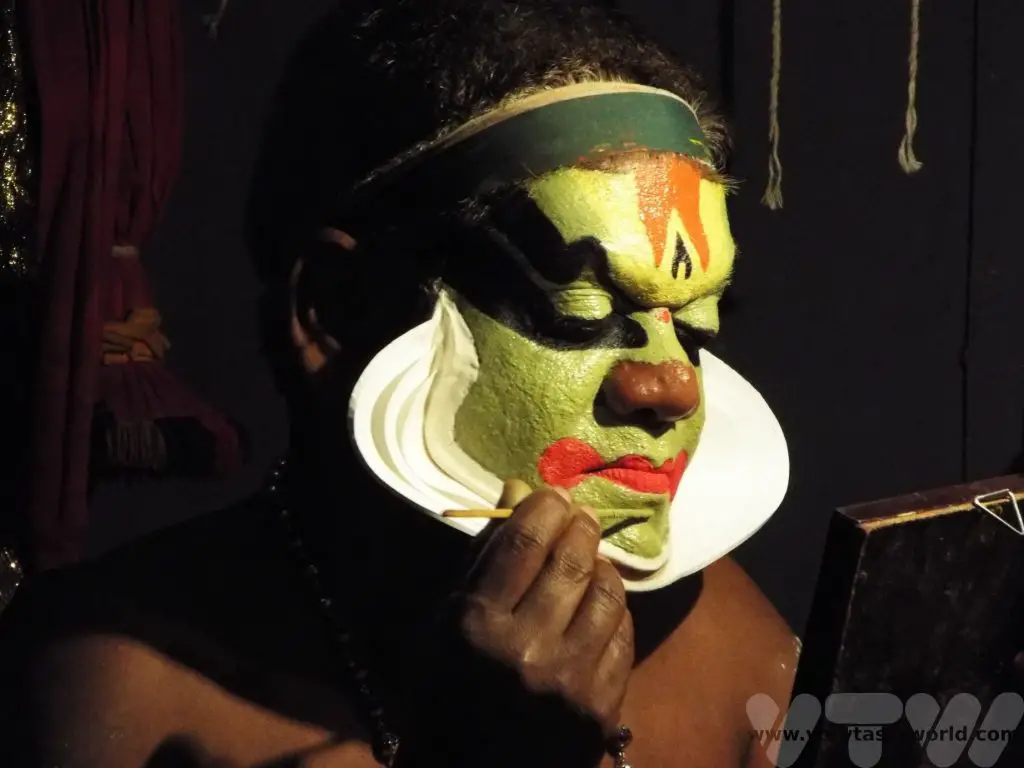
You have a choice of seating and if you sit in the stalls there’s a possibility that you may be called up on stage to take part in the performance. It’s largely mime-based so no need to worry about any language skills.
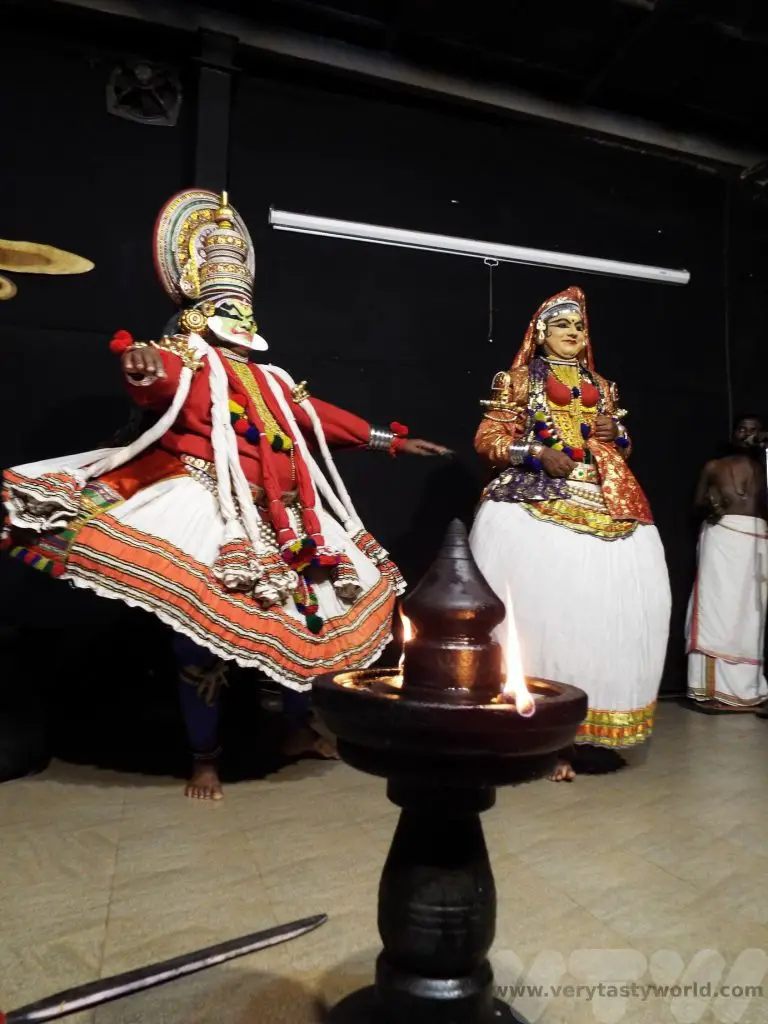
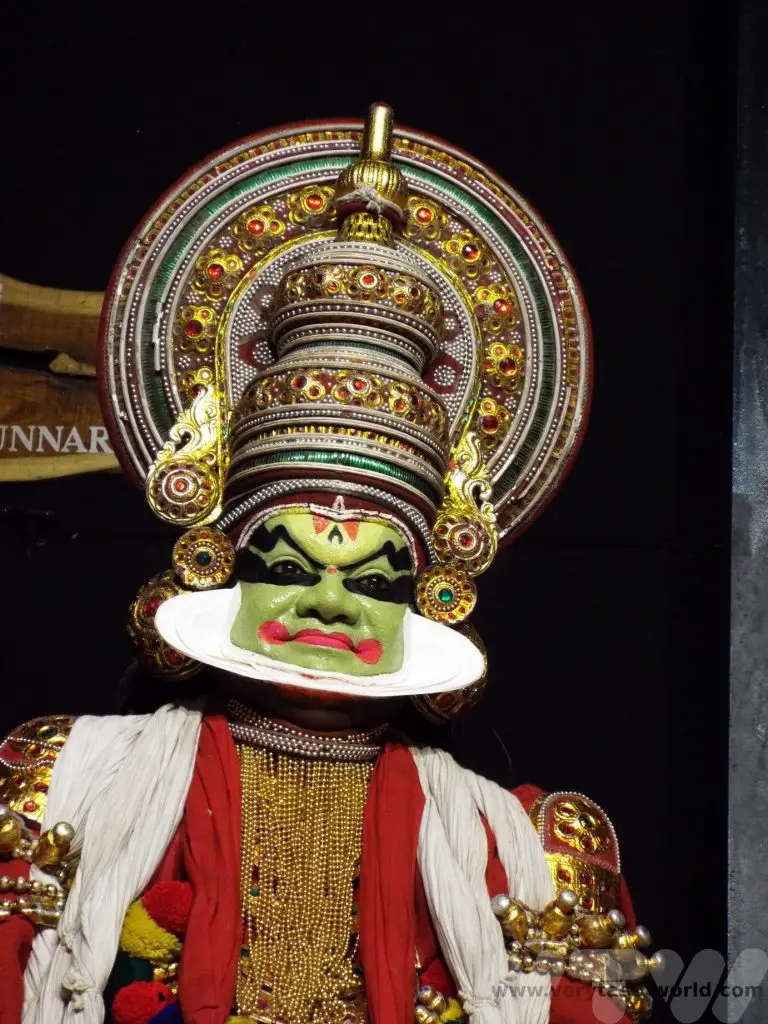
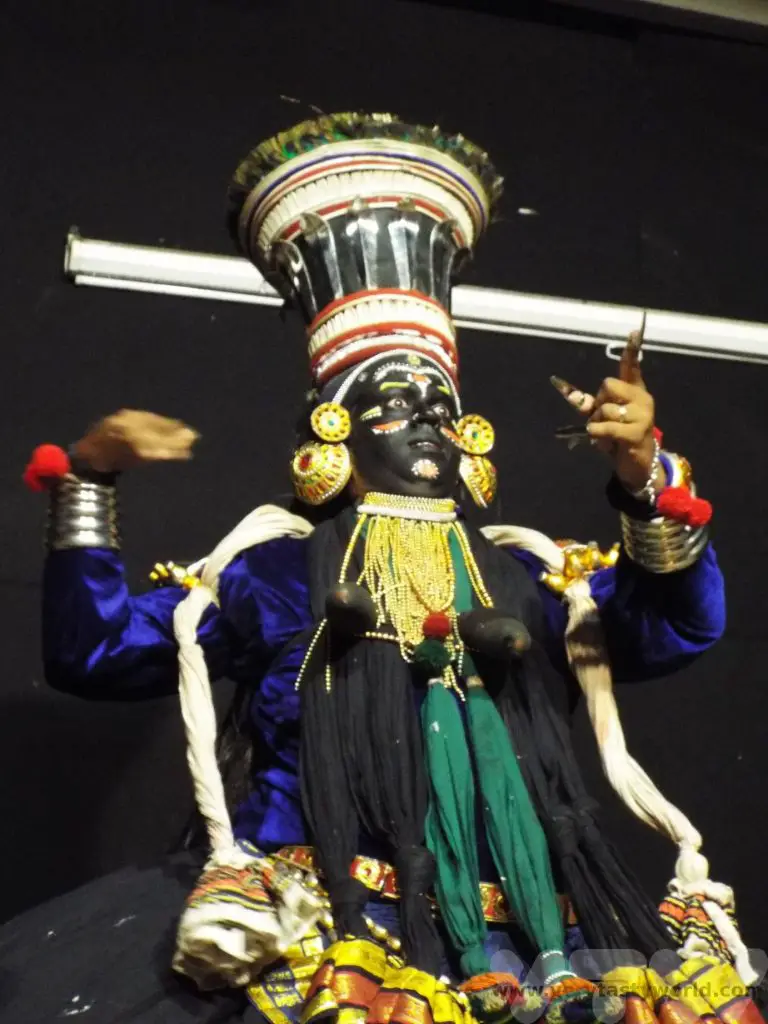
The Kathakali lasts around an hour and, if you wish, you can then watch a Kalaripayattu performance in an adjoining theatre. This is a form of Indian martial art, indeed it is one of the world’s oldest martial arts, and is spectacular to watch. It is highly acrobatic and uses a number of weapons. The demonstration is lively, exciting and occasionally scary!
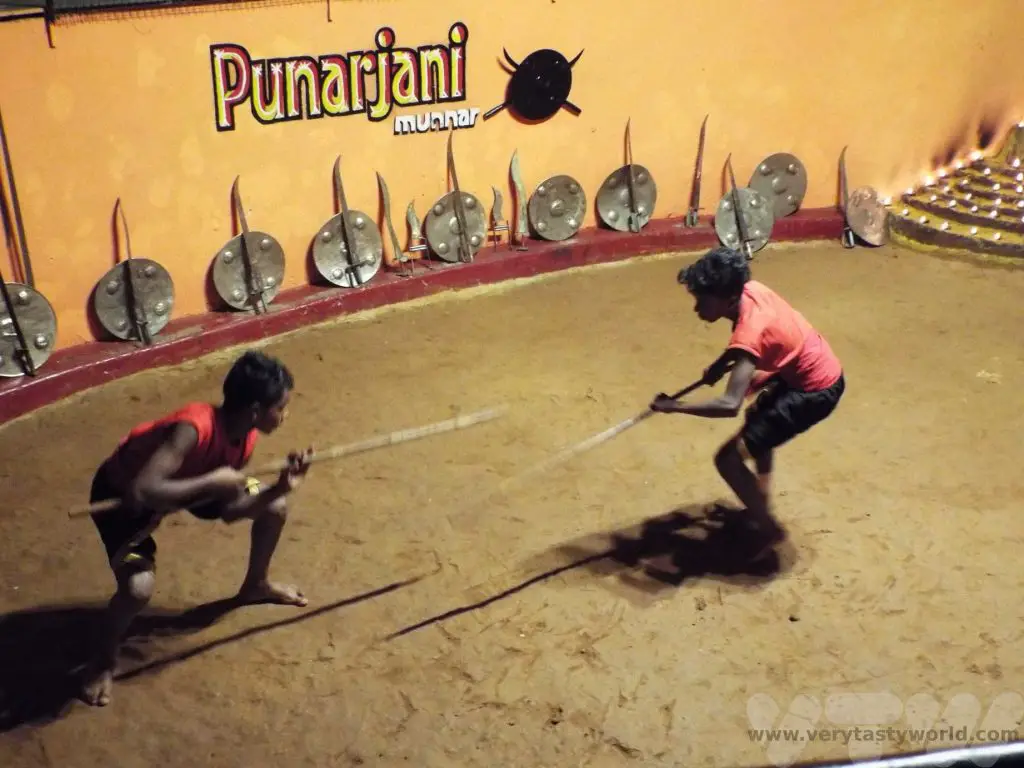
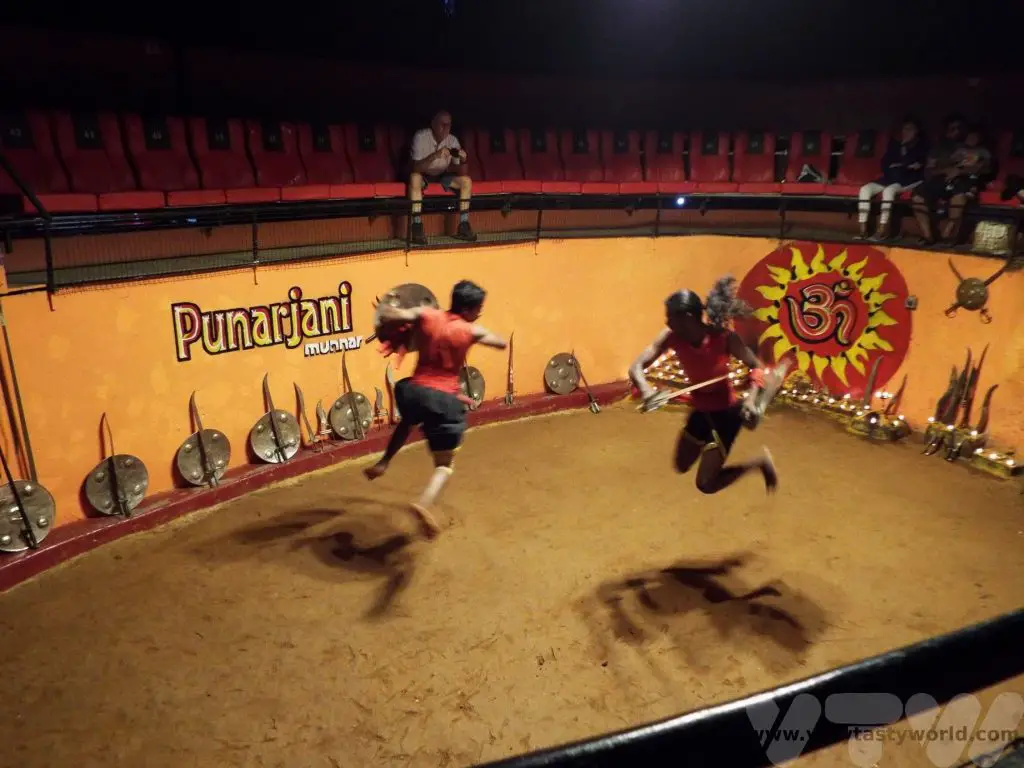
Eating in Kerala
All the meals we ate in Kerala were completely brilliant. Because of the diversity of the region both vegetarian and non-vegetarian meals, featuring fish, poultry and red meat, are readily available. The fish dishes are particularly good, using locally caught fish from the rivers and the sea. The food is delicately flavoured with local spices – all the spices we encountered at the plantation featured heavily, notably black pepper, clove, cardamon, cinnamon and ginger. Here are some of the dishes we tried.
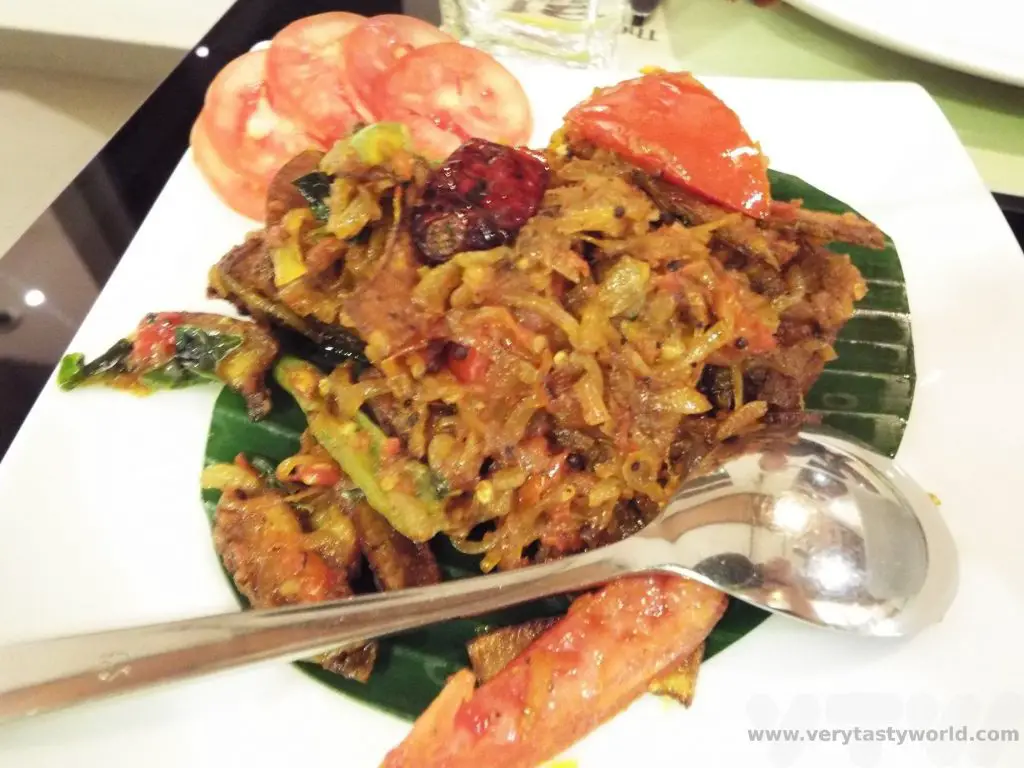
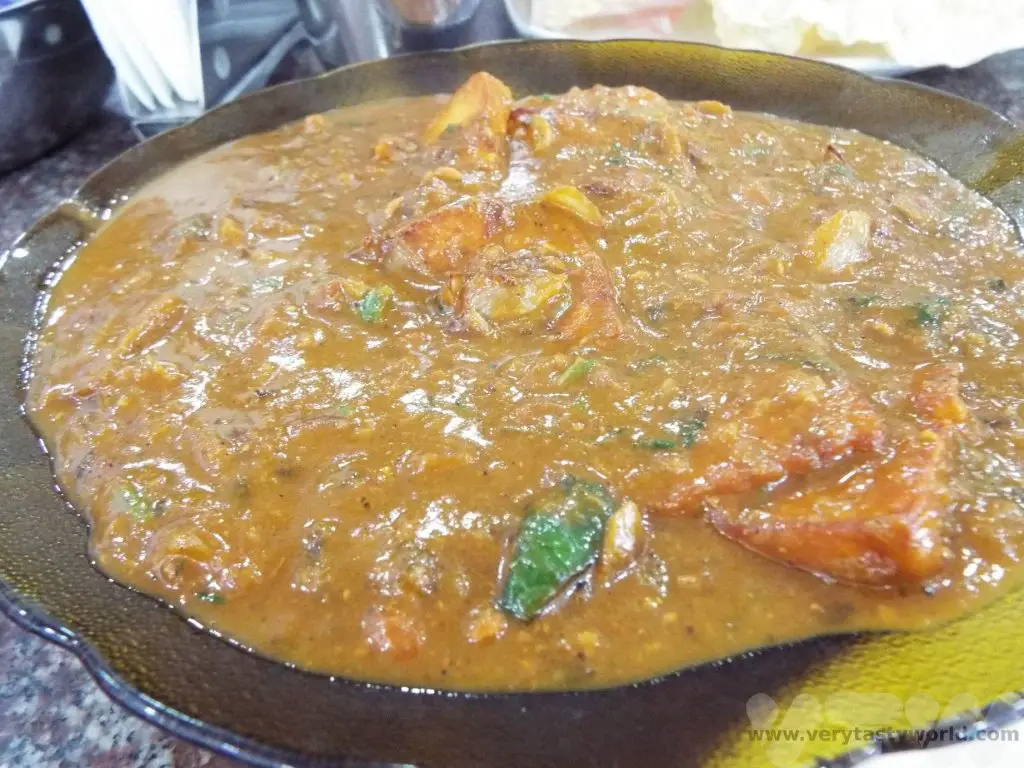
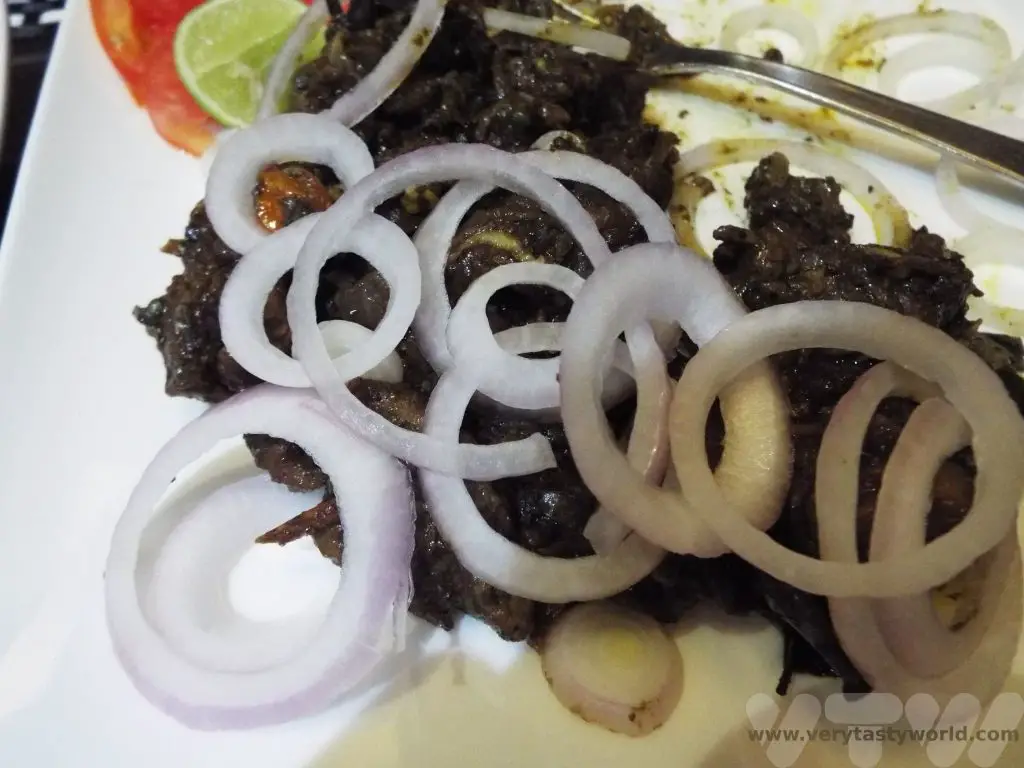
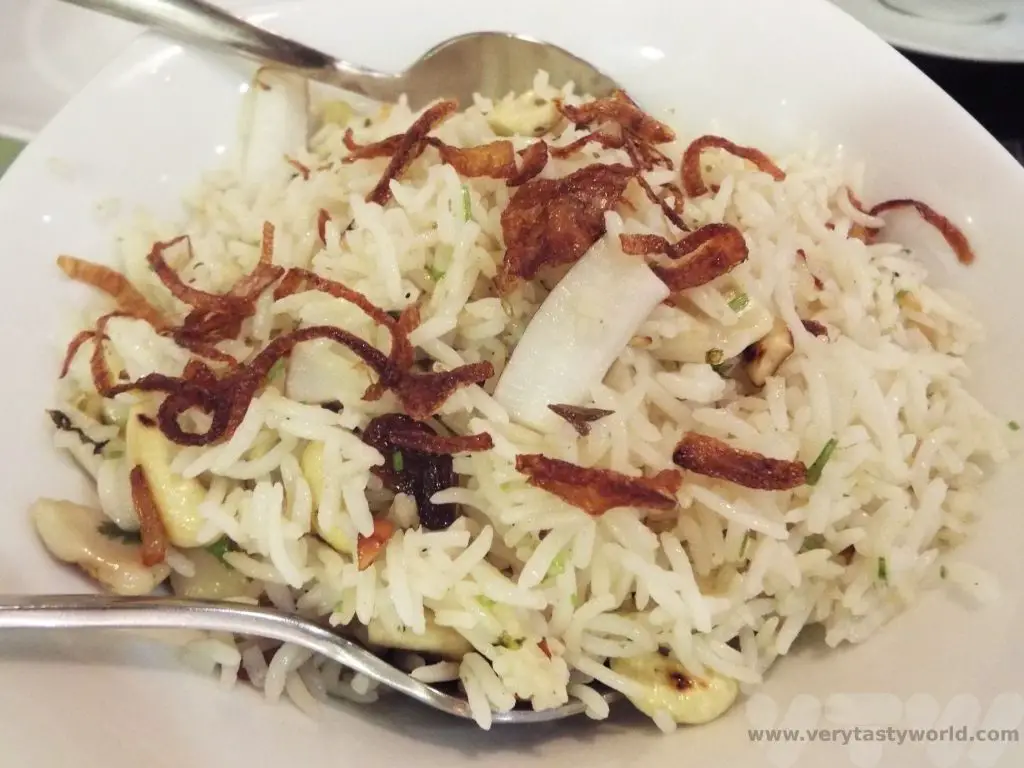
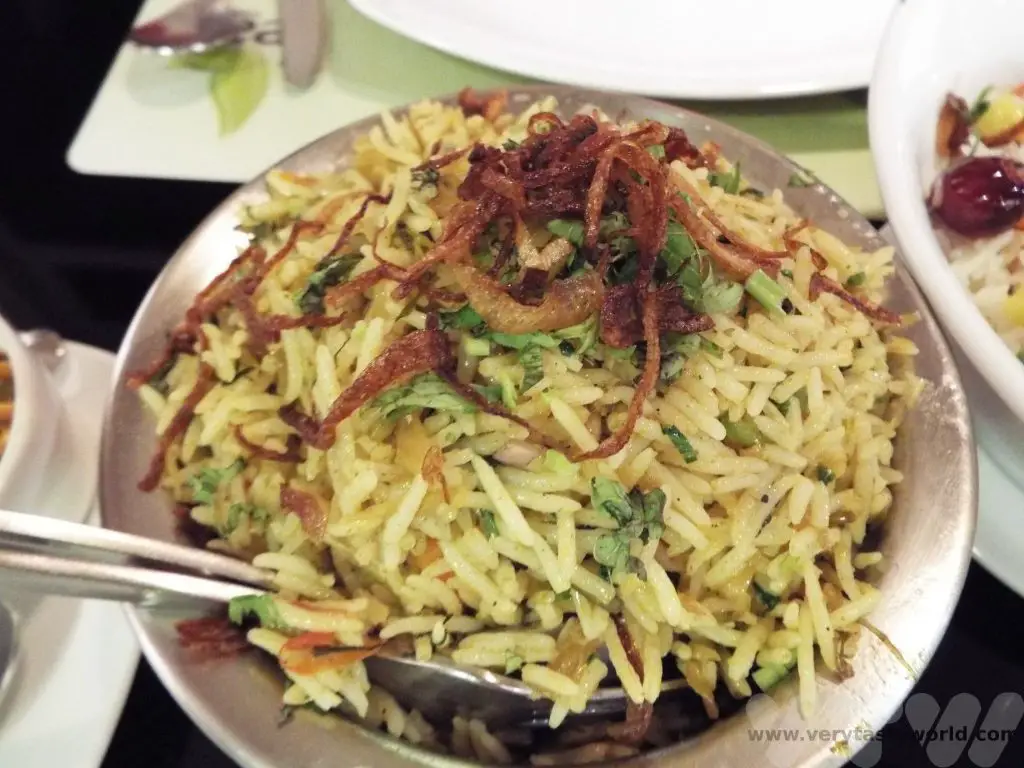
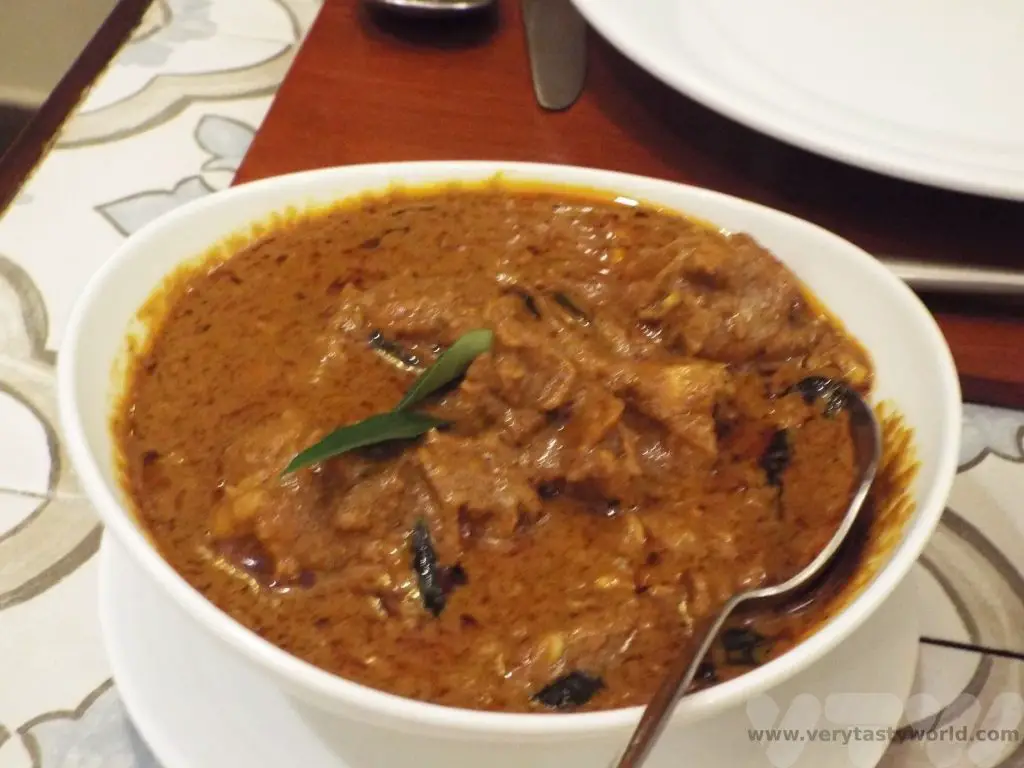
Munnar has so many things to offer the visitor – nature, wildlife, culture and, of course, the most delicious food.
Related Posts You May Enjoy

Visit Yakushima Island in Japan
The Island That Inspired The Setting of Studio Ghibli’s Princess Mononoke
Anyone who is familiar with the delightful animations of Japan’s Studio Ghibli will that know that its founders, Hayao Miyazaki and Isao Takahata, created very distinctive locations for the settings of their films. Princess Mononoke was one of the first Ghibli films really to break into public consciousness, albeit largely with animation fans, in western countries in 1998 (the smash hit Oscar winning Spirited Away in 2001 ensured that the studio’s fame was assured). Princess Mononoke’s setting was inspired by the island of Yakushima, located around 60km from the southernmost point of Kyushu, Japan’s third largest island, which is part of the Osumi chain of islands. The island is almost perfectly round and mountainous. It’s also very beautiful indeed. And even if you aren’t familiar with the films of Studio Ghibli there are all sorts of things to do if you visit Yakushima.
Getting To Yakushima
Being big fans of Studio Ghibli and, having visited the fabulous Studio Ghibli museum on previous visits to Japan, we decided that we definitely wanted to visit Yakushima for a couple of days. On this trip we had decided explore Kyushu. We flew into Osaka and then caught the shinkansen (bullet train) to Nagasaki and then across to the southern city of Kagoshima. Kagoshima is a lovely laid-back city set in the shadow of the active volcano Sakurajima, which regularly emits rumblings of ash and smoke. It’s possible to visit the volcano by crossing the picturesque bay on a ferry.
In Kagoshima we chose a business hotel that was close to the port. The staff were happy to look after our luggage for a couple of days, so we just packed a small bag, which meant that we could travel light. The excellent YesYakushima company helped us to visit Yakushima – they booked ferry tickets, car hire and accommodation for us. (This isn’t an affiliate link but we’ll happily recommend their free booking service which was absolutely excellent.) We were happy to explore for the island for ourselves but YesYakushima do offer guided tours if desired.
We caught the mid-morning Toppy/Rocket hydro-foil from Kagoshima port. It’s a picturesque journey as you sail across the bay. There are other options, such as a car ferry, but this was the quickest means of transport and it took around 2.5 hours.
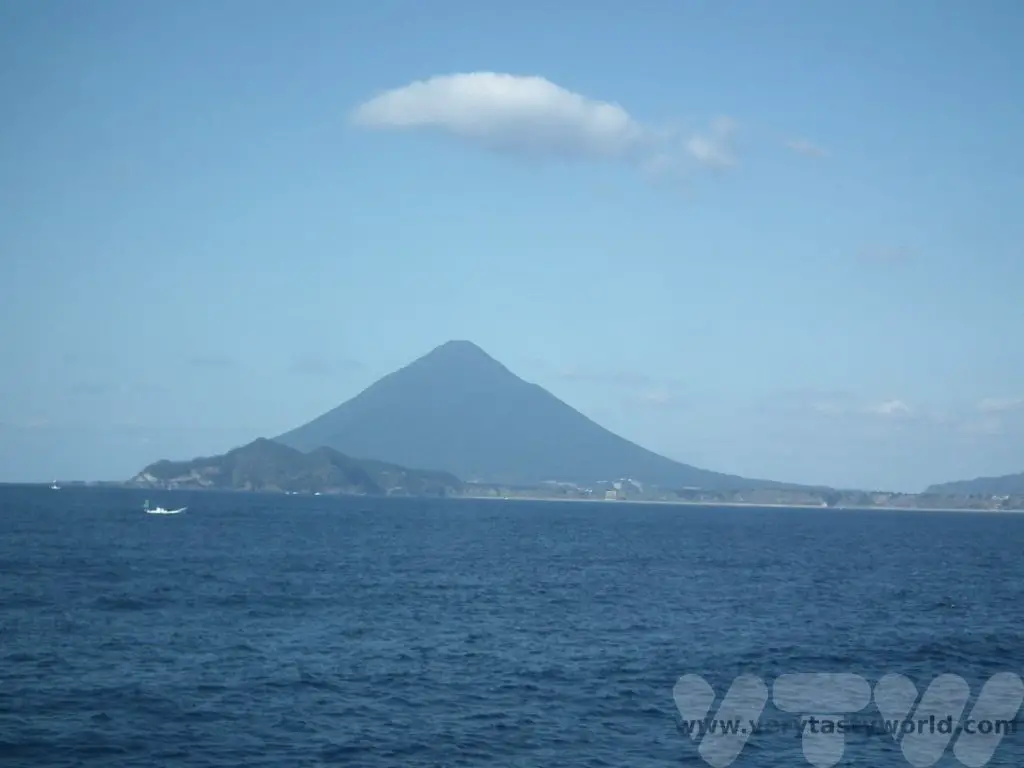
Our boat stopped off at Tanegashima island before arriving at Yakushima. (Some boats go direct, so check the timetable.) When we arrived at Anbo port our hire car was waiting for us, so we picked it up and were on our way. Driving was mainly very easy but if you don’t fancy getting behind the wheel buses are available.
Visit Yakushima – Staying On The Island
We treated ourselves to a stay at a ryokan, a traditional Japanese inn. Usually when we plan our trips to Japan we use a combination of cheap business hotels and then splash out on a few nights at a ryokan or two, which is more expensive but definitely worth the extra cost. The traditional inns usually have tatami (reed mat) flooring and you sleep on a futon, which is usually laid out for you while you eat dinner. We stayed at Tashiro Bekkan at Miyanoura.
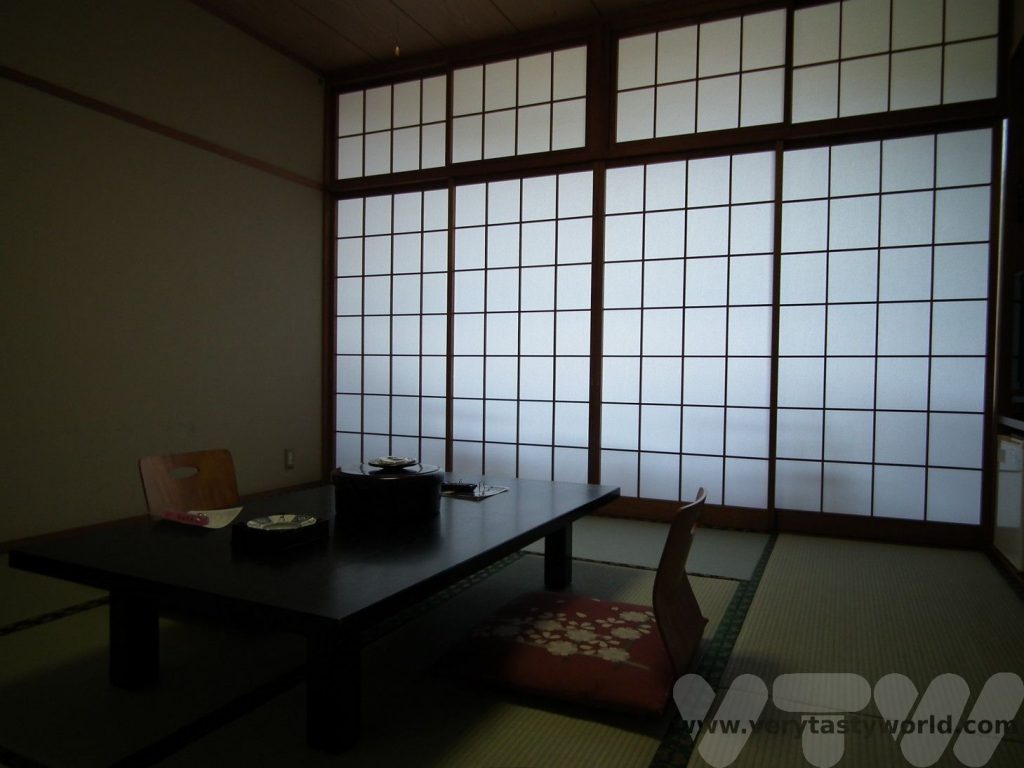
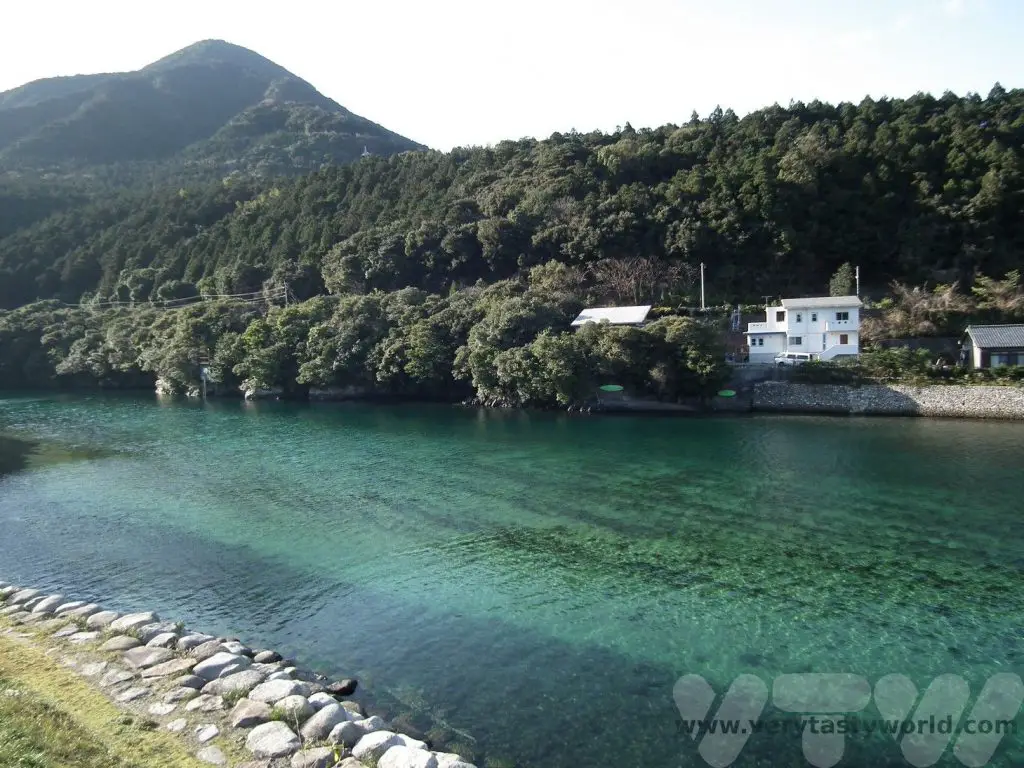
The ryokan had a large tatami room, private bathroom and balcony with a view across the crystal clear Miyanoura river.
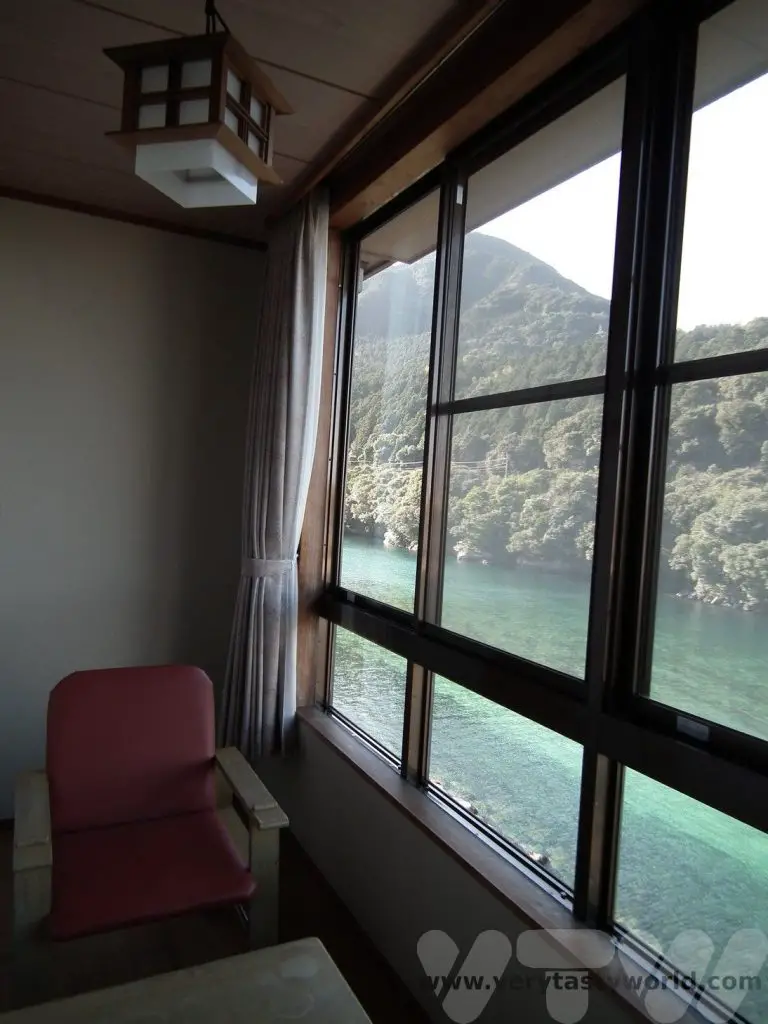
We chose to stay on a half-board basis, so ate the most exquisite food which included local ingredients such as seafood, mountain vegetables and, of course, kuro buta (black/Berkshire pork), a speciality of the region. The staff were delightful and we managed to have a few conversations with them in bad Japanese (our Japanese was bad, theirs was fine!)
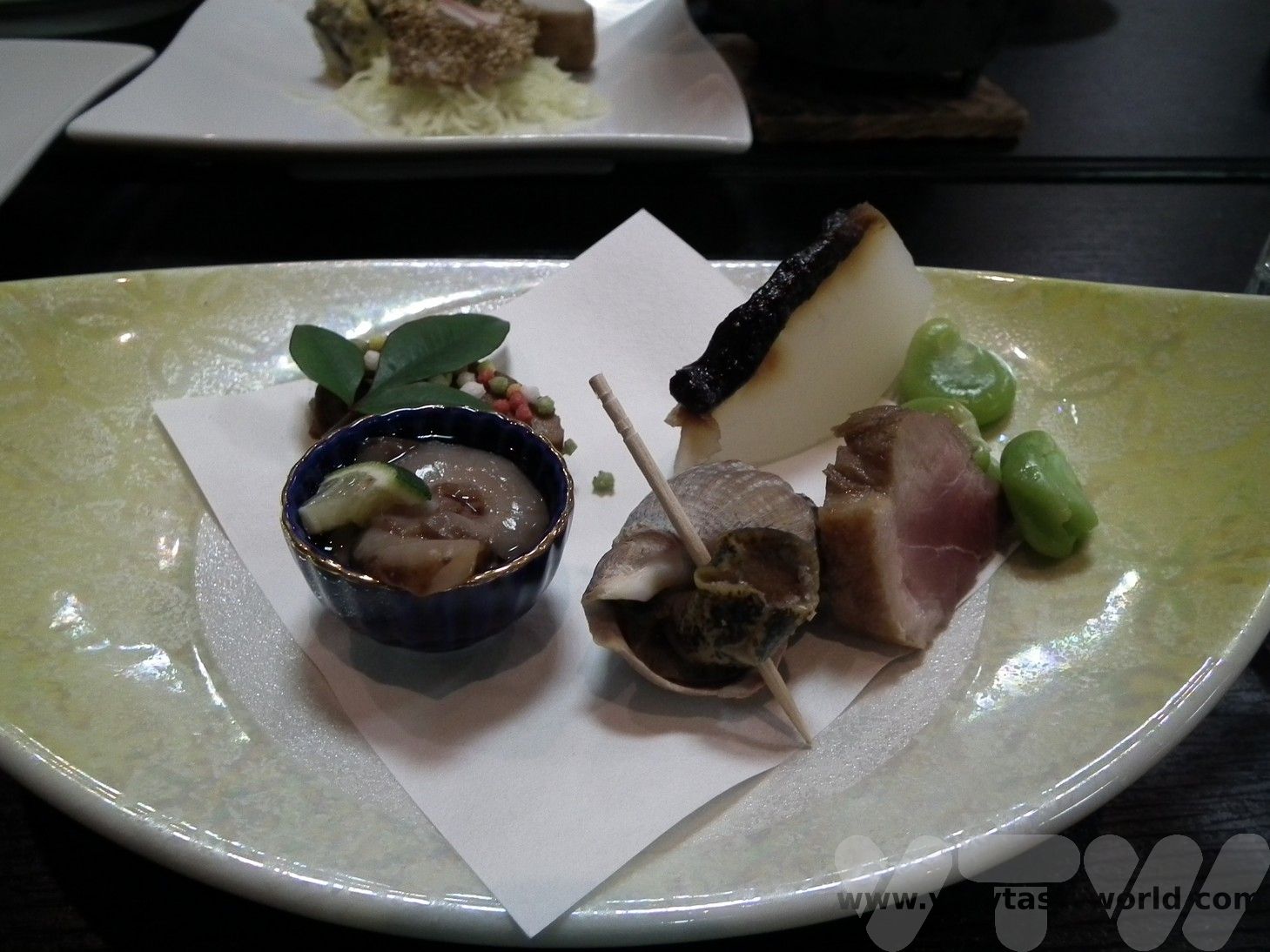
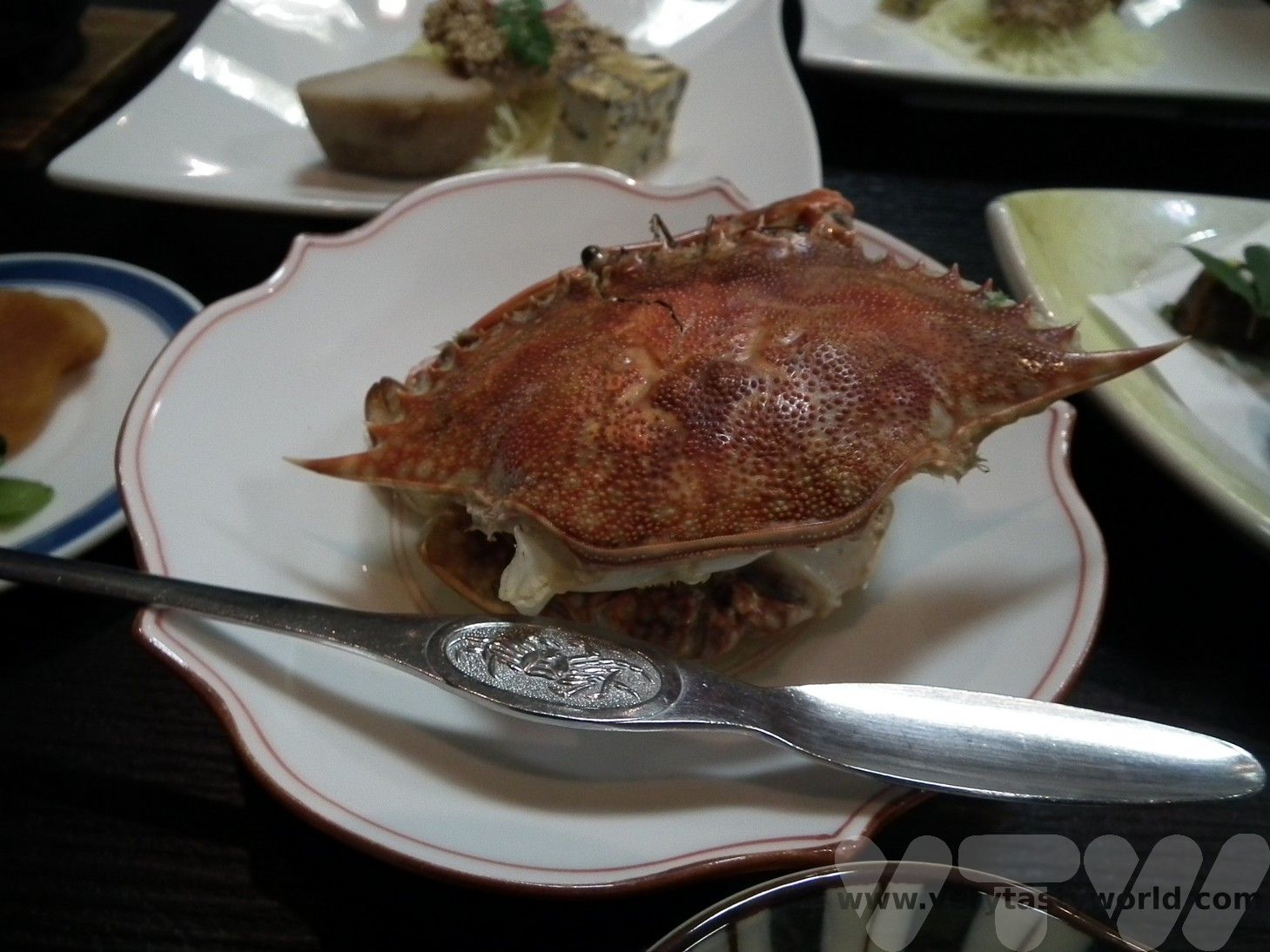
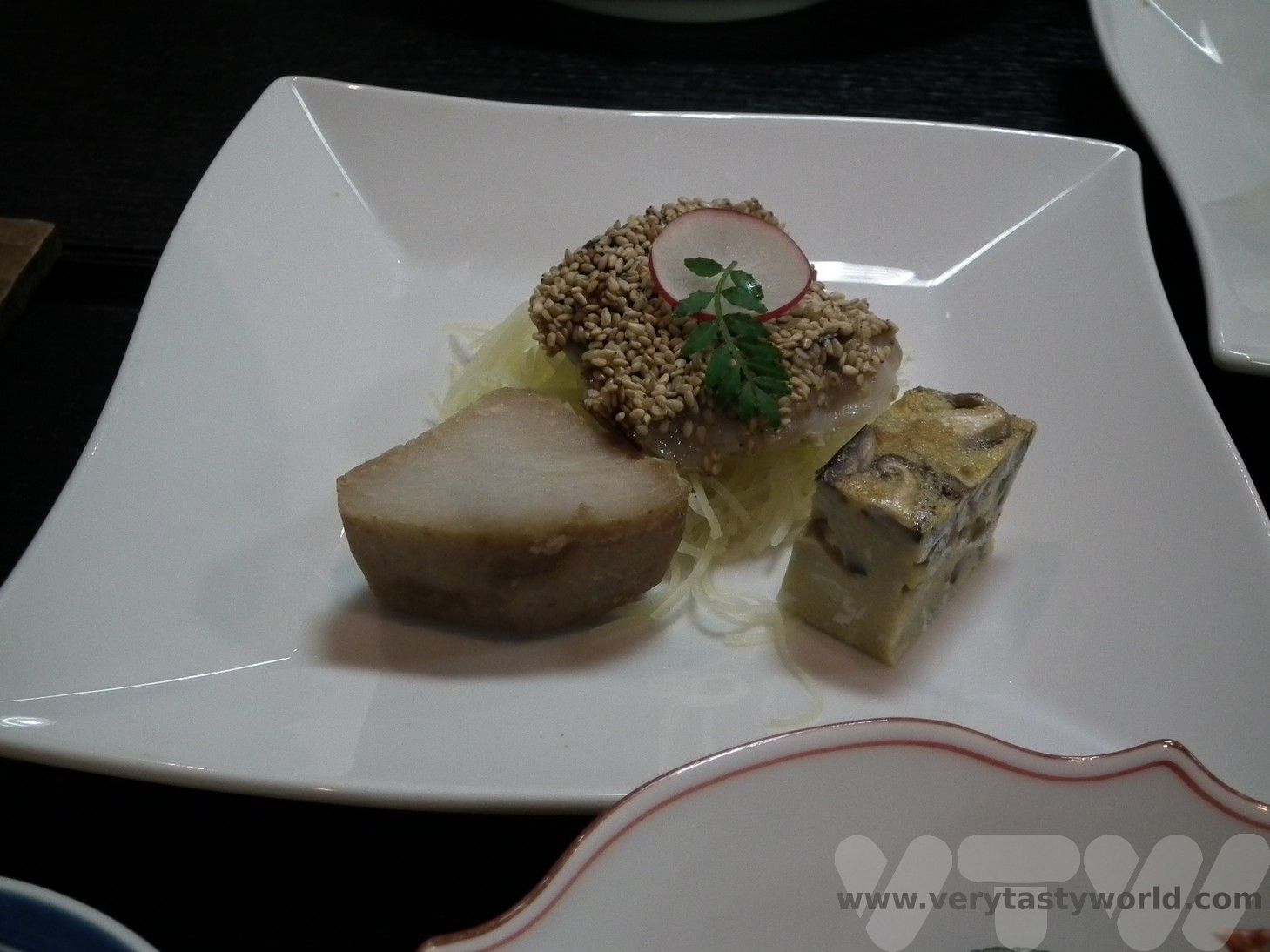
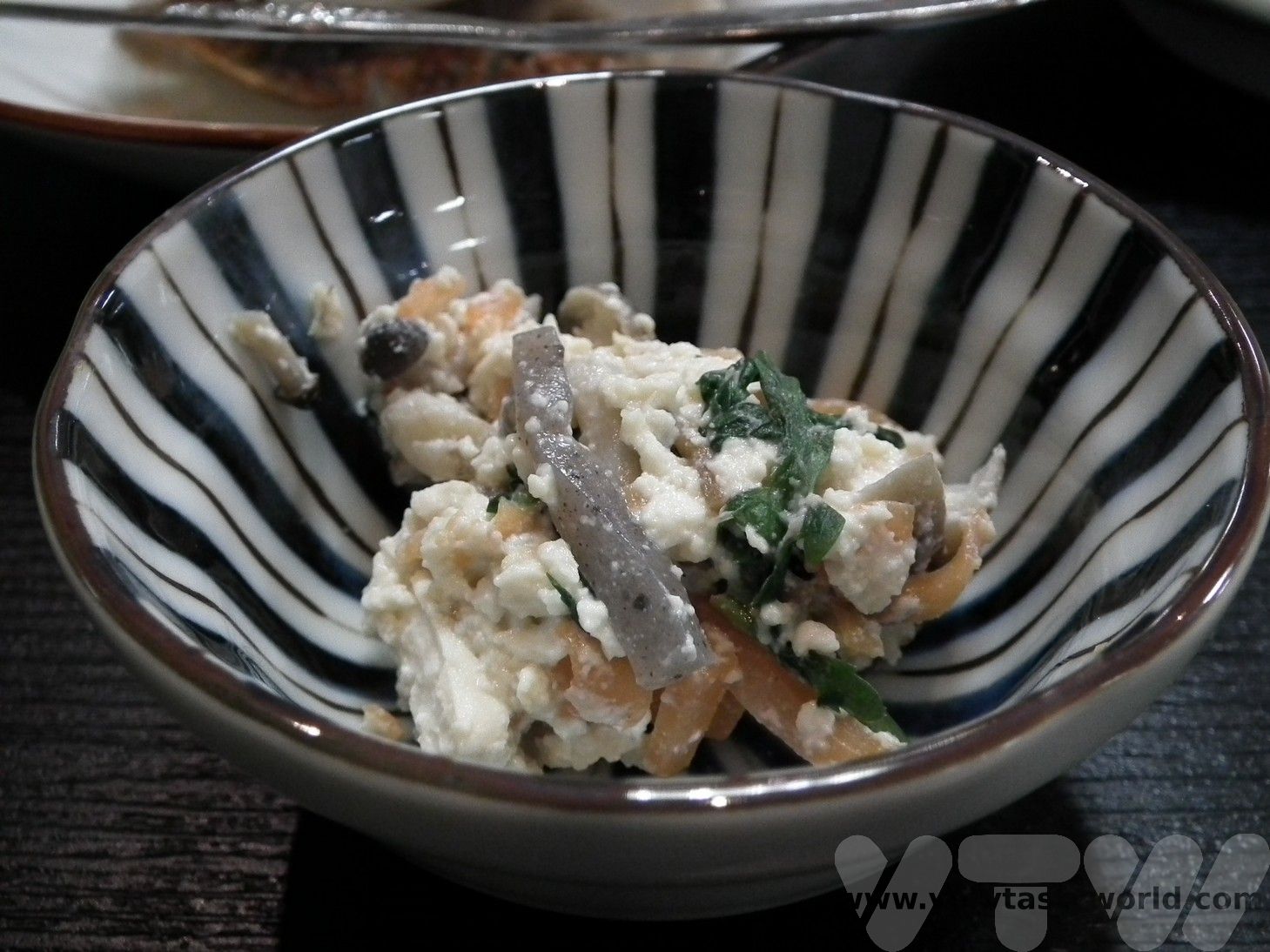
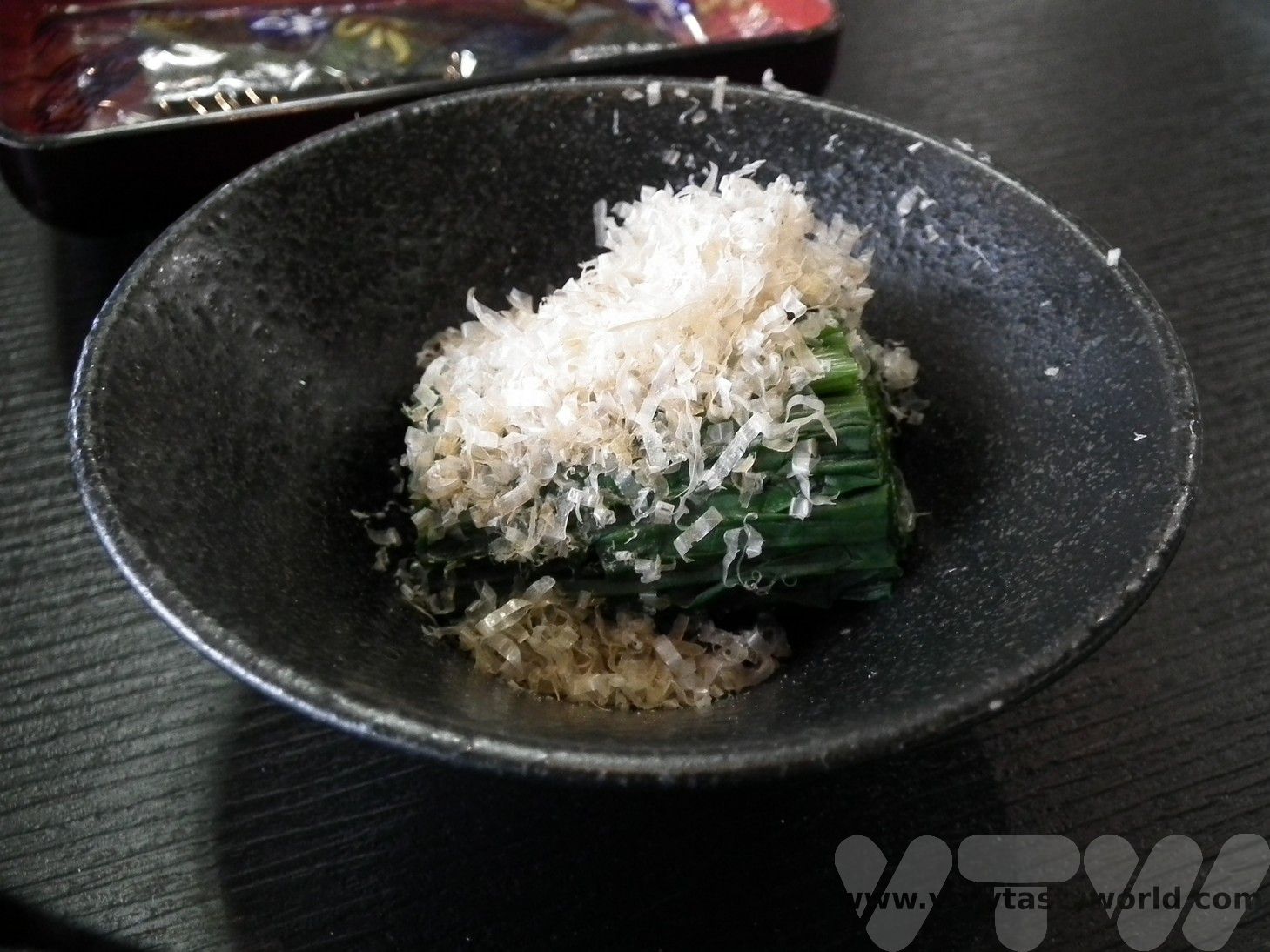
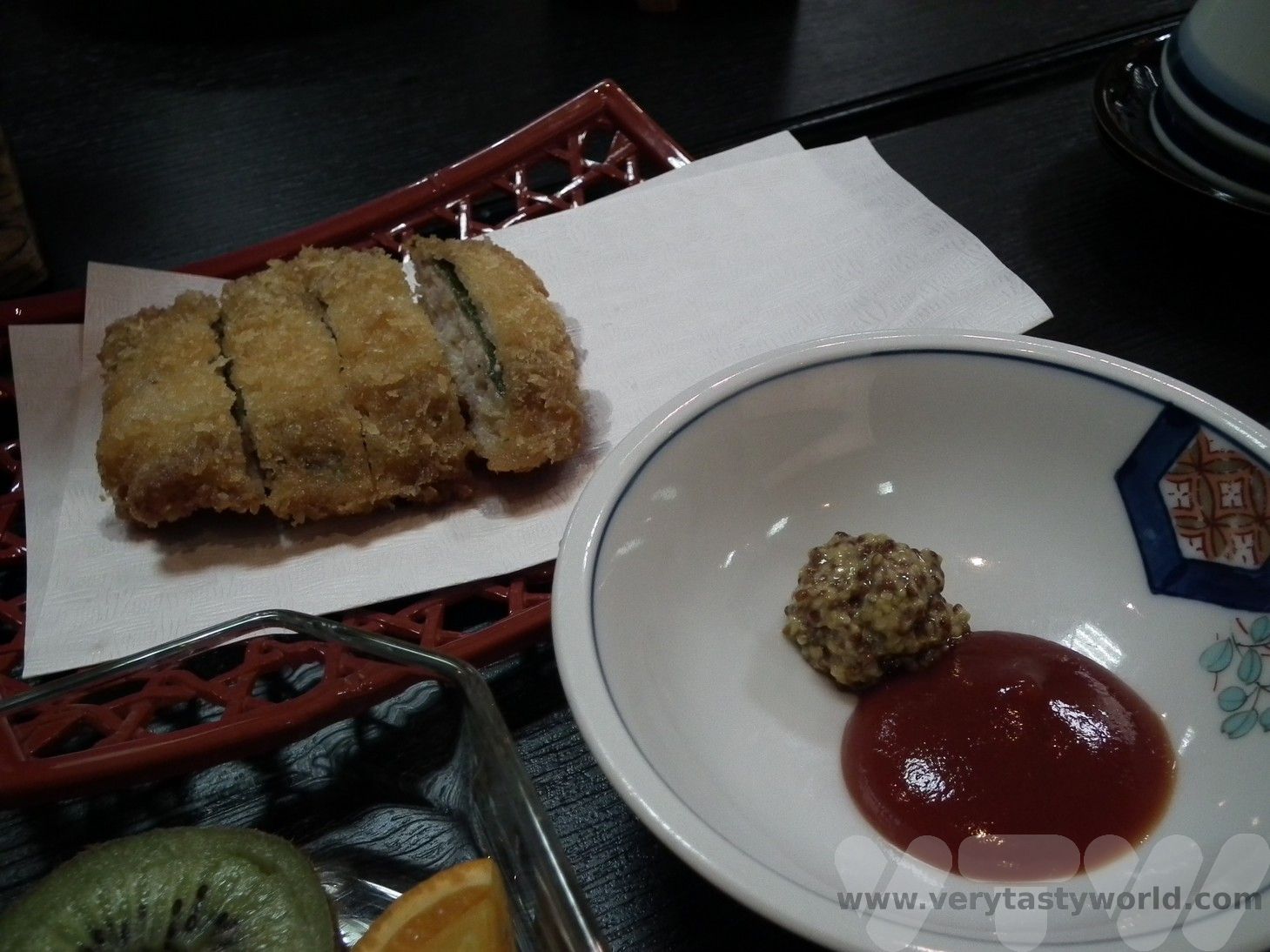
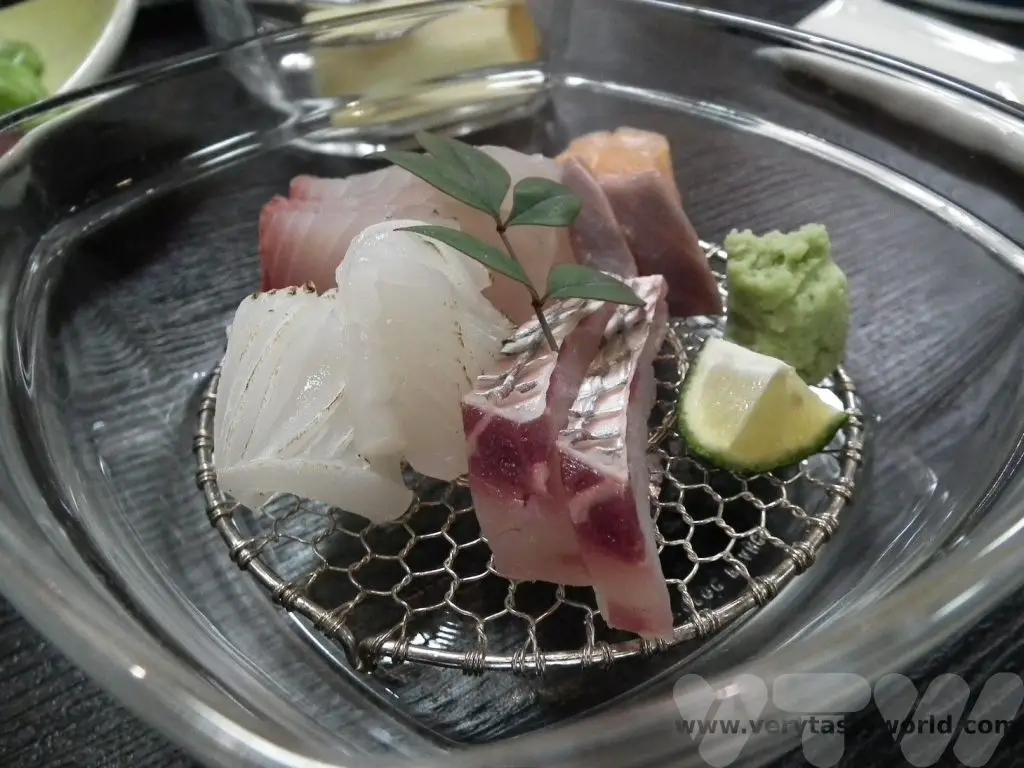
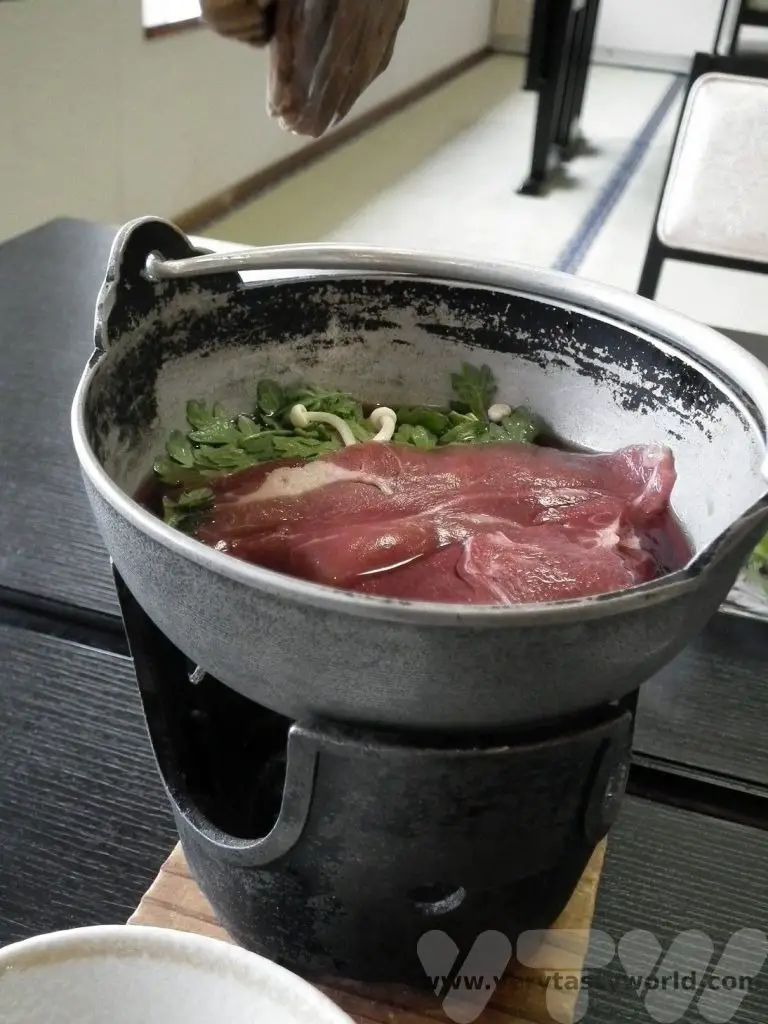
The ryokan was also able to offer us a bento lunch box – we simply placed an order the night before – and then picked it up before we went hiking the following morning.
Hiking In The Shiratani Unsuikyo Park
This park was the inspiration for the forest in Princess Mononoke and it is very clear to see how the artist Oga Kazuo used the stunningly beautiful landscape for the setting of the animation. It has ancient cedar trees and mossy paths as well as streams and waterfalls running through it. There are multiple trails from the car park and the walking is generally easy, although you need to take care of large tree roots that have grown across the path.
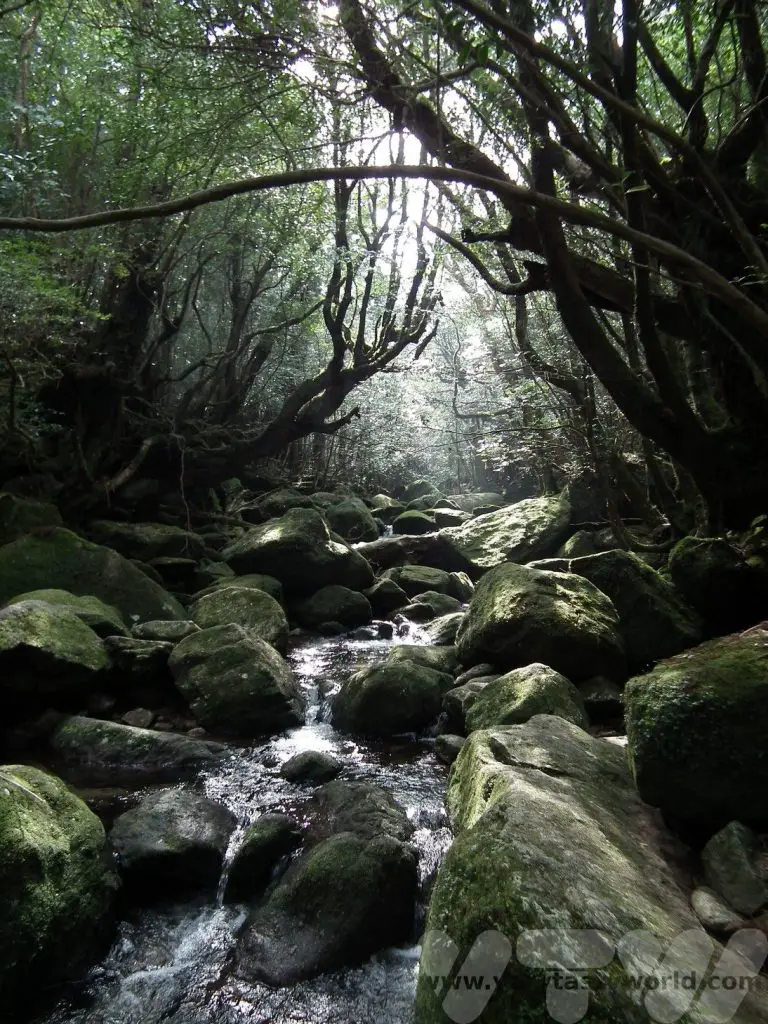
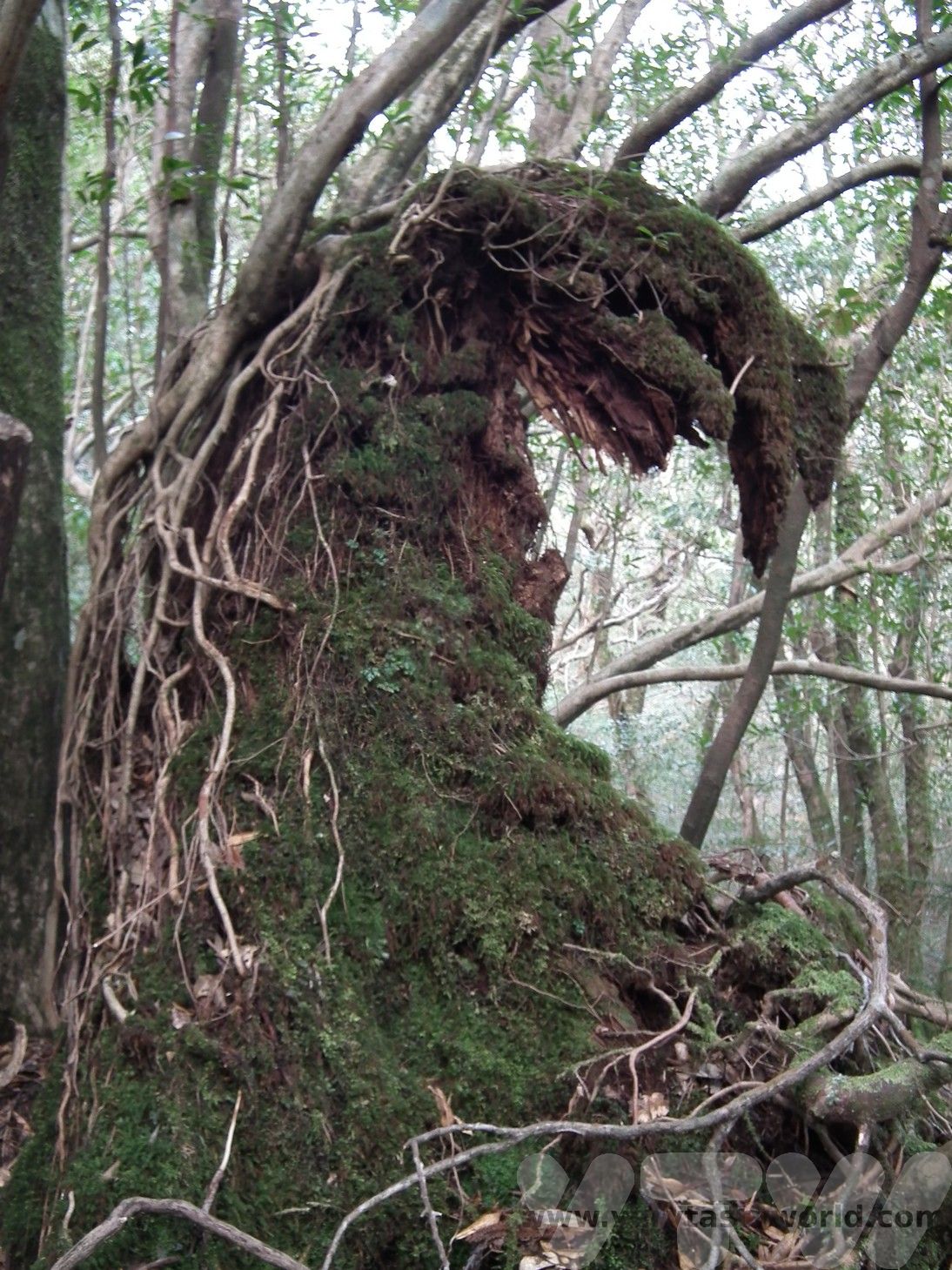
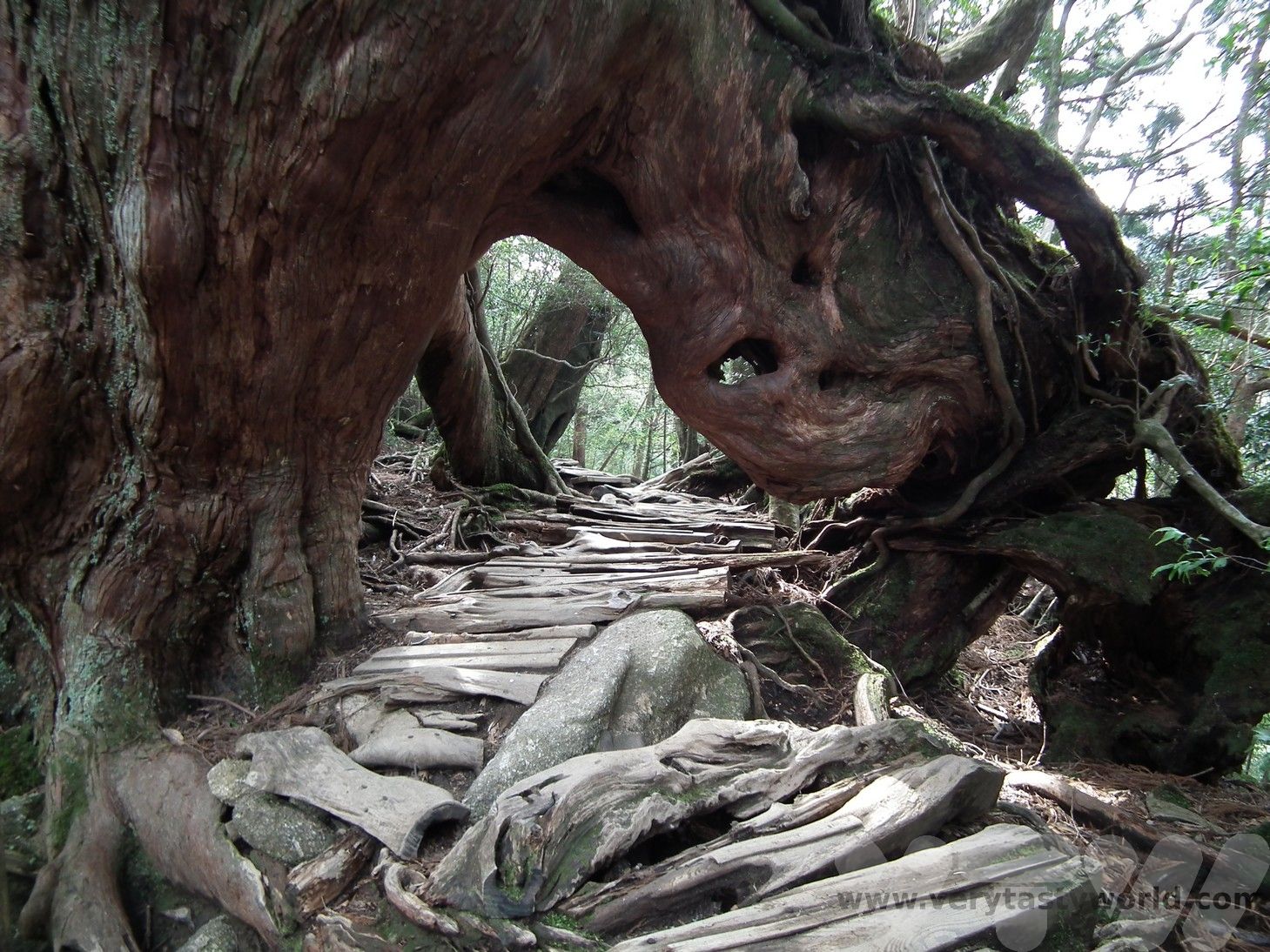
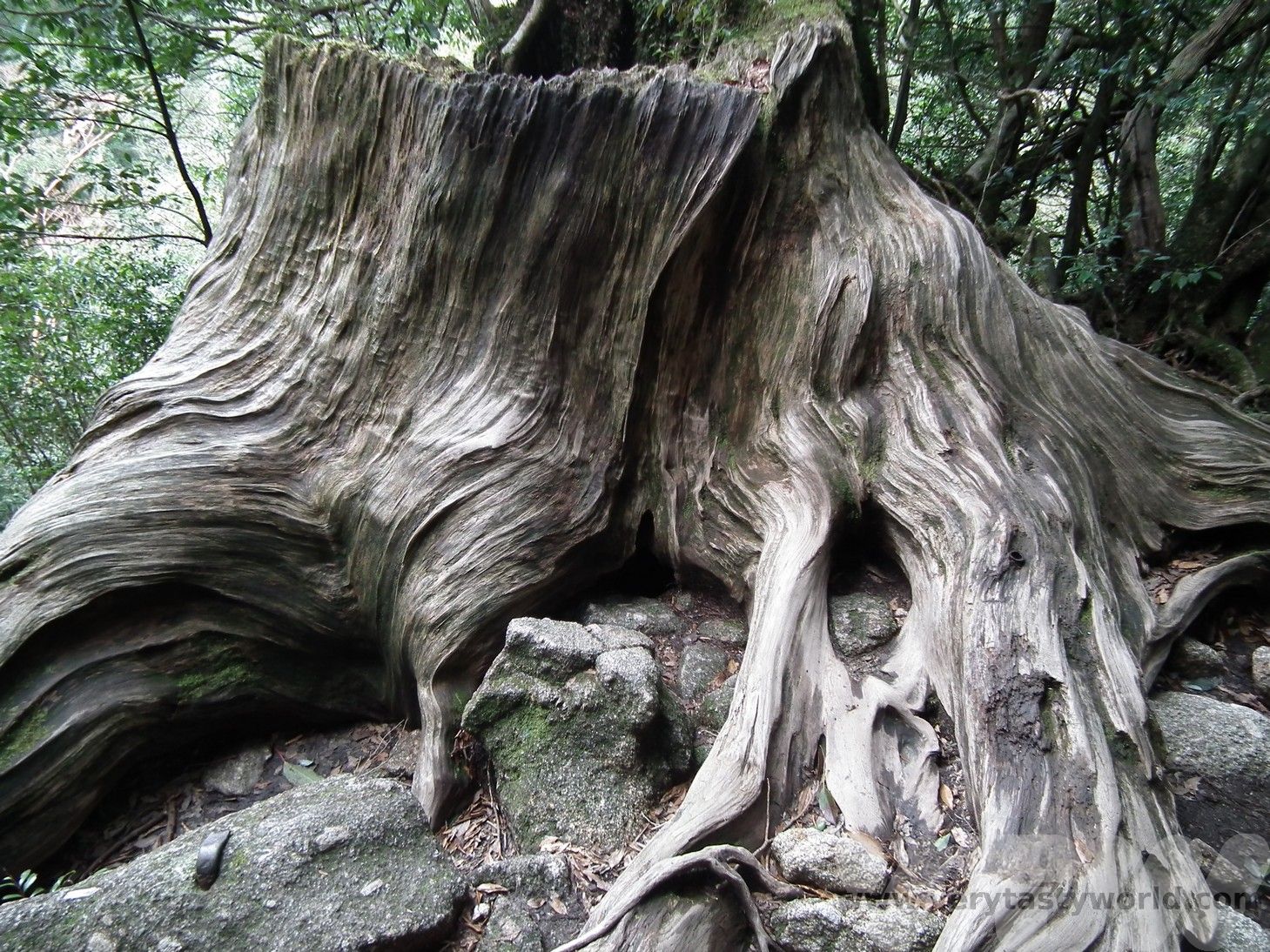
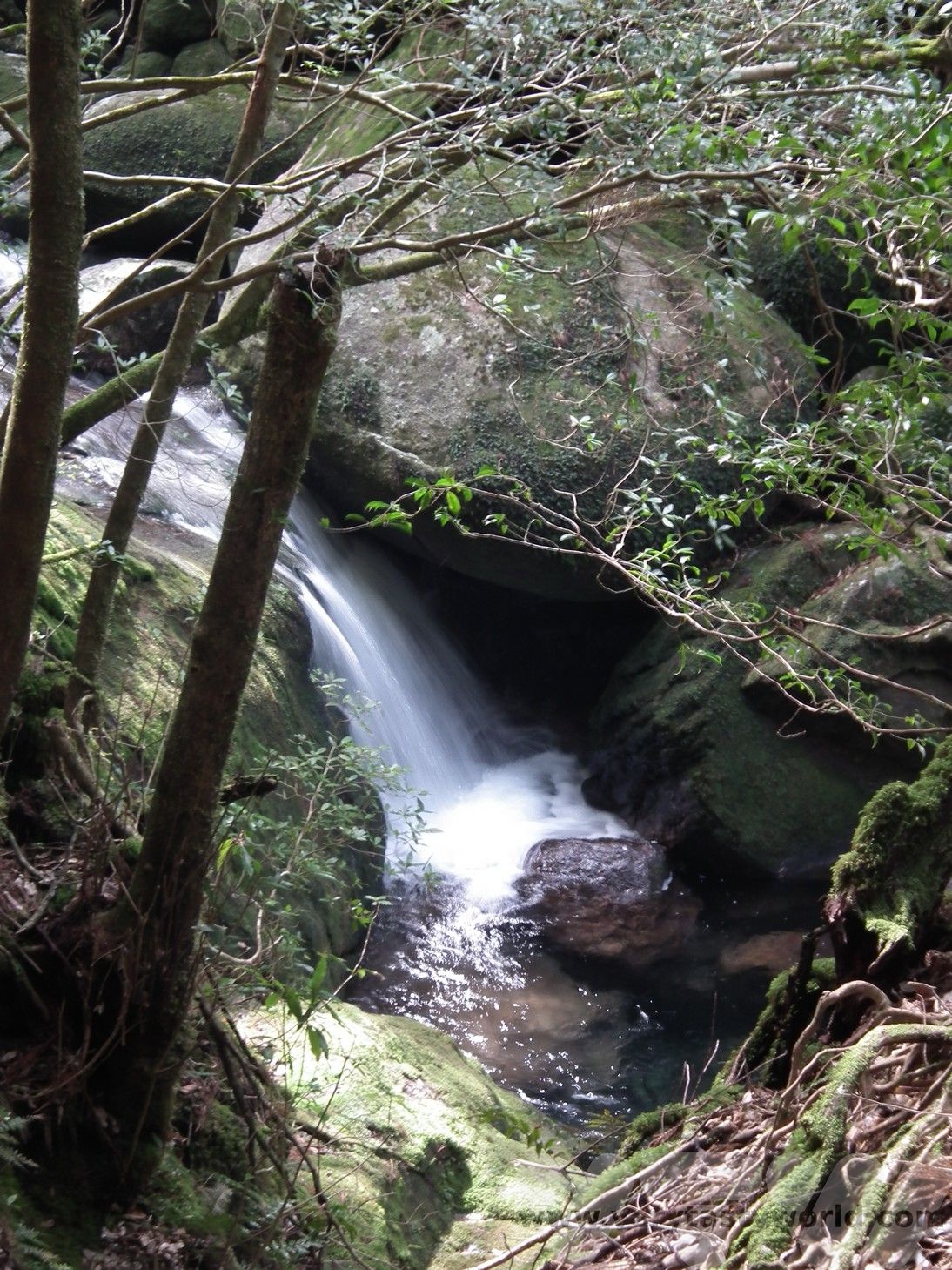
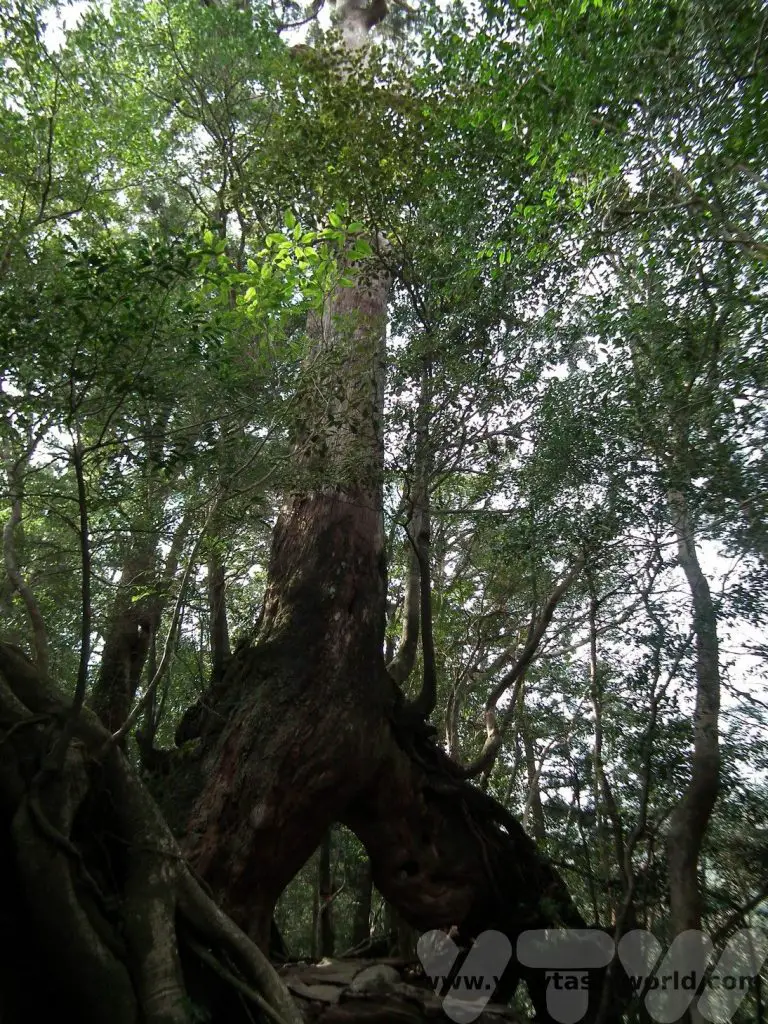
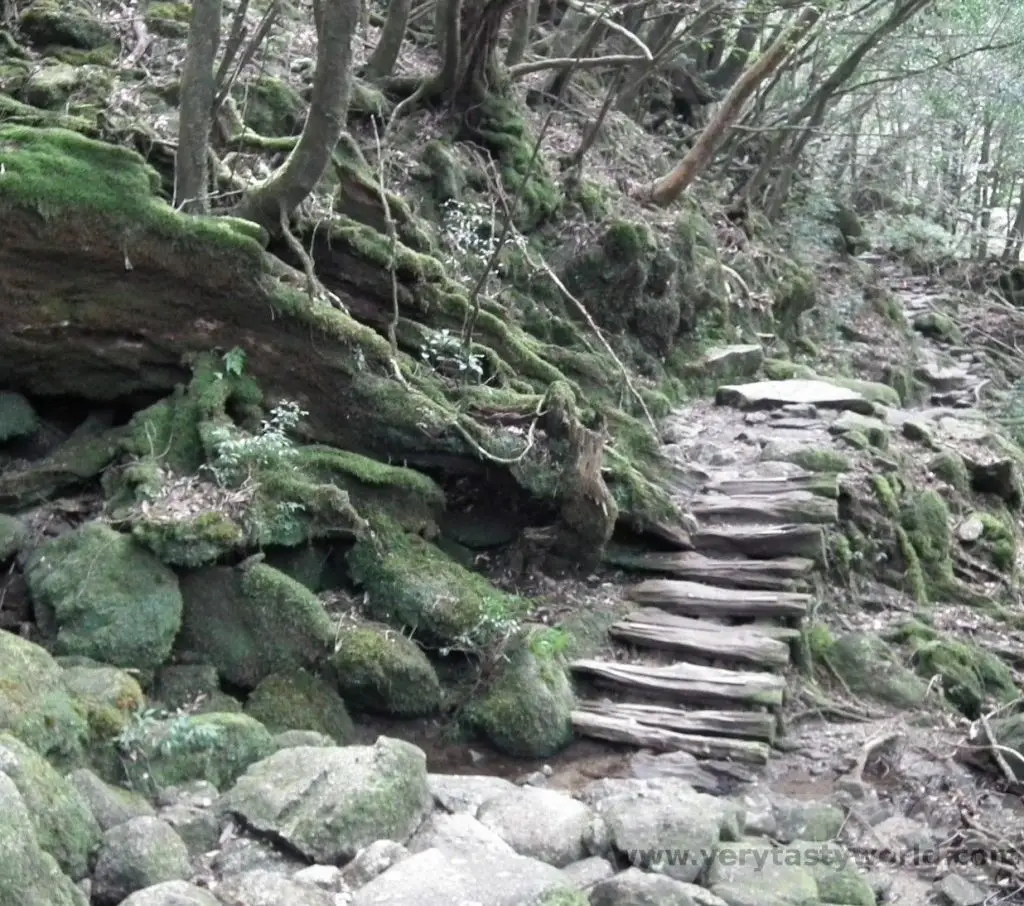
Visit Yakushima – Circumnavigate The Island
On our final day we decided to circumnavigate the island in the car before heading back to the hydrofoil. It’s largely a very easy drive but on the Seibu Rindo Forest path on the western part of the island the road narrows through the forest and becomes single track in some places, so you have to take care. We narrowly avoided a minor collision with a coach coming the other way.
From Miyanoura we drove north, stopping at the Shitoko Banyan Tree Park. Banyan trees are a complete contrast to the cedars of Shiratani Unsuikyo. These trees grow by dropping roots from the branches which eventually reach the ground and embed themselves in the soil creating additional roots to support the tree. They can also form around other types of tree and can eventually kill them as they choke the existing root system.
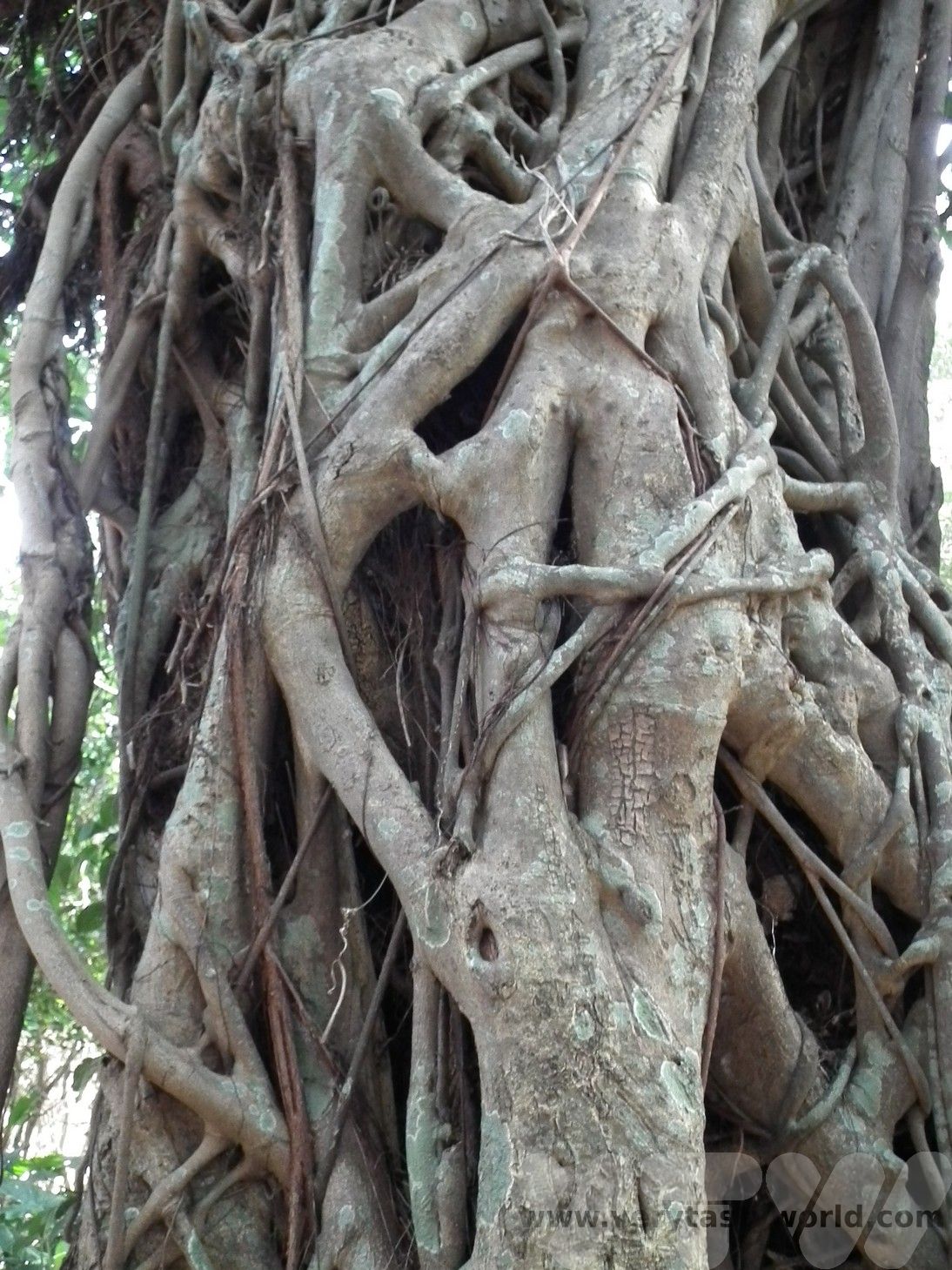
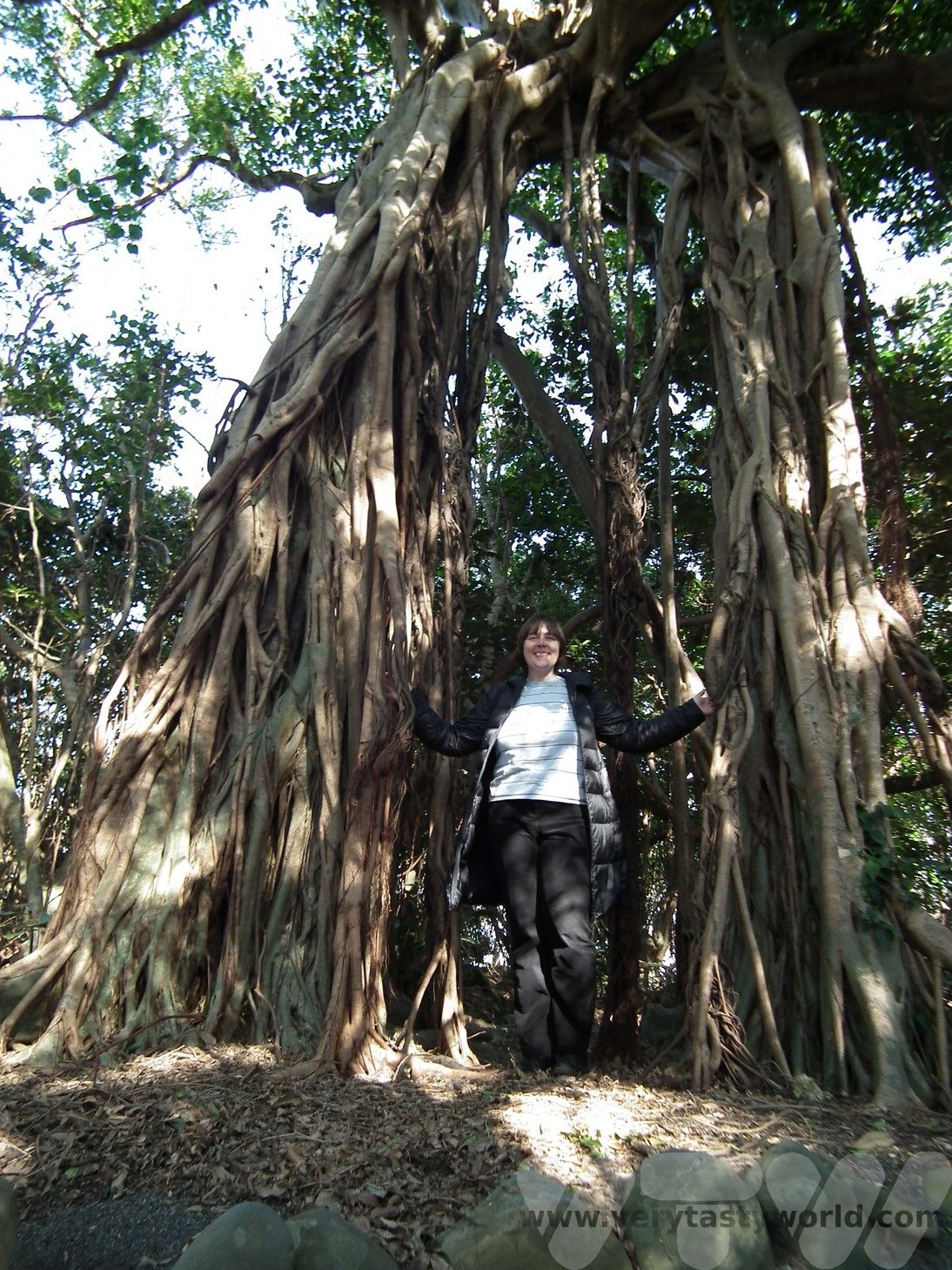
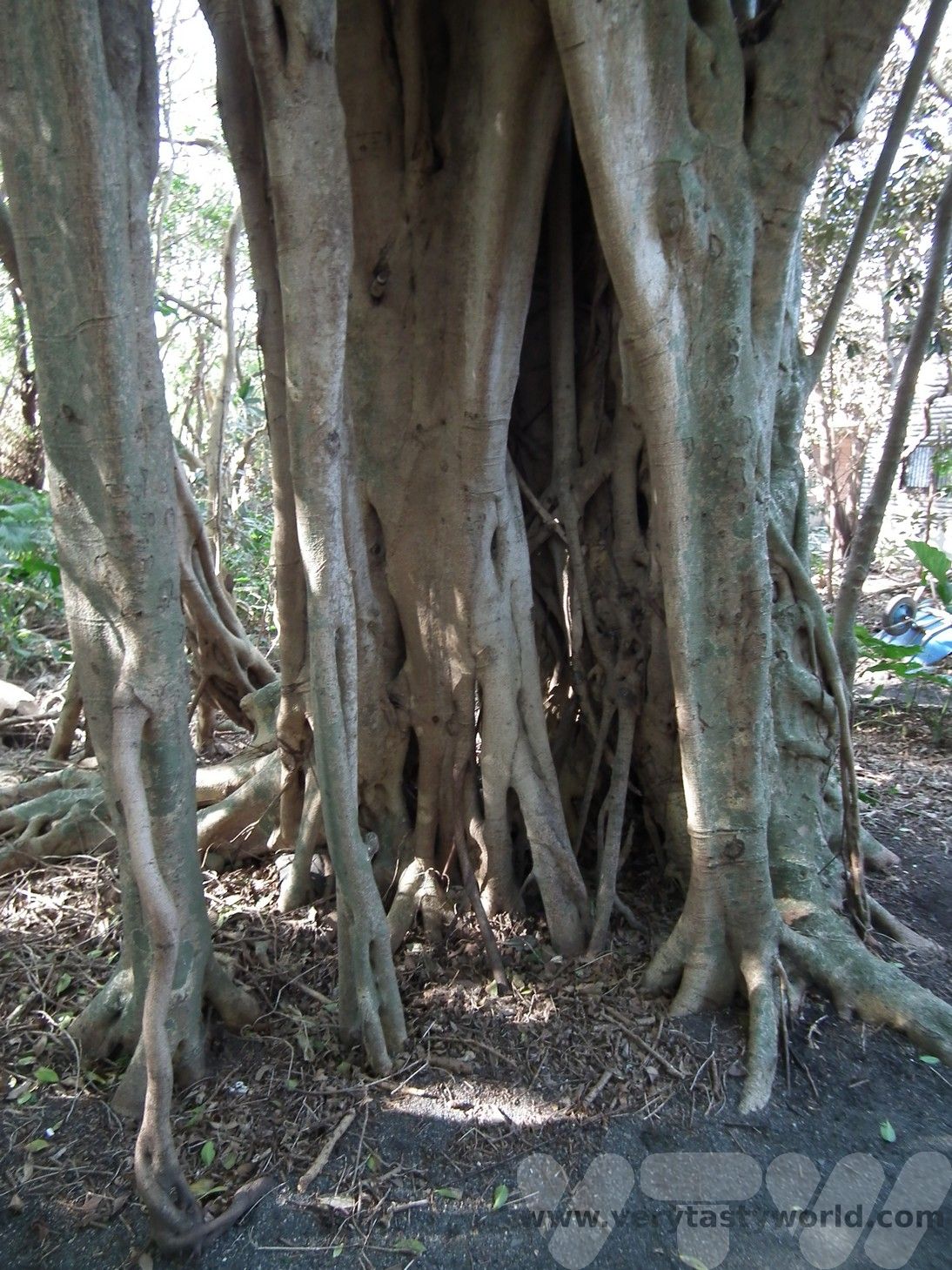
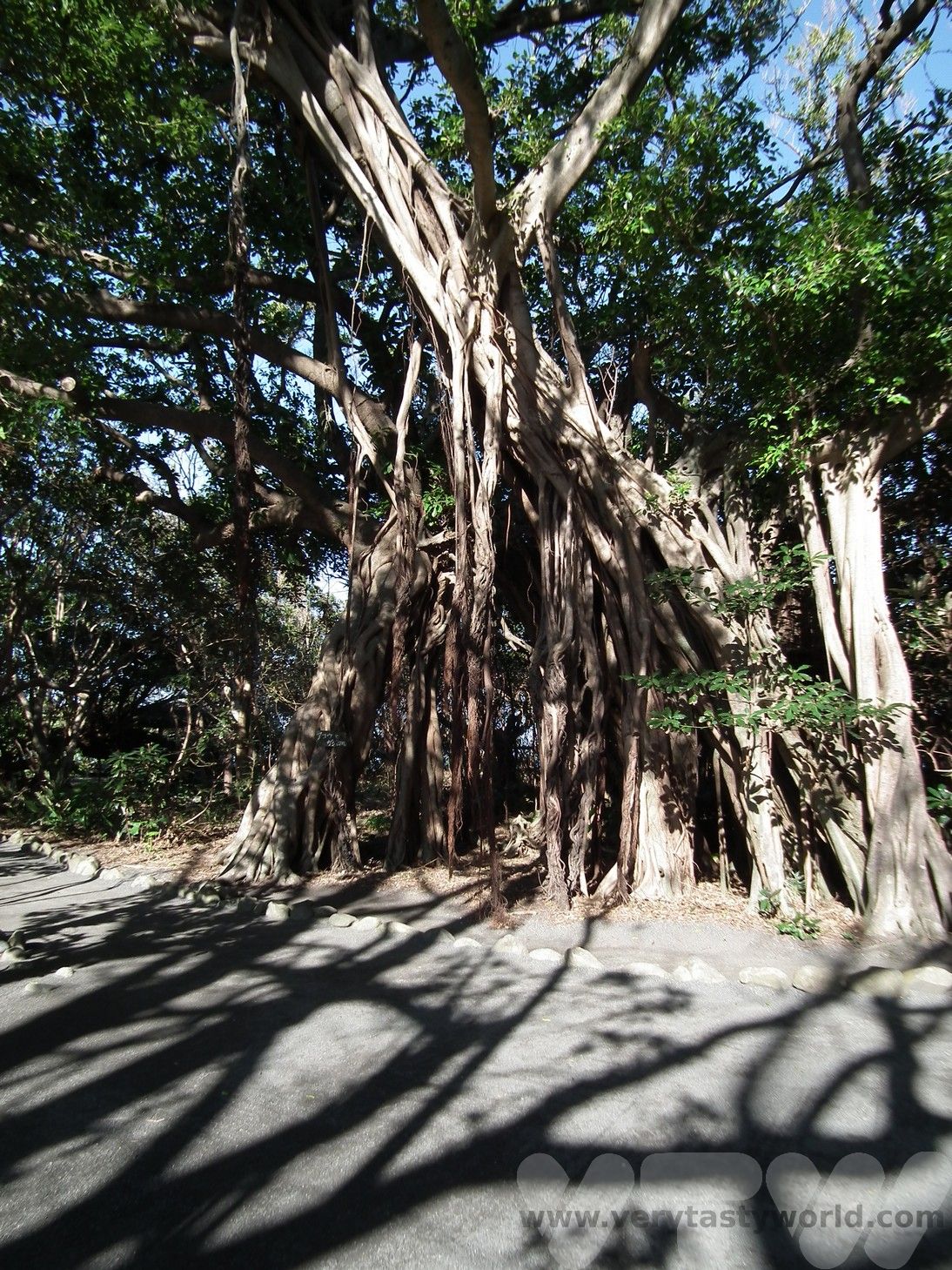
Isso Beach and Isso lighthouse on the peninsular.
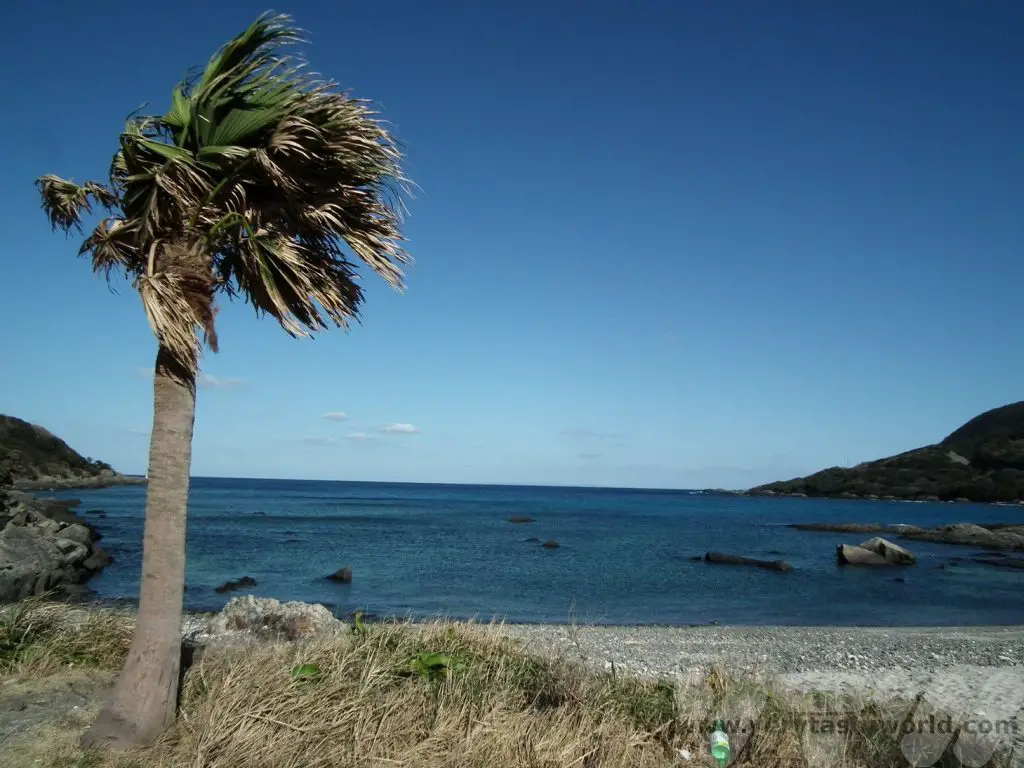
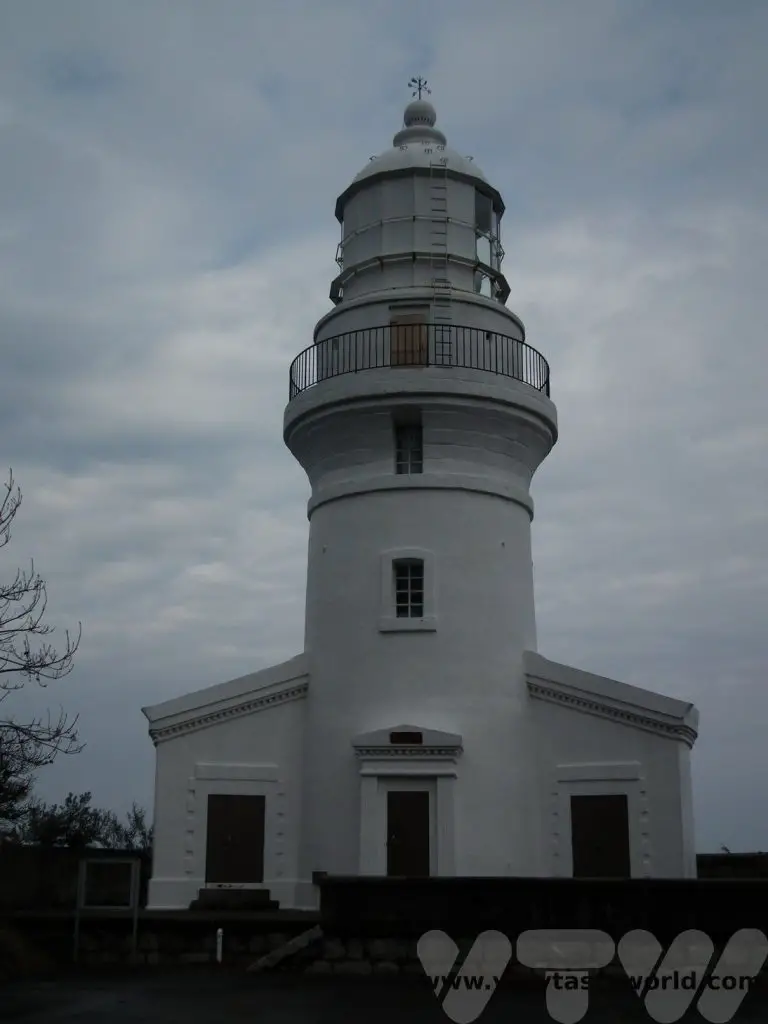
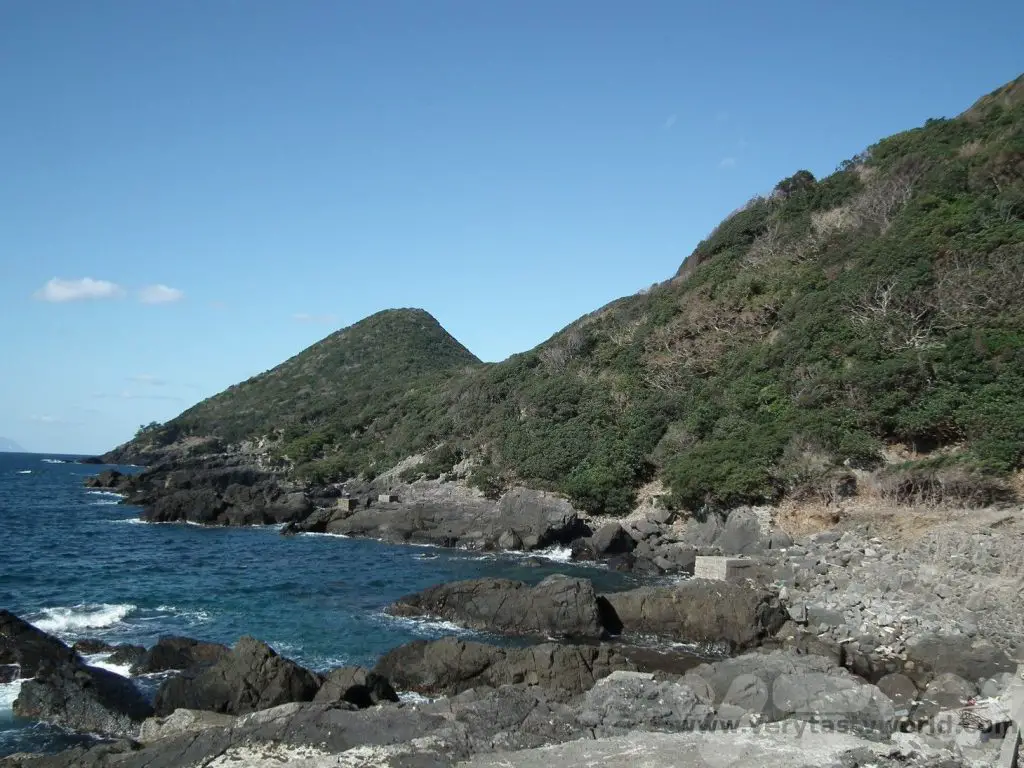
Swimming is only possible on the beach in the summer months when lifeguards are available. Also, turtles nest here during May and June, so care must be taken so as not to disturb them.
Then it’s a beautiful drive through the Seibu Rindo Forest. The road can be narrow and very winding as it wends its way through the mountain forest.
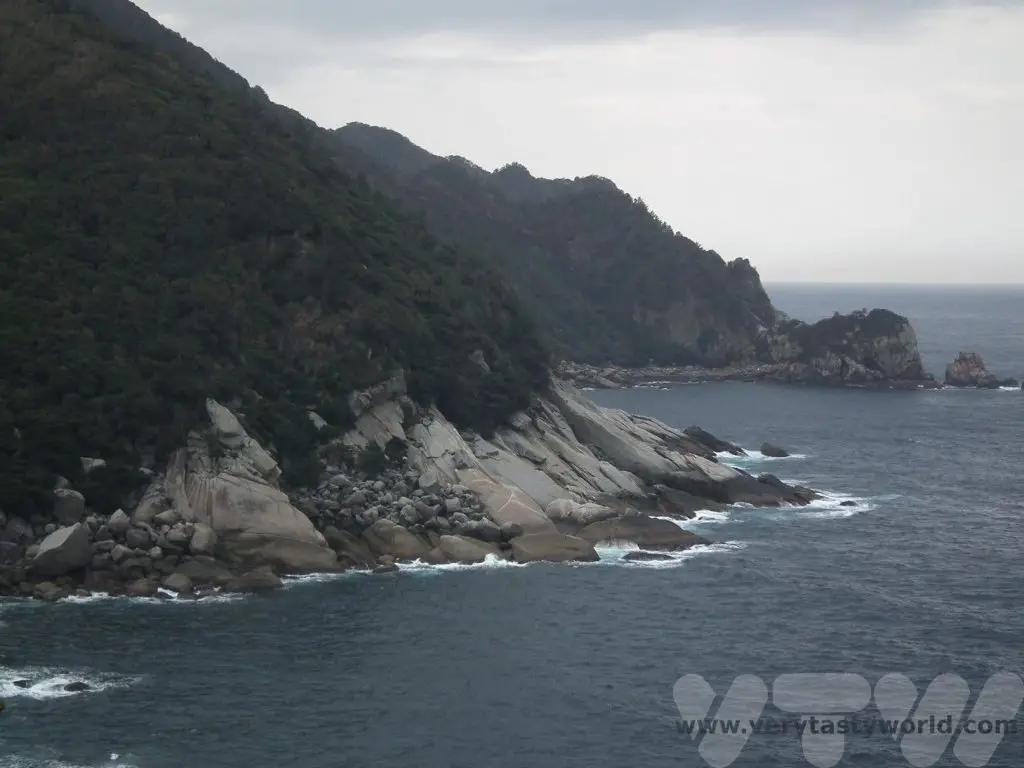
There’s an excellent chance of seeing Yakushika (native deer) and Yakuzaru (the Yakushima macaque) – and indeed we did.
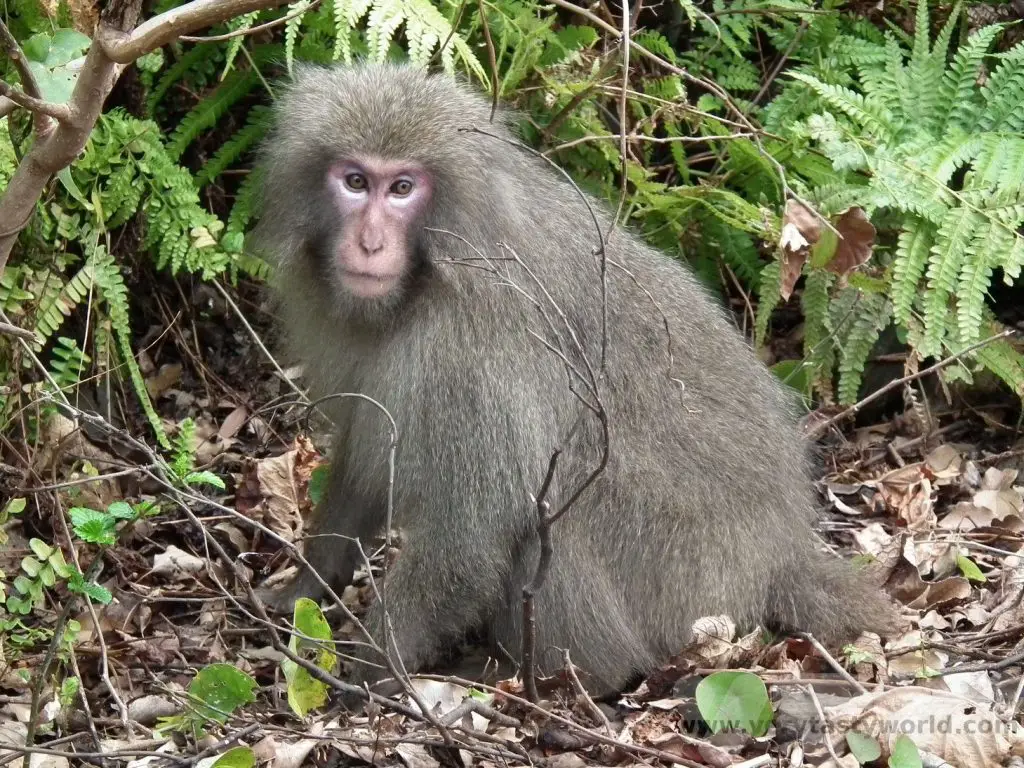
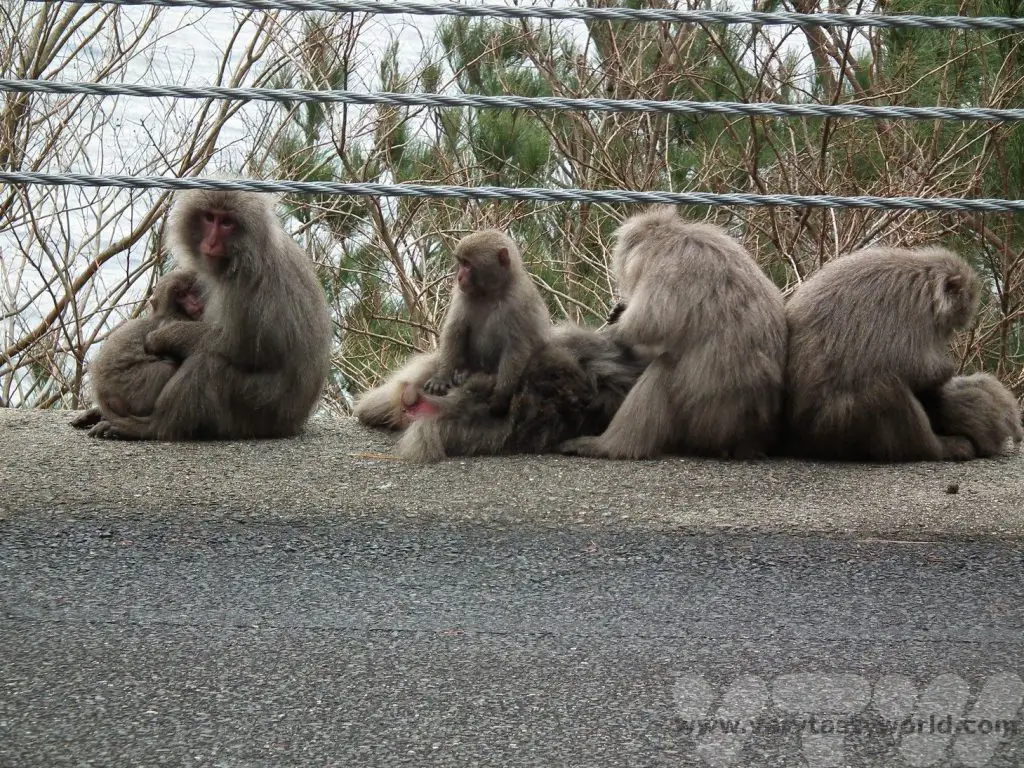
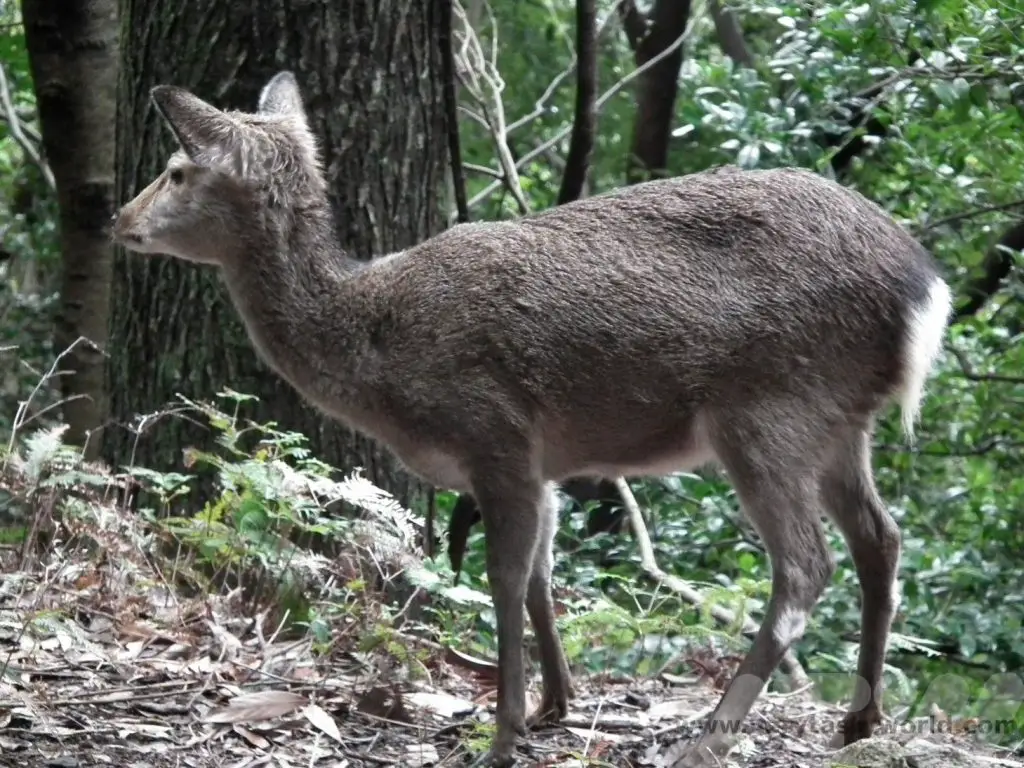
Yakushima has a number of waterfalls to explore. The falls are usually well signposted from the main road and there is usually a car park close by.
At 88m high, Ohko no Taki waterfall in the south west corner of Yakushima is one of Japan’s top 100 waterfalls. Sadly we didn’t have time to hike to the falls but even from a distance, it’s an impressive drop.
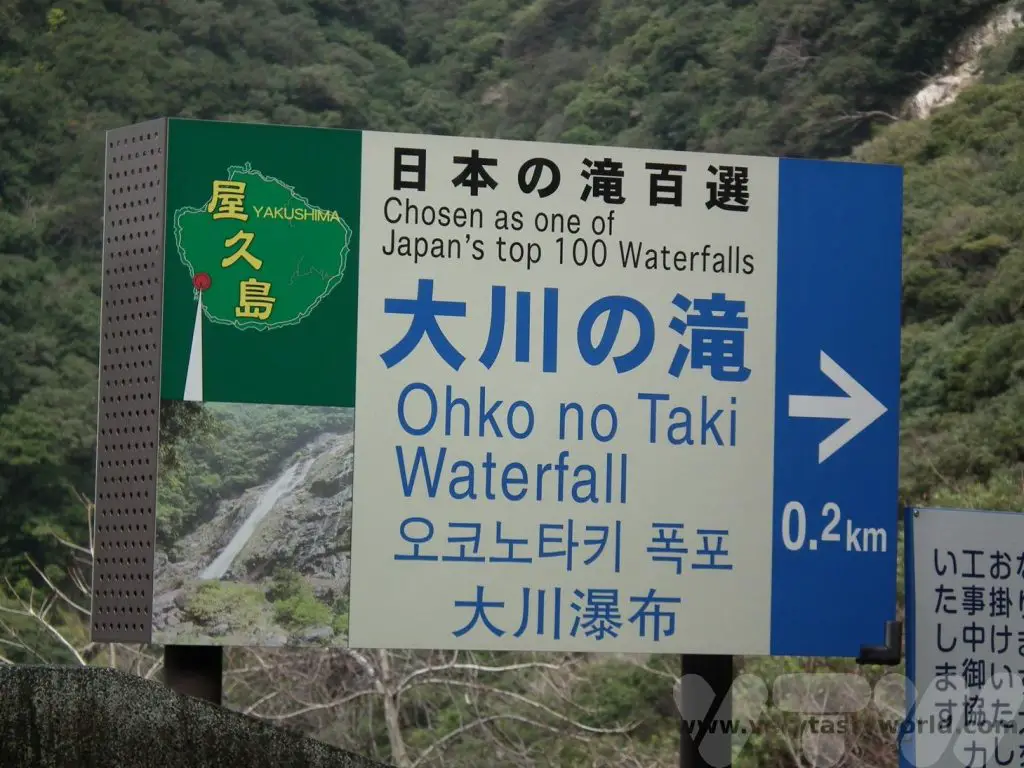
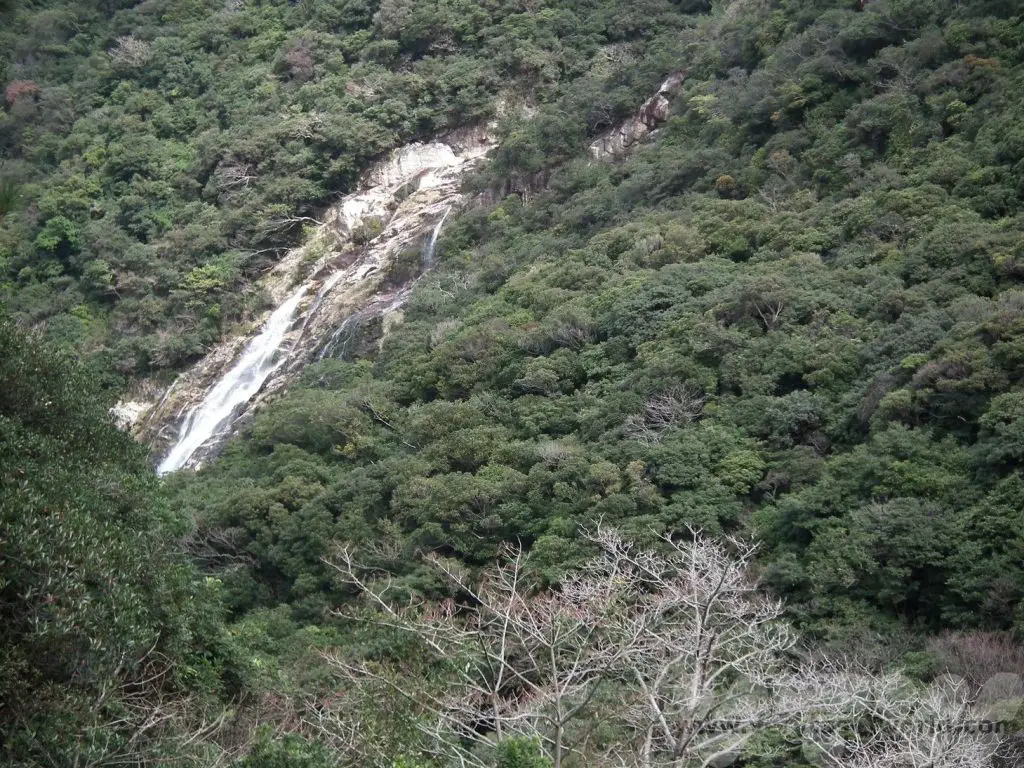
There are a number of outdoor onsen (hot springs) by the coast, which are worth a visit. Some of these are tidal, so are only accessible at low tide. There are a couple of neighbouring villages on the south cosast, Yudomari and Hirauchi, accessible by single track roads off the main circular route on Yakushima. It’s important to note that tattoos are something of a taboo in Japan as they are associated with gangsters, so is it worth covering any with sticking plaster. We enjoyed a warm footbath whilst looking out across the sea. (There are other onsen resorts at some hotels on the island if hot spring bathing is your thing.)
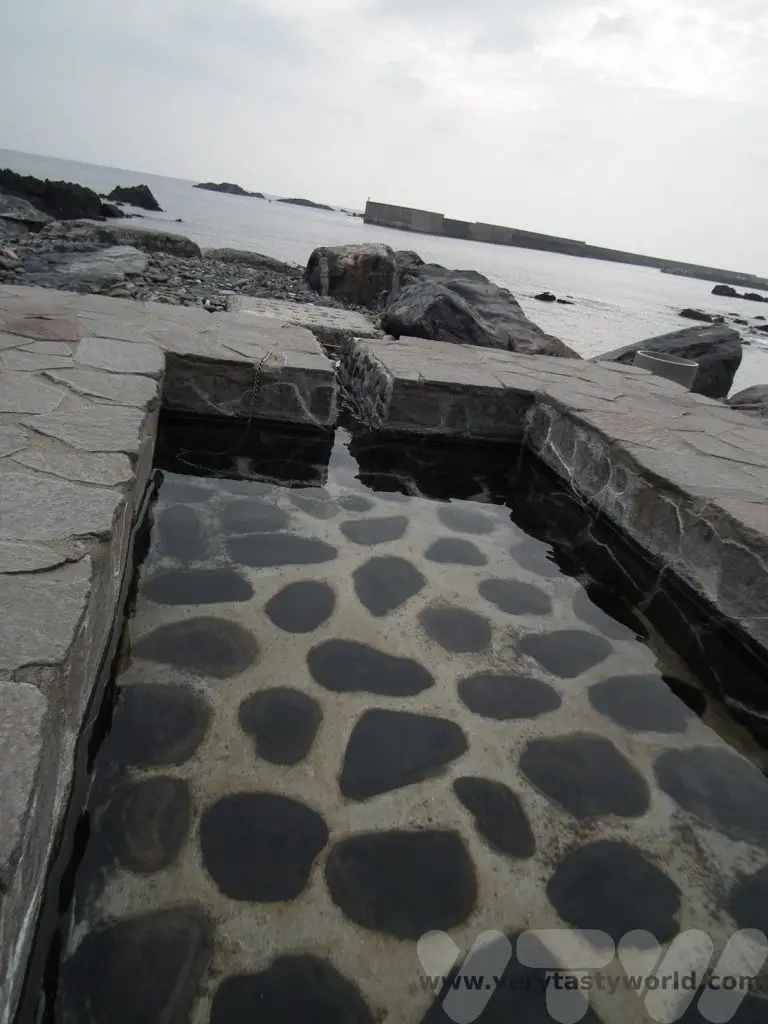
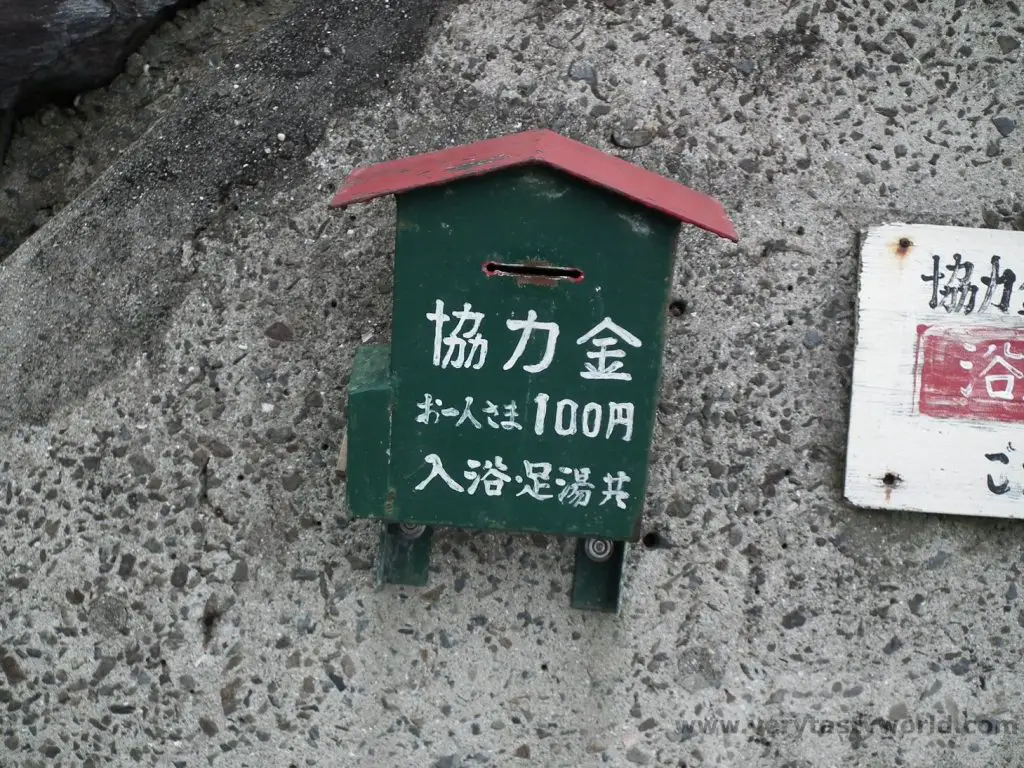
There’s an honesty box for payment (N.B. the price has increased to 200 yen since we visited).
Sempiro-no-taki is another impressive waterfall which falls across an extensive granite gorge.
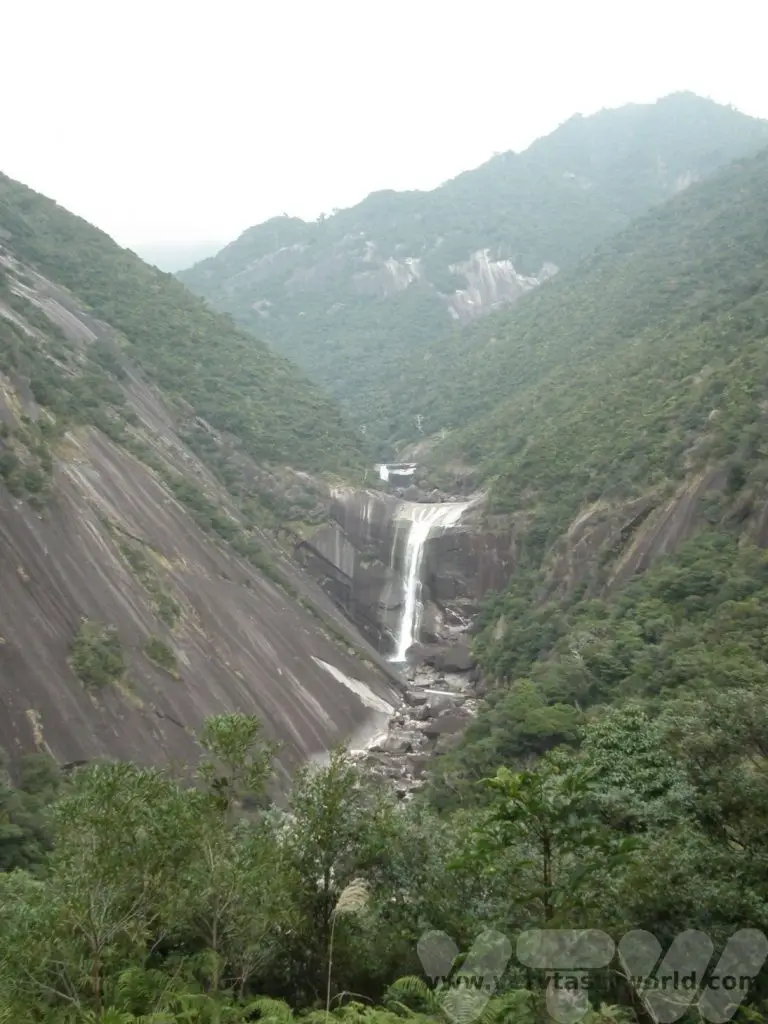
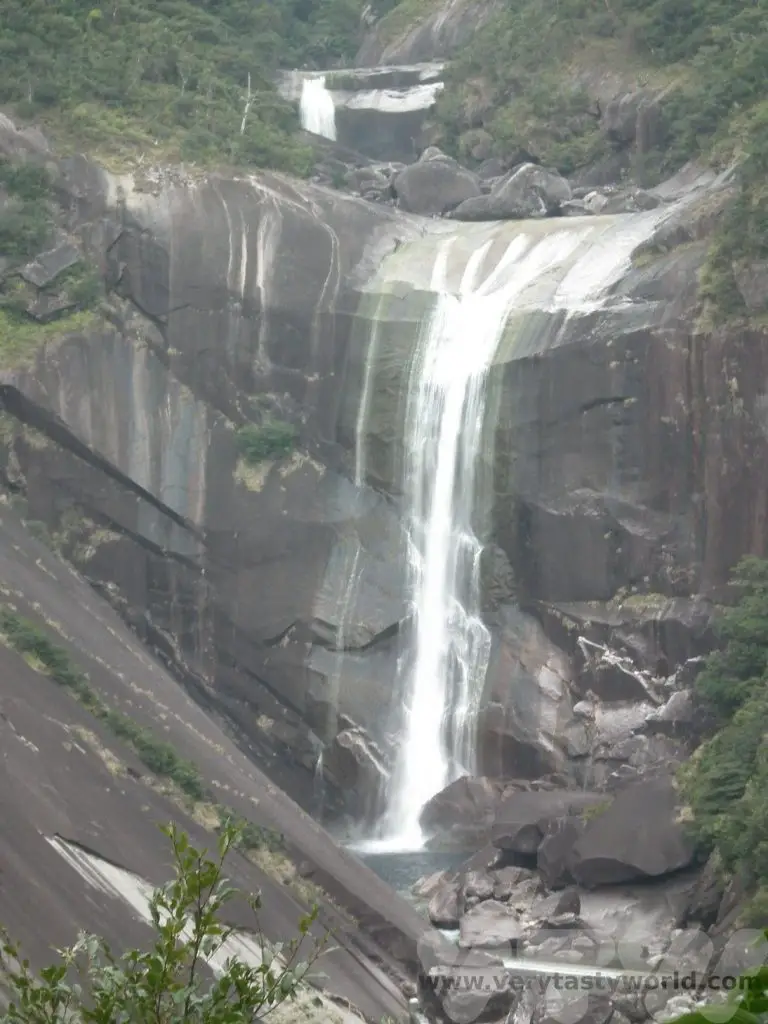
Toroki falls are just downriver from Sempiro and can be seen after walking a short distance from the road. You can see the vermillion bridge in the background.
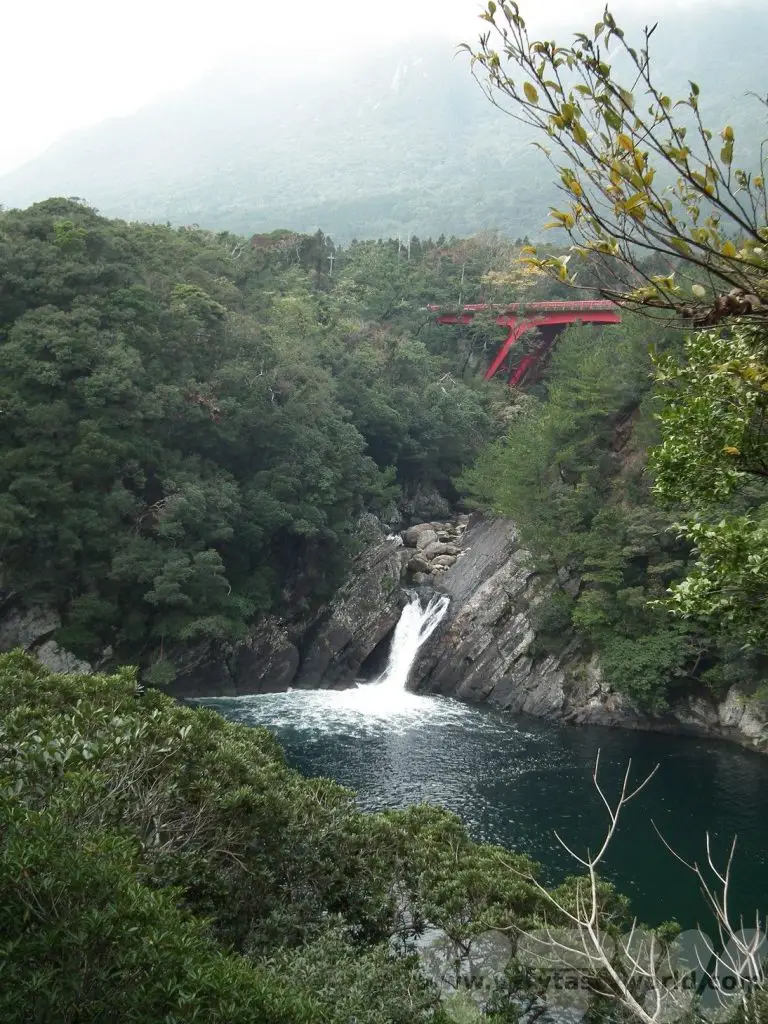
Then it was time to head north towards Anbo port. There was a convenient petrol station right by the turn off to the port’s car park so we filled up the car and experienced the best in Japanese service – a full tank of fuel, windscreen cleaned and, best of all, the attendants running out to the road to stop the traffic so that we could exit the petrol station. Then it was a hop onto the boat to return to Kagoshima.
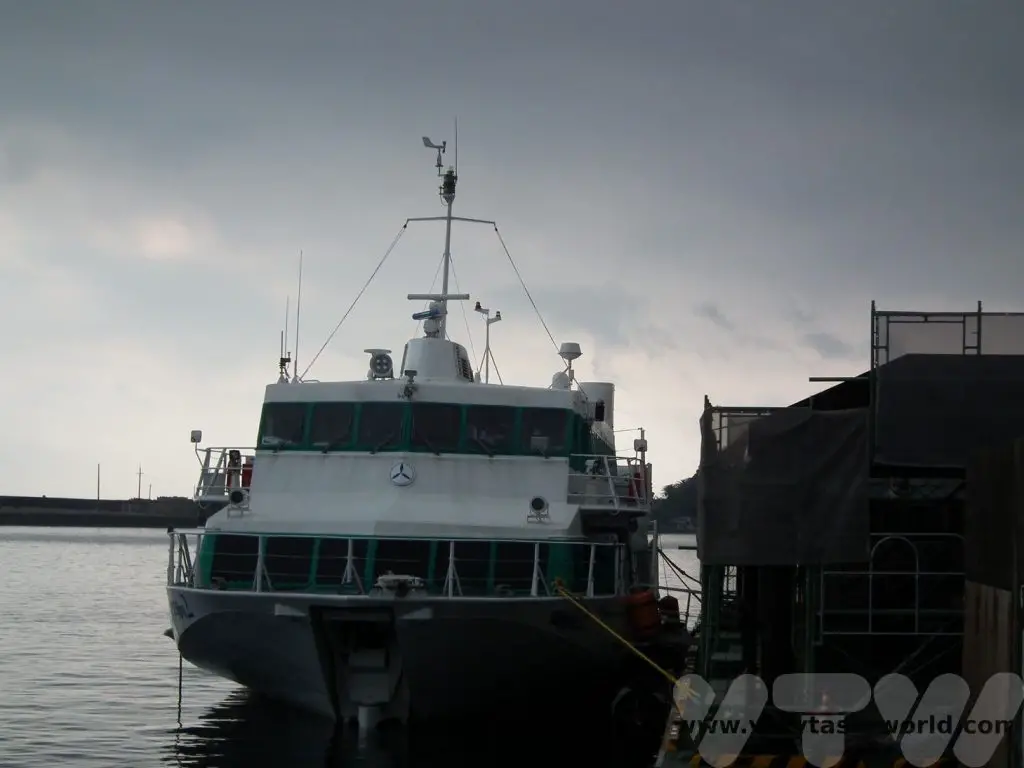
Yakushima is a destination that is off the beaten track but it is a beautiful island with plenty of walking, terrific food and delightful people. It’s a bit of a journey to get there but if you manage to visit you will not be disappointed.
Related Posts You May Enjoy

- Recipe: Simmered Shiitake Mushrooms

- How to Use Public Transport in Japan

- RECIPE Oyakodon Donburi

- Planning a Trip to Japan

- The Makanai: Cooking for the Maiko House

- Setsubun Food – Bean Throwing Day

- The Gassho Farmhouses of Rural Japan

- Recipe: Japanese Simmered Pork Belly – Buta no Kakuni

- RECIPE: How to Make Umeboshi

How Hot Is Wasabi?
A Guide to Fresh Wasabi
Did you know that a lot of the time the fiery, nose-wince-inducing, slightly-eye-watering wasabi that you eat with your sushi doesn’t actually contain much wasabi? The wasabi powders and pastes that you buy in the shops or which are used in many restaurants are usually a combination of mustard, horseradish, green food colouring and just a hint of wasabi, probably from the stem or leaves. Eating fresh wasabi is a completely different experience. And how hot is wasabi?
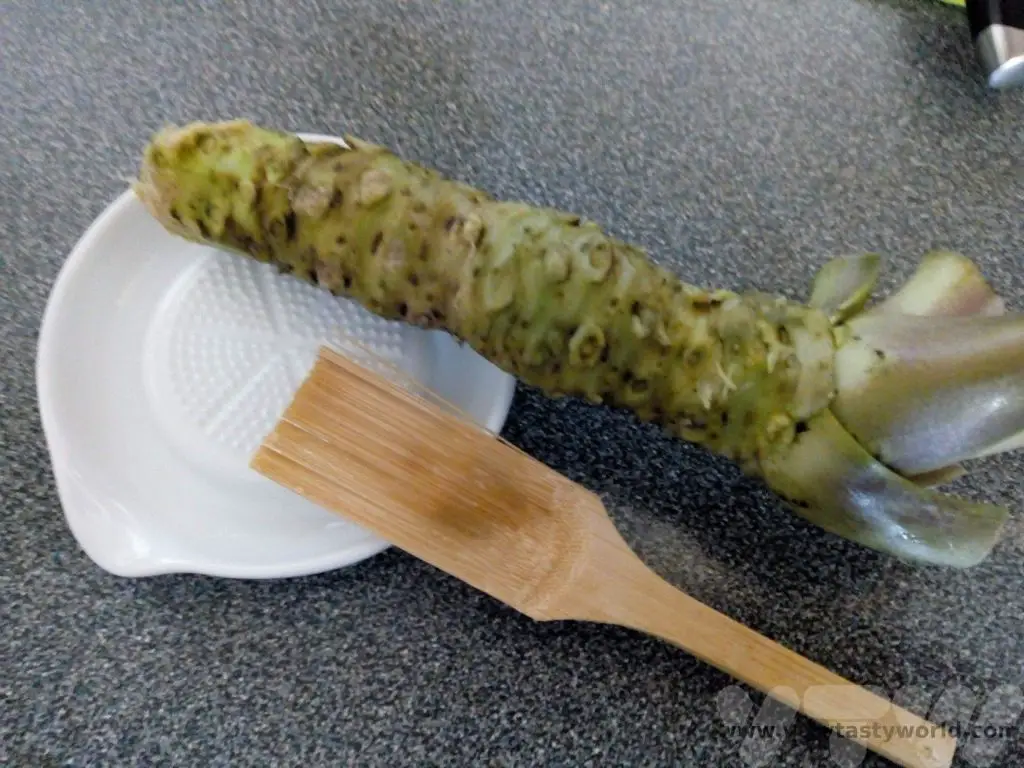
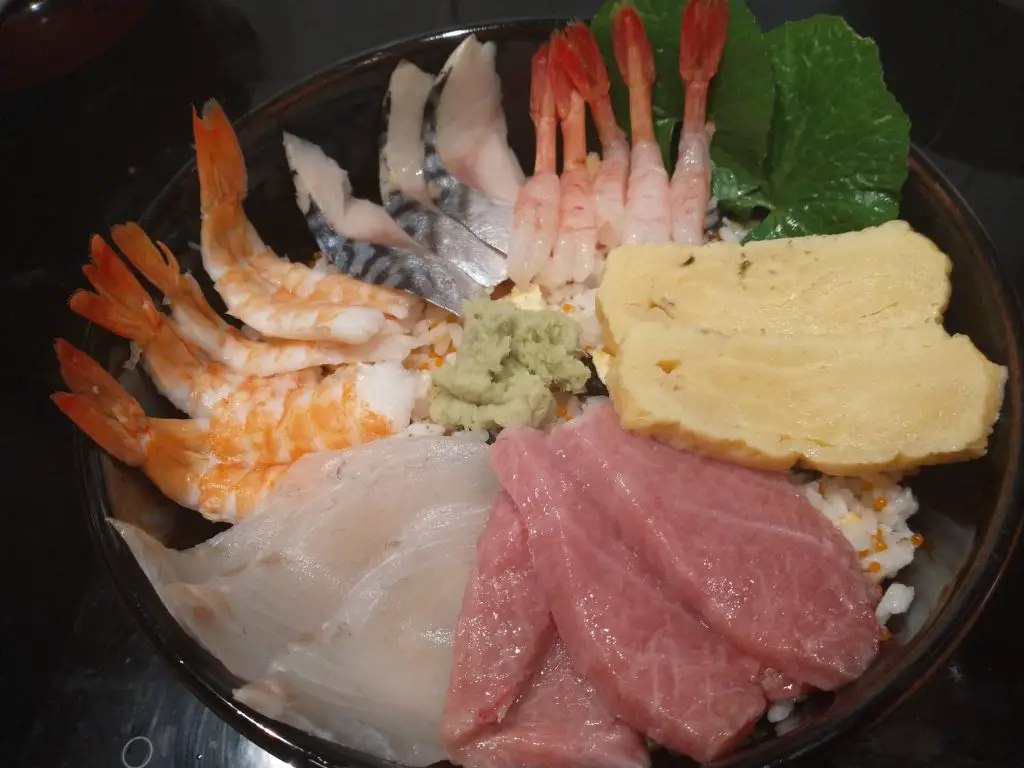
Growing Fresh Wasabi
Wasabi as a plant is similar to horseradish in that both belong to the Brassica family (which is quite a broad family as it also contains vegetables such as cabbage, broccoli and kale) and both have a fiery pungency but they are different species and offer very different flavours.
Horseradish is really easy to grow in the UK. It’s like a weed and grows rapidly in the wild. We regularly see horseradish growing by the roadside or in parks. (We would like to forage for it but although we could pick the leaves it’s against the law to dig up roots on land you don’t own.) It’s the long white root that provides the flavour. Wasabia Japonica’s flavour comes from its rhizome, which is kind of like a swollen stem.
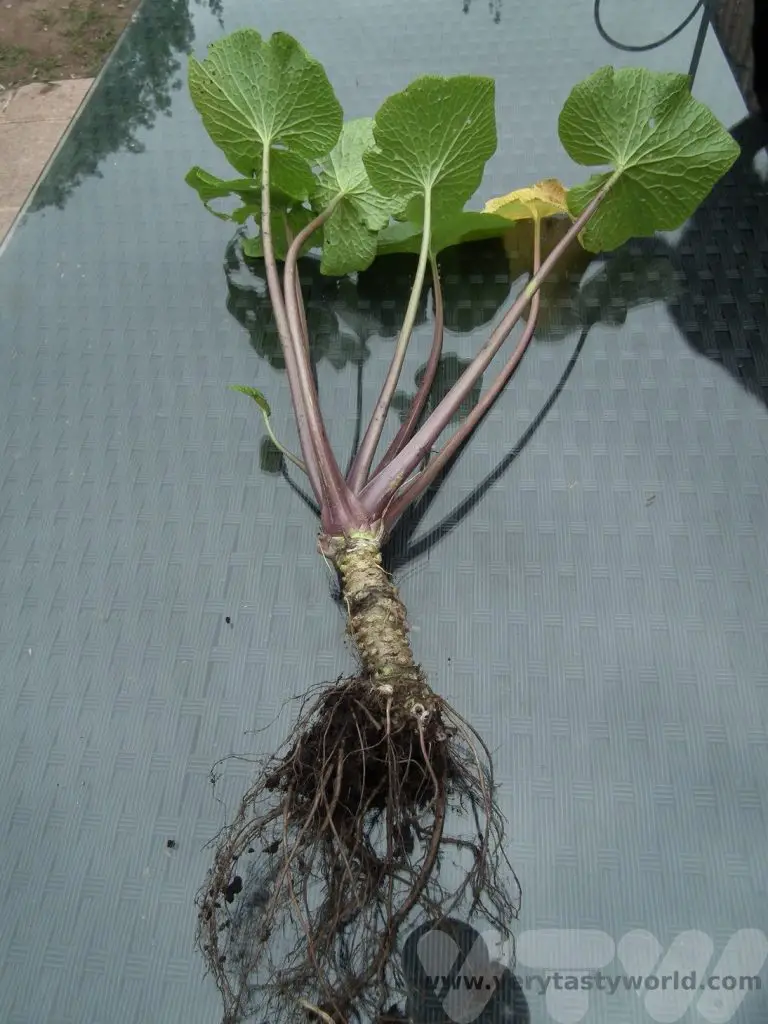
Traditionally wasabi grows next to crystal clear gravelly mountain streams in rural Japan (a delightfully romantic image) but it is actually possible to grow wasabi in the UK (although our garden is significantly less romantic than a beautiful mountain region). Water grown wasabi is known as sawa- or mizu-wasabi, soil grown is known as hatake-wasabi.
Our soil grown wasabi needs a little love. It likes relatively cool conditions and much prefers the shade to the sunshine. We once had to move our wasabi into a sunny spot temporarily and it wilted like the Wicked Witch of the West. (It recovered 24 hours later when it was back in the shade.) It also needs to be well watered, although it doesn’t like to sit in water. A cool, rainy British summer is ideal. We grow it in pots close to the north facing wall of our house. It takes a while for the rhizome to grow – you need to be patient for a couple of years – but the result is worth it. The cat was very impressed with our attempts.
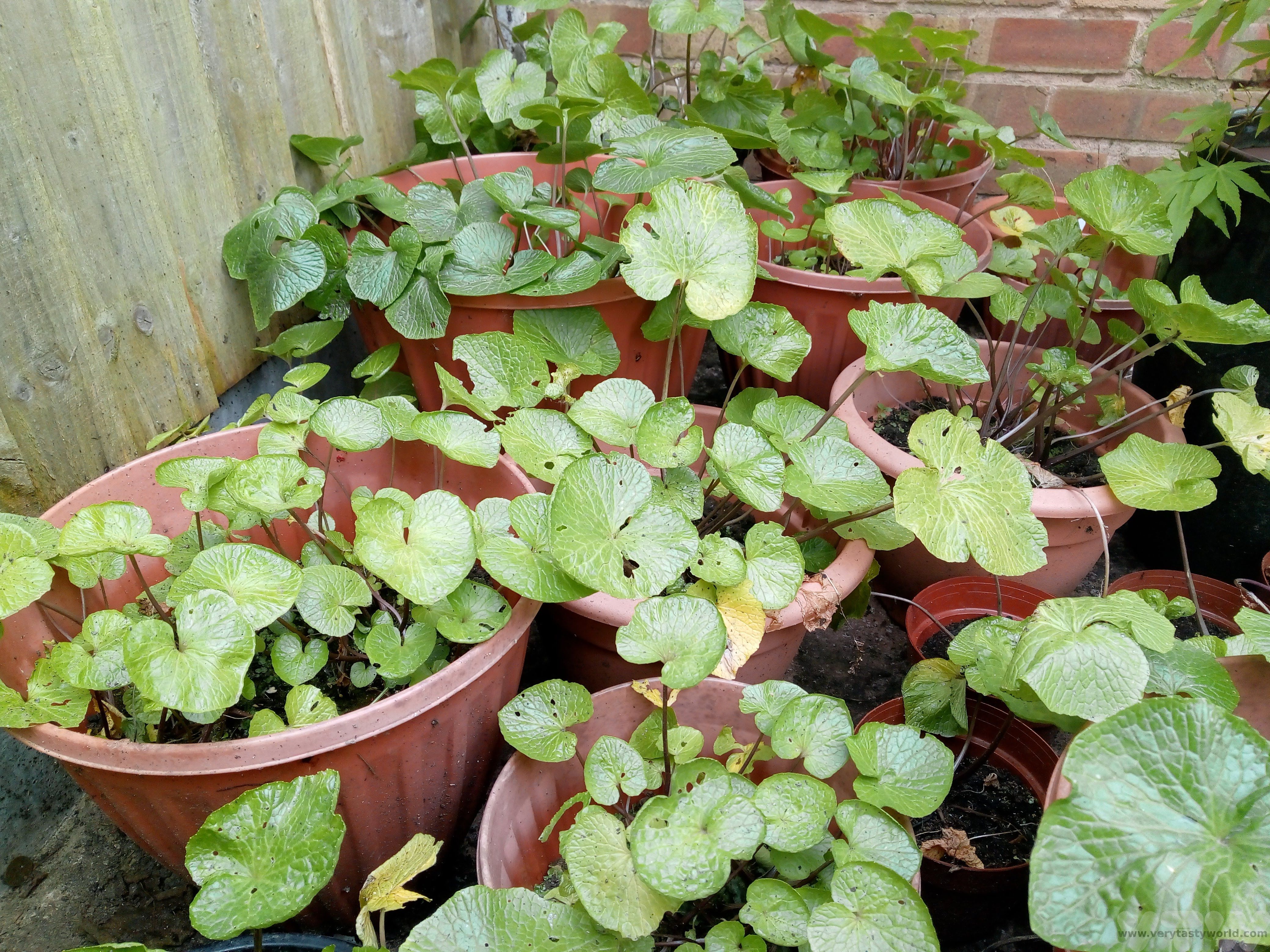

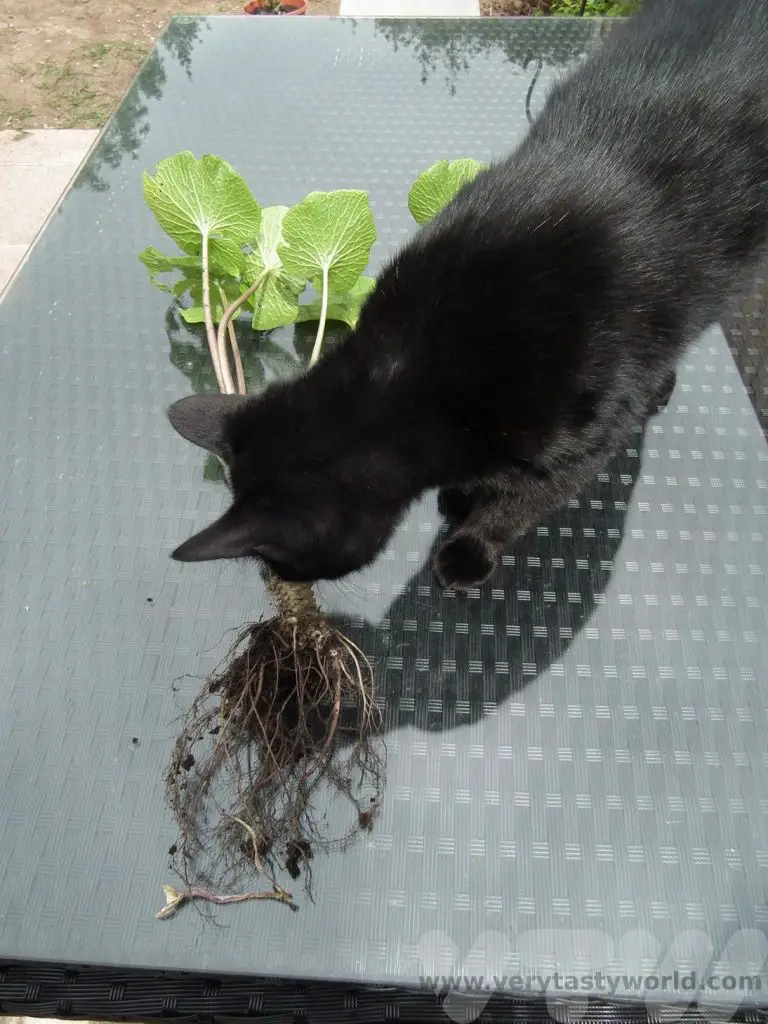
Eating Fresh Wasabi
The first time we ate fresh wasabi, it was a revelation. It did have that amazing familiar pungency but it also has a sweetness that you don’t expect. One of the advantages of growing wasabi is that the other parts of the plant are all edible: the lovely heart shaped leaves can be used as a garnish (and eaten), the stems chopped up like herbs and even the delicate flowers, which are especially good in a tempura. The other parts are much more mild and, while they impart flavour, don’t have the pungency of the rhizome.
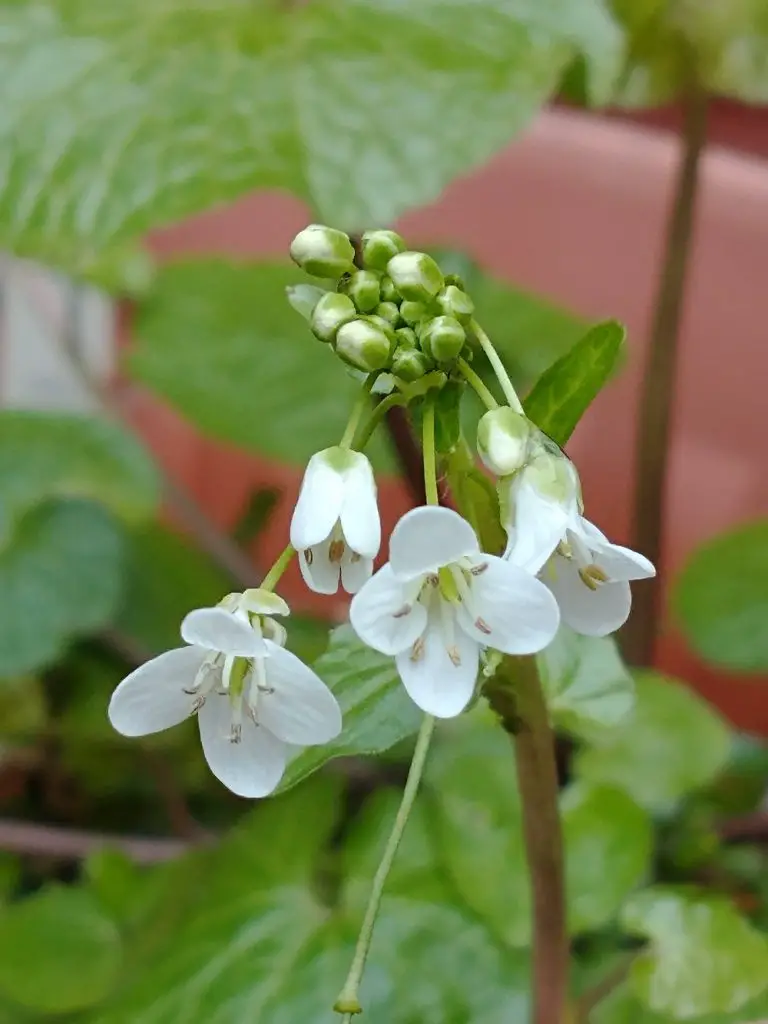
How To Prepare Fresh Wasabi
Wasabi rhizomes can grow up to 100g in size, although some can be bigger. You would have to have a big sushi party to get through that amount but it is possible to store it.
The pungency of the wasabi fades when it is exposed to air, so it is best to grate it just before serving. There are various graters you can buy. Traditionally, a shark skin grater is used, although it is usually made from a type of ray. Purists prefer this, claiming that this is the one that ensures that the wasabi has the best creamy consistency and brings out the best flavour. But you can also get other types, including a metallic grater or, our preference, a ceramic grater.
Using a vegetable peeler, we just scrape off a small amount of the rhizome’s outer layer, up to the length we wish to grate, then grate the wasabi in a circular motion.
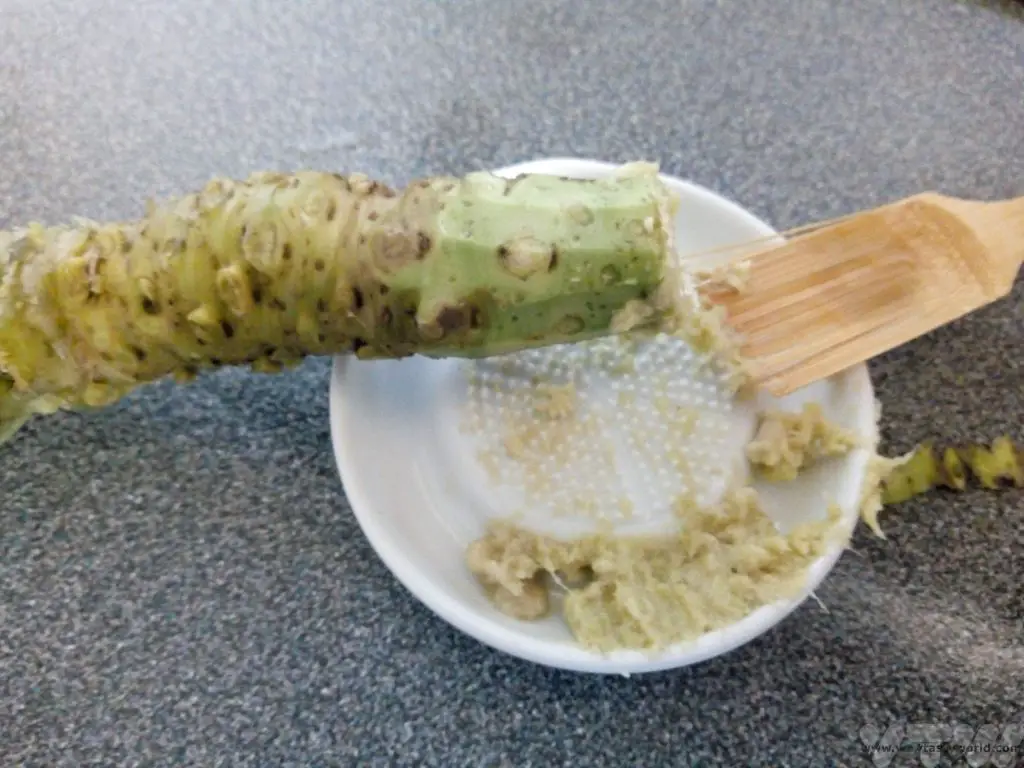
One useful little implement is a bamboo brush which you can use to gather up the grated wasabi. The stiff bristles are much more efficient at negotiating the grater’s bumps than our fingers. Gather the grated wasabi up into a nice little ball and serve. It’s worth grating slightly less than you think you will need – you can always grate more.
Storing Wasabi
A fresh rhizome will store well in the fridge for a couple of weeks. We tend to keep it wrapped in damp kitchen paper and grate as much as we need. If we don’t get through an entire rhizome in that time, it tends to go a bit black, so the best thing to do is freeze it. The whole rhizome doesn’t freeze well but grated wasabi freezes brilliantly.
We tend to grate into portions and then store inside little plastic tubs – the sort you get sauces/dips in with a takeaway meal. Then we seal – in order to minimise exposure to the air and pop into the freezer. Take them out when you need them. The portions thaw in no time at all. Alternatively, you can wrap the grated wasabi into parcels of clingfilm.
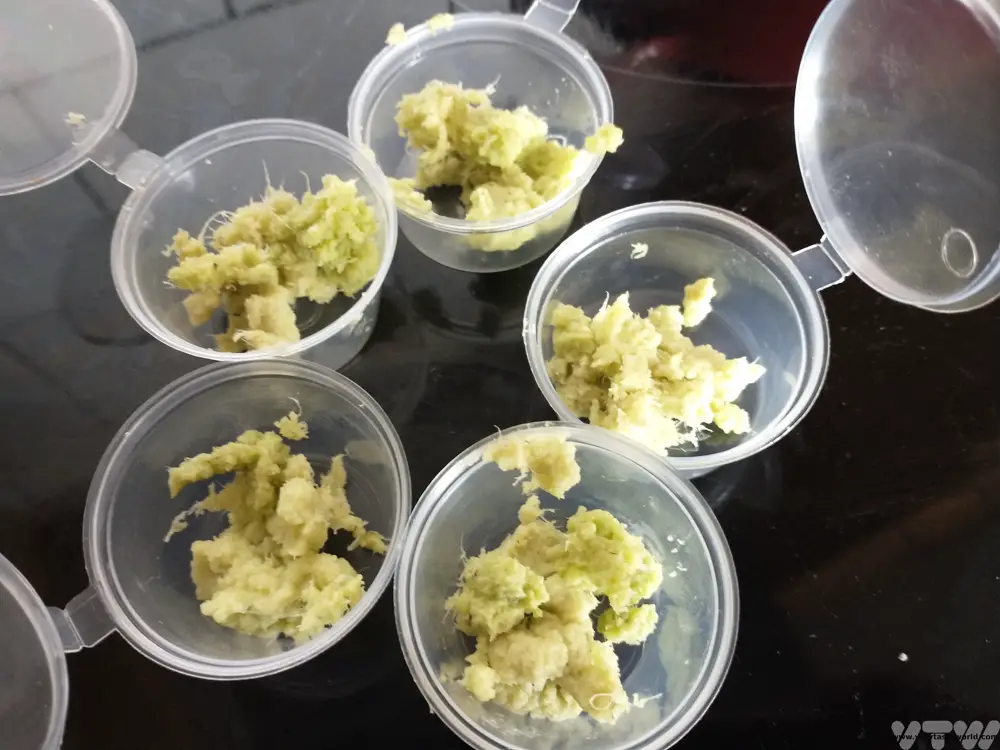
So How Hot Is Wasabi?
Unlike chillies, which have the Scoville scale to measure their heat level, wasabi heat doesn’t really have a similar measurement system. The Scoville scale is based on dilution of the chemical capsaicin – how much water it takes before you can no longer detect the heat of the chilli. But wasabi is a root not a pepper and instead of releasing capsaicin, it contains allyl isothiocyanate, a compound which is also found in mustard, radish and horseradish. Its pungency is a result of its volatility – the gas it releases feels as though it goes straight up your nose rather than remaining on your tongue like the capsaicin of chilli.
People’s reactions to wasabi will differ quite widely. Some people can scoff the hottest of chillies but can’t take the heat of wasabi. But it is undoubtedly hot! Fresh wasabi has a milder pungency than the horseradish/mustard/green paste.
How To Eat Wasabi With Sushi
Wasabi and sushi go together like fish & chips, salt & pepper and gin & tonic. Wasabi was originally used with sushi in the Edo period in Japan and was thought not only to help mask any smells from the fish it was also considered to have properties that help prevent the growth of bacteria.
The best way to eat wasabi with sushi is to mix it with a small amount of soy sauce in a little dish. Never dip the rice part into the dish – the rice will soak up the soy sauce and all you’ll get is a mouthful of nose-wincing salt, losing the delicate flavour of the fish. Instead, turn the sushi upside down and dip the fish side into the sauce. (It’s absolutely fine to eat sushi with your fingers.) If you are having an omakase meal, where the chef prepares the sushi for you, it is likely that they will add exactly the correct amount of sauce and wasabi, so you won’t need to worry.
We love making chirashizushi – a bowl of seasoned rice with a layer of seafood atop – which we serve with our own fresh wasabi and garnished with the lovely heart-shaped wasabi leaves.
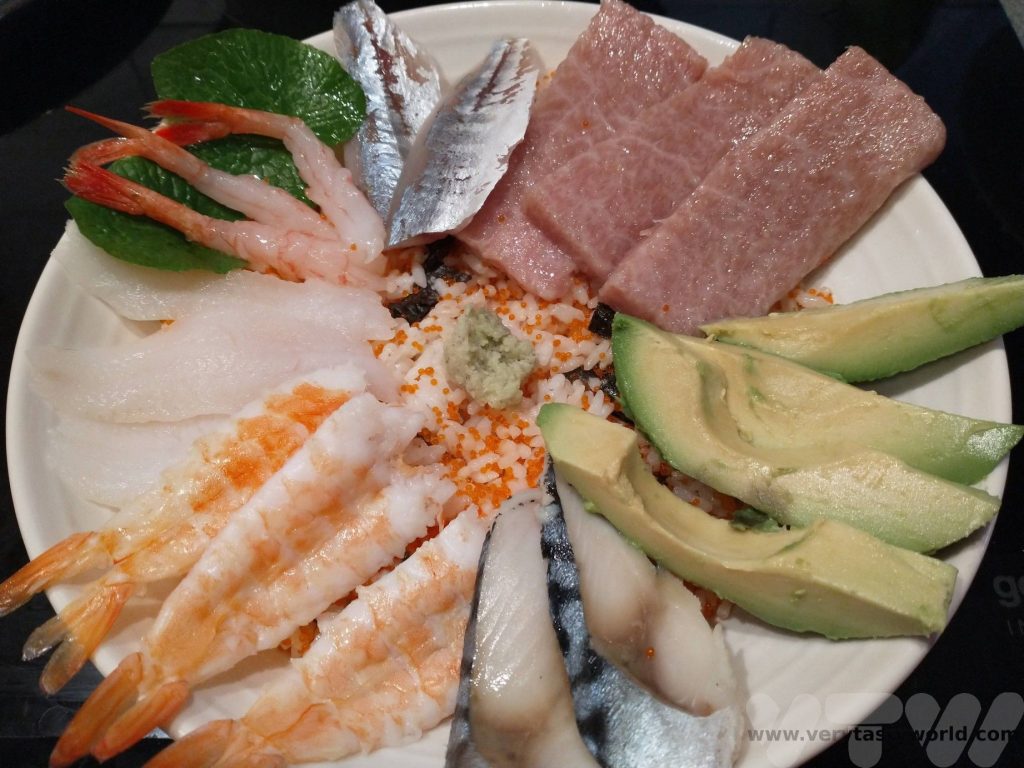
Related Posts You May Enjoy

- Recipe: Simmered Shiitake Mushrooms

- How to Use Public Transport in Japan

- RECIPE Oyakodon Donburi

- Planning a Trip to Japan

- The Makanai: Cooking for the Maiko House

- Setsubun Food – Bean Throwing Day

- The Gassho Farmhouses of Rural Japan

- Recipe: Japanese Simmered Pork Belly – Buta no Kakuni

- RECIPE: How to Make Umeboshi


- RECIPE Oyakodon Donburi
- Zero Waste Recipes Before Your Holiday
- RECIPE: Vegetable Biryani Tamil Nadu Style
- RECIPE: Vegan Wild Garlic Pesto
- Recipe: Venetian Pasta Sauce
- RECIPE: Biryani Raita Recipe
- RECIPE: How to Make Costa Rica’s Gallo Pinto
- Recipe: Japanese Simmered Pork Belly – Buta no Kakuni
- RECIPE: How to Make Umeboshi
Happy, Happy Holi in Nepal
Originating from the Indian subcontinent and celebrating the arrival of spring, Holi is known as the Festival of Colour, Festival of Spring or the Festival of Love. And it really is all three of those things. Like many festivals across the world its date is based on a lunar calendar and it falls on the last full moon of winter. It is celebrated by Hindus, Sikhs and Jains and has become an increasingly popular event all over the world. In the countries that celebrate, Holi is a national holiday when everyone comes together to celebrate spring and love. We were lucky to spend Holi in Nepal a few years ago.
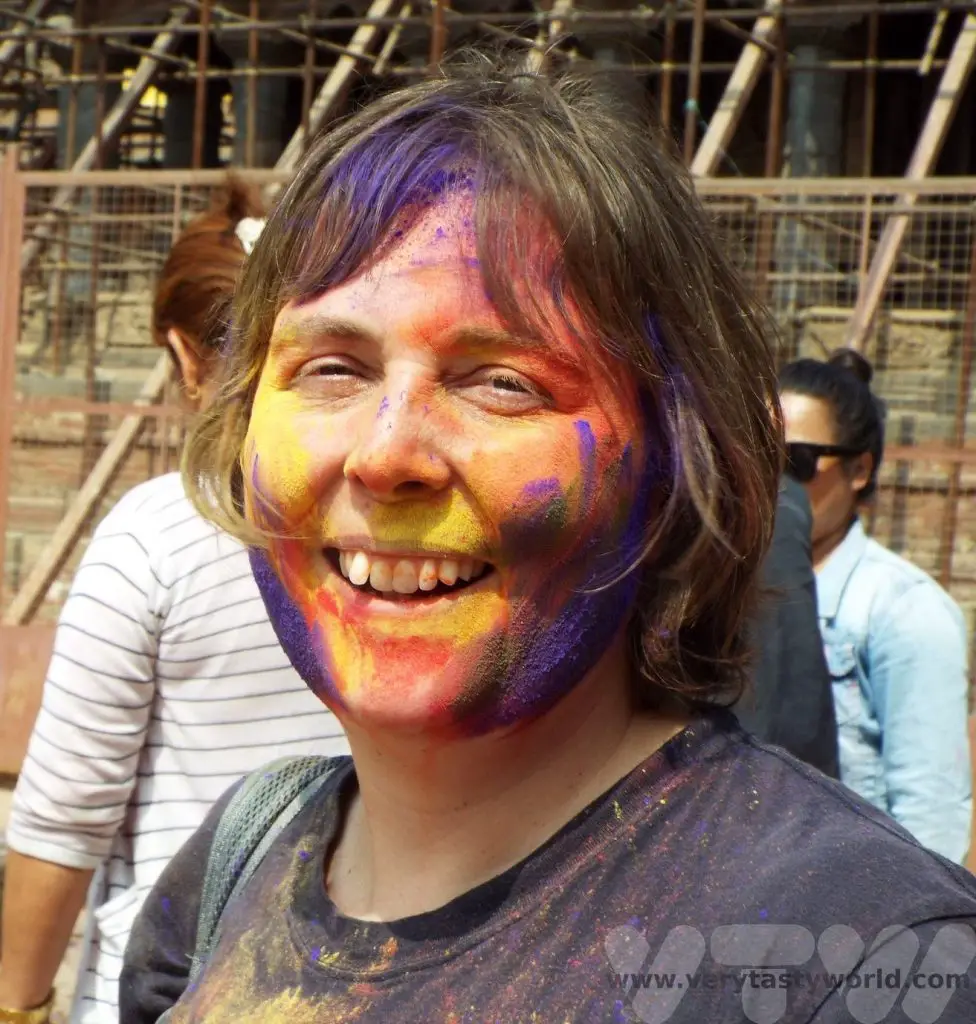
There are a number of rituals associated with the festival and these can vary between different regions. The celebrations start in the evening before Holi with a Holika Dahan where communities gather and light a fire, burning a symbolic effigy of a demoness who attempted to kill her nephew, Prahlad, a worshipper of the God Vishnu. This represents the triumph of good over evil. Traditionally participants contribute wood for the fire and dance and sing together. It’s important to remember that Holi is also about love and repairing broken relationships.
The following morning is Rangwali Holi (Dhuleti), the festival of colour. And it doesn’t matter who you are or where you are from, you are welcome to join in the fun. Everyone takes part and those serious about ‘Playing Holi’ will be armed with all sorts of devices to make the day as colourful as possible – there will be powdered paints, water pistols containing ordinary or coloured water, water balloons (you have to watch out for those as they can be quite a surprise). People often wear white clothes in order to show off all the colours. You can buy paint powder from street vendors everywhere.
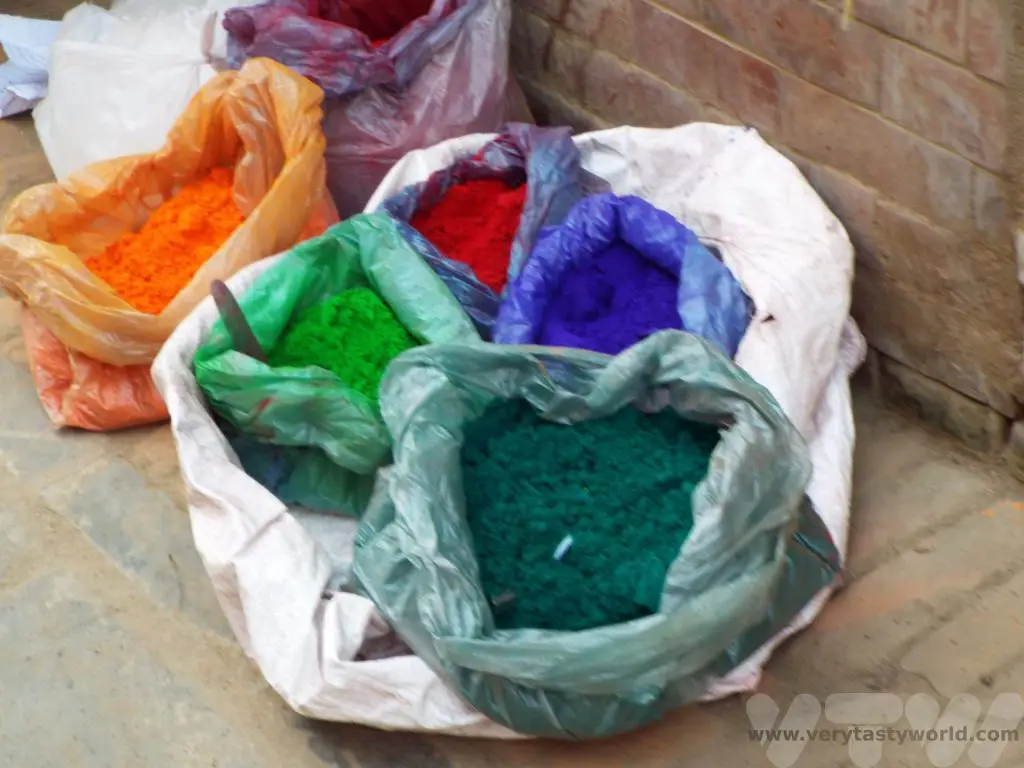
Holi In Nepal
In Nepal Holi celebrations begin eight days before the full moon, starting off with the raising of a chir – a long bamboo pole embellished with brightly coloured strips of cloth in three circular layers. This chir will be burned on the night before the full moon, again symbolising the burning of Holika and the victory of good over evil.
We were in Nepal during Holi a few years ago and it was one of the most fun days we have ever had when travelling. After a fantastic journey travelling through Bhutan and Southern Nepal, including a stay at the Neydo monastery and a couple of days in the Chitwan National Park where we undertook a walking safari and learned to cook with the local Tharu people. We had travelled back to Kathmandu to explore the capital as well as nearby Bhaktapur and Patan, all cities with an incredibly rich cultural heritage. (We will post about these in detail another time.)
Bhaktapur, also known as Khwopa, is a UNESCO world heritage site, a city located some 13km from Kathmandu. It has some of the most remarkable architecture, with squares that contain beautiful temples and statues.
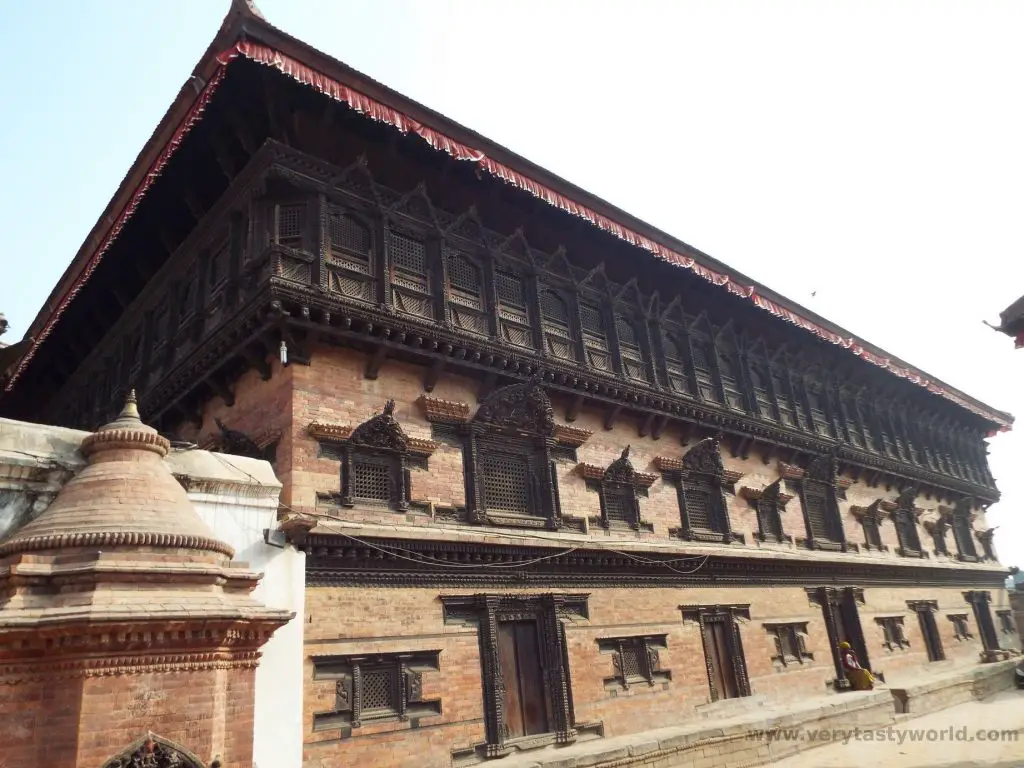
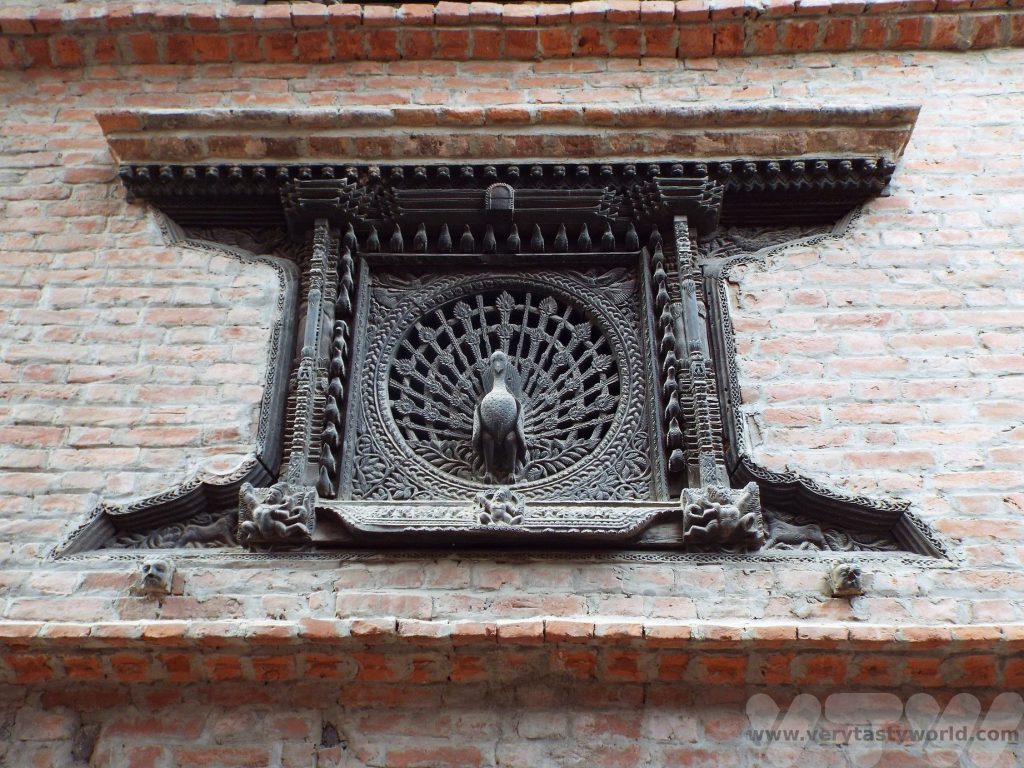
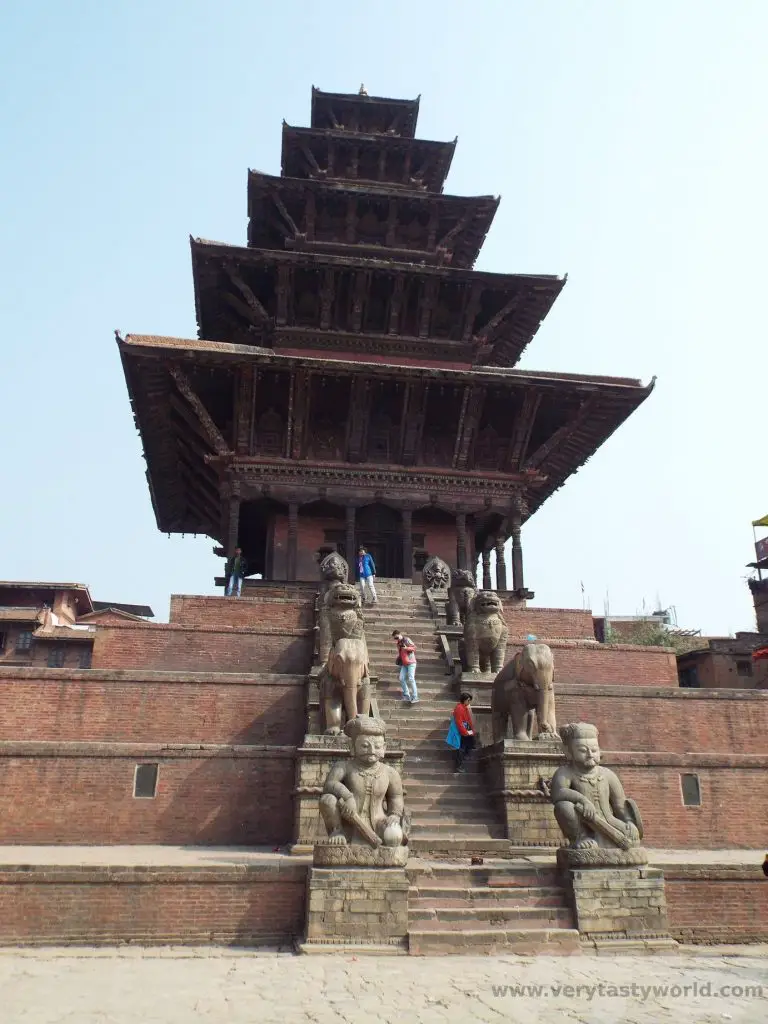
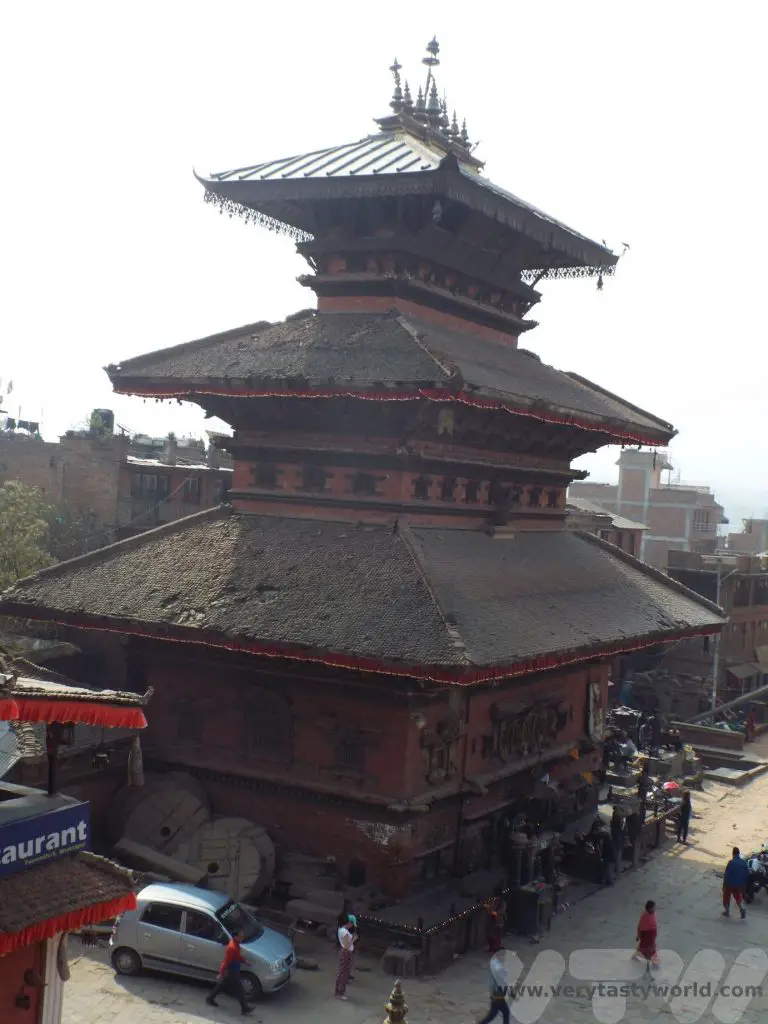
Patan is another UNESCO site. Around 5km from Kathmandu, it is so close to the capital that even though it is Nepal’s third largest city, it almost feels like a suburb of Kathmandu these days. Along with the capital and Bhaktapur it is one of Nepal’s three royal cities. It is also known as Lalitpur – City of Beauty – a title that is hugely apt.
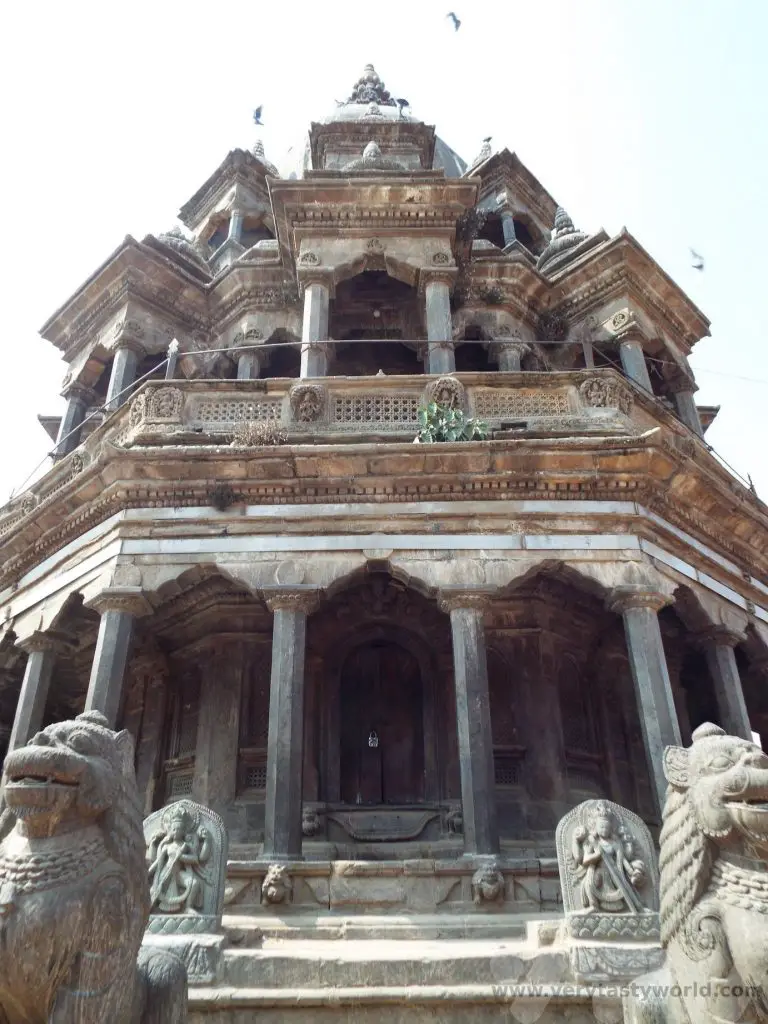
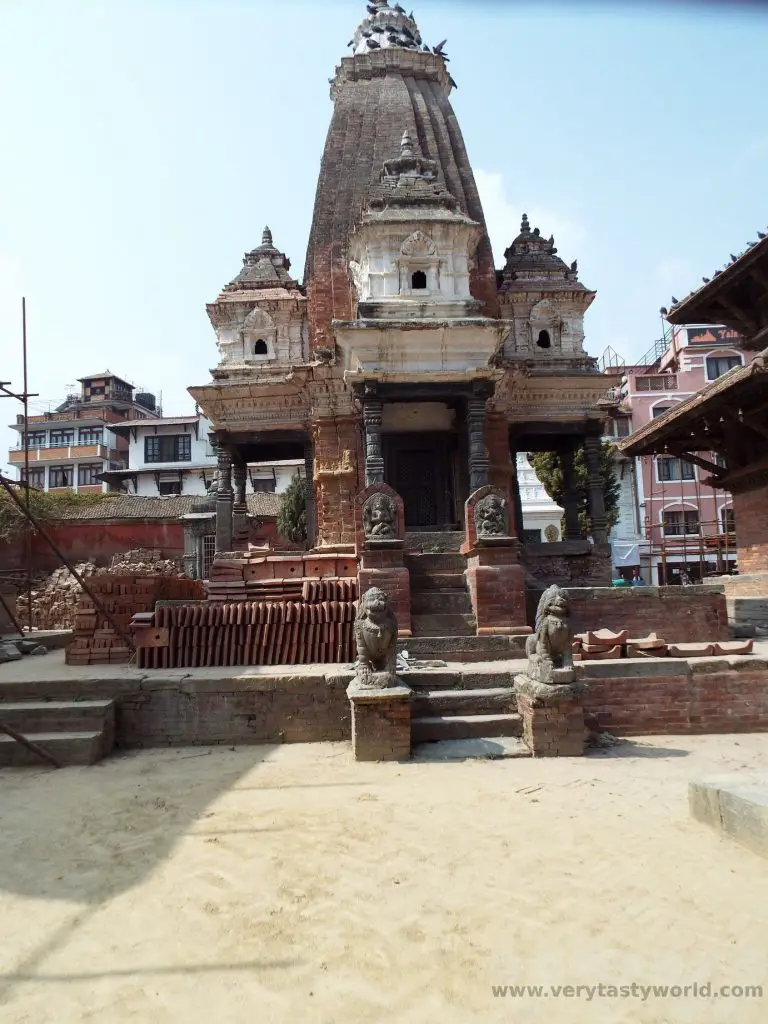
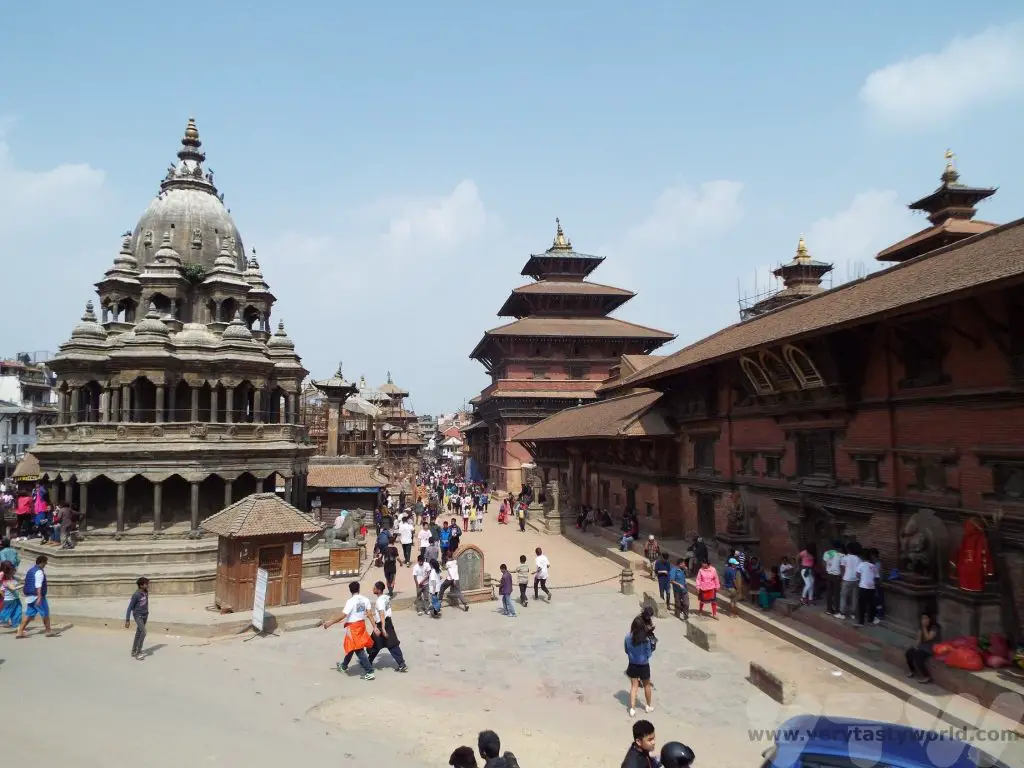
Sadly, both cities and their remarkable historic buildings were badly damaged during an earthquake in 2015 and repairs have been ongoing for some years.
Happy, Happy Holi
Holi began tentatively for us. We were doing a walking tour in the early morning in Bhaktapur when a smiling young man approached us as we were strolling down a side street, smeared a little red powder paint on our cheeks, and declared “Happy Holi!”. We wished him the same.
As soon as we had paint on our faces we quickly discovered that we were fair game. People would come up to us and anoint us with paint powder. Children bearing water pistols would quietly approach us then squirt us before running away, shouting joyously as we gave chase, their families looking on smiling and laughing. And we loved every moment.
Moving on to Patan, by mid-afternoon the town squares were filled with crowds as music played loudly and colours filled the air.
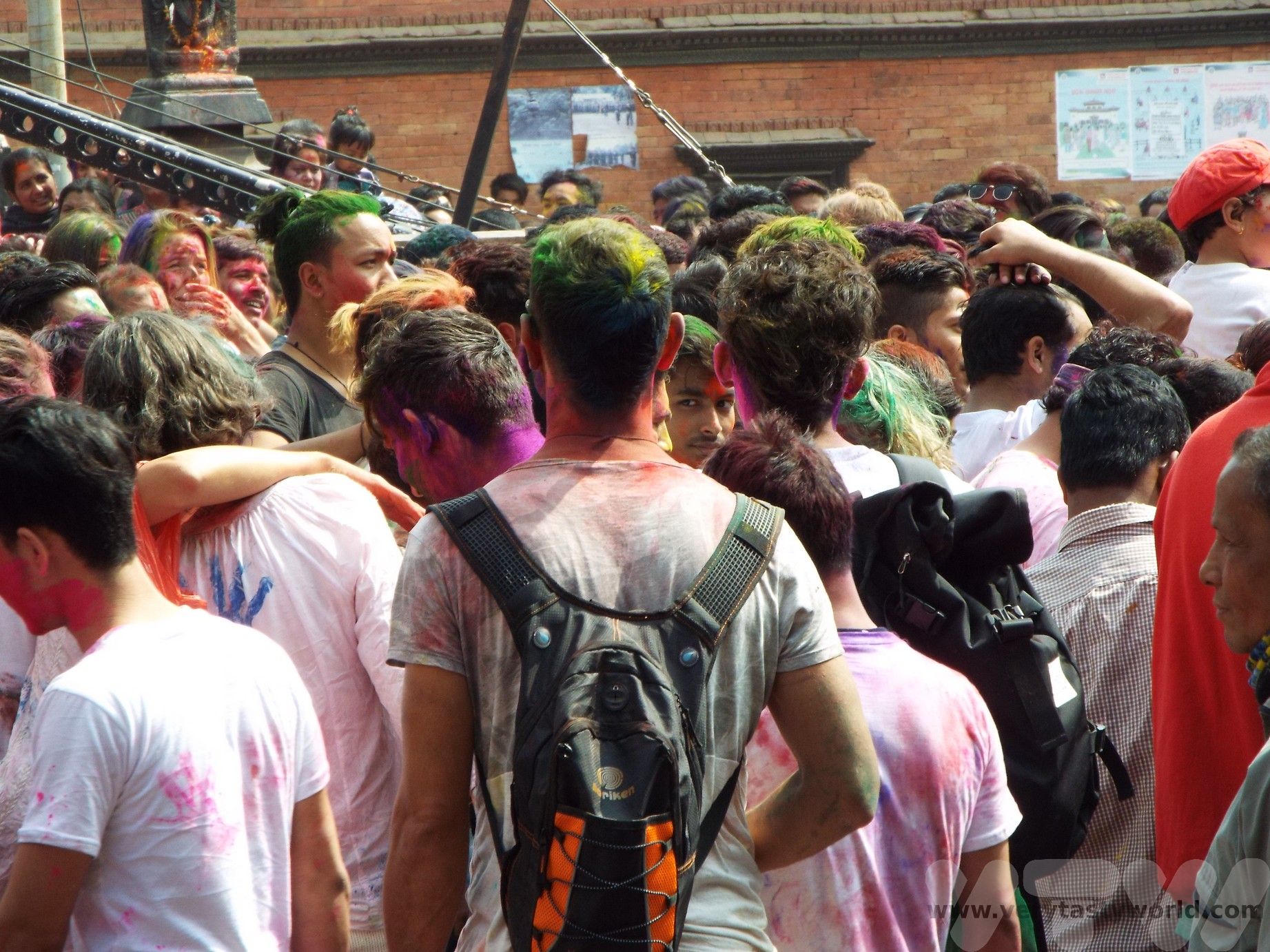
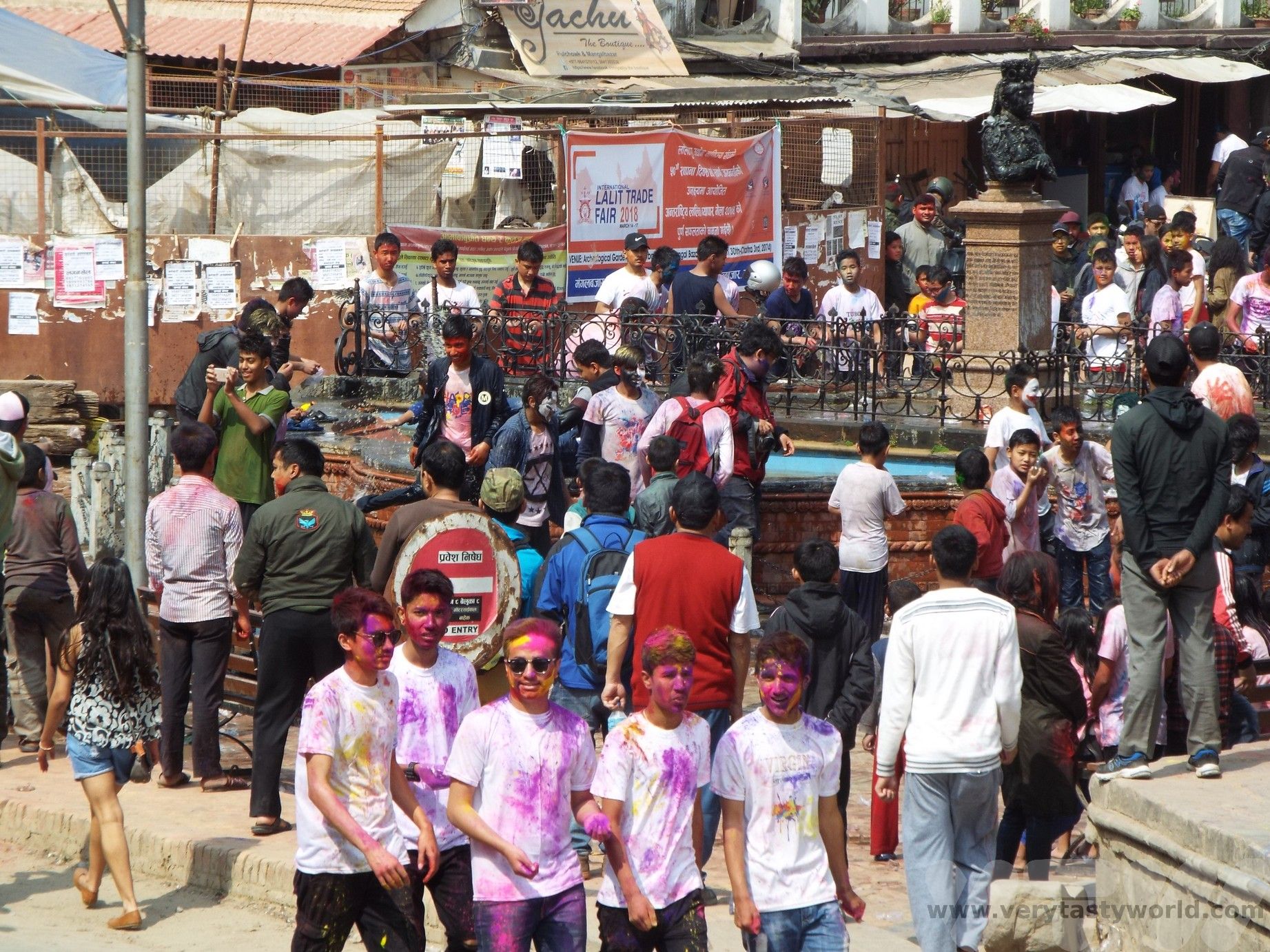
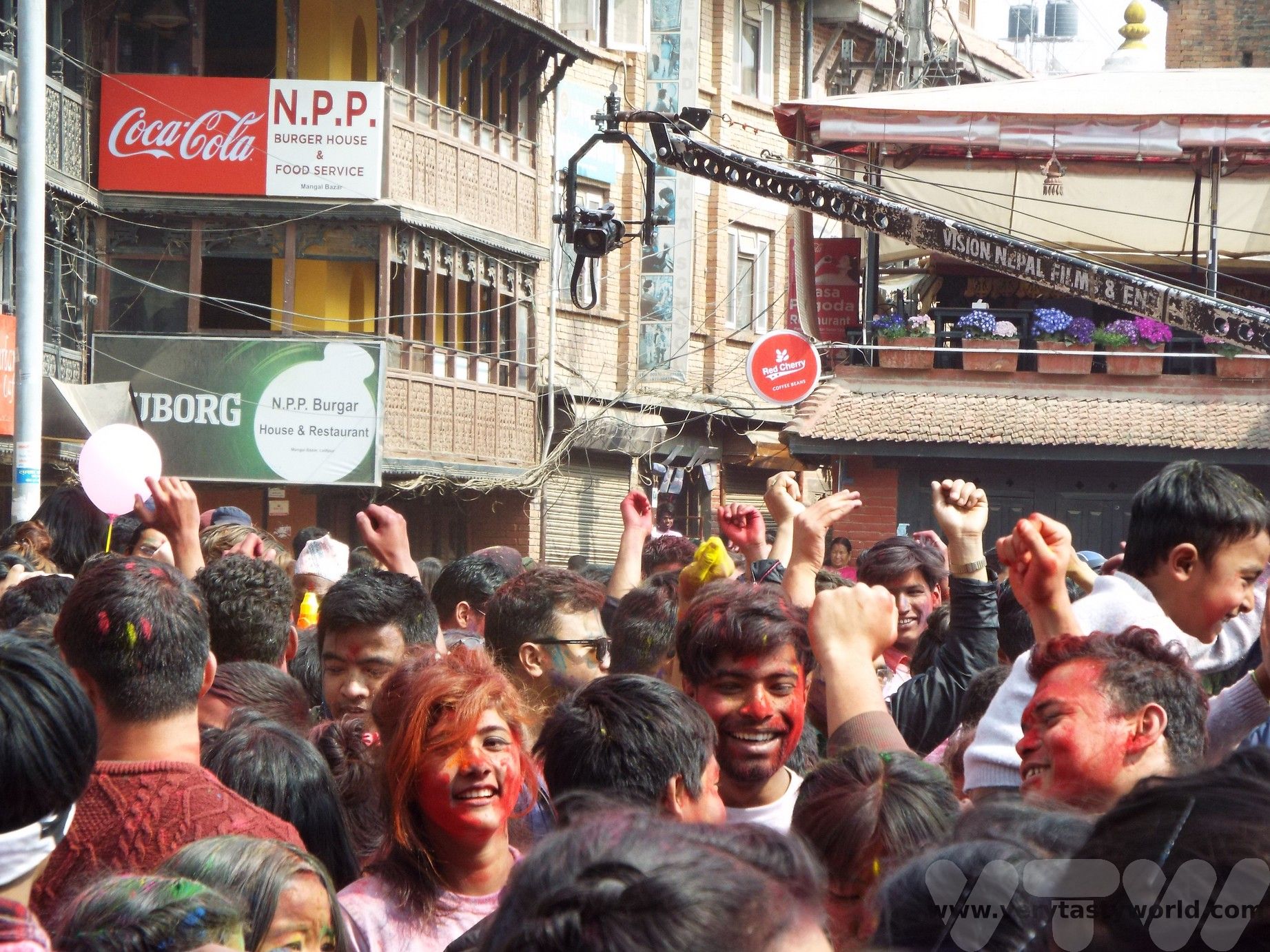


Even one of the local dogs took part.
Walking through the town people were singing and dancing in the streets, “Happy, Happy, Holi!”
It was lovely looking out at the celebrations over Durbar Square.
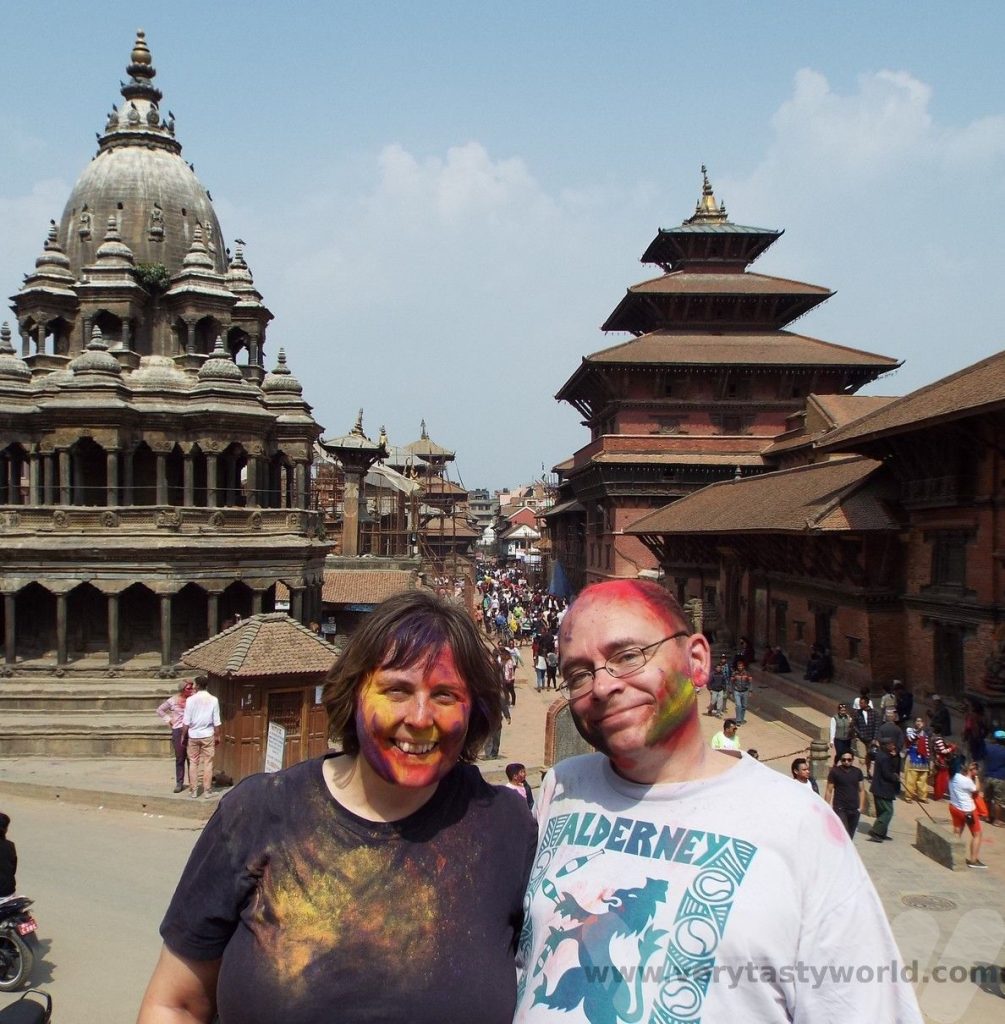
Holi In Nepal – Celebratory Food
Of course we wanted to try some of the local food. At a tiny restaurant off one of the side-streets near Durbar Square in Patan, we joined local people sitting on benches in front of low tables, and discovered chatamari. We sat down on a bench and watched the cook expertly make this lovely dish. It’s a celebratory food and it seemed entirely appropriate for the day.
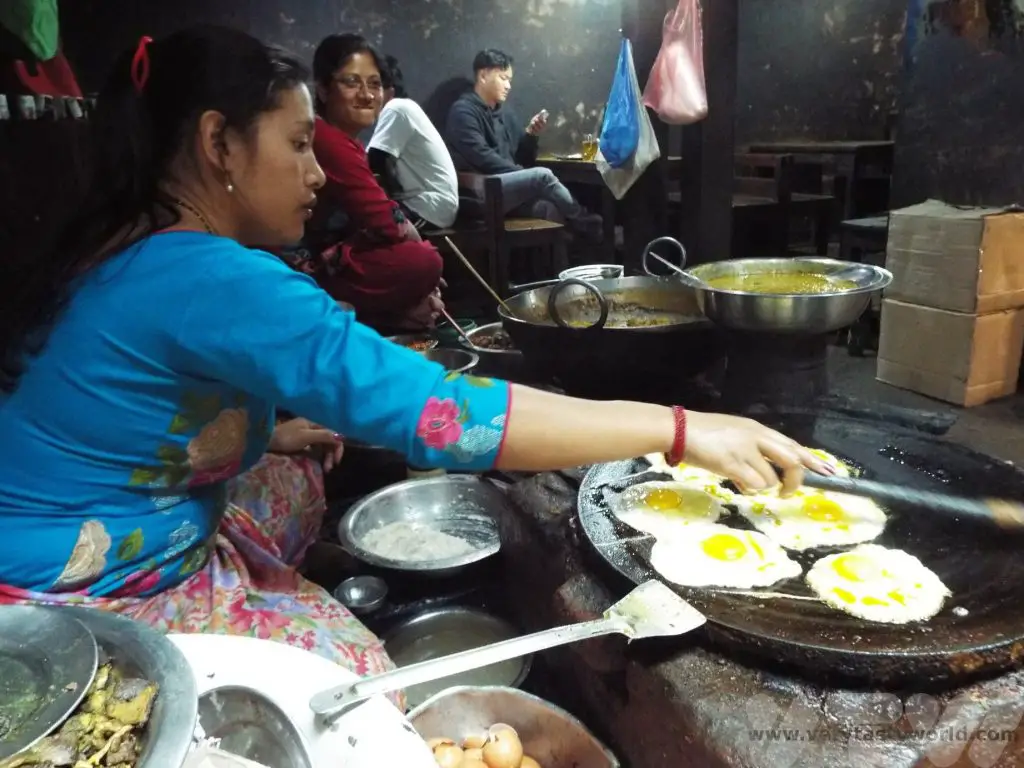
Chatamari is a specialty of the Newar community of the Kathmandu valley. It is like a pancake with toppings. The batter is made from rice flour, spices and eggs. It is then fried on top of a circular flat grill and various toppings are added as it cooks – ours comprised minced meat, onions and a fried egg – but fully veggie options are available.
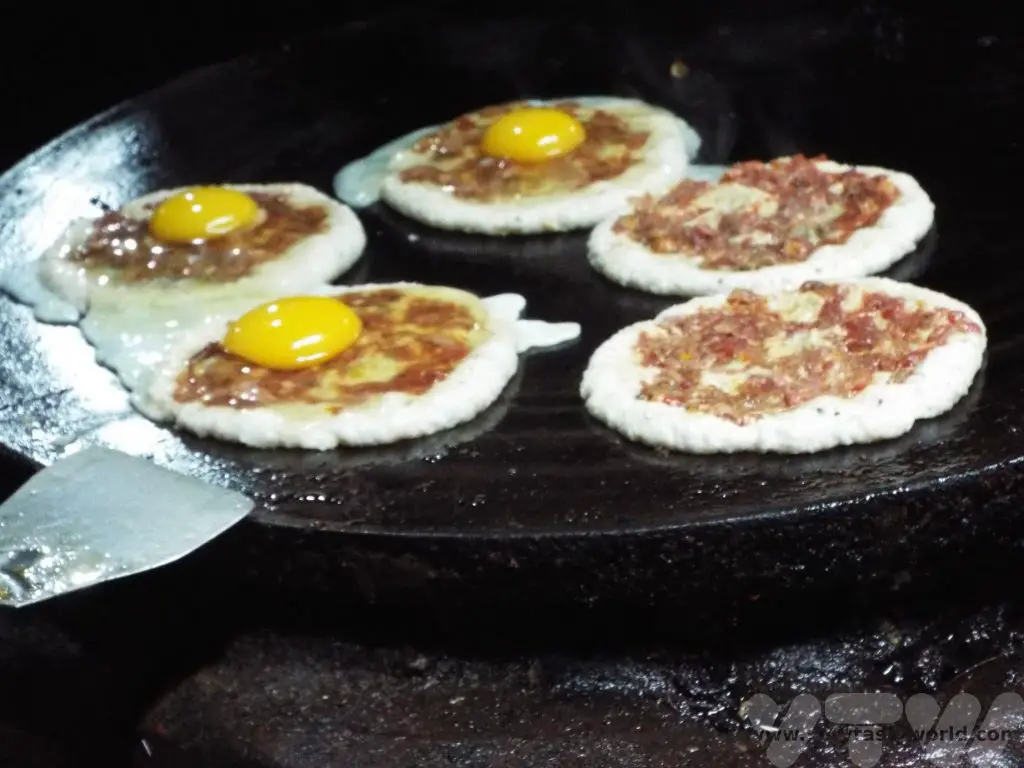
These were the star dish but were accompanied with some roasted lamb, a potato curry and bhuteko bhatmas, soybeans roasted in Nepali spices, which were spicy, crunchy and absolutely delicious. (And perfectly complemented a nice, cool beer.)
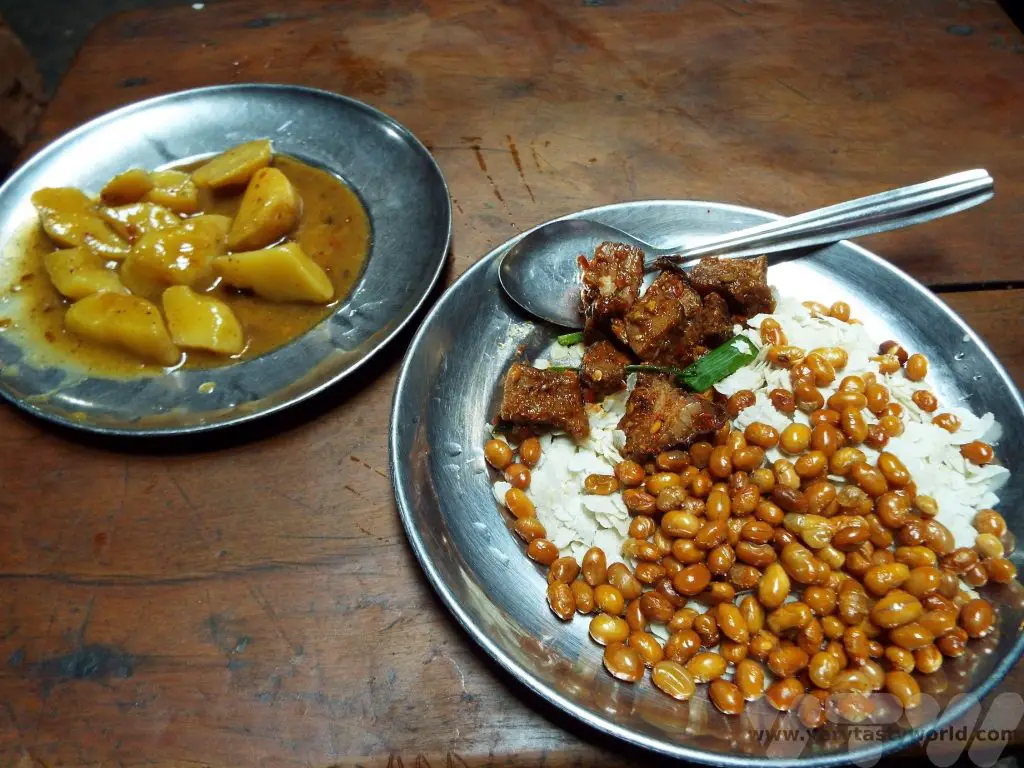
After lunch it was time to head back into the happy mayhem and explore further. The local children were particularly interested in playing Holi with us. Just as we were about to leave Patan we asked a passer-by to take a photo of colourful us – by the time he had figured out the camera setting… PHOTOBOMB! The kids were very happy to show us their pre-prepared waterbombs.
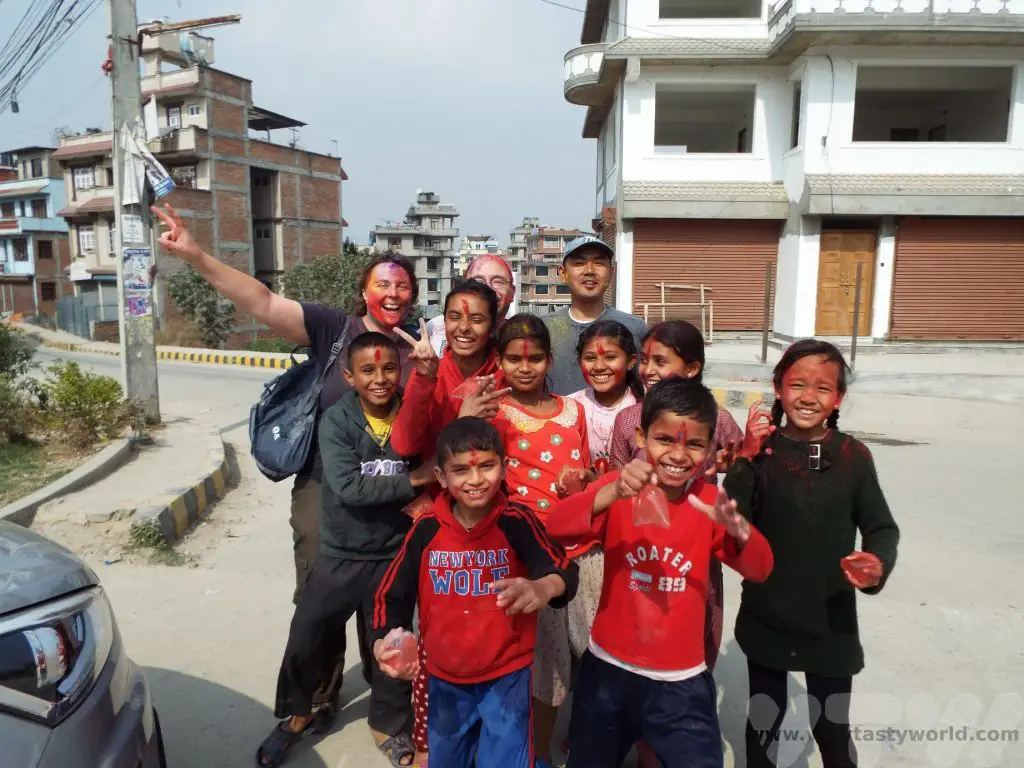
Arriving back at our (relatively posh) hotel in Kathmandu, absolutely covered in paint, we were a little unsure about how we would be received. Nobody minded, they knew it was Holi, and the local people were delighted that we had taken part and we were greeted with smiles. We showered very carefully, doing our utmost not to get paint on the hotel’s towels. We were largely successful.
Holi in Nepal was one of the most colourful, delightful and – above all else – happy festivals we have ever attended. It was truly a day of joy.
